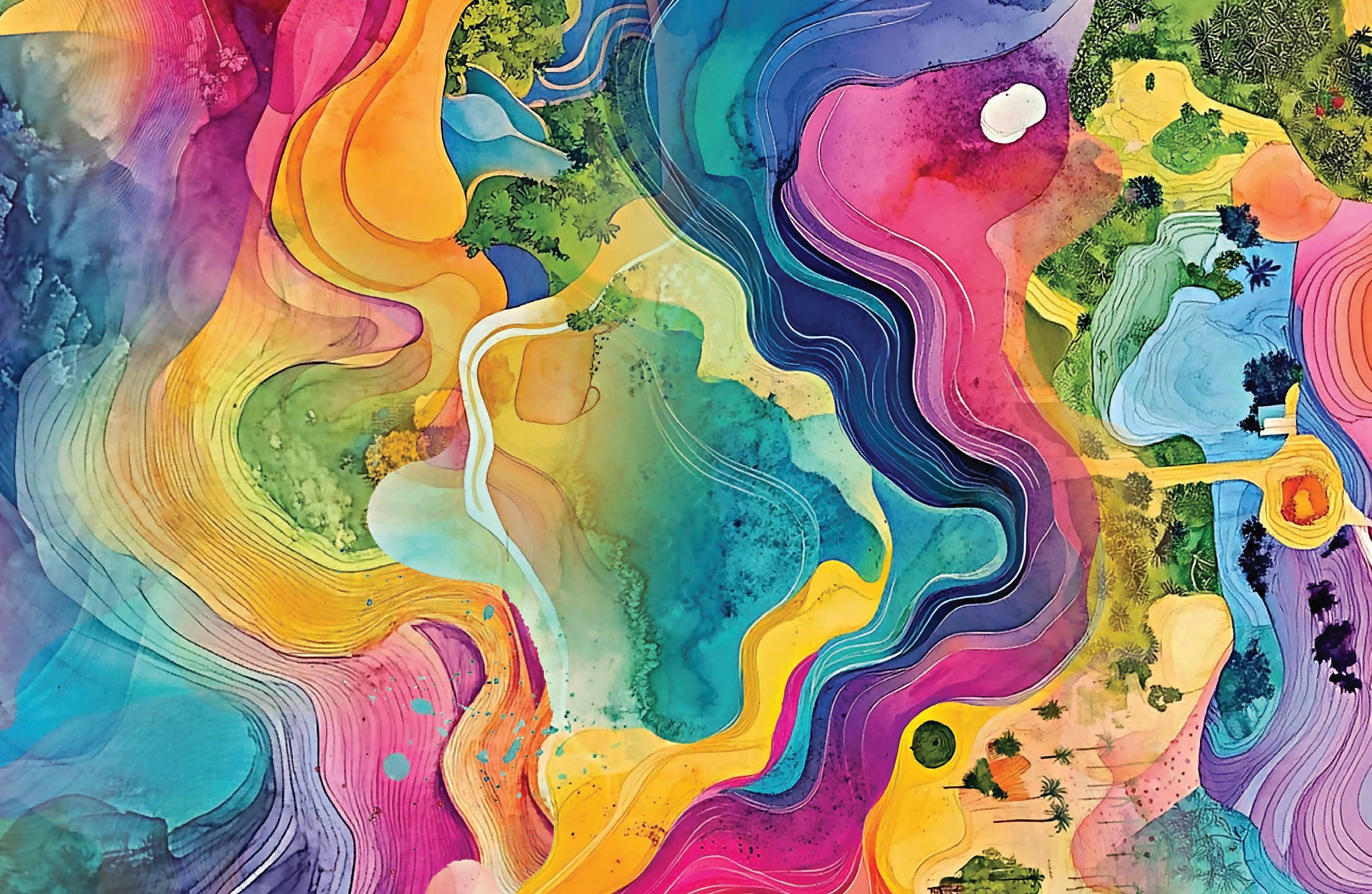







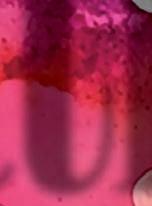










































BQetween sky and king, Queen Sirikit’s eternal color sets the tone for this editorial, written at the blue hour that suits deadlines. Appropriately, blue, the color of cerebrality and communication, also carries the symbolism of trust, reliability, and resilience.
This rst issue of the new Latitudes series, a mook hybrid between books and magazines, by a strange synchronicity, is being sent to our Siamese printer on a Friday, a cerulean day that saw the birth of the woman whom all of Siam mourns, the Queen Mother of Thailand.
I n this period of national mourning, the mood is rather bluesy, and our phoenix of paper therefore opens with a work of art colored in blue-gray, as a respectful tribute.
But the moving blue notes also suit renaissance elegantly...
Few works illustrate the monarchy and the Renaissance as perfectly as the Château de Fontainebleau. François I, king of gallery owners, exhibited masterpieces by Italian p ainters on its thick walls. Among them was the enigmatic smile of the Mona Lisa, a transgender portrait by and of his protégé Leonardo da Vinci.
In this royally artistic setting, the late King Rama IX met his princess in 1947: Sirikit, daughter of the Thai ambassador to France and great-granddaughter of King Chulalongkorn.
It was during the latter’s reign that the modernization of Siam began. Rama V was not content with reforming governance, laws, and administration; he also ensured his country’s independence from colonial ambitions and abolished slavery...
His sincere interest in the arts and his obsession with modernism led him to introduce perspective, realism, and European techniques to his kingdom. The rst Thai ruler to understand the power of print, he was a pioneer of royal soft power, launching the concept of publishing iconic images in newspapers, starting with his own haughty face.
This period also marked the birth of the modern press in Thailand. A good omen?
Christophe Chommeloux
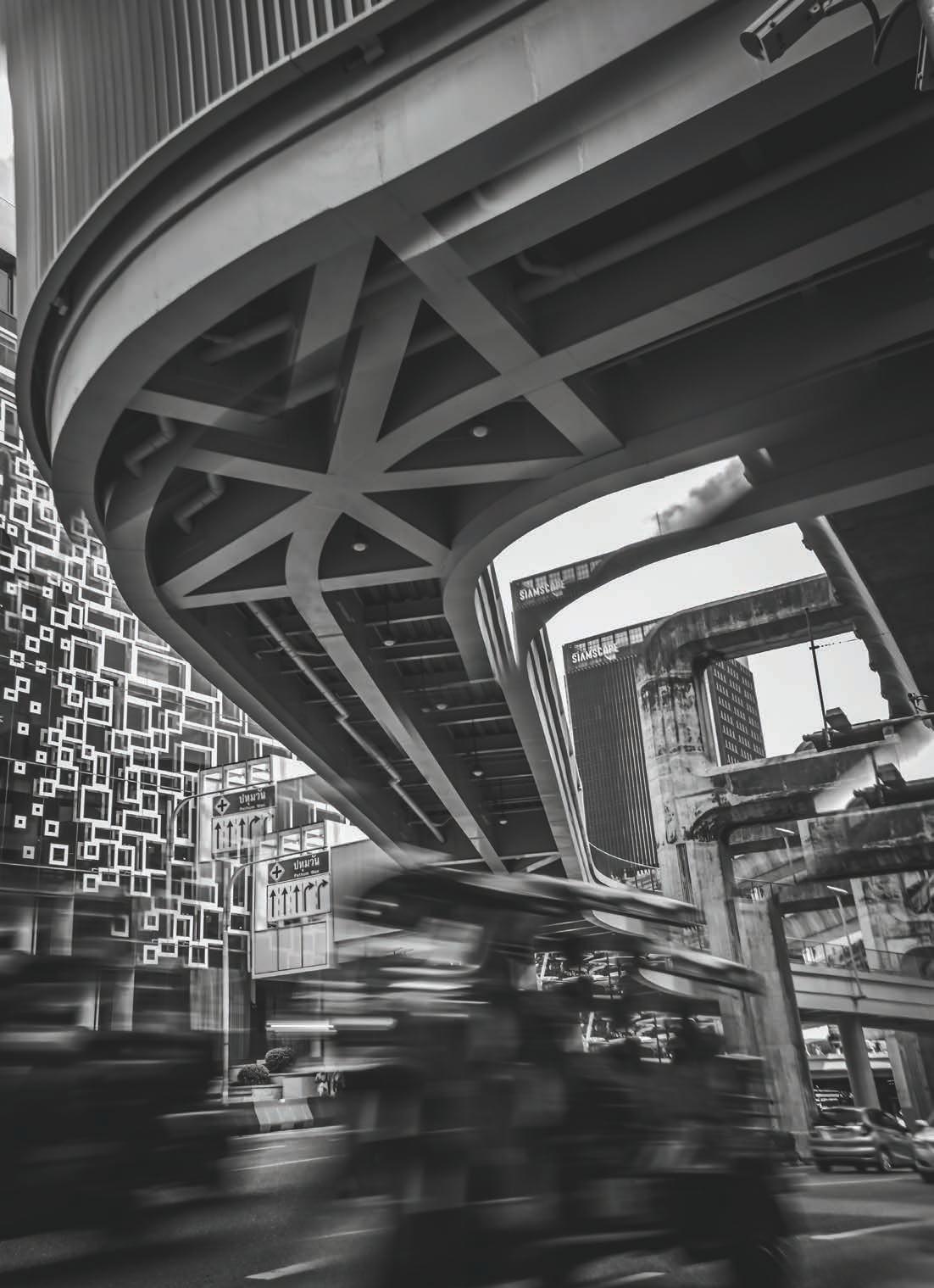



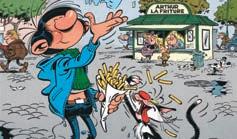
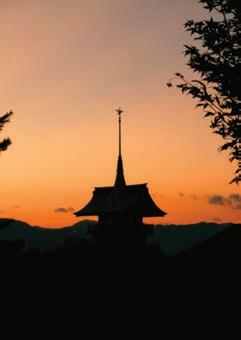


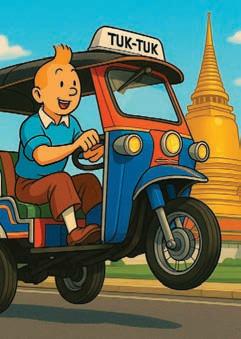
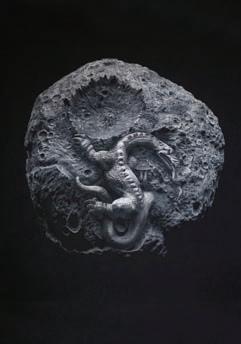












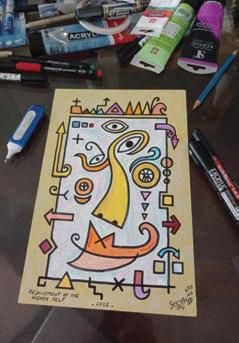
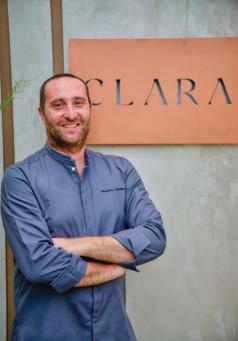


RESCUE ARTISTS
Solidarity in Thailand
GET BACC STEPHFF
Our favorite cartoonist exhibits!
ART OF PHOTOGRAPHY
Flash on Naghasch 154
ART OF GASTRONOMY
CLARA & Christian 160 WONDERFRUIT 2025
9 Legends for 10 years of wonder 184
ART OF MIX
The Legends of DJ Deep 192 THE GROOVE FESTIVAL
URBAN


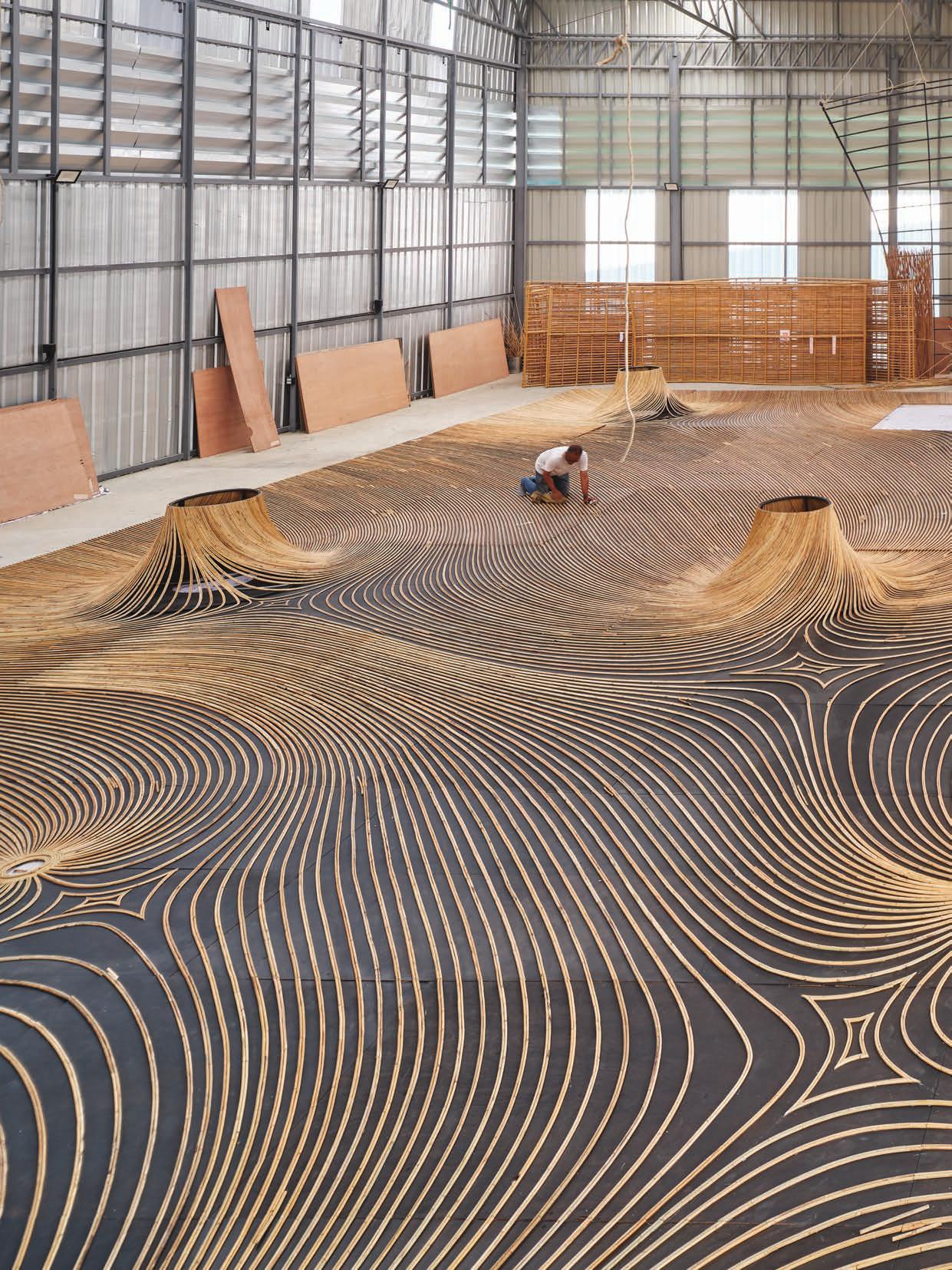
Enter Projects Asia was created as such: a gentle rebellion against modern design and construction methods which have led to a loss of detail in architecture and a preference for unsustainable materials. In response, Patrick Keane has built a practice upon the desire to showcase artisanal, sustainable, and original architectural design, at a commercial scale.
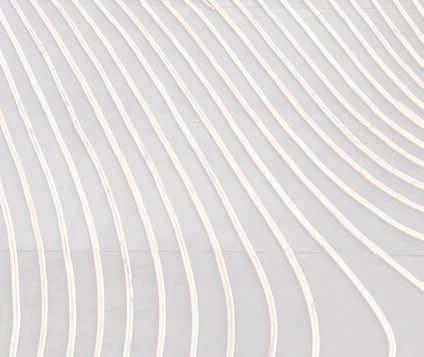


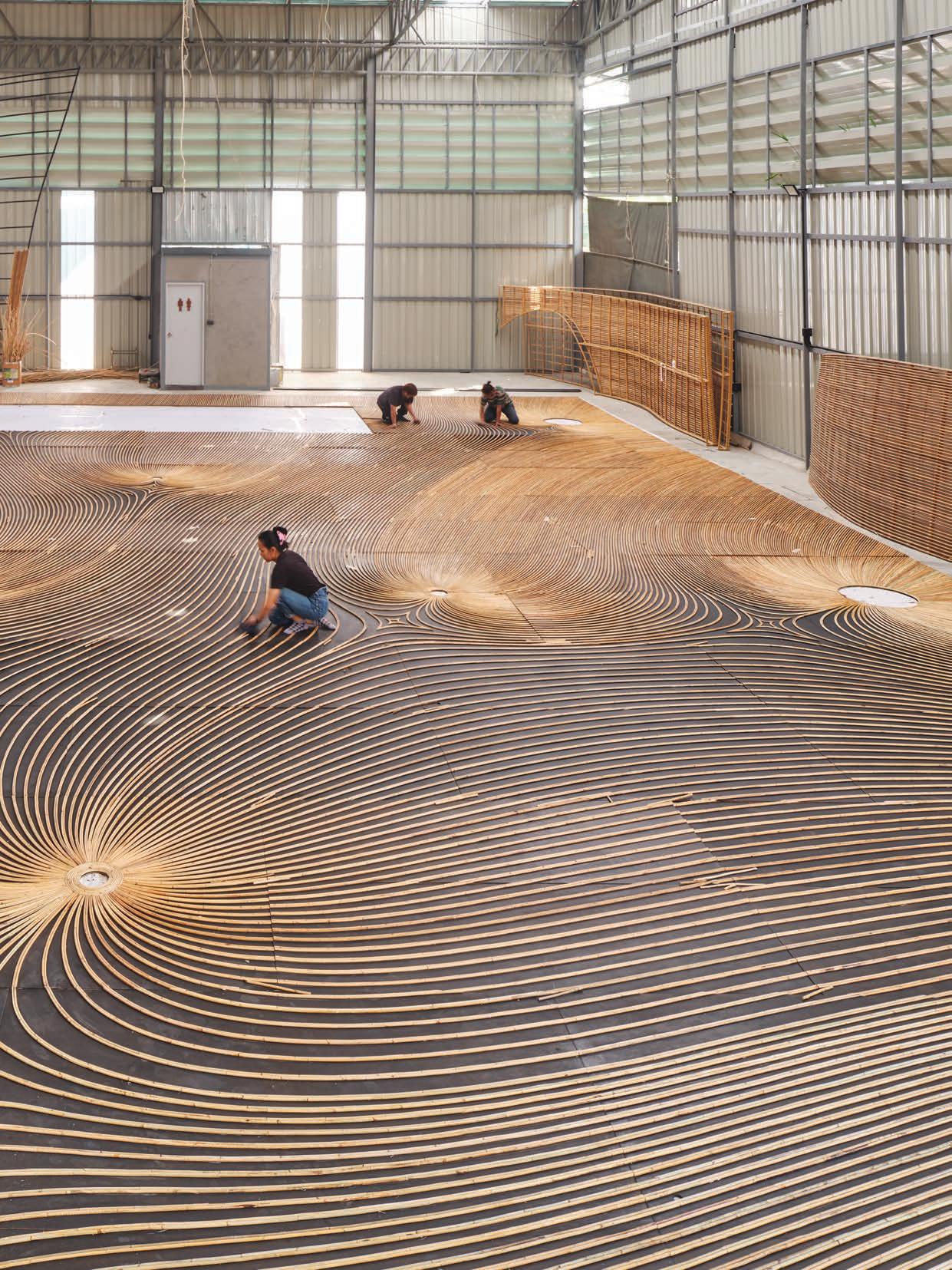
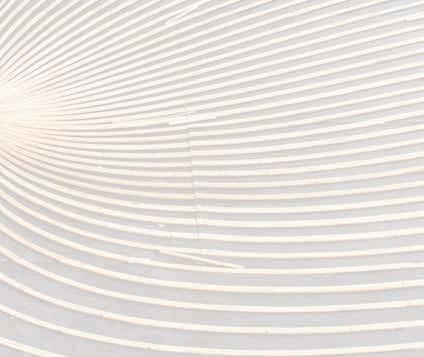
Aesthetically, Enter Projects draws inspiration from natural geometry and movement, shunning the angular lines dictated by mass-produced construction materials, opting instead for curvilinear, sculptural forms. Biophilic design principles guide their decision-making in service of the goal to create a point of di erence, a talking point, a character, and a feeling that all users embrace.
Already featured in Latitudes in 2018, Enter Projects Asia has since, despite the challenging global circumstances, increased tenfold!
“I believe our work is contemporary and connects with people,” its leader Patrick Keane summarizes. “Our designs resonate with a moment in time which is ercely present, whilst remaining respectful of the past and mindful of the future & those generations who will inhabit it.
Each individual project is analyzed to understand its features and the impact and progression of natural light, and seamless and intuitive directional movement ows are painstakingly designed to ensure spaces that are easy and enjoyable to move through.
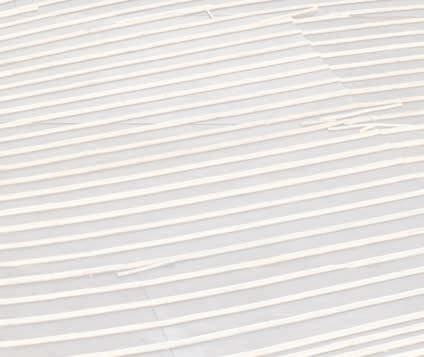

We take time to get to know our clients’ aspirations and brand personalities, and consistently design with the end user in mind.”
www.enterprojects.net
https://issuu.com/magazinelatitudes/docs/latitudes_12_def/68


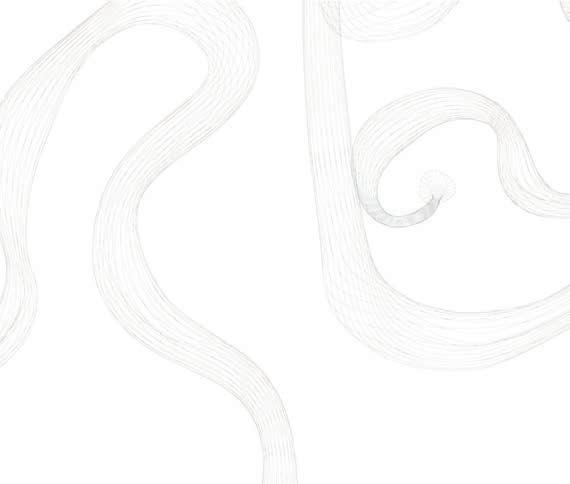

Enter Projects Asia Design
“We sought to create a space which mimicked the natural world and re ected the never-ending cycle of life. The result is a space of captivating calmness, cloaked in quiet contentment – an oasis of tranquility amongst the chaos of Bangkok.” Patrick Keane, Design Director at Enter Projects
Leading yoga brand’s anchor building in Bangkok, symbolises the Vikasa ideals around health, wellness and evolution. Using their signature geometries, Enter Projects Asia facilitated the fusion of 3D technologies with local Thai craftsmanship to bring nature to an urban context.
All elements of the project were made from natural, local materials: Thai hardwood, rattan, palm leaves and local black slate.
www.enterprojects.net/projects/chiang-mai-gallery
Photography by Ed Sumner / www.edmundsumner.co.uk


Art, craft, and technology
Enter Projects Asia is ushering in a new era of retail experiences in Bangkok with a boutique at Siam Paragon, home to Vacheron Constantin timepieces. This project blends timeless tradition with contemporary innovation, celebrating the heritage of watchmaking while pushing the boundaries of design, craft, and sustainability. Each weave within the boutique tells a story: the meticulous rattan weaving process draws inspiration from Guilloché, with each line crafted to embody the dedication found in Vacheron Constantin’s intricate timepieces. Featuring a stunning collection of rattan sculptures, the boutique creates a harmonious ow throughout the space. The natural tones of the rattan, enhanced by unique coloring techniques, invite visitors to engage with the art.
www.enterprojects.net/projects/vacheron-constantin

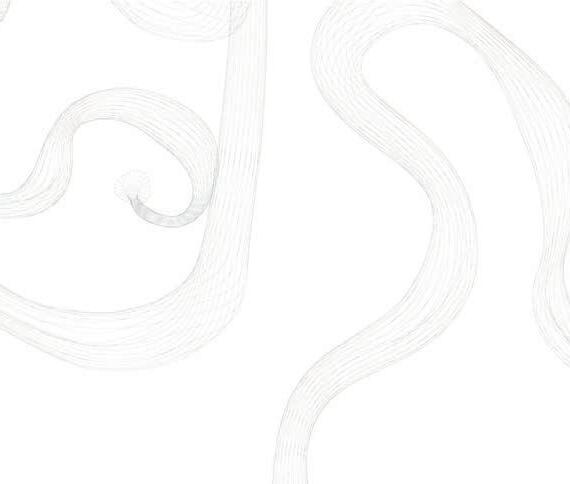
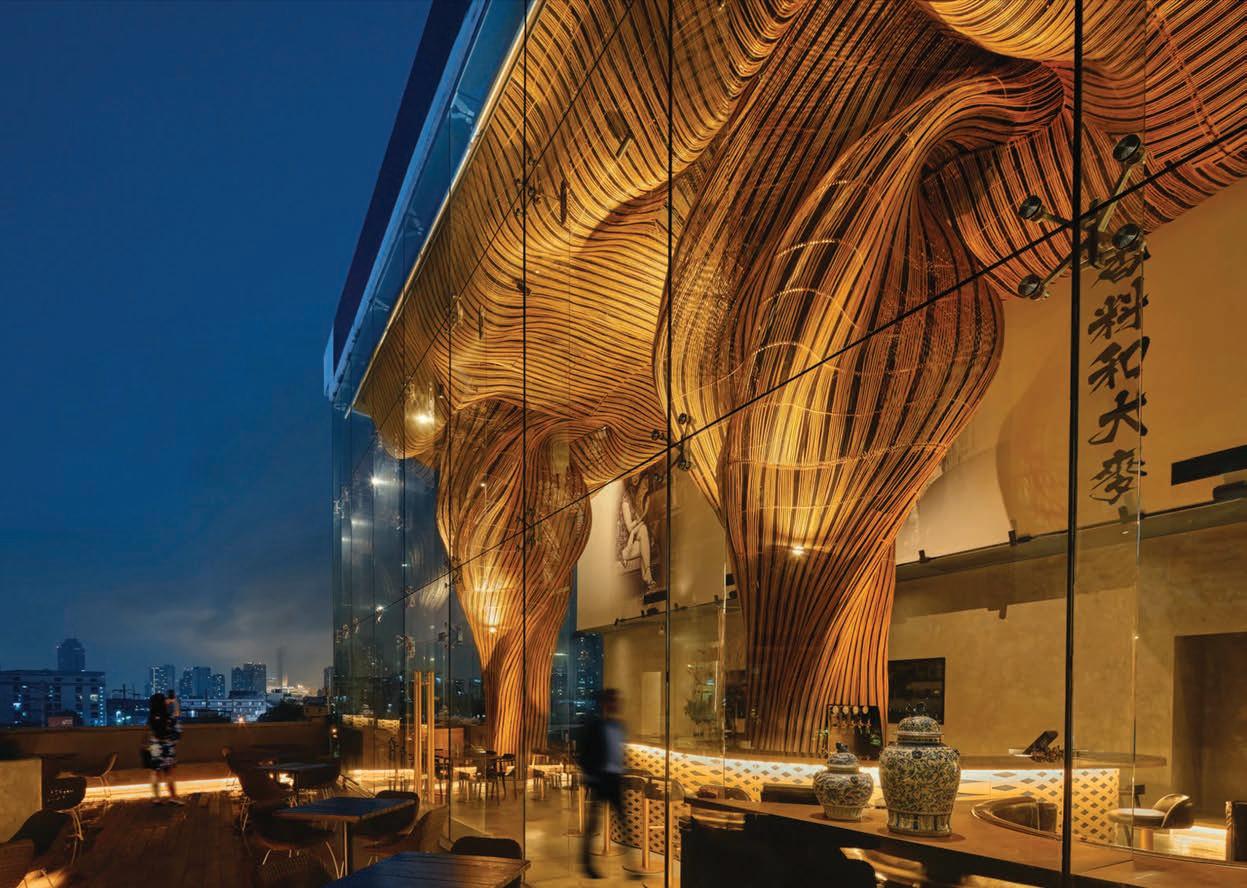

“Form and function should be one, joined in a spiritual union.”
Spice & Barley Bangkok is a Gastro Lounge serving Southeast Asian Cuisine by Celebrity Chef Sam Leong, paired with exclusive Belgian craft beers.
The site overlooks the Chao Priya River and the natural rattan structures act as twin towers, referencing the high-rise towers in the backdrop. The vast rattan geometries ood the ceiling in an uninterrupted balustrade of twists and turns which bounce the light and become a beacon from far away…
In March 2020, just as the trap door closed on the country, Enter Projects Asia completed the design installation, keeping with the original brief, the design sensibilities at Spice and Barley are intrinsically Asian Fusion, a phenomenal marriage of ideas, creating a space in which you innately sense that the client and architect have understood one another perfectly: to introduce innovation and eco-awareness at a commercial level of construction.
www.enterprojects.net/projects/spice-barley
Photography: William Barrington-Binns / www.wbbandco.com
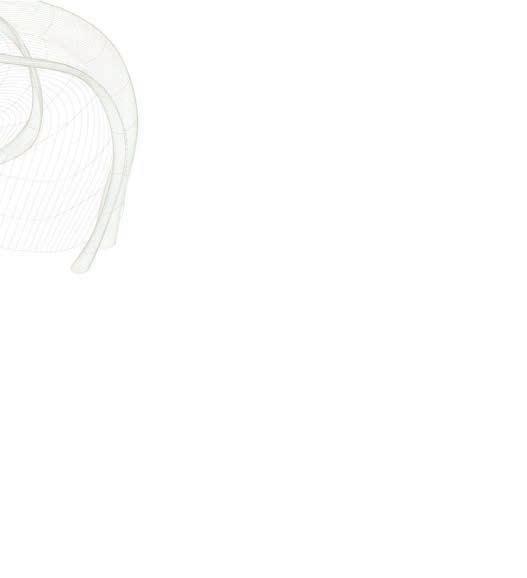
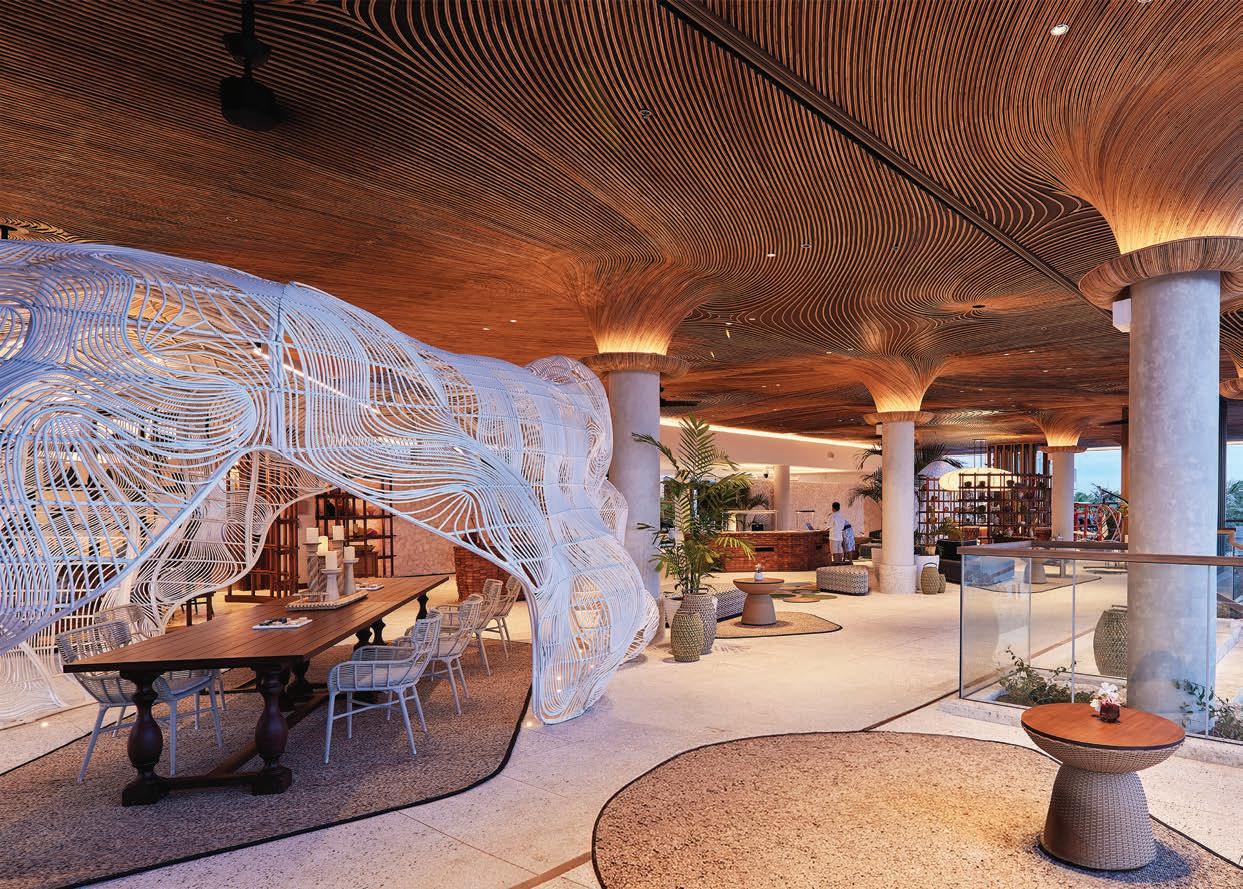
Unveiling a series of architectural experiences that blur the line between artistry, sustainability, and nature, in the heart of Bohol on Panglao Shores in the Philippines.
The commission asked Enter Projects Asia, for more than luxury – it demanded ecological responsibility, organic form, and a dialogue with the coastal landscape.
EPA’s vision was to rede ne hospitality architecture as a living extension of its surroundings. “With rattan, we design sculptural installations that evoke the elegance of nature,” says Patrick Keane, Director of Enter Projects Asia. “These pieces create a seamless and subliminal connection between humans and their natural environment.”
Panglao Shores now stands as a new benchmark for coastal luxury – a place where sustainable materials, advanced craftsmanship, and local artistry converge to create a destination that is both breathtaking and environmentally responsible. More than a resort, it seeks to give the Philippines a new identity on the global stage – progressive, forward-thinking, and a standard-bearer for a new era in sustainable hospitality design.
www.enterprojects.net/projects/panglao-shores
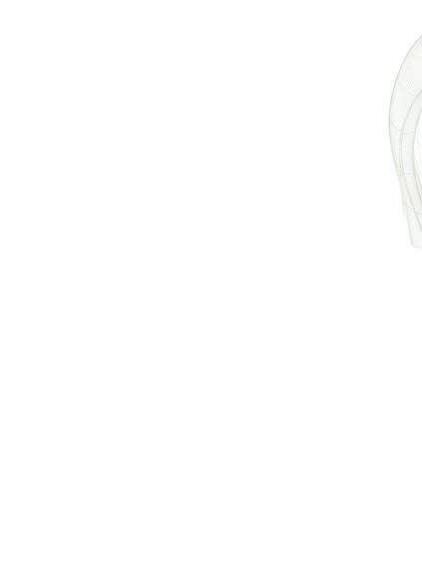


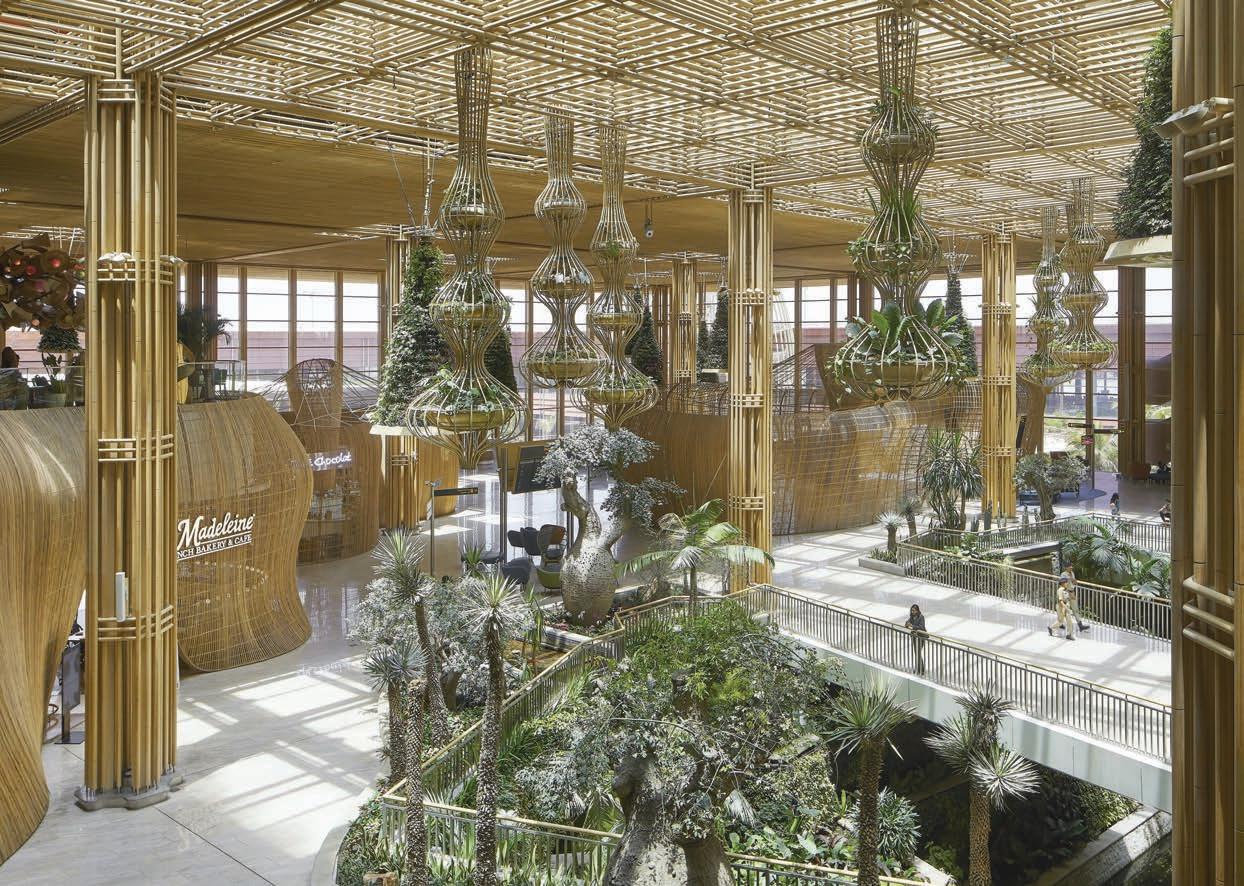
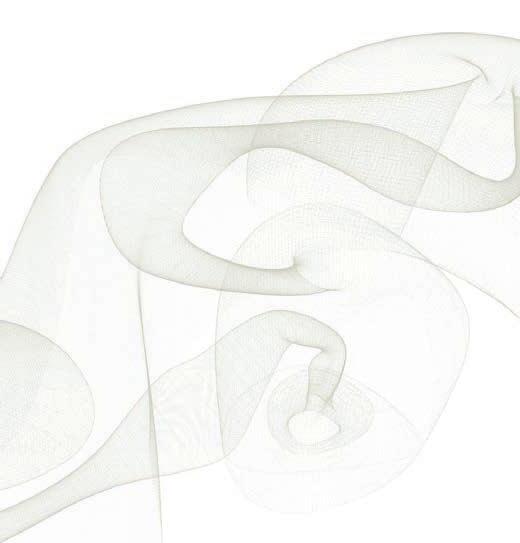
Enter Project Asia’s groundbreaking design has succeeded in providing a stark contrast to the iconic yet corporate super airports of the past and serves as a new model for the use of the principles and materials associated with well-being design at an industrial scale.
Enter Projects Asia has designed, delivered, and constructed the interiors of the 12,000 sqm post-security departure area of Bengaluru International Airport.
The space which contains retail, hospitality and relaxation areas was designed using over 9 km of rattan and features hand-wrought techniques at a previously unimagined scale.
“If you think of rattan structures, bamboo framing, handmade elements, wood, you think ‘Oh wellness retreat, somewhere remote.’ But now you’re seeing it in an airport where they’re welcoming 20 million visitors a year, like what the hell? Wellness has become mainstream. If you touch a pod, it feels like a tree. It doesn’t feel like a wall. EPA is rede ning these materials and their applications.” Patrick Keane.
www.enterprojects.net/projects/kempegowda-international-airport

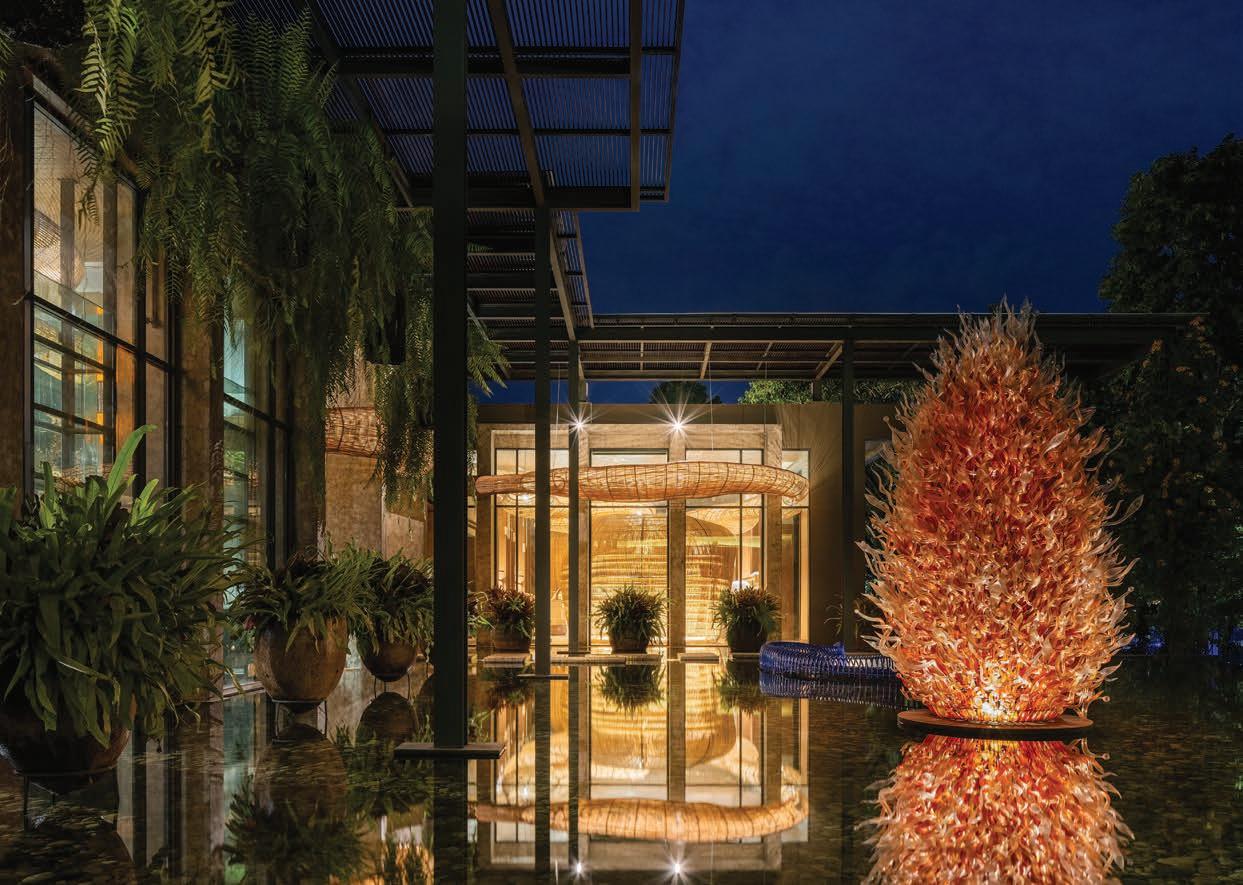

Contemporary design ideologies of uid space, parametric work techniques and dynamic forms that cannot be viewed from a single vantage point.
Enter projects Asia was commissioned to design an Art Collector’s gallery in Chiang Mai, consisting of several interior pavilions enclosed by intricate gardens with exterior sculptures and ornate water features. The owner and avid collector sought to contextualize a lifelong ambition to exhibit the treasures gathered over a 50-year period.
The gallery displays bespoke art works, using all natural materials and its international collection of silverware, ne china and porcelain includes the largest Wedgwood collection in Southeast Asia.
“We sought to create an immersive experience, giving the space a warmth and depth uncharacteristic of conventional art galleries,” states Patrick Keane. “Designers need to seek alternative forms of art presentation to the clinical, antiseptic displays we are all familiar with. Art galleries for the future will be living organisms and multidimensional experiences, tied more closely to the environments we live in. Art is a representation of life!”
www.enterprojects.net/projects/chiang-mai-gallery
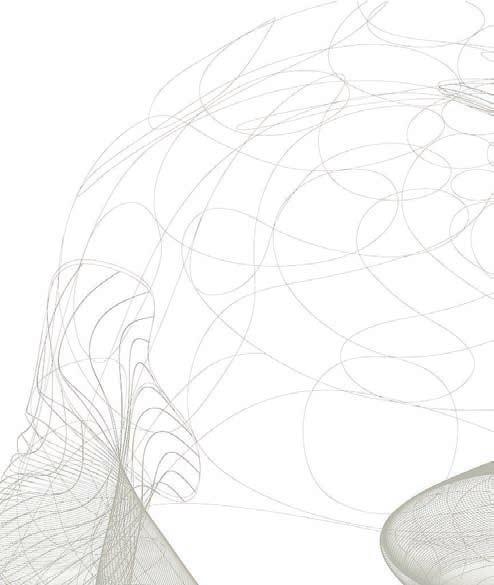
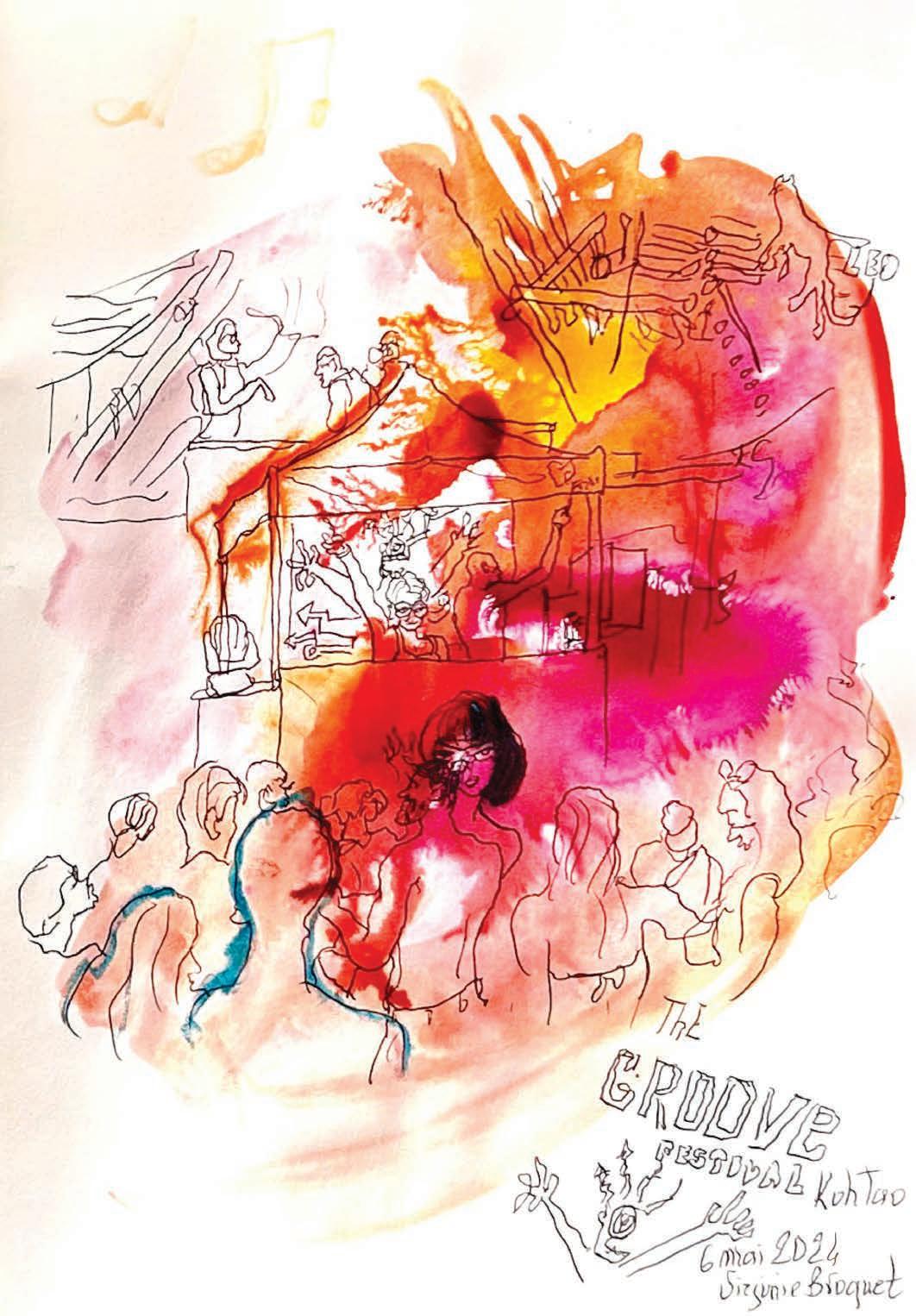
Gad Fezer
From New York to Tokyo, Senegal to China, French artist Virginie Broquet travels, draws and observes the world. Always with her sketchbook and pen, she captures scenes away from the street, snapshots that tell of her curiosity of others. Every image, like a painting, then becomes an adventure!
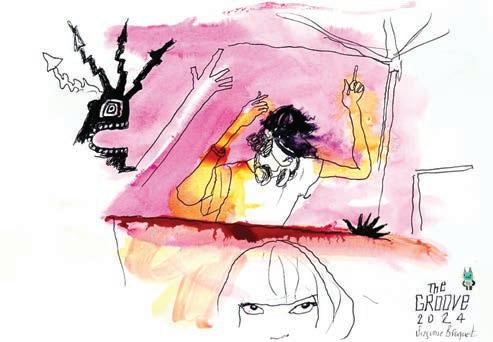
The artist, drawer and comic-book writer,Virginie Broquet, born February 5, 1968, in Nice, also illustrates for publications, the press, advertisements and fashion. For this insatiable world traveler, every adventure is an opportunity to bring back illustrated travel logs of scenes and snapshots of everyday life. From her travel logs, she then creates large paintings using mixed techniques combining line drawing, watercolor and collages.
In September 2016, Virginie Broquet presented her work in the Thai capital at the two simultaneous exhibits “Bangkok Mon Amour” at the Alliance Française, and “Les Caprices de Maggie” at Maggie Choo’s, with illus-
trations of the famous club that takes guests to Shanghai circa 1930. Through her drawings, the artist expresses her passion for the Country of Smiles. For her, “Bangkok is China, Vietnam and India all at once. It’s beautiful and magical. It’s a trip through space and time.”
Virginie, tell us a little about how your new exhibition in Bangkok came about
I attended the rst edition of the Groove festival last year thanks to the team, who asked me to come and sketch the event in my notebooks and create THE GROOVE sketchbook on the spot.
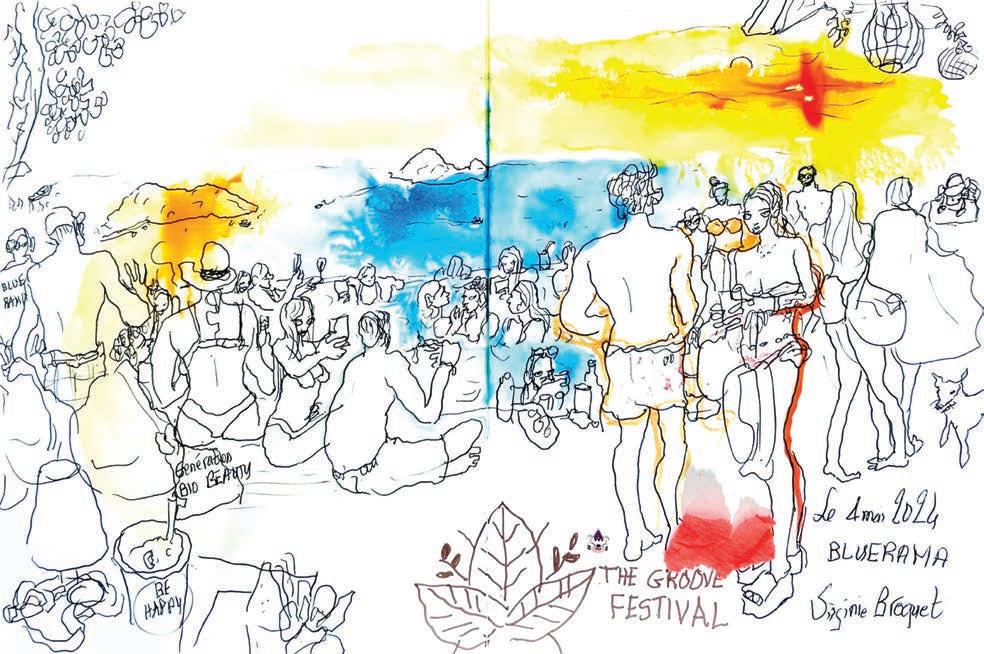
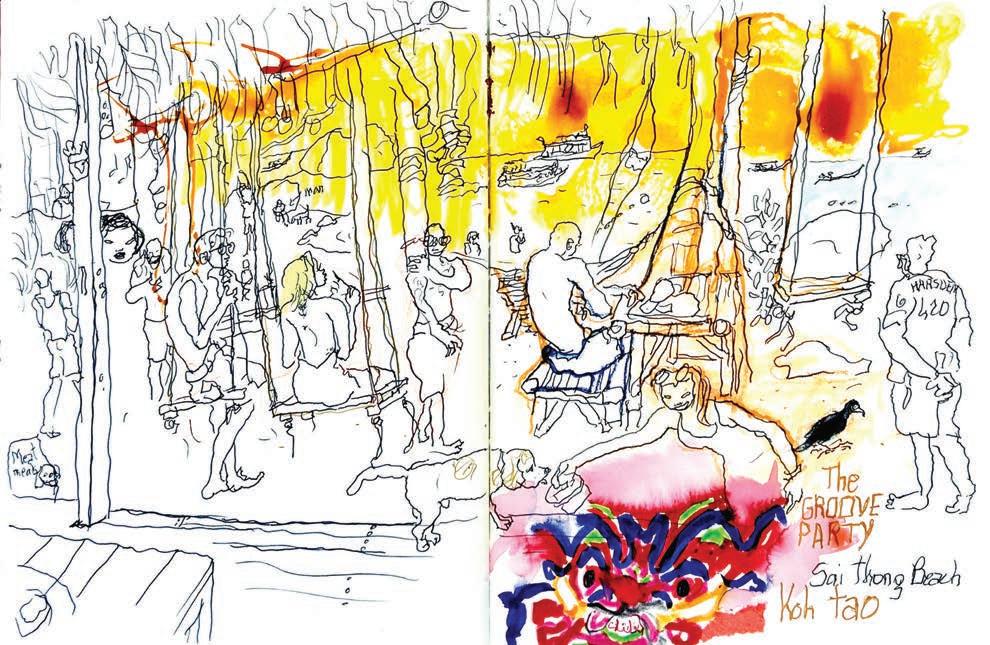
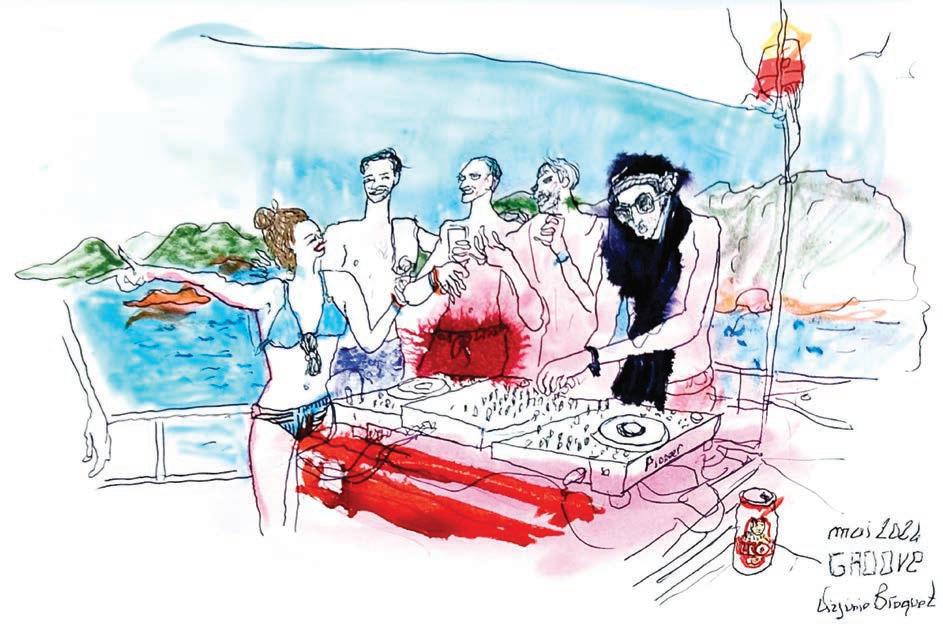
I was immediately thrilled at the idea of following an electronic music festival, especially in Thailand, from Bangkok to Koh Phangan and Koh Tao! I’ve always loved this cerebral and sensitive music. I’ve already traveled to festivals such as Sonar in Barcelona and in Holland. It was an incredible and exciting experience, almost timeless, surrounded by lovely people, with sunsets and magical places!
What a wonderful memory, and a lovely sketchbook too, where I recorded each atmosphere within the di erent settings. The festival had me bring a 10-meter canvas to Koh Tao, which I started on the Serene during the boat party and nished on the spot on Saï Tong beach! It was a real joy for an artist who loves to sketch live. And I am really happy that this work will be part of the Galleries’ Nights in Bangkok on November 21, so that I can share these beautiful moments that I experienced so intensely.
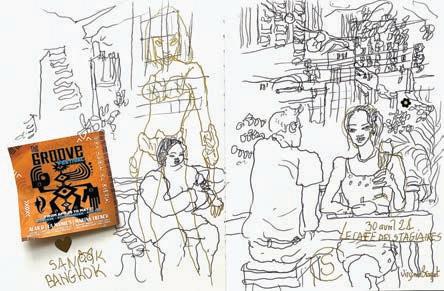


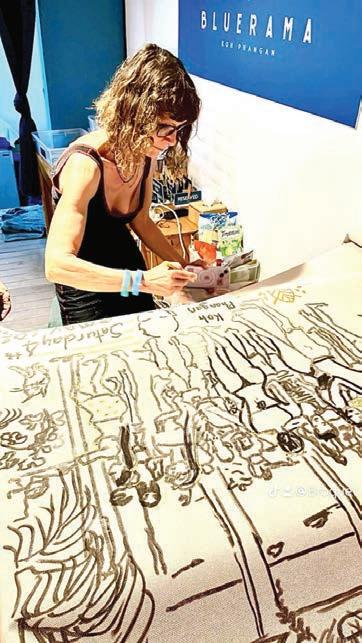

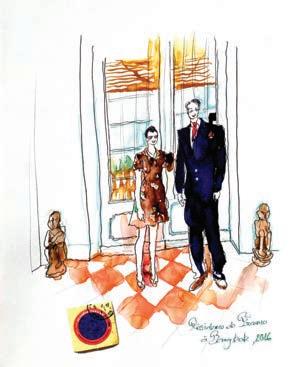
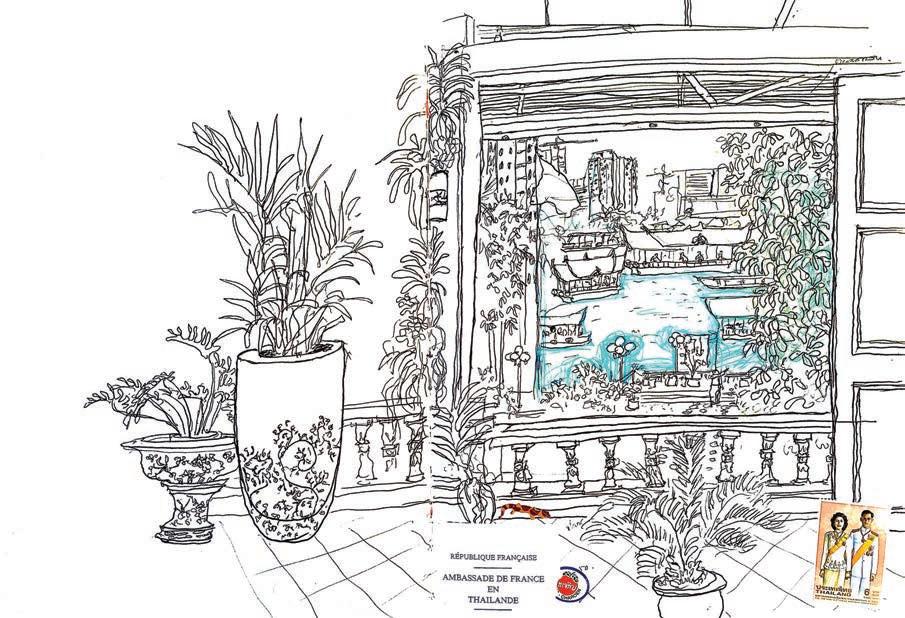
You have a special affinity with Thailand…
I’ve been traveling to Thailand for about 20 years now. It’s the Asian country I’ve visited the most! I really enjoy traveling and sketching Asia. Bangkok remains my favorite city with its inspiring Chao Phraya River.The result is several sketchbooks from di erent periods that I would love to exhibit one of these days.
I had the opportunity to draw the sublime French residence on the riverbank as part of my book Sur la route des ambassades de France (On the Road to the French Embassies), published by La Martinière in collaboration with the Quai d’Orsay archives.
Two of my books are available at the Alliance’s French bookstore: Suzie Wong et les esprits (Suzie Wong and the Spirits) and Sur la route des ambassades de France (On the Road to the French Embassies).
I also had the privilege of exhibiting at the Peninsula, the Alliance Française, and Maggie Choo’s, creating “head beds” for the Accor group, designing a limited edition series of Jim Thompson scarves, and designing a makeup line for a local makeup brand,Vie Cosmetics.
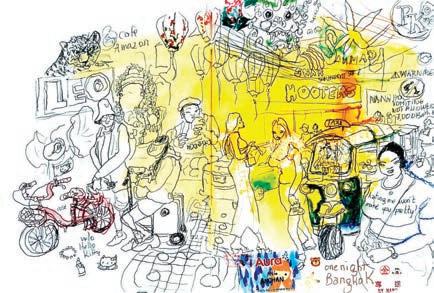
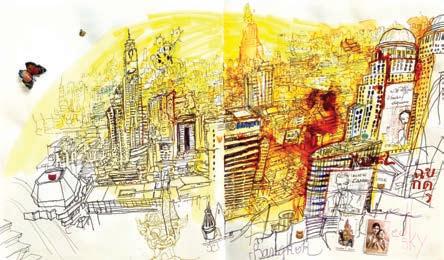
Latitudes met with Khun May from Vie Cosmetics to understand why and how a Thai makeup brand ended up working with a globetrotting artist…
Why did you choose Virginie Broquet for your brand?
Our collaboration with Virginie began in 2018. At the time, we were deeply impressed by her unique artistic style. Her way of capturing owers with her delicate coloring technique and depicting people with such individuality and a modern sensibility. Her works are truly one of a kind.
We rst featured her work in our “Blossom in the City” collection and have continued to follow her creative journey with admiration ever since. Virginie’s art, inspired by her travels around the world, particularly in Thailand and Asia, beautifully expresses the diversity of feminine beauty. Every woman, regardless of her culture, is beautiful in her own way. Given her deep connection to Asia, which is also our main market,Virginie has become the ideal partner for us.
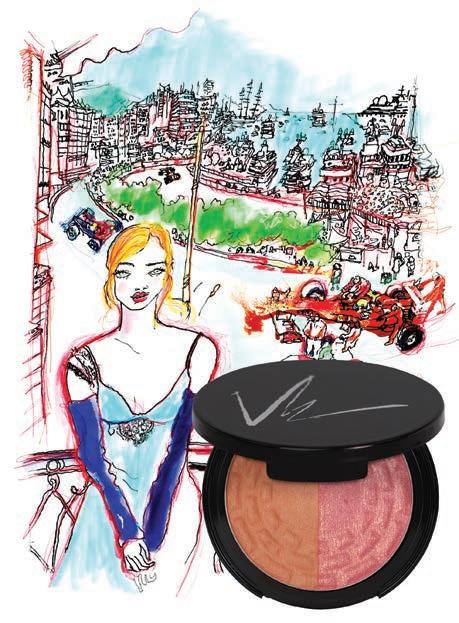

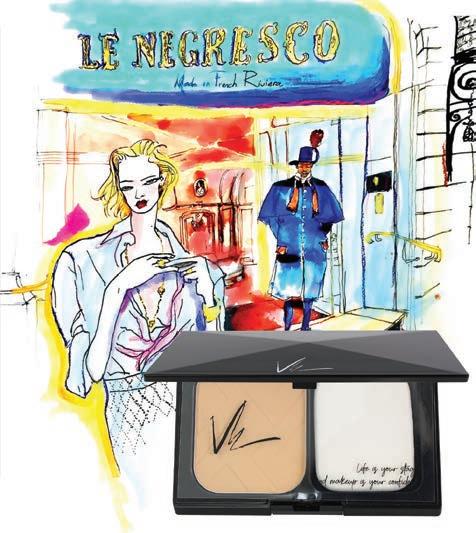
Her vision ts perfectly with our brand concept:“Beauty is universal.” This year, we are delighted to feature her work on our packaging once again.
How did you work together?
Working with Virginie is always very easy. She stays true to herself and creates from the heart.We never gave her strict guidelines. Instead, we selected from her existing works those that best matched our products. Artists create their best work when they are free, and that is exactly how this collaboration ourished. It’s a perfect combination! A natural harmony between creativity and beauty.














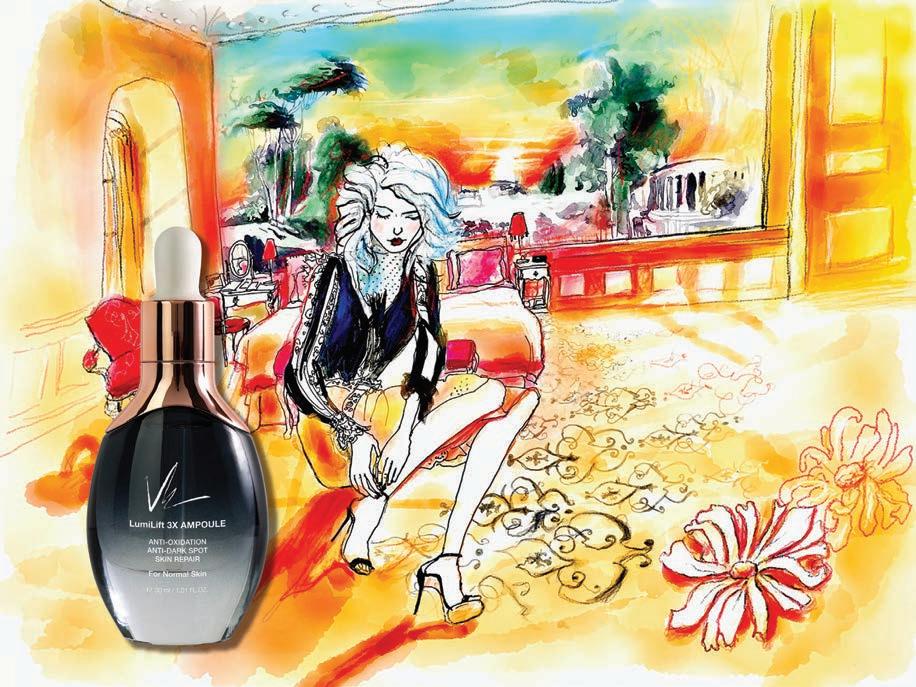


How do the fields of art and beauty come together, and how important is this relationship to you?
In today’s beauty market, consumers connect visually with a brand, often before they’ve even heard its story. They interpret the brand’s identity through its packaging, design, and artistic language. Sometimes, a single glance is enough.
That’s why art plays such an important role in our communication. A work of art or a distinctive visual
style can instantly create an emotional resonance, giving customers the impression that the brand was created especially for them. It’s this instant connection, this sense of recognition and belonging, that de nes a brand’s true identity.
Tell us a little about your brand.
Vie Cosmetics has been available in Thailand and Malaysia since 2009 and has built a reputation among high-end consumers who shop at Watsons.
The brand is inspired by the elegance and creativity of France, a country where fashion, color, and beauty are simply part of the lifestyle.
In French, “Vie” means “life.” For some, beauty is one of the most important aspects of life. It brings con dence, happiness, and self-esteem.
Vie Cosmetics was born from this belief: to create makeup products that not only enhance beauty, but also uplift the spirit, helping people fall in love with themselves again.
www.viecosmetics.co.th
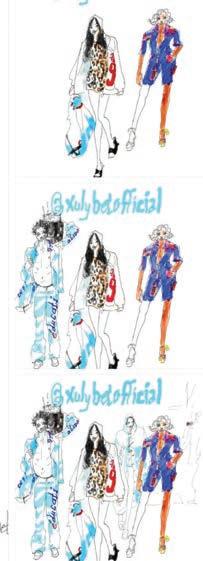
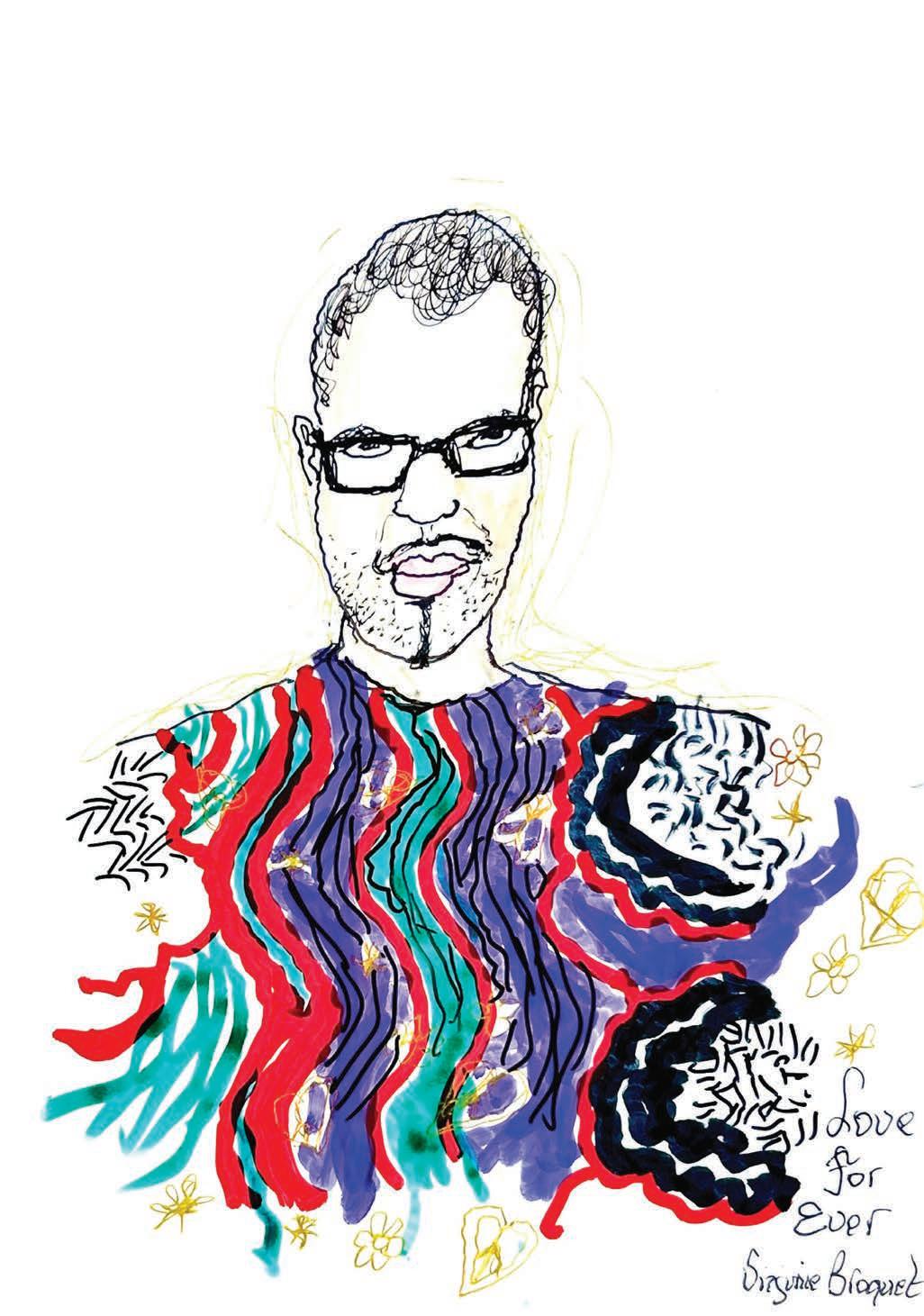

Another way to fall in love with yourself and others is through fashion!
This is a field that Virginie Broquet is also familiar with, between jazz festivals and Cannes, dream hotels and French embassies in exotic countries, preferably at least 10,000 miles away from winter.
In 1995, Virginie met Lamine Badian Kouyaté at Hôpital Éphémère, in his studio, from which a horde of overexcited Japanese women were emerging, laughing hysterically, with the shop’s entire stock…
“There was nothing left!” she says, bursting out laughing. Lamine immediately appreciated my work, my style, my collages… We became friends and over the years we met again and again. In 2004, we went together to Dakar and St. Louis in Senegal, where I sketched this house that Richard Bohringer wanted to buy…
The magic of travel meant that I even had the chance to meet him at the airport as I was leaving! This wonderful sequence inspired me to write Carnet du Sénégal, still on sale from Arthaud publishers.
We met again at the last Fashion Week, where I lled a few pages…”
XULY. Bët belongs to that rare breed of labels that refuse to be neutral. Lamine Kouyaté, its founder, has never considered clothing to be a mere accessory: for him, it is a weapon of social transformation, a textile manifesto. His journey, which began in the turmoil of alternative Paris in the 1990s, crossed paths with a now-legendary place: the Hôpital Éphémère, an artistic wasteland that incubated an entire generation of rebellious creators.
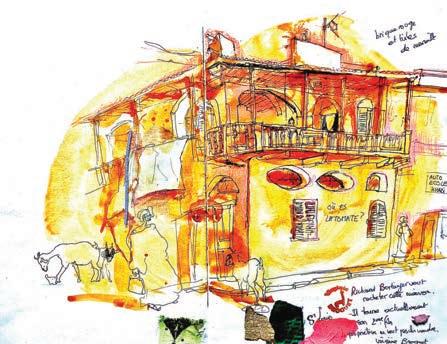
XULY. Bët means “open your eyes wide” in Wolof. The tone is set.
Lamine Badian Kouyaté, born in Bamako in 1962, grew up between Mali, Senegal, and France. His father, the writer and politician Seydou Badian Kouyaté, was a gurehead of post-colonial African consciousness; his mother, an activist doctor, was one of the rst to publicly oppose female genital mutilation.


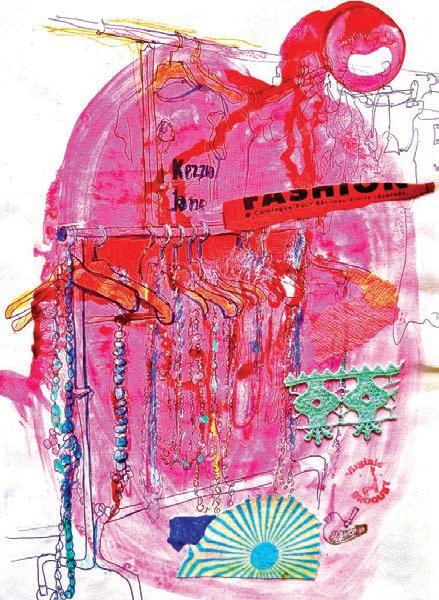
From this dual heritage – intellectual and combative –Lamine drew a conviction: to create is to resist. Arriving in France to study architecture in Strasbourg, he quickly turned away from models and plans to focus on bodies and fabrics. Architecture, he often said, taught him structure; fashion gave him freedom. In the 1980s, he moved to Paris, which was undergoing a cultural transformation: punk was running out of steam, underground techno was emerging, the suburbs were nding their voice, and fashion was seeking to reinvent itself.
The legend began in the early 1990s, in a forgotten building in the 18th arrondissement: the Bretonneau Hospital, transformed into Éphémère. This place was an institutional UFO: neither an anarchic squat nor a conventional gallery. Under the impetus of the Ministry of Culture, it became a laboratory for contemporary art where visual artists, performers, musicians, and fashion designers rubbed shoulders in a deliberate poetic chaos. The decrepit walls served as studios, the corridors became improvised catwalks. In this controlled chaos, XULY. Bët was born. Kouyaté collected second-hand clothes, often found in Parisian markets, took them apart, sewed them back together, and electri ed them with visible red threads. The gesture was not only aesthetic: it was an act of textile surgery. Each visible seam, each repair was the scar of a transformation.
The choice of location was not insigni cant.The Hôpital Éphémère, a space slated for demolition, became the perfect metaphor for his work: resurrecting what society declares dead. For him, fashion is not a psychiatric hospital for capricious rich people: it is an operating room where the wounds of the world are treated.
The rst collections were shown there, without an ocial catwalk or sponsors. The models arrived by bus, the DJs set up their turntables on salvaged stretchers, and ashbulbs popped under the hospital’s neon lights, which were still hanging. Paris discovered another way of doing fashion: raw, free, radical, alive.
XULY. Bët quickly established himself as a pioneer of upcycling, long before the word became a marketing tool. Kouyaté prefers to talk about reconstruction. He transforms worn-out clothes, thrift store dresses, and forgotten tracksuits into sculptural and sexy silhouettes. He keeps the original labels, logos, and traces of their rst life. Where others erase, he emphasizes. The famous red thread – the brand’s visual signature –becomes a symbol: a scar, an umbilical cord, a thread of resistance. “I don’t hide wounds,” he often says. His creations remind us that luxury can be born from recovery, that beauty can be found in survival.

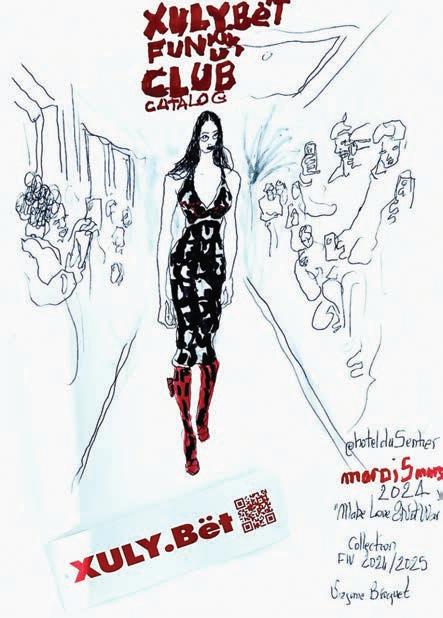
This philosophy comes as much from Africa as it does from the streets of Paris. In many African cultures, nothing is lost; things are repaired and reinvented. Kouyaté adds a political conscience to this: revaluing what already exists means rejecting the cultural waste imposed by Western fast fashion.
Between 1991 and 1996, XULY. Bët became the bestkept secret of alternative Paris. The international press went wild: The New York Times named him “Designer of the Year,” Vogue called him a “fashion guerrilla,” and American department stores snapped up his pieces. In 1994, he signed one of the rst collaborations between an independent designer and a sports brand: Puma. The agreement set a precedent. At the time, mixing couture and streetwear seemed heretical; today, it’s the norm. In 1996, he received the ANDAM prize, the highest French distinction for a young designer. And yet, he kept his feet on the ground: his collections continued to be designed with the same artisanal logic, using the same machines, the same friends, and the same convictions.

Kouyaté de nes himself as a “body architect.” But he could also call himself a DJ: his fashion shows are mixes. Hip-hop, Afrobeat, funk, punk – everything comes together. He talks about “Funkin’ Fashion”: fashion that dances, grooves, and breathes. His models don’t walk the runway, they stride down it as if they were on the street; his clothes don’t preach perfection, they advocate attitude. It is this energy that will seduce an entire generation of designers, from Vivienne Westwood to Jean-Paul Gaultier, including AfricanAmerican stylists on the New York scene. For Kouyaté, clothing is as much a political manifesto as it is a party accessory. He celebrates black, female, mixed race, and athletic bodies, which were often absent from the catwalks of the time. He denounces the structural racism of fashion, but without slogans: by the simple fact of existing, of occupying space, his fashion shows were already acts of resistance.
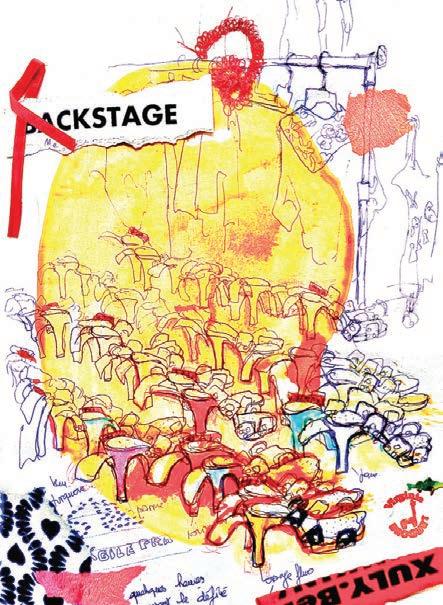

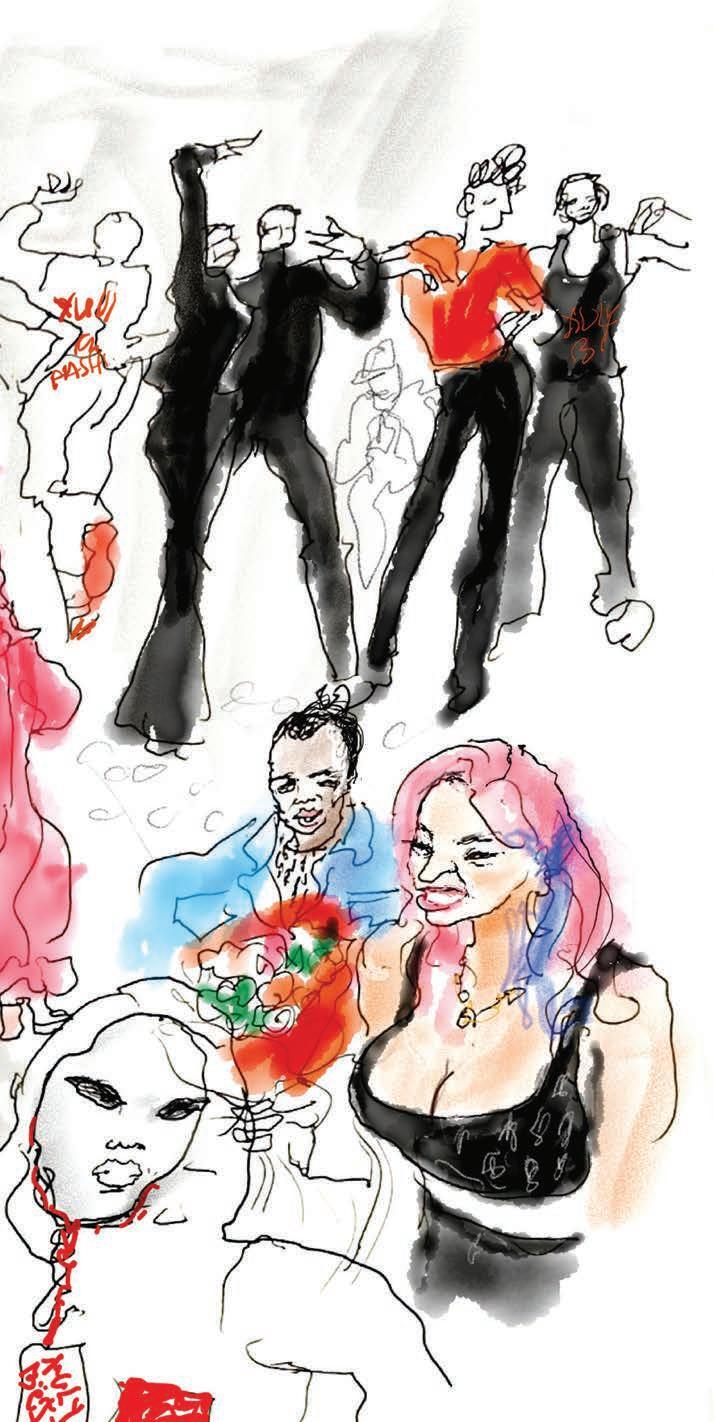
Like many radical artists, XULY. Bët went through a period in the wilderness. At the end of the 1990s, fashion became nancialized; fashion houses became multinationals, and creativity was diluted by pro tability. The discourse of recycling, too subversive, became inaudible. Kouyaté continued to create, sometimes in the shadows. He returned to Mali, worked with local workshops, and explored African fabrics. The global fashion industry slowly rediscovered him through exhibitions, retrospectives, and short-lived collaborations. In the 2010s, the industry took up the cause of ethics, with renewed talk of upcycling, diversity, and slow fashion. And then, surprise: everything that XULY. Bët had been doing for thirty years came back into fashion.
The latest collections, presented during Paris Fashion Week, reconnect with the energy of the early days. The common thread is still there, as are the recycled clothes, but the tone has softened: more nesse in the cuts, more dialogue between Africa and the West. In a recent interview, Kouyaté said: “I come from a place where everyone fends for themselves. In Bamako, seamstresses make haute couture without knowing it. In Paris, we think we’re inventing recycling; in Africa, it’s the norm.”
The models dance, smile, live. The wardrobe is nomadic: tunic dresses, jackets cut from Adidas tracksuits, corsets cobbled together from wax fabrics, hybrid trench coats combining denim and kente. Everything seems to be sewn by hand, with the precision of a surgeon and the freedom of a child. ■
www.instagram.com/xulybeto cial

Created in Thailand in 2013 and inspired by “La Nuit Blanche” in Paris, Galleries’ Nights has become one of the highlights of the Thai cultural season, bringing together more and more exhibition venues for an ever-growing audience.
The 2024 edition attracted more than 30,000 visitors to 100 galleries!
In 2012, while searching for a new event concept to embody French cultural soft power in the Thai capital, Jérémy Opritesco, Counsellor for Cooperation and Cultural Action at the embassy, known as COCAC to those familiar with Rue de Brest, decided to revive the idea of Paris’s Nuit Blanche: galleries staying open late at night and welcoming an unusually large itinerant public, adapting it to the local style with a free tuk-tuk service to connect the multiple exhibition venues.
“We spent a few days together crisscrossing Bangkok from gallery to gallery to convince them of the project,” says Arnaud Nazare Aga, a pillar of the Bangkok cultural community. “It wasn’t easy... But once we were all nally gathered at the ambassador’s residence in mid-May 2013, things became a little clearer and the Nuit des Galeries really began to take shape.”
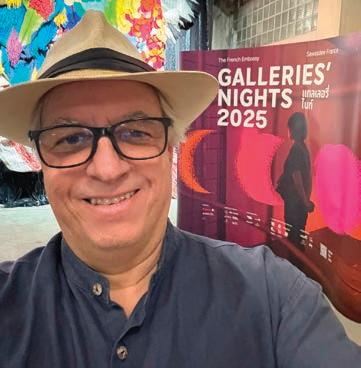
The 2025 edition will illustrate the dialogue between Thai cultural heritage and contemporary creation, paying tribute to Queen Mother Sirikit for her role in promoting local craftsmanship and artists.
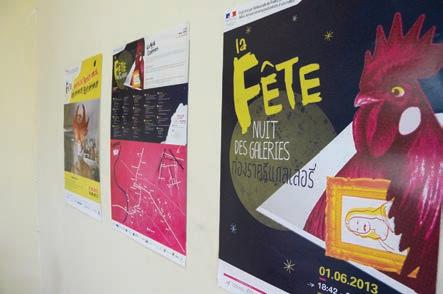


And so, on June 1, 2013, la Nuit des Galeries was born. It soon expanded to two days and spread to other cities over the years, with new teams bringing their own special touch and constantly evolving style.
“We are clearly continuing in the footsteps of our predecessors, whom I cannot thank enough for this wonderful legacy. I happen to be friends with many of them and I am keen to pass on their legacy,” said Thierry Bayle, the cultural attaché at the time, in an interview with Latitudes for our special edition on Galleries’ Nights in 2021.
Galleries’ Nights quickly became a highlight of the cultural season in Big Mango, transforming the Thai capital into a vast, fun, artistic, and festive journey – in a word: Sanuk!
“I would like visitors to take a close look at what the galleries have to o er,” continued Thierry Bayle, “because it’s good to get lost during these nights and discover artists who may be less well known but just as exciting in the many participating galleries.”
The 2025 edition will bring together more than 200 artists in around 100 galleries in Bangkok and Chiang Mai: from November 14 to 15 in the artistic spaces of the Rose of the North, then from November 21 to 22 in the capital. A grand art gathering, during which exhibition venues compete with lavish openings and visual and musical performances.
“What I nd really exciting about this event,” commented Fabian Forni, COCAC at the helm of the project in 2018, “is the incredible diversity of gallery styles that you visit on this kind of journey, where exhibition venues with limited resources manage to compete creatively with the more established ones and attract high-level artists.”
The embassy’s stated objective is to create a new dynamic by supporting the local art scene and promoting contemporary art to a wider audience, convinced that it has strong potential for development in Bangkok.
“Galleries’ Nights is a network,” explained Fabian Forni in our columns, “a network that must be maintained and enriched. France’s main contribution lies in cultural engineer-
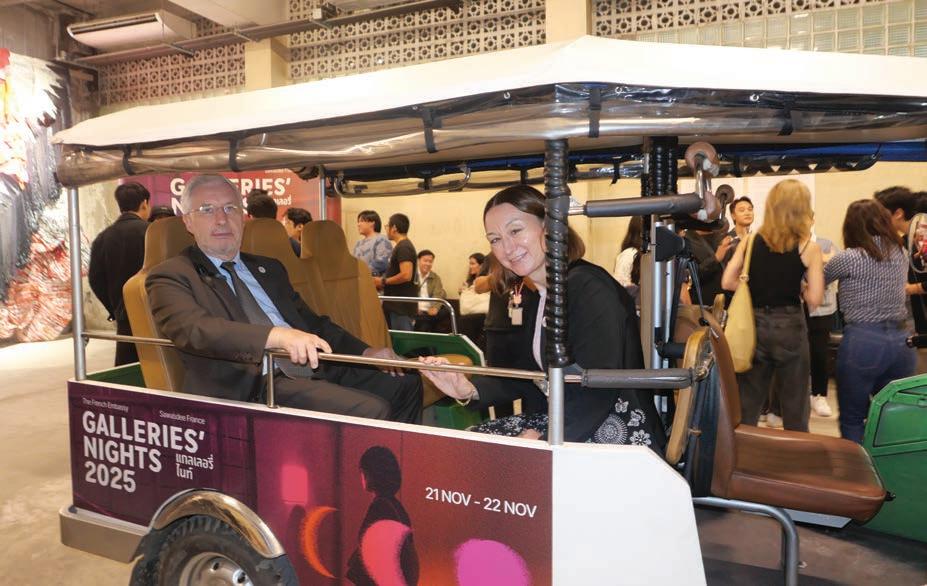
ing: we support these galleries, which retain control over their own programming, by encouraging them to work together and engage in dialogue.We are currently working with Dr. Apinan to ensure that the next edition is integrated into the Bangkok Art Biennale, of which he is the artistic director.What interests him most is precisely the network we have managed to build in Bangkok and the way in which audiences mix during Gallery Nights.”
“More than ever, we aim to make art accessible to all, regardless of gender, age, or social status,” adds Astrid Renoux, cultural attaché at the embassy since September 2024. “Galleries’ Nights highlight the role of art as a source of inspiration, a means of social re ection, and a vehicle for connecting cultures. The Embassy also aims to extend this event to other regions of Thailand in order to anchor contemporary art in sustainable cultural development.”
The 2025 edition will illustrate the dialogue between Thai cultural heritage and contemporary creation, paying tribute to Queen Mother Sirikit for her role in promoting local craftsmanship and artists. The event
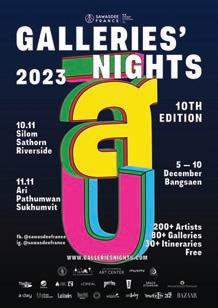
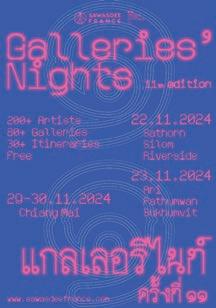
is also part of the celebrations marking 340 years of bilateral relations between France and Thailand.
Galleries’ Nights 2025 will place particular emphasis on the theme of gender equality in the arts, thanks to the support of the French organization AWARE (Archives of Women Artists, Research & Exhibitions). Galleries exhibiting female artists will display a distinctive symbol to highlight their contribution. AWARE, in partnership with Asia Art Archive, will launch the project “The Flow of History: Southeast Asian Women Artists”

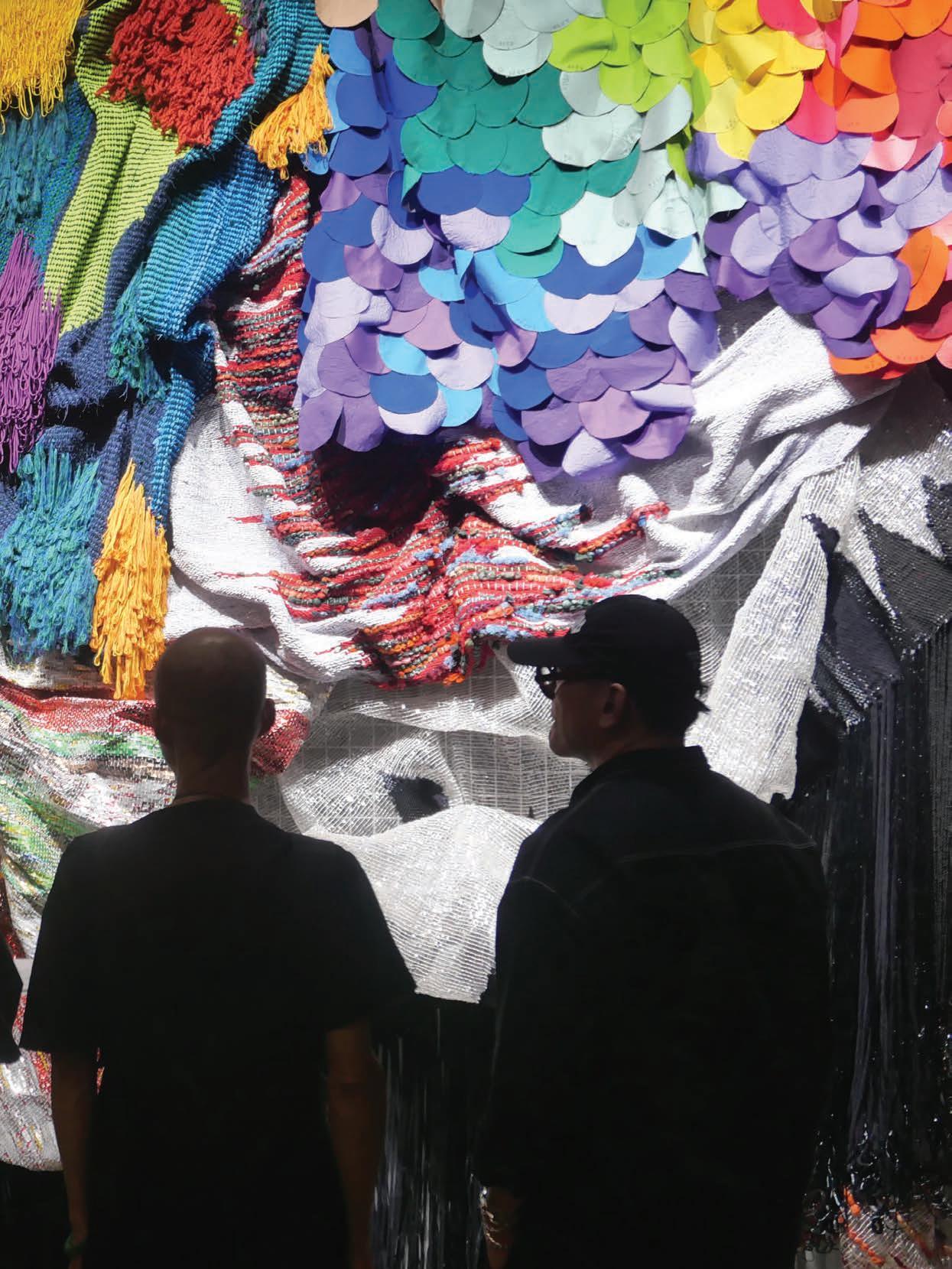

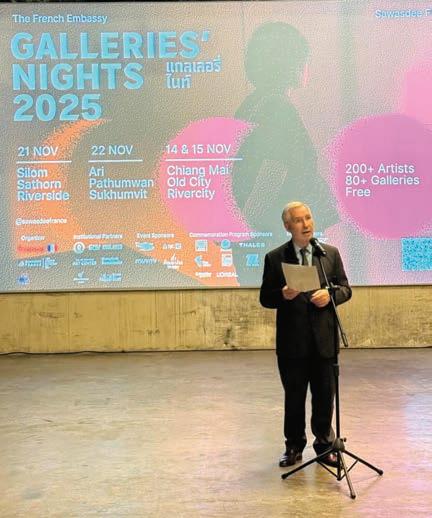
at the closing of the event at the Jim Thompson Art Center on November 23.
Loyal private partners will naturally be present, in particular MuvMi, which will o er a free electric tuk-tuk service on 28 routes in Bangkok.
On Friday, November 21, an afterparty organized by Latitudes Media & Events at the Café des Stagiaires will also serve as the opening reception for an exhibition by French artist Virginie Broquet, who was featured on the cover of the rst issue of Latitudes in 2017 and accompanied the team throughout the adventure of the rst edition of our festival, The Groove, in May 2024.
www.sawasdeefrance.com www.galleriesnights.com.

Virginie Broquet in the Groove

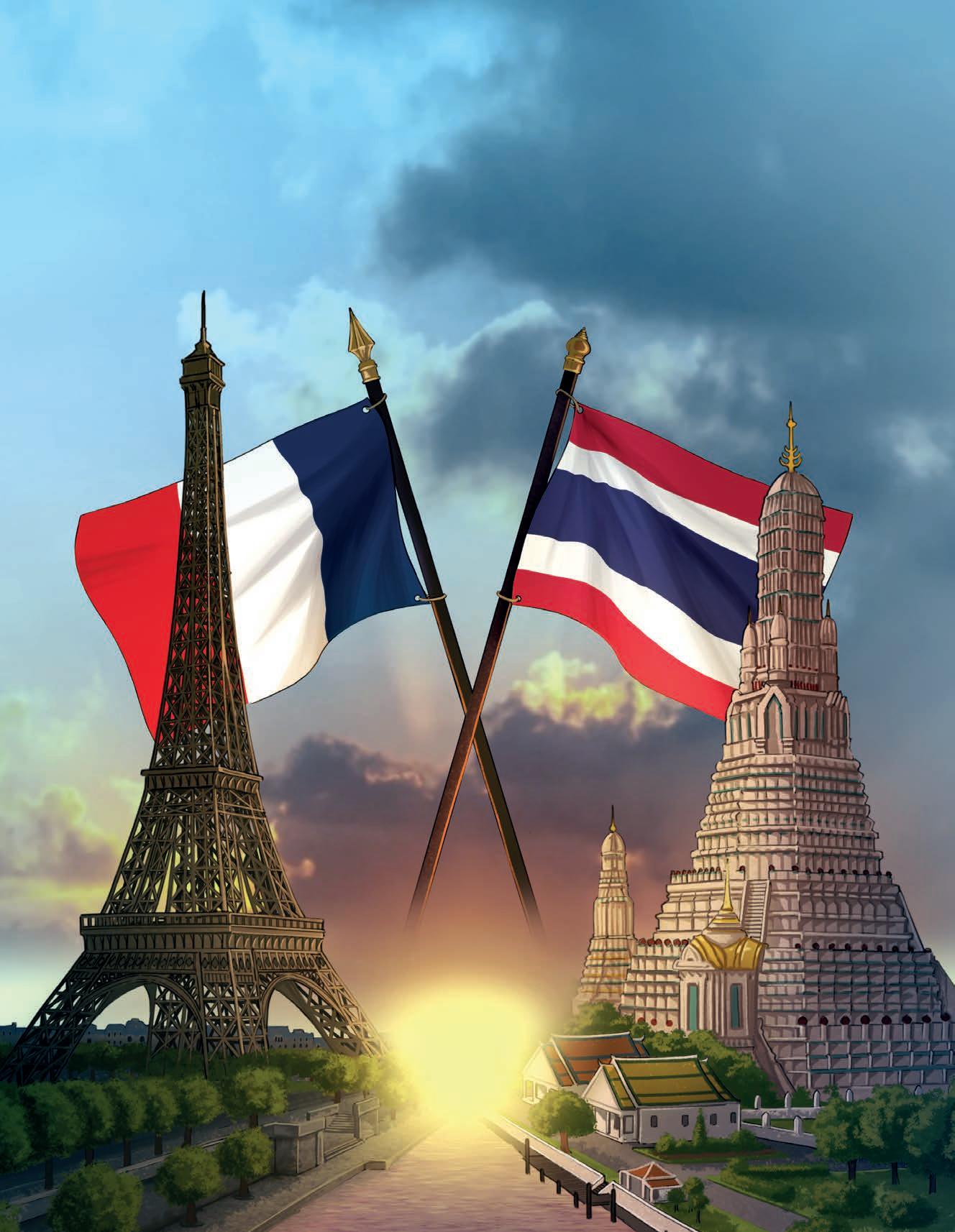



Christophe Chommeloux & Jean Michel Kau mann
In his preface to Jean Michel Kauffmann's book France - Thailand, a long history, recently published by Soukha (and which we shamelessly plundered with the kind permission of the author, obtained over a glass of white wine at the French Residence), the French ambassador to Thailand, Mr. Jean-Claude Poimbœuf, wisely points out how much Thailand and France have in common.
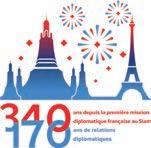
It is often said that Thailand and France, despite their distance, have a lot in common,” says the diplomat, "a fairly comparable size and population, a diversity of landscapes, a renowned lifestyle and culinary arts, which make them attractive countries and major tourist destinations.
Our two nations are also proud of their culture and committed to their independence.What is less well known is that they rst came into contact with each other a very long time ago. That was 340 years ago. At the time, even though they still knew almost nothing about each other, each was already convinced of the bene ts to be gained from getting to know and understand one another. Louis XIV wanted to open Siam to Christianity and trade with France. King Narai, seeking balance, wanted to diversify his exchanges with foreign powers. "
It is undeniable that our two nations are particularly fond of the art of living, especially good food and ne spirits. Unlike our Anglo-Saxon friends, Gauls and Siamese alike enjoy talking about food while eating and appreciate endless feasts featuring countless culinary delights shared among friends. We might add mischievously that our peoples are also very fond of holidays and long weekends, and have a similar attitude to work, which is generally more epicurean than Stakhanovite. Furthermore, although Thais are generally not big fans of pastis, they are the only people in the world who can seriously rival the French at pétanque. Finally, as a sign of their pleasant carefree attitude, households in our countries have no fear of excessive debt when it comes to ensuring their comfort and their love of the good life.
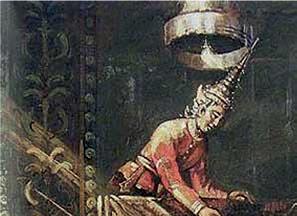

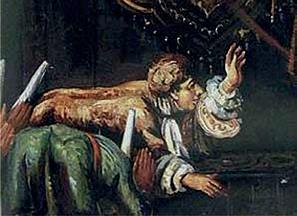

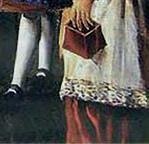


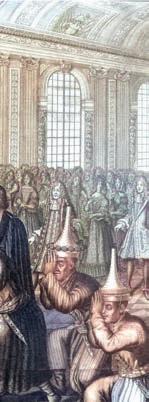



L’Oiseau and La Maligne arrived in Brest harbor on June 18, 1686. Among the passengers were members of the French embassy of the Chevalier de Chaumont, sent by Louis XIV in 1685 to the King of Siam, Phra Narai. They were returning to France after a journey of just over six months. Also on board the ship and the frigate was a very important Siamese embassy led by Kosa Pan, King Narai's foster brother, who had come to visit the French sovereign.
Kosa Pan's journal recounts the many visits to the most beautiful ships, the arsenal, a cannon foundry, and the two forts overlooking the harbor.
In the 17th century, Brest was barely a town, a small village with ramparts built by Vauban, a castle, and a few streets in the wealthy neighborhood where all commercial life was concentrated. A small road laid out by the military architect in 1694, which crossed the Sept-Saints district, did not yet have an o cial name and, by common usage, was given the name Siam after the visit of the ambassadors, which had made a strong impression on the people of Brest. In 1742, a decision was taken to adopt this name.
In 1986, 300 years after the visit of the Siamese ambassadors, Her Royal Highness
Princess Galyani Vaddhana, sister of King Rama IX of Thailand and founder of the Thai Association of French Teachers (ATPF), promoted the establishment of bilateral linguistic and cultural cooperation between the city of Brest and Thailand. More recently, to commemorate the 333rd anniversary of diplomatic relations between France and Thailand, the ATPF, under the patronage of Her Royal Highness Princess Maha Chakri Sirindhorn, presented the city of Brest with a bust of Ambassador Kosa Pan.
There is not just one Rue de Siam, but at least four throughout France.There is a Rue de Siam in Marseille in homage to Chevalier Claude de Forbin, who was appointed major of the rst French embassy to Siam in 1685. He was also called upon by King Narai to command his armies. In memory of this, the name Siam was given in 1771 to the street on which the Forbin family home stood.There is also a Rue de Siam in Saint-Malo, another in Lorient, and even one in Plougastel, for less obvious reasons.

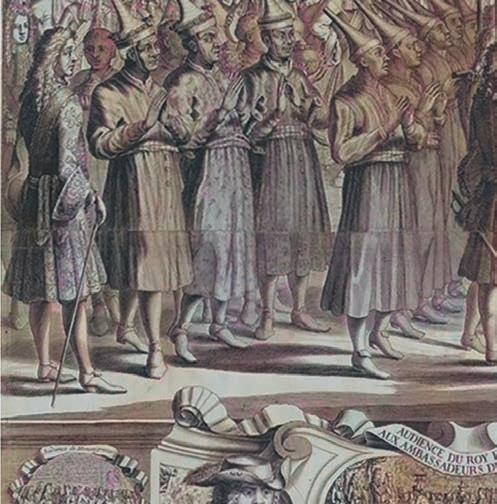
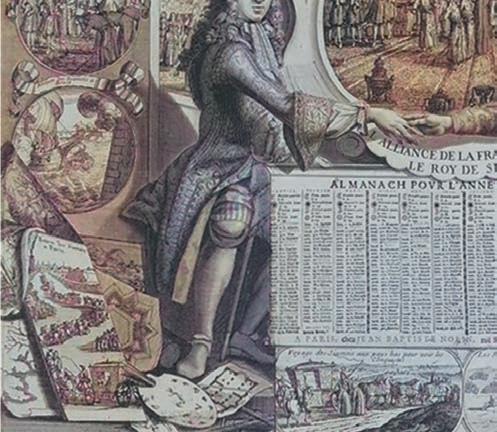
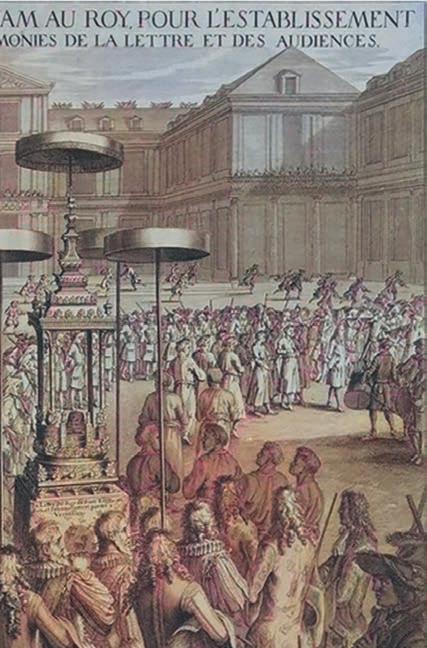




On the Siamese side, it was Gildas Le Lidec, French ambassador to Thailand from 2009 to 2012, who decided to “claim the strict, albeit belated, reciprocity of what we had granted to the Thais and to request that Charoenkrung Soi 36, which serves our embassy in Bangkok, be renamed Rue de Brest.”
The diplomat then undertook, with what he described as the discreet help of a descendant of Kosa Pan, to try to convince the governor of the Thai capital. It took a long time for the matter to gain interest, and just when he thought it was doomed to failure, he learned from a resident of the street that the municipality was conducting a discreet consultation with local residents to determine whether they would accept a foreign name being given to their street. They agreed without hesitation. Finally, under the ministry of Mr. Le Lidec's successor, Thierry Viteau, the o cial naming of Rue
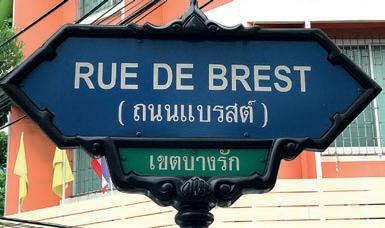


de Brest took place in 2013, replacing Charoen Krung Soi 36 in Bangkok.
The 1867 World's Fair in Paris marked the rst participation of the Kingdom of Siam in a major international public event. Its participation, under the authority of Amédée Gréhan, Consul of Siam in France, made the kingdom known to the Western world. King Rama IV accepted France's o cial invitation to participate, and the event inaugurated a series of exhibitions highlighting the art, crafts, and culture of the Siamese kingdom, which were still largely unknown to the French public.
It should be noted that World's Fairs, symbols of triumphant modernity, rst appeared in the mid-19th century, starting with London in 1851, then, under the impetus of Napoleon III, the Paris exhibitions in 1855 and 1867. These were followed by three others in 1878, 1889, and 1900, where industrialized countries competed to showcase their best technical inventions and artistic creations. For France, the highlights included riverboats (1867), electric lighting (1889), the metro (1900), and several prestigious monuments,
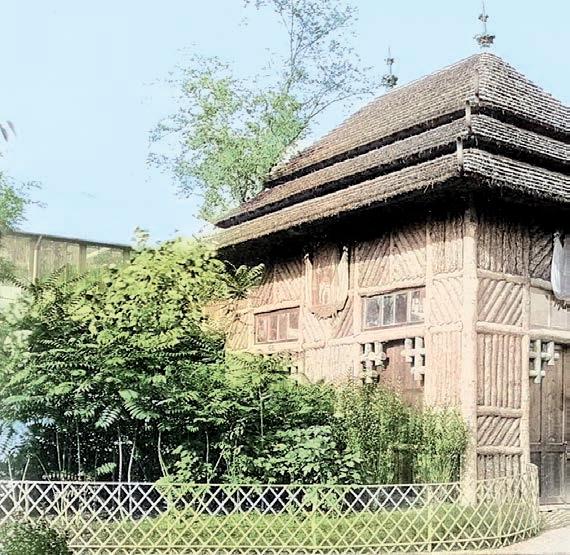

foremost among which was the Ei el Tower, which became the symbol of Paris.
The Siamese pavilion, associated with that of Japan, charmed the public with its exotic traditional architecture and the many objects sent by the King of Siam. Noteworthy items included jewelry, cloisonné enamel vases, silverware, and mother-of-pearl trays, as well as a collection of Buddhist religious objects mixed with Brahmanist and even animist practices specific to Siamese religious culture, which were very curious to Western audiences. Among all these works of art, the most remarkable were the magni cent nine-meter-long royal barges, partly gilded and decorated with bright colors. These slender boats received a medal of honor from the jury, but the main attraction was undoubtedly the large white elephant made of papier-mâché, carrying a golden palanquin with solid silver harnesses, created by the exhibition's curator, Amédée Gréhan. Let us not forget the importance of the white elephant in Thai culture, a symbol of the kingdom and a sacred animal of veneration.
Eleven years later, Siam was also invited to participate in the third Universal Exhibition in Paris in 1878. As in 1867, the kingdom was proud of the many prizes it was awarded: two grand prizes for silks and clothing, a gold medal for various hunting and shing instruments,

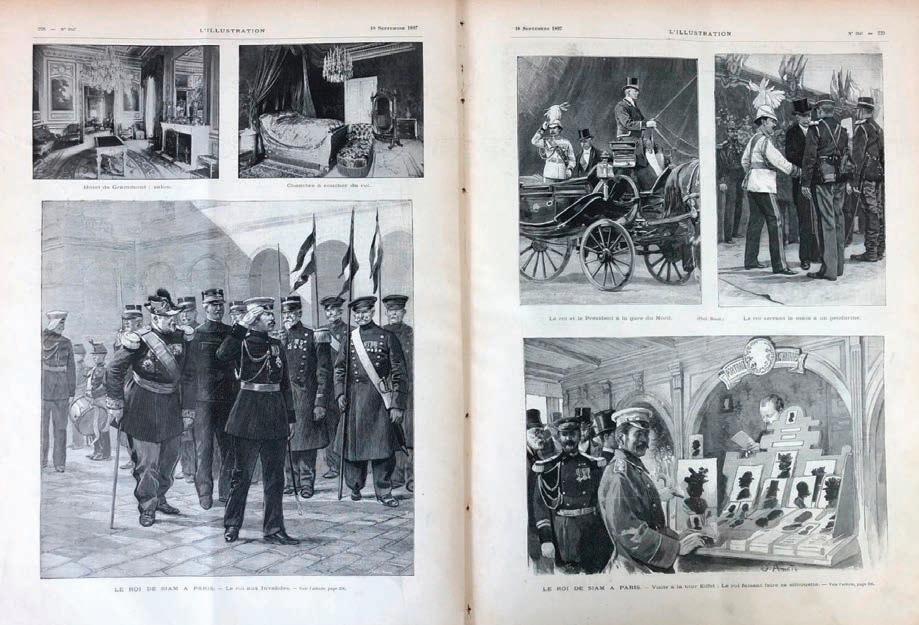
trip
and a silver medal for musical instruments.The Siamese kingdom was also present at the Expositions of 1889 and 1900, where the Siam pavilion was located next to the Tower of the World Panorama building at the Champ de Mars.
King Chulalongkorn's long private trip to Europe in 1907, the main purpose of which was to visit his sons who were studying in England, included several stays in France, totaling 36 days. He visited Strasbourg, the French Riviera, and of course Paris, which he considered to be the most beautiful city in Europe.
It is a pleasure to read the letters written by Chulalongkorn during his three stays in Paris.These letters were not merely an a ectionate exchange between a father and his daughter, containing descriptions of unusual places, but also took on an almost ethnographic character with remarks on manifestations of human activity, manners, and customs.The sovereign often gave his point of view, not shying away from critical observations, such as his lack of interest in modern painting
when he visited the Salon de l'Art at the Grand Palais. King Rama V showed a deep interest in French cuisine, which he greatly appreciated, particularly during his visit to the restaurant La Tour d'Argent
A ne gourmet, he not only praised the qualities of “Peking duck,” but also made comparisons with other restaurants, notably the Valentin restaurant in Strasbourg, where he had enjoyed the famous foie gras, and the Parisian restaurant Henri, noting that although the decor was unassuming, the dishes served were delicious. The sovereign also gave his opinion on other European cuisines, and it is not surprising that he preferred French cuisine.

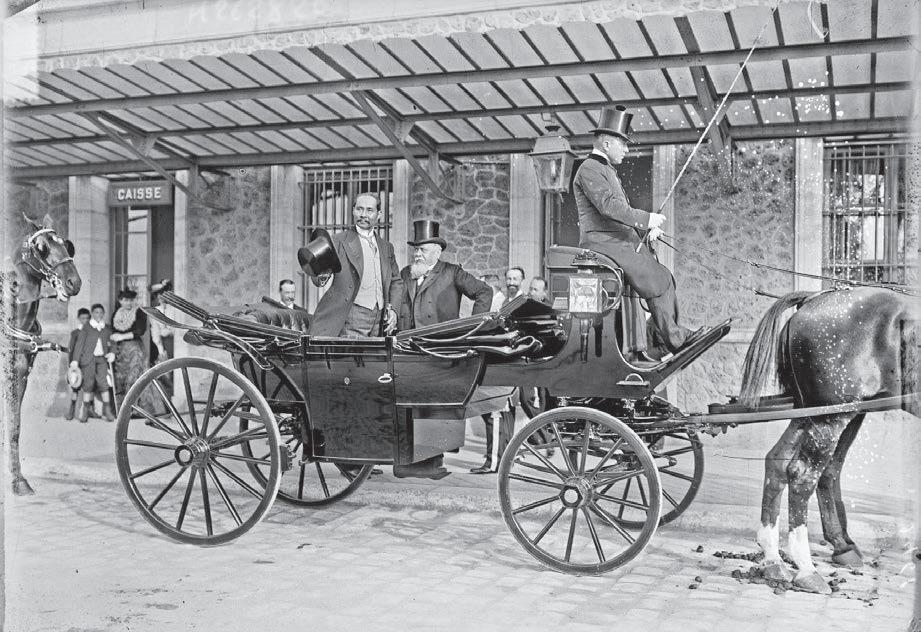


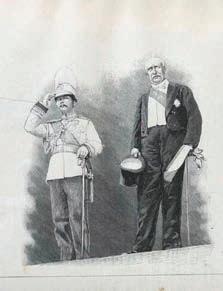
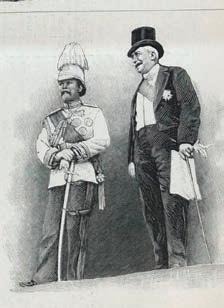

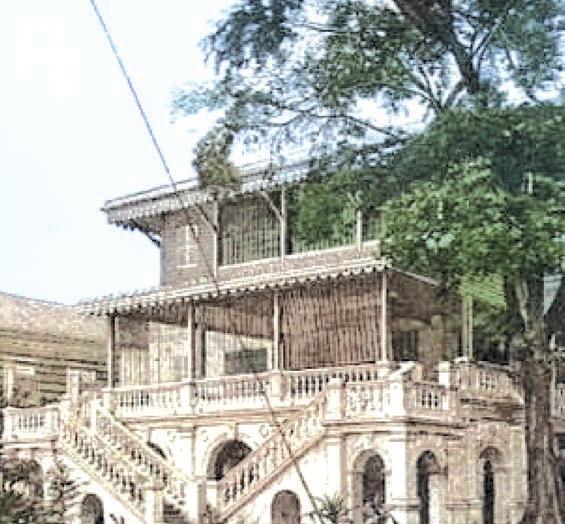

The surprise comes from the analogy with Siamese cuisine: “As for the French, their originality lies in the use of many ingredients. And like the Siamese, they add the ingredients before cooking, which makes it taste better !”
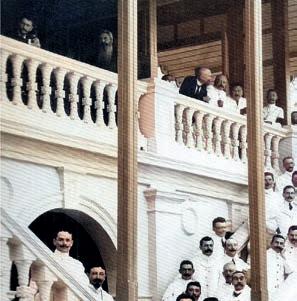
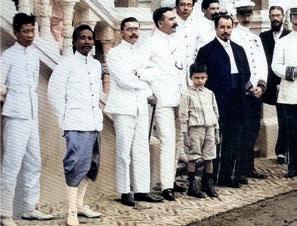


When the treaty of friendship and trade between Siam and France was signed on August 15, 1856, it was decided that a French consul would be appointed in Bangkok, to take e ect as soon as the rati cations had been exchanged. However, it was not until October 21, 1858, that Mr. de Castelnau arrived to take up his post. A plot of land on the banks of the Menam Chao Phraya, occupied by a vacant Siamese customs house in the district of Bangrak, was made available to the French representative.
This fairly large two-story building, in colonial style with beautiful windows, was naturally oriented towards the river, the main means of communication at the time. The permanent establishment of the consulate in Bangrak was con rmed when the King of Siam donated the land and building to the French Republic on June 10, 1875, thus expressing his desire to conciliate the French, who at that time were threatening the borders of the Siamese kingdom.This decision could only delight the head of the French representation, as maintaining a presence on this riverside land was strategic. Added to this advantage was the fact that it was located in the vicinity of other foreign consulates and, above
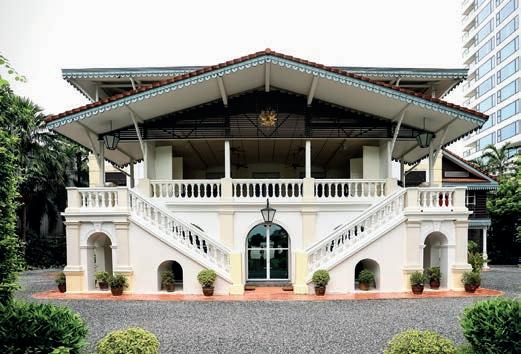

all, close to the French Catholic mission, from which linguistic and cultural assistance could be expected through the priests of the Foreign Missions. This led to the creation of a kind of French quarter in this part of Bangrak, between the Oriental Hotel, the Assumption School, the Bank of Indochina, and the Saint-Louisdes-Français Hospital.
The residence is now listed as a National Historic Monument of Thailand.With the current development of the banks of the Chao Phraya River, the future of this beautiful and grand residence is assured. The last change to the French diplomatic campus in Bangkok dates back to 2015. Following a consultation launched in 2011, the Jean Dubus architect rm, in partnership with ADPI (the engineering and architecture subsidiary of Aéroports de Paris), was selected to build the new chancellery.
From the outset, it was subject to various constraints, notably due to the small size of the plot, but also to height restrictions. It was also important not to visually overwhelm the ambassador's residence.
Added to this, of course, was the security requirement speci c to diplomatic premises.The rm chose to retain the rear section of the existing main building and renovate it after adding a new structure.The building's sharpangled pro le draws inspiration from the large roofs of houses with steep slopes and generous overhangs, in keeping with traditional Thai design codes. Another original feature of the building was the use of a cladding made of Krion, a latest-generation material used here in a luminous white, giving it a polished, marblelike appearance.Thus, this six-level polyhedron, worthy of the most daring achievements of the 21st century, contrasts sharply with the ambassador's noble residence, the repository of memory.
The early days of aviation, in the late 19th and early 20th centuries, took place in France and the United States, with the Wright brothers' successes in the latter and Louis Blériot's crossing of the English Channel in the former.

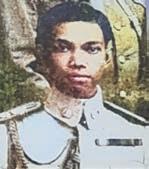
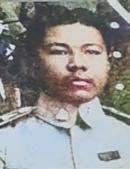
Above all, this nascent aviation aroused the interest of the French armed forces to such an extent that by the end of 1909, the idea of military use of aircraft had become established.Thus, French military aviation was born with the purchase of the rst domestically built airplanes by the Ministry of War and the organization of military aeronautics.
As a corollary, His Majesty King Wajirawudh, realizing the need to protect his kingdom from the threats it faced, asked the Ministry of War to establish the aviation section of the Royal Siamese Army.Three quali ed o cers (Major Luang Sakdi Sanlayawut, Captain Luang Arwut Sikikorn, and Lieutenant Thip Ketuthap) were selected to take aviation courses in France.
After learning the language, they began ight training, one at Villacoublay airport while the other two were trained at Mourmelon-le-Grand.
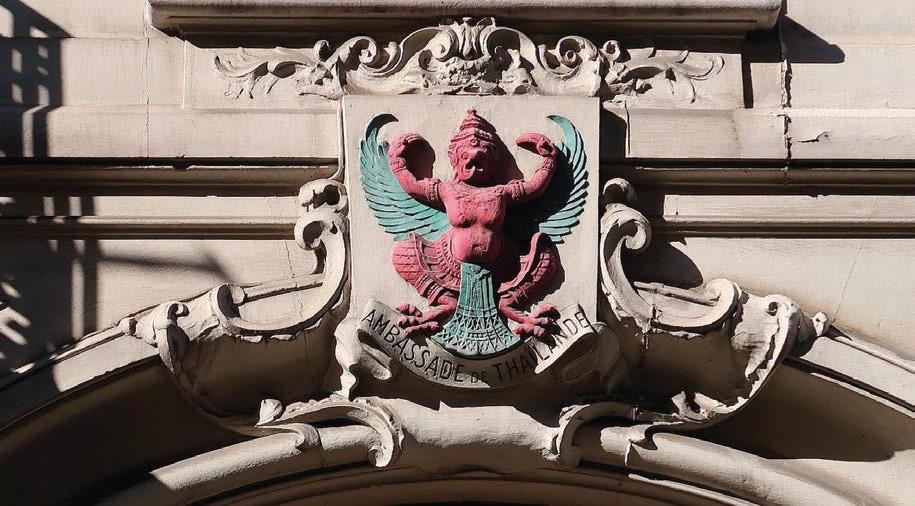
The three o cers completed their training in August 1912. Before leaving France, they tested the eight aircraft ordered by the Ministry of War (four Nieuport monoplanes and four Breguet biplanes). The aircraft
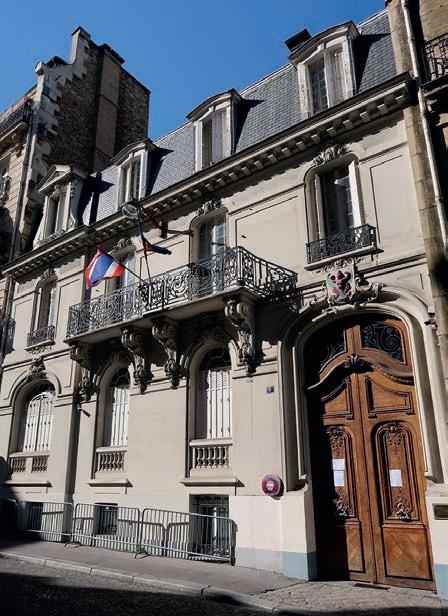
were dismantled and then reassembled in Bangkok. On January 13, 1913, the three pilots performed the rst ight demonstration at the Sra Pathum racecourse in front of His Majesty King Wajirawudh.
The following year, the army's aviation unit was transferred to the new Don Muang air eld.
One cannot talk about Thailand in France without mentioning the kingdom's embassy, located at 8 Rue Greuze in the 16th arrondissement.
The entrance gate to the embassy is surmounted by a superb bas-relief in the shape of a coat of arms representing Garuda, the mythical bird of Hinduism and emblem of the Chakri dynasty, which has reigned since 1782. A half-man, half-bird creature, Garuda is presented as the vahana (vehicle, mount) of the god Vishnu.This symbol can be found on banknotes, government documents, o cial ags, and on the facades of government and private services in the Kingdom of Thailand.
The Siamese legation was not initially located on Rue Greuze, but on Rue de Siam, a small street in the 16th arrondissement of Paris, which was aptly named after the rst o cial representation of the Siamese kingdom. This name was adopted by a decree of the Prefect of the Seine, Eugène Poubelle, dated February 27, 1886. However, in the 1900s, the legation moved to 14 Rue d'Eylau in the 8th arrondissement for a short period before settling permanently on Rue Greuze.
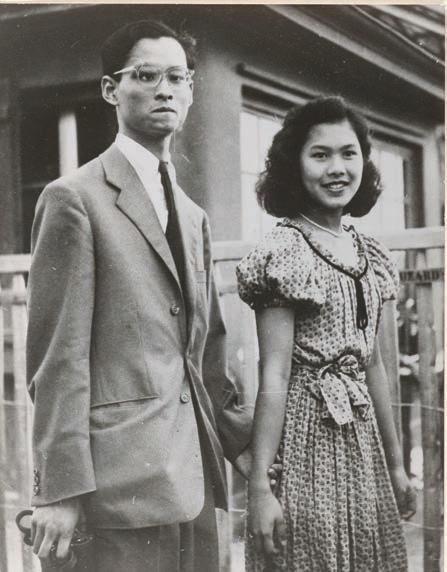
It was at the Château de Fontainebleau in 1947 that King Bhumibol Adulyadej met Princess Sirikit Kitiyakorn, daughter of the Thai ambassador to France and great-granddaughter of King Chulalongkorn (Rama V). After a discreet engagement in Lausanne, the king returned to the kingdom to celebrate his wedding on April 25, 1950, followed by his coronation a week later.
With strong growth, solid infrastructure (roads, ports, airports, industrial zones), recognized expertise, and an entrepreneurial middle class, Thailand, which occupies an ideal geographical position in Southeast Asia, is a prime investment destination for French industrial and luxury brands.The kingdom is home to around 290 subsidiaries of major French groups and SMEs, employing approximately 45,000 people. While Thailand appeared particularly privileged in 2018 with 4% growth, its attractiveness has declined slightly in the post-COVID years because, despite the business opportunities o ered by the kingdom in various promising sectors, Thailand su ers from certain old and
new problems, such as administrative red tape and low skill levels among certain segments of the population, which can discourage investors, particularly in a less robust economic environment.
However, French companies are proving to be highly resilient, and there are many sectors in which they are doing well: agri-food, automotive manufacturing, transportation, digitization, biotechnology, health and wellness, and more. Thailand therefore remains an attractive destination.
Airbus, whose aircraft make up a large part of Thai Airways’ eet, has had a base in Bangkok for aircraft maintenance since the 2000s, supplemented by a new facility for helicopters. It should be noted that Thailand plays a very important role in the production of sustainable aviation fuel (SAF), a eld in which Airbus plays a key role. For example, on October 10, 2024, the Thai Ministry of Natural Resources and Environment (MNRE) took delivery of its rst Airbus H130 helicopter, powered by a blend of 39% sustainable aviation fuel. This aircraft was operated jointly by Airbus, MNRE, Safran Helicopter Engines, and Thai Aviation Industries.
Essilor, the French inventor of the rst progressive lens and world leader in optics since its alliance with Italy’s Luxottica, is present in Thailand through several of its brands, such as Varilux.
Accor, the European leader in the hotel industry, manages more than 80 hotels throughout the kingdom.
Michelin, whose Thai subsidiary Michelin Siam Group was created more than three decades ago, now has no fewer than six sites, including three manufacturing plants: Michelin Siam in Laemchabang and Hat Yai, and Siam Michelin Company Limited in Rayong.
L’Oréal established itself in Thailand in 2000 and now employs around 630 people. With a domestic market worth nearly $6.5 billion in 2023, the cosmetics industry is a key sector of the local economy and is growing steadily. Although competition is erce, the global leader’s ambition is to become the number one in the country as well.
Mazars, a small French company in the 1970s, has become an auditing giant, now present in 89 countries.
Decathlon has made its mark on the Thai market with ten stores across the country.
The Bolloré Group has been present in Thailand for twenty years. In partnership with a major local transport company, it employs more than 200 people at various sites. The latest opening is a state-of-the-art logistics center in Bang Phli, in the province of Samut Prakan, southwest of Bangkok.
Diageo Moët Hennessy Thailand Ltd (LVMH Group) is Thailand’s leading importer of premium spirits... ■
Nicolas Verstappen
Lecturer at the Faculty of Communication Arts at Chulalongkorn University in Bangkok, Nicolas Verstappen is a specialist in Thai comics. He tells us their story through the influence that the adventures of the most famous Gauls in the world have exercised in the Kingdom.
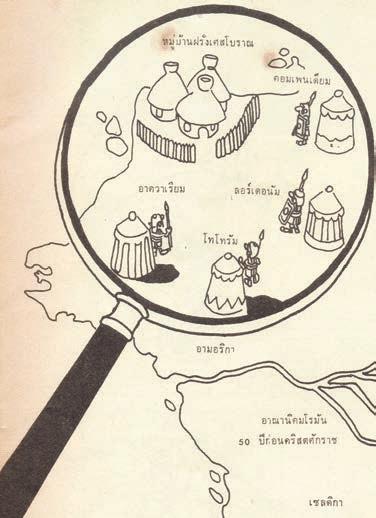
Short of a few hours of ying carpet, Asterix and Obelix could have reached the doors of Southeast Asia.The two Gauls, accompanied by Dogmatix and Cacofonix, have unfortunately not travelled beyond the Ganges in the adventure entitled Asterix and the Magic Carpet.The content of their albums, on the other hand, has come to Thailand through the English educational magazine Look and Learn, distributed in Bangkok in the 1960s.
Look and Learn then proposed the Asterix and Cleopatra comic pages translated into Shakespeare’s language.The two heroes had been renamed Beric and Doric, because in this version of 1966, they were not presented as Gauls, but had become insular Britons to satisfy the British readership. When their adventures were nally translated into Thai language in the 1970s, the Gauls were assimilated to another European people, now of Scandinavian origin. Asterix was indeed introduced to


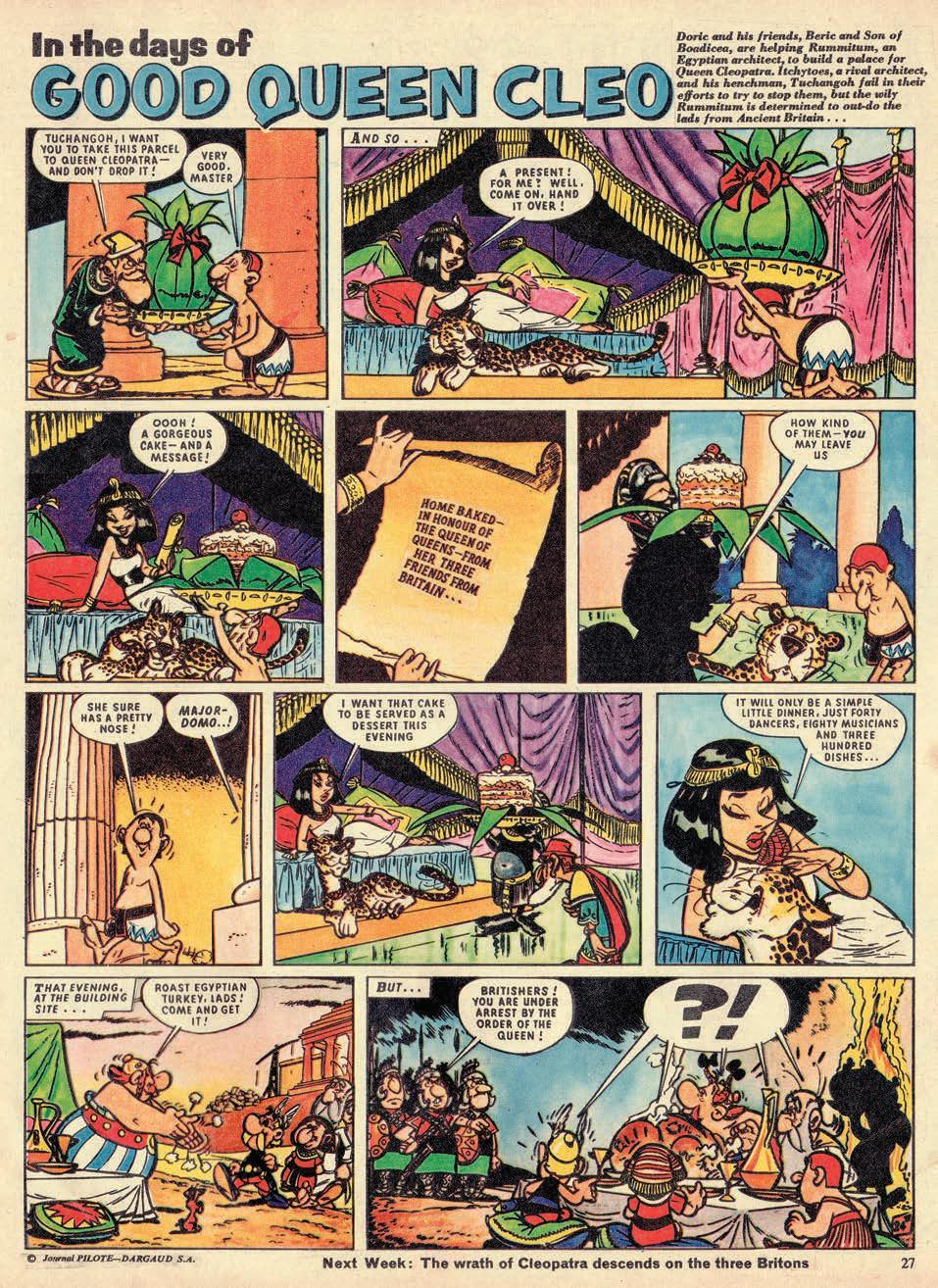
Thai readers under the title of “YotWaiking” which means… “Super Viking!”
The catchphrase, although misleading, but understandable, emphasizes the familiar gure of the Nordic warrior, but also that of the superhero. Since the early 1950s, marked by the economic and military alliance between the United States and Thailand to counter the threat of communism, American comics have been a great success in the kingdom, hence the emphasis on the Herculean strength of Asterix. To be exact, the superheroes were not the rst superhuman characters to have burst into the region. In the 1920s and well before the arrival of the magic potion drinkers and masked vigilantes, it is a spinach eater that inspired the rst illustrators of a country still known at the time as the Kingdom of Siam.
Created by the American author E. C. Segar, the adventures of Popeye arrive in Bangkok in the pages of old newspapers sent from Singapore to be turned into kraft paper in the Siamese markets. It is in these recovered sheets that many children discovered with fascination the American “comic strips” that will serve as a model for them when they become professional cartoonists. Until 1932, the comic strip remained a rather unexplored graphic form in Siamese newspapers, unlike the particularly virulent press cartoon against the autocratic elite of the country. A sounding board for the discontent of a new class that bene ted from the educational system set up at the beginning of the 20th century, press cartoon actively participated in the outbreak of the Siamese Revolution, which led to the abolition of the absolute monarchy in favor of a constitutional monarchy in 1932. The change of regime was unfortunately not the advent of a new era of freedom, in fact, rather the opposite.The censorship of the press was reinforced. Many newspapers were banned and sudden arrests of publishers were increasing. Cartoonists feared the same fate and decided to abandon the press cartoon for another format.Through daily 4-panel strips, long comic stories invaded the newspapers. The young designer Sawas Jutharop was the rst to embark on a six-episode narrative that featured the incredible adventures of reporter Jon, who was trying to dismantle a prostitution ring in Bangkok. In a very surprising, but entirely fortuitous way, this story evoked the adventures of another young reporter of Belgian origin who, at the same time, fought organized crime in the city of Chicago…
In 1932 still, Sawas Jutharop created the character of Khun Muen who became the rst local comic hero

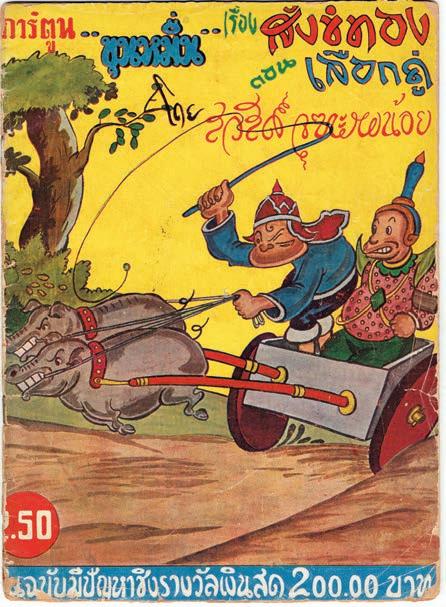


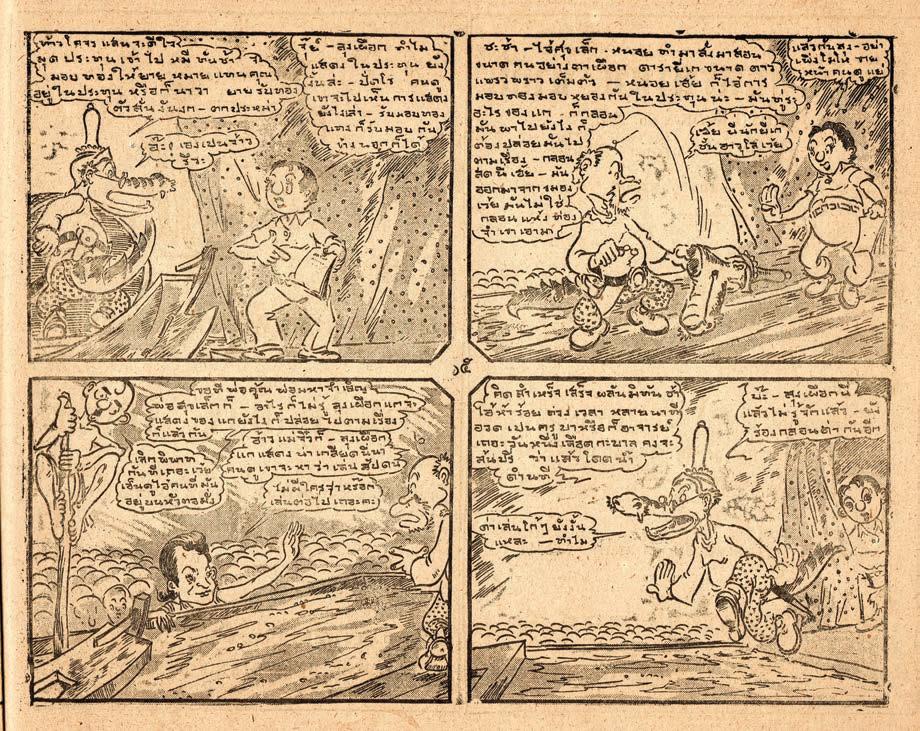
to be a national success. Khun Muen was directly inspired by Popeye’s character with his prominent chin, grinning mouth, constantly frowning brows and huge forearms. Khun Muen, however, was not a sailor, but a royal courier charged with transmitting to single princes an invitation to present themselves to Princess Rojana, who had not yet found a worthy suitor. Adapted from the famous SangThong folk tale, the story of Sawas Jutharop unfolds during the time of the Kingdom of Ayutthaya which was established in 1350 and ended in 1767 with the sack of the capital by the Burmese troops. From Popeye, Khun Muen retained only a few physical traits, being completely redesigned in a local context to become a humorous character who uses his malice rather than his sts to help the princes in their quests. From 1932 until the death of Sawas Jutharop in 1950, Khun Muen became a recurring character in many comic strip adaptations of folktales. His brief pop-up appearances were eagerly awaited by Siamese readers as well as those of the Thompsons in the adventures of Tintin at the other end of the world.
Khun Muen, whose e gy was used to promote many commercial products, inspired a young cartoonist by the name of Prayoon Chanyawongse who would later be considered the “king of Thai comics”. In 1938, Prayoon Chanyawongse created the character of Sooklek in his comic adaptation of the popular tale Chanthakorop. Like Sawas Jutharop, Prayoon retains a recurring humorous character from one storytelling adaptation to another, yet he adds an innovative element. Sooklek is not just a folktale hero, but a Likay actor, a form of operetta very popular in Thailand in the middle of the last century. Through a cleverly crafted mise-en-abyme, Prayoon Chanyawongse’s comic books give us the opportunity to read - and seethe adventures of Sooklek and his theater troupe who performed a folk tale and improvise part of the intrigue before a large audience. In these “Katun Likay” or “Likay plays in comics form”, Sooklek rst appeared on stage, presented his troupe and the piece they would play, and put on his costume to begin the performance. As in any performance of Likay where the play can be interrupted at any time by the public, Sooklek and his
troupe were constantly challenged by their spectators who suggested ideas to make the plot of the tale more interesting, to o er garlands of owers to fetish actors or to demand that an actor be replaced, because he was not up to his role.
In this theater of interruption, which is reminiscent of plays by dramatist Bertold Brecht, actors and actresses are amusing themselves by introducing commentaries on the social problems that plague contemporary Thailand, although the tales interpreted take place at the time of the Kingdom of Ayutthaya. An editorial cartoonist and socially conscious man, Prayoon Chanyawongse took advantage of the freedom o ered by the Likay to introduce much criticism of the military government in its comics for several decades. The readers’ craze for Prayoon’s political commentary, often introduced by Sooklek through subtle wordplay, was so immense as to become an editorial phenomenon comparable to the adventures of Asterix and Obelix. The comparison does not stop here.
With his love of wordplay, his recurring characters as funny as endearing, his stories depicting a bygone era, but riddled with contemporary popular references as well as his certain mastery of theatricality, Prayoon Chanyawongse is to Thai comics what René Goscinny and Albert Uderzo are in the Franco-Belgian comic strip. One di erence, however, is that Prayoon Chanyawongse’s political commitment against the military dictatorship earned him the animosity of the regime and many threats that the illustrator always tried to resist.When the government decided to attack Prayoon’s colleagues if Prayoon did not put an immediate end to his stories, the author eventually gave in, but now sketched his character Sooklek with lips sewn to show censorship of which he was a victim. While the regime muzzled seditious cartoonists and published cartoons of anti-communist propaganda, the Thai comics art was also the target of strong criticism by parents’ associations, professors and academics. During the 1970s and after two decades of intensive modernization and cultural and political upheavals, the country tried to nd itself and opted for traditionalist and nationalistic discourses.The comic books, mainly for children, were completely redesigned to promote Thai culture in an entertaining way.
Launched in 1970 and led by its editor Rong Prasanobol , the monthly educational comic book Chaiyapruek Katun was a great success thanks to the
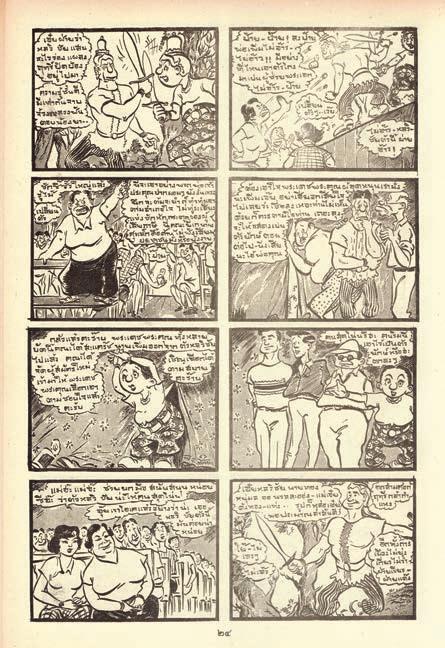



The Art of Thai Comics: A Century of Strips and Stripes de Nicolas Verstappen, 2020, River Books
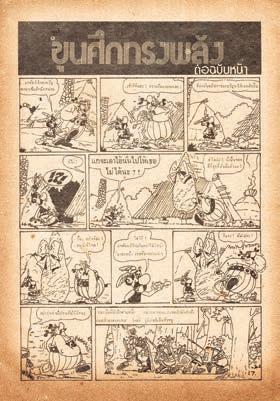
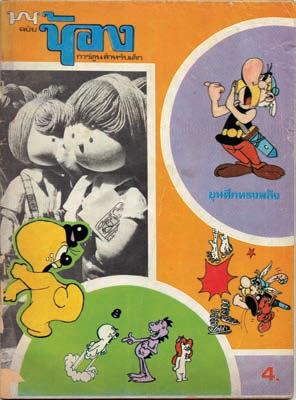
quality of its content, in line with conservative rhetoric. Traditions, local values, and literary classics were introduced by the most talented cartoonists of the time. In the series Chaiyapruek Katun, Rong Prasanobol developed his series PrawatSat Katun where he proposed the history of the Thai nation in comics. In the episode called Phraya Phichai DapHak, published in October 1971, Rong recounts the exploits of Phraya Pichai, a young Muay Thai boxer who followed King Taksin in his ght against the Burmese at the end of the 18th century. Using two swords and Muay Thai techniques, the young warrior kept ghting even if one of his blades was broken during an assault. He obtained the name of Phraya Phichai DapHak, or Phraya Phichai with the broken sword, and his exploit became one of the nationalist symbols of resistance against any form of territorial invasion.
“A
SIAMESE STILL RESISTS…”
The attentive reader will notice that this comic page by Rong Prasanobol, among many others, borrows visual elements from another series featuring famous resistants. Remember this famous introduction to the albums of Asterix and Obelix: “We are in 50 BC. All Gaul is occupied by the Romans… All? No. A village populated by irreducible Gauls still resists the invader.” Taking directly the style of Albert Uderzo to draw his horses or his dynamic composition of melee scenes, Rong Prasanobol makes a transfer both graphically and ideologically between the resistance of the Gauls against the Romans and that of the Siamese against the Burmese.The Siamese take the face of irreducible combatants against the invader from

the north-west. As for Khun Muen inspired by Popeye, but redesigned in a purely Siamese context, Rong Prasanobol reappropriates foreign visual elements if they reinforce his message against the invasion of foreign in uences and for a return to ancestral values. Although this approach seems paradoxical, this form of graphic and ideological “bricolage" is at the heart of Thai art, and comics art in particular, as the astonishing amalgamation of “Likay plays in comics form” from Prayoon Chanyawongse has shown us.This “pragmatic adaptation gift”, to quote the anthropologist Niels Mulder (Inside Thai Society: Everyday Life - Change, Silkworm Books, 2000), also allows Thai culture to stay up to date and to prove its relevance and resilience beyond the fashions of the United States, Europe or Japan.Through a series of formal borrowings from comic books, the FrancoBelgian comic strip or the manga, the Thai comic strip has never stopped following international trends in order to transmit from one generation to another a national identity established in the rst half of the last century.
Also standing the test of time by the quality of its characters and their relationship to each other and the world, Asterix series has exerted its in uence to Thailand. Note, however, a great aw.When the adventures of Asterix were published for the rst time in Thai language in 1975, they were not the original comic pages from Albert Uderzo, but the decals of the pages in black and white by a local artist. Entirely redrawn and thus losing much of the dynamic lines of Uderzo, this rst Thai edition was indeed a counterfeit of the album AsterixLegionnaire. If our two Gauls have sunk many corsairs in their adventures, they have not won against the Thai pirates… ■
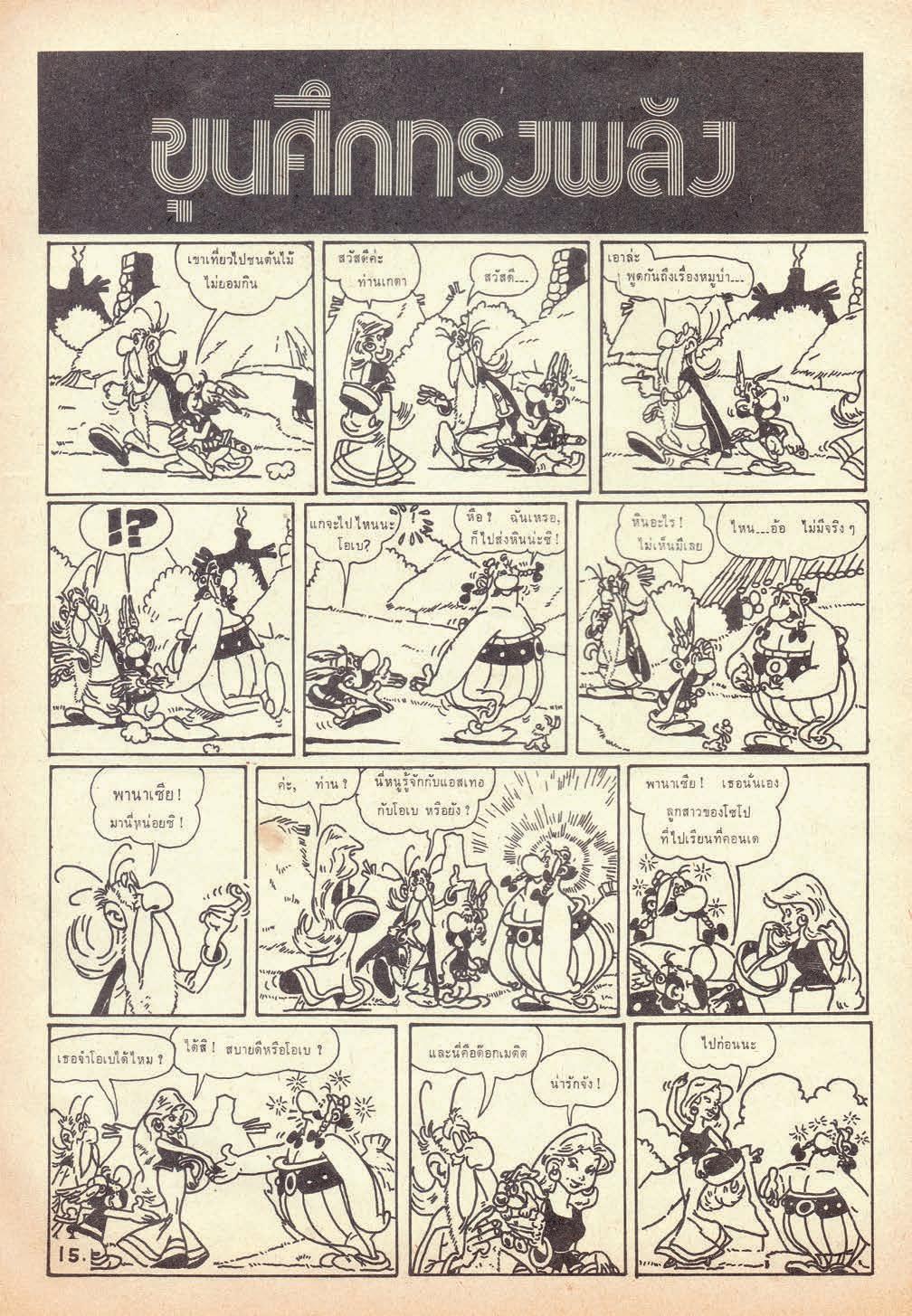

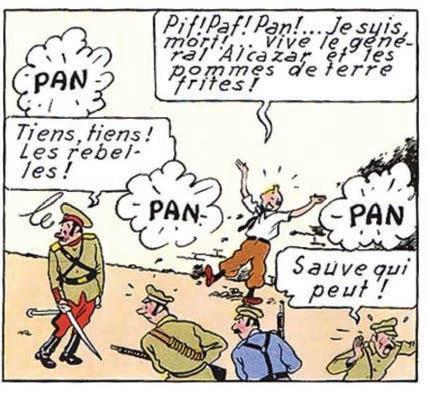

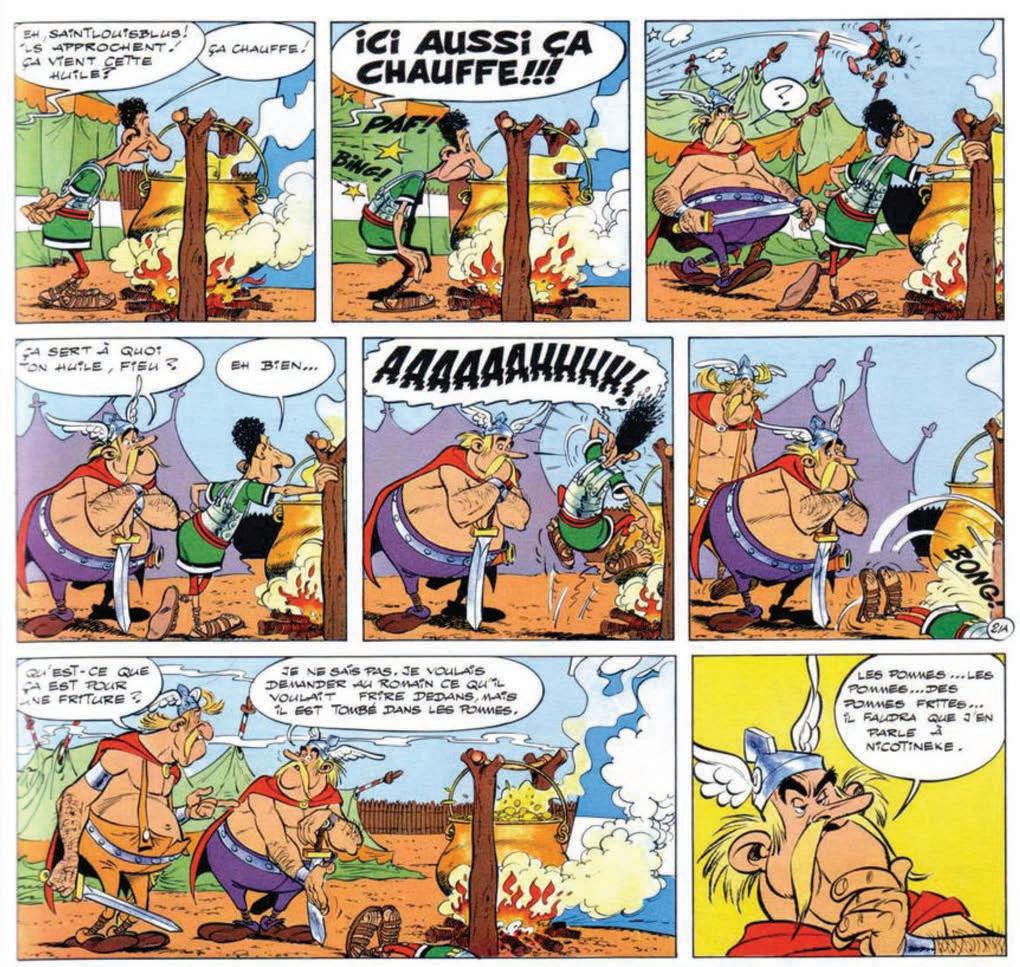
René Mafritte
In Thailand, French fries are called man farang thot (
; literally “fried potato”), but are also known as fren frai/
They are becoming increasingly popular in Thai bars and nightlife venues, mainly as a snack or light meal.

Delving into the ninth art, we can appreciate the theory that French fries were invented in 50 BC in a village populated by indomitable Gauls who continued to resist the invaders... But if the origin of French fries is indeed Gallic, are they French or Belgian? French fries and comic books are two specialties in which Belgians and French have always competed...
According to Cyril Pingant, author of Ripaille, Histoire(s) de la gastronomie française, the real French fry was born on the Pont-Neuf in Paris, “among the doughnut sellers, the bawling street vendors, and the boulevard theaters: at the turn of the 1780s, street vendors set up their braziers on the slabs of the Pont-Neuf, the oldest bridge in the capital. They dipped potato slices, sometimes coated in a light batter, into boiling fat. After the shows, people rushed to buy these golden discs served in paper cones. They were an instant hit. Very quickly, to prevent them from sticking together, the slices were cut into sticks. They were cut to between nine and eleven millimeters, no more, no less. And
since they came from the Pont-Neuf, they were named... Pont-Neuf potatoes. The French fries were born. In 1844, a Bavarian fairground worker set up a stall in Brussels and sold potatoes fried in the Parisian style. It was so successful that two municipal guards were needed to control the crowd around the three boiling pans. Baudelaire himself ate his fries with his ngers, the classic method recommended by Brillat-Savarin.
So are French fries Belgian? Not at all. The name traveled, but the art remained. American French fries, with all due respect to food lovers across the border, con rm what everyone already knew: French fries are French ... even if, between you and me, no one cooks them better today than a Belgian in his baraque à frites.”
Belgians are so fond of fries and comic books that in 2007, the National Union of Friteries Cooks even published the work of two pillars of the trade, Pierre Bochmans and his wife Marie-Louise Van Dorst: La baraque brinquebalante, a 28-page comic book distributed through the friteries’ network! ■
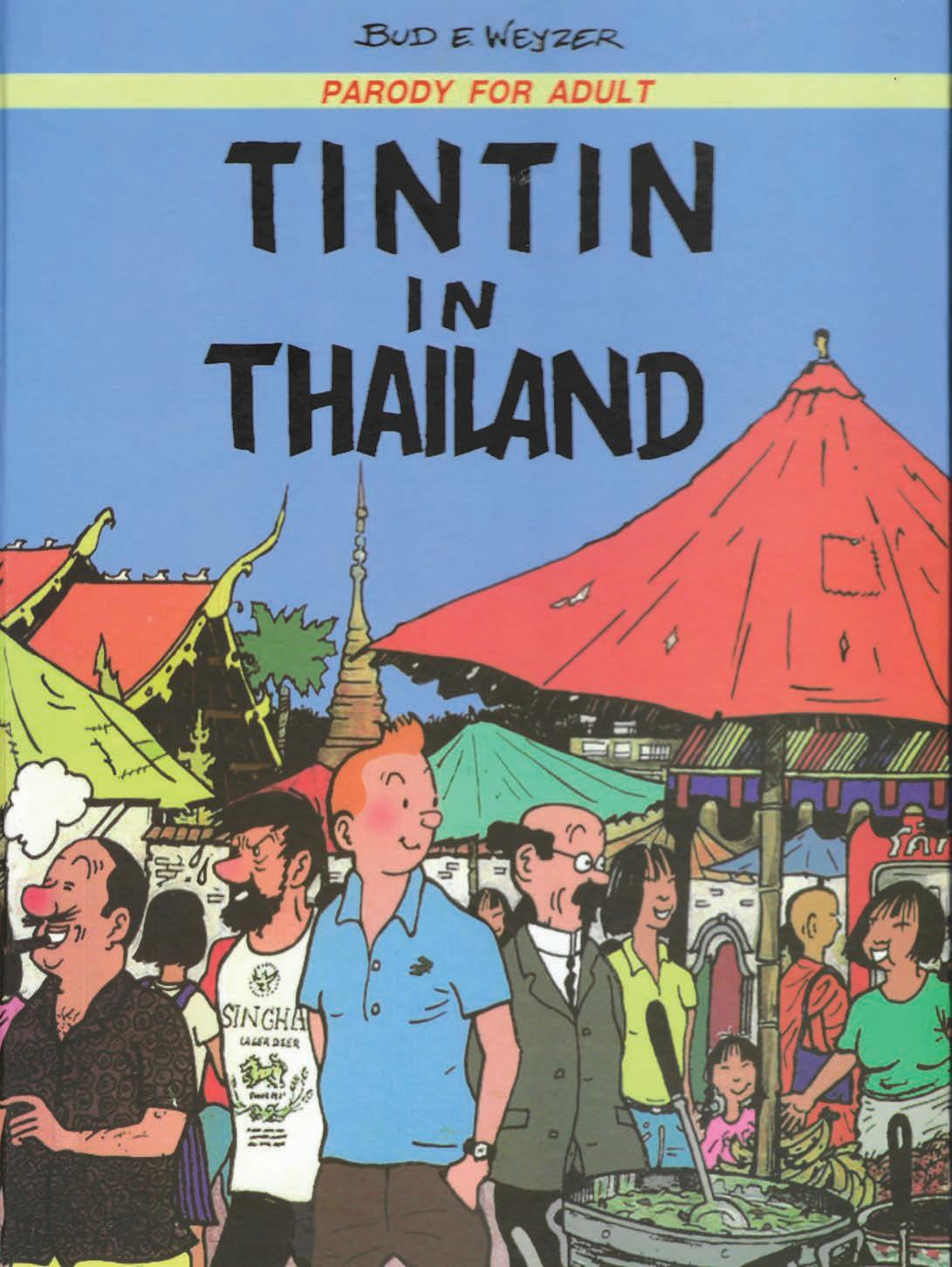
Allan Thompson
The first Tintin album in Thai was published in 1993 by Duang Kamol, followed by two more in 1996 by TNG-Publishing, and finally the most recent ones, from 2004 to 2009, by Nation-Casterman, the Belgian publisher’s correspondent. However, there is also a pirated series of 21 albums measuring 21 cm × 14 cm in circulation in Thailand, published in the 1980s by Samnakpim Bangkok San. These albums are clear counterfeits and are now very difficult to find.
The story of the legendary Tintin in Thailand…

While its author, Baudoin de Duve, has just hung up his pencils and brushes for good in a hospital in Chiang Mai, his adopted city, his work lives on through more or less legitimate editions, from the historic channel of his relatives at the discreet Éditions Ziedaneky to the more dubious Éditions Farang. This Belgian, born in 1950, settled in the Land of Smiles in the 1980s, after completing his military service with the paratroopers and already having tried his hand at a
whole host of jobs, before tasting the bittersweet delights of fame, brought to him by a well-crafted pastiche: Tintin in Thailand
This zany version of Hergé’s work, published in 1999 under the pseudonym Bud E. Weyser, caused a stir during the 2003 visit to Bangkok by a Belgian delegation led by Prince Philippe. His Highness was o ended by what he considered to be a scandalous misappropriation of the adventures of a national treasure: the most famous comic book hero in the world, Tintin!


The story? As Tintin and Captain Haddock are bored at Moulinsart after Hergé’s death, Séraphin Lampion’s wife asks them to nd her husband, who has disappeared in Thailand.Accompanied by Professor Calculus and Snowy, our heroes y o to Siam. And so begins a culture shock. The result is rather disrespectful and a little sexual. But Stéphane Steeman, a notorious Tintinophile, did not see how Tintin in Thailand could be o ensive.
Initially, the controversial work was just another bit of fun, dreamed up by a mischievous, 100% pure Belgian, who began by sketching a few doodles on the corner of a table for a group of merry French-speaking revelers in an advanced state of drunkenness.
The enfant terrible of a respectable French-speaking family from Antwerp that included a Nobel Prize winner in medicine, Baudouin de Duve was at the time a friendly, lanky man in his fties, the kind who never quite grew up. From the Buck Danny comics of his childhood, he retained a passion for airplanes. As soon as he had a few baht to spare, he would y over the hills of Lanna with Chris, his old English pilot friend. Up there, he would dream of a world where humor was the rule and art was the way of life. On earth, he was rst and foremost a jack-of-all-trades artist. He painted, drew, wrote, composed, and recorded a CD in Brussels… Of course, like many artists, he has no commercial talent. He pays for his fried rice and noodle soup by working as a tour guide, lm teacher, reporter, and antique dealer.
“At rst,” he told Gavroche in 2002, “I had no idea of making an album, just a few pages that I sent by fax to friends. But I quickly fell into my own trap, the joke amused us all and I continued day by day for fear of disappointing my friends.”
His friends were not disappointed when, in 1999, Bud had albums printed for them, numbered from 1 to 100 and credited to Éditions Syldavie.



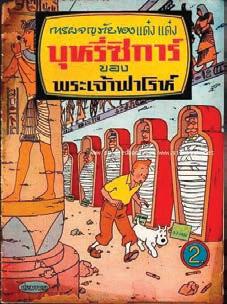


But already the work was beginning to escape him. In the French-speaking circles of Bangkok, his comic strips were circulating…
A veritable plundering operation was organized, hatched by two half-wits, vague foreign mercenaries who had their moments of glory and horror in Burma, Laos, Bosnia, and other latitudes… The crooks sensed a good opportunity.They o ered the father of Tintin in Thailand the biography of one of them in exchange for an original album. Then, claiming everywhere that they had bought the exclusive rights to the album, they had it scanned and printed a few thousand copies, which they sold in the seedy bars of Pat Pong, Patong, and Pattaya. “I was in shock,” says de Duve. “I thought it was despicable that someone from the small French-speaking community in Thailand would do something like that to me.”
One of the crooks went around to bookstores in Paris. Unfortunately for him, he tried to sell several copies of the album at a high price to a bookseller who was a friend of de Duve’s… The looters turned out to be poor businessmen. One of them, deeply in debt, sold the “rights” to another Frenchman, the owner of a small press group in Pattaya, who increased the print run tenfold.
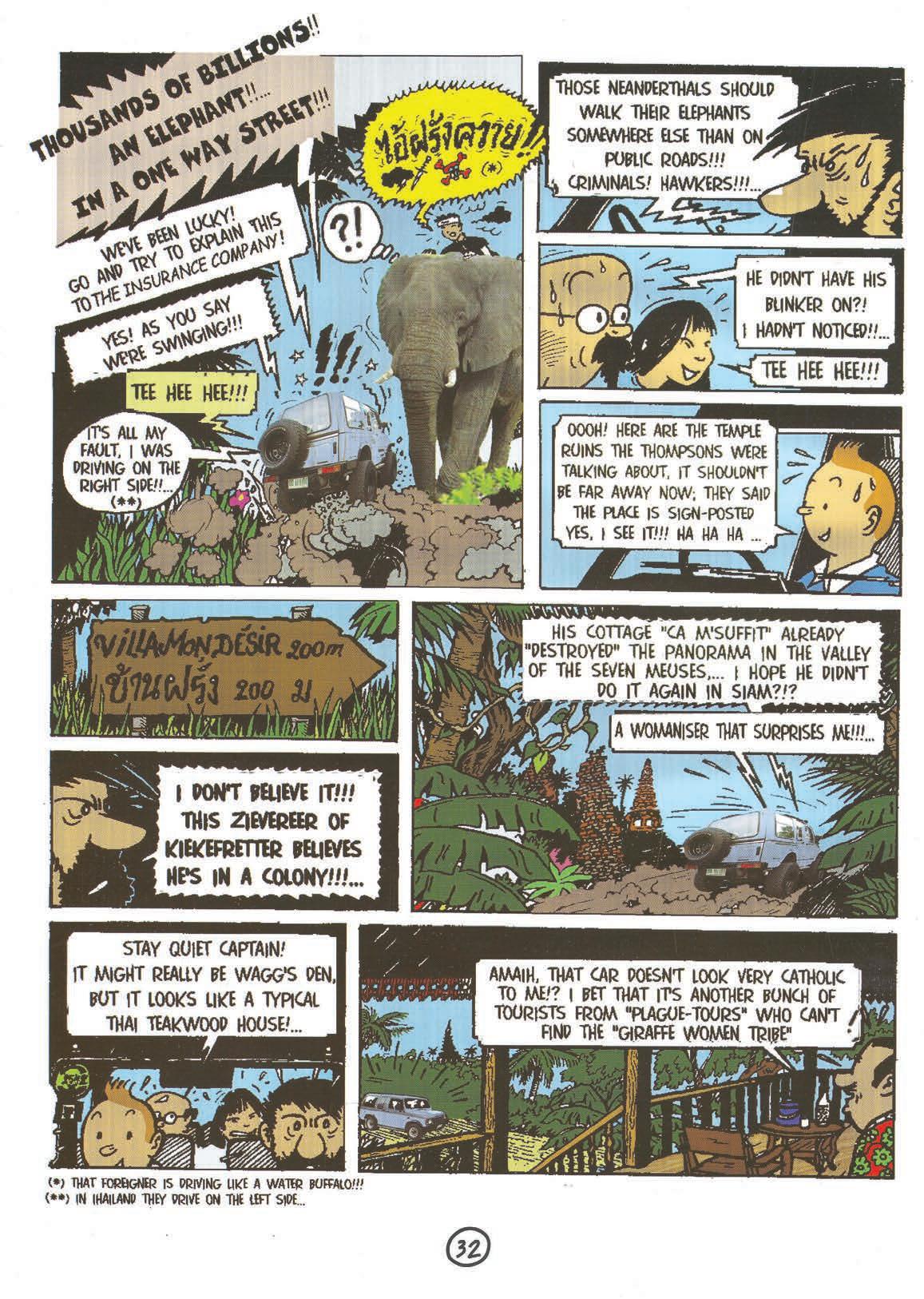

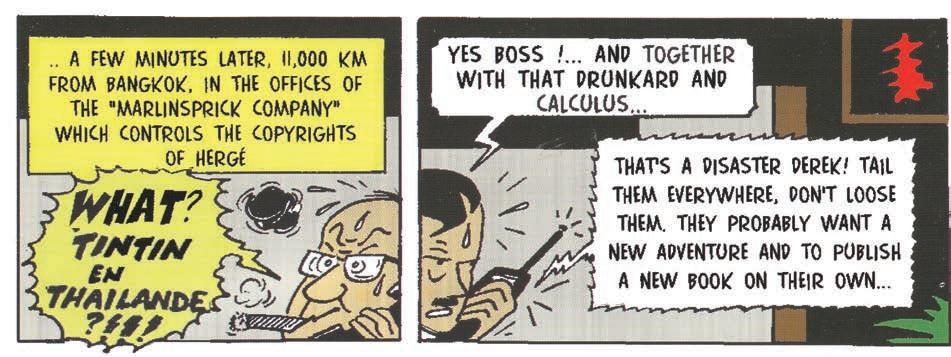
Others didn’t bother with “rights” and pirated the pirates themselves. The British owner of a go-go bar in Soi Nana, wanting to add even more fat to the juicy pro ts already brought in by his “hostesses,” had the book translated and published in English, “without understanding any of the original puns,” Baudouin notes, rolling his eyes.
At the end of 2000, weary of the turn of events, he returned to Antwerp, where he wanted to forget everything. One gloomy evening in February 2001, two armed police o cers refreshed his memory by turning up at his home as if they were tracking down a drug dealer or a serial killer.They turned over mattresses, opened drawers, probed false ceilings, and then proceeded to o cially seize the remaining stock of 650 albums and 45 originals.
“They accused me of being the author of a counterfeit. I replied that I had never signed Hergé and claimed that it was a real Tintin, that all I had done was a parody!”
But a few months earlier, the Thailand correspondent for Éditions Moulinsart, publisher and representative of the bene ciaries of Hergé’s work, had alerted his employer to the existence of the album. “Moulinsart considered this to be very serious, because an album designed as such – remember that there are only 23 o cial Tintin albums, not one more – directly a ected the essence, the heart of the character. And imagine, the day after the seizure, I was in the newspaper on the same page as Marc Dutroux!”
In the corridors of the Brussels Public Prosecutor’s O ce, de Duve noticed, glancing through half-open doors, that many police o cers were reading Tintin in Thailand. He learned from one of them that the police
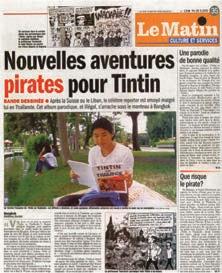

had obtained his address from two apprentice crooks who were trying to blackmail Moulinsart, demanding a million Belgian francs and threatening to reveal the name of the author of Tintin in Thailand to the press. However, Hergé’s heirs are known for their extreme zeal and in exibility in protecting the image of their hero and strictly controlling his commercial exploitation. By extraordinary coincidence, on the day of the seizure in Antwerp, nine thousand kilometers away in


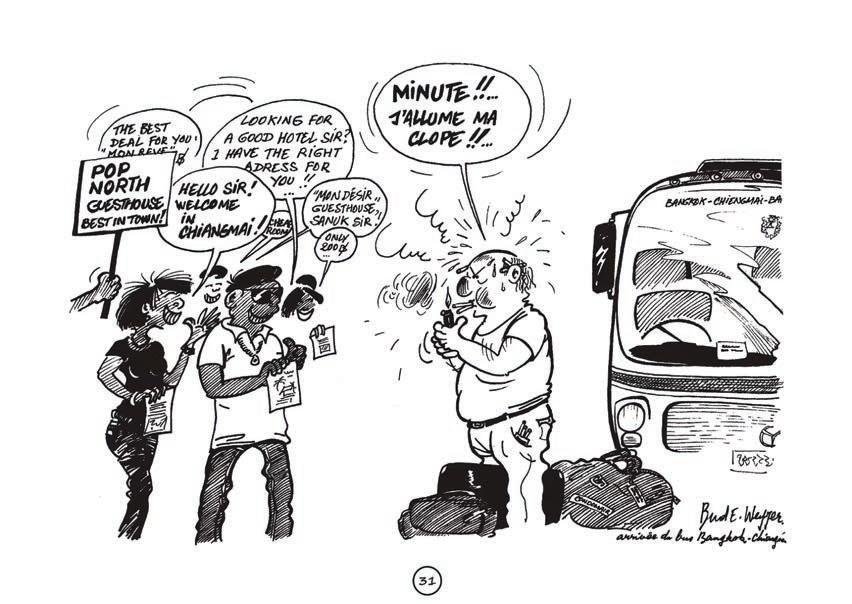

Thailand, Crown Prince Philippe and his wife Mathilde were accompanying an important delegation of Belgian businessmen. At the nal press conference, journalists were particularly interested in Tintin in Thailand
The Bangkok Post published a photo of the princess on its front page alongside an article about the seizure in Antwerp… The delegation’s spokesperson, Huberl Cooreman, described the comic book as “disgusting and insulting.” He pretended to be unaware that several prominent members of his delegation had already discreetly pirated copies of the iconoclastic parody delivered to them.
In Thaï-Crayons, published in 2012 by Éditions Soukha, Baudouin recounted his experiences in the Land of Smiles through a compilation of drawings published at the time in local newspapers. He sketched the misadventures of tourists in search of exoticism and expatriates who had become somewhat tropicalized, skillfully caricatured with his sharp pencil.
The author was ultimately able to convince the public prosecutor’s o ce that the work was not a forgery, but a parody and pastiche that “did not exceed fair use.”
SA Moulinsart, which defends the rights to Hergé’s work, did not insist and withdrew its civil action. The albums and original plates seized in 2001 for counterfeiting by the Brussels public prosecutor’s o ce were returned to the author and the case was closed without legal proceedings or conviction. SA Moulinsart declined to comment. The company regularly takes legal action, but has been unsuccessful on several occasions until the French courts nally recognized the exception of parody. ■

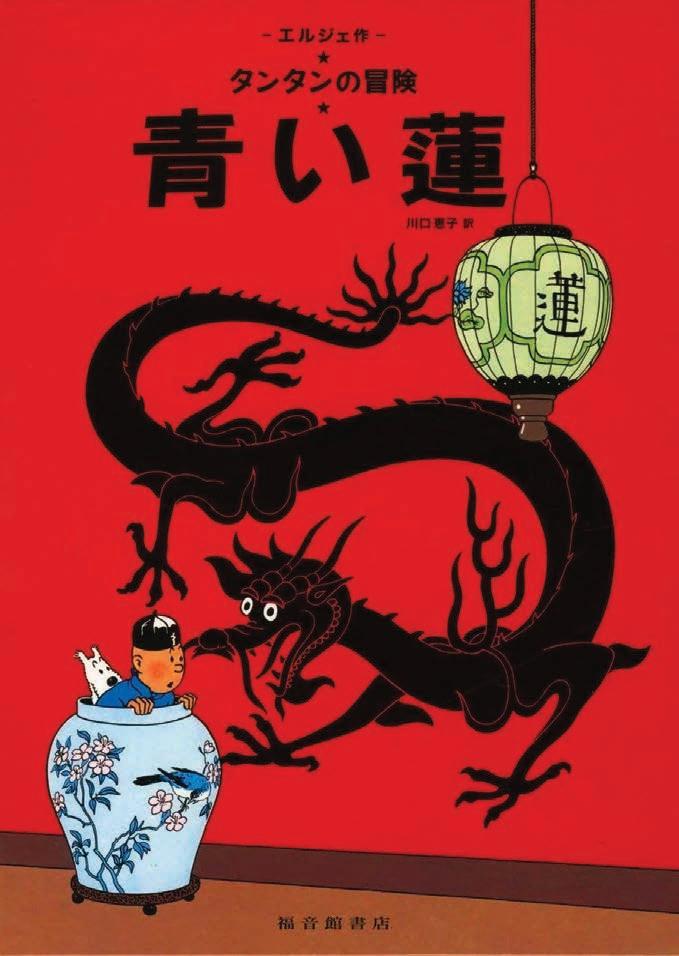


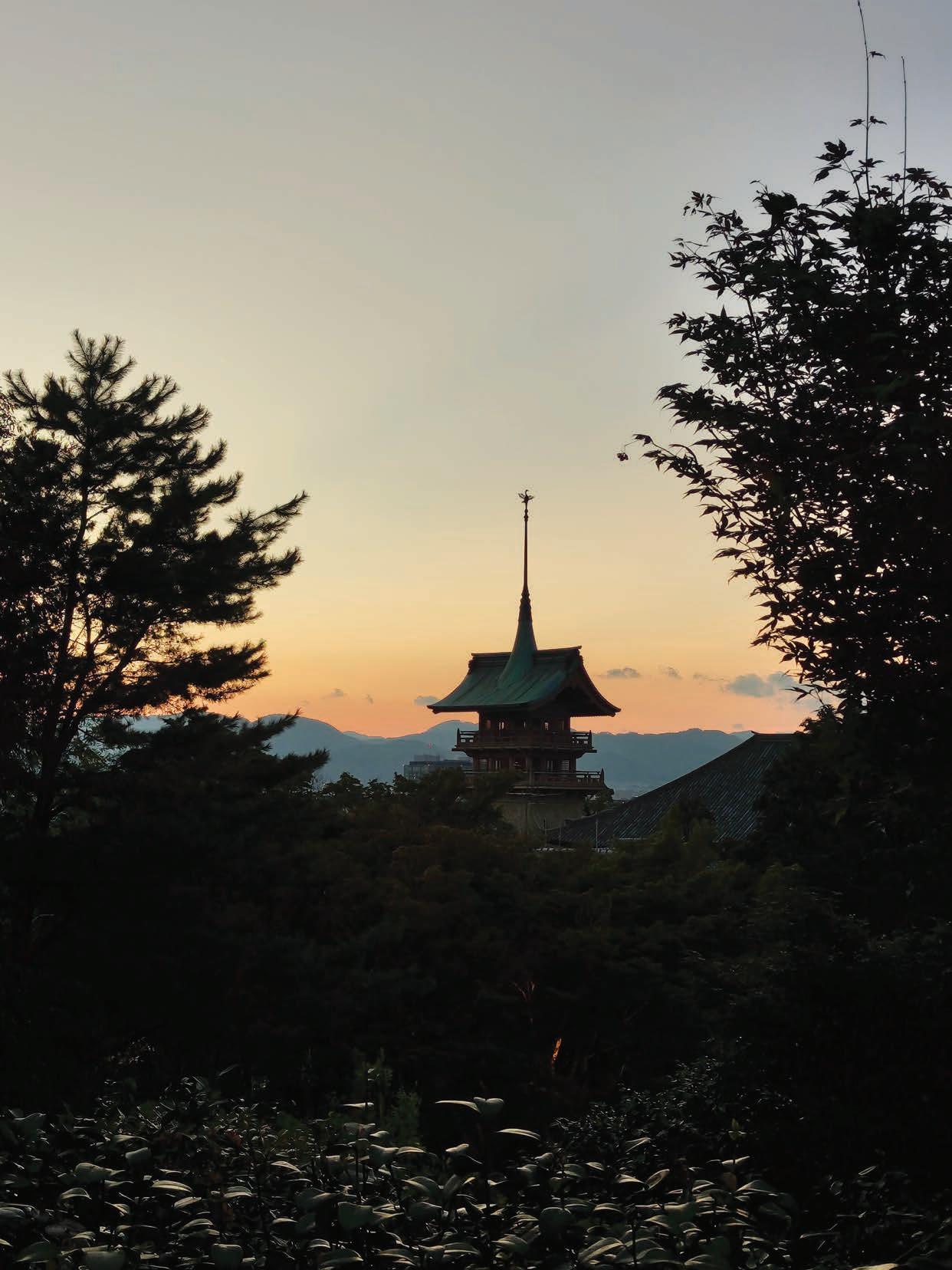

A popular destination for Western travelers, the land of shoguns, samurai, and geisha sparkles with a thousand facets and can be savored in small sips, completely losing your bearings. Here, you dive into the unknown, where everything is different and every kilometer is an excuse to travel and reflect on yourself. Visiting Japan in nine days is like traveling around the world in two months, but it offers a taste of this mysterious archipelago full of contrasts, whether you’re passionate about history and culture, a lover of Zen landscapes and tea ceremonies, or obsessed with fashion and technology.
Photos : Stella Thipsak & Caroline Laleta-Ballini
Caroline Laleta Ballini

With an area 20 times larger than Paris and a population of 35 million, Tokyo has something to appeal to even the most skeptical. It is a clean, quiet city, free of violence and traffic jams, perfectly organized and adapted to the elderly and disabled. Each neighborhood is different and offers a unique atmosphere combining modernism and tradition.

Shimokitazawa, Tokyo’s bohemian and trendy neighborhood, is full of vintage shops, thrift stores, café-theaters, jazz clubs, and concert halls.
In the 1920s, writers lacking inspiration and intellectuals settled in Shimokitazawa, surrounded by numerous bookstores. But in the 1950s, fashion enthusiasts took over the area with American surplus goods and ea markets. Life in the neighborhood was then punctuated by the latest clothing trends. Today, trendy young people, artists, and musicians rub shoulders in a relaxed atmosphere far from the hustle and bustle of the skyscrapers. The neighborhood slowly awakens at lunchtime, and people stroll through the narrow streets lined with low houses, small galleries, vinyl record stores, and café terraces, looking for that rare gem, to enjoy the best u y strawberry pancakes, or simply to watch the quiet ballet of passersby.
A few subway stops away, Harajuku is the nerve center of eccentric and avant-garde Japanese fashion and the birthplace of kawaii culture. Every day, amid the crowds, you can encounter elegant Lolitas in dresses, goths with long hair and piercings, or “decora-kei” enthusiasts wearing colorful wigs.Takeshita pedestrian street is full of inexpensive shops and street food, Cat Street combines small designer boutiques and major international brands, and Omotesandô Avenue is home to luxury boutiques with ultra-sleek designs.
If you need a break, Yoyogi Park and its famous Meiji-Jingû Shrine are just a few minutes’ walk away. Once you’ve recharged your batteries and if you’re still hungry for more, head to Shibuya, with its skyscrapers covered in advertising billboards and neon signs, and its famous Shibuya Crossing (the world’s largest pedestrian crossing), where every minute crowds of passers-by pour in all directions in an improvised but perfectly coordinated choreography. This neighborhood is teeming with restaurants, bars, and bistros for all budgets, where you can enjoy a good meal.

As Europe’s leading tour operator specializing in Japan, Japan Experience offers a way to experience Japan that goes beyond a simple tourist trip. Forget the hassle of booking hotels, train tickets, and internet connections... with its independent tours, Japan Experience takes care of everything from the moment you set foot in Japan, allowing you to enjoy complete freedom during your stay. Airport transfer on arrival and departure, hotel reservations, regional trains with the 3-day Kansai Area pass, Shinkansen train ticket for Tokyo-Osaka, prepaid public transport card, 3-day Tokyo Metro pass, 4G device with unlimited internet for your entire stay with plug adapter kit (Japan uses 120 volts), and admission tickets to certain museums such as TeamLab Planets in Tokyo. www.japan-experience.com/fr

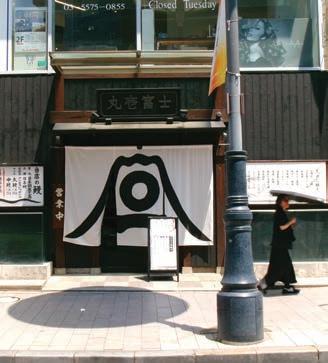
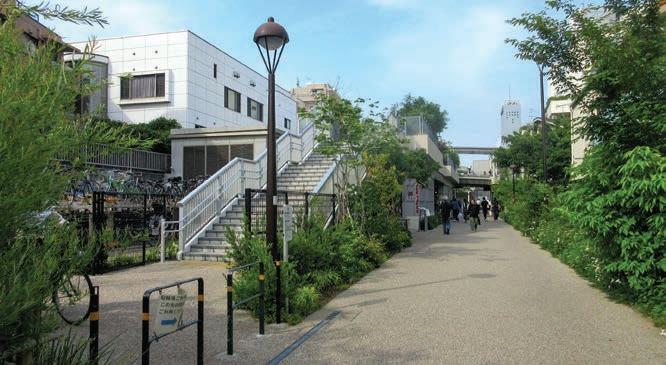

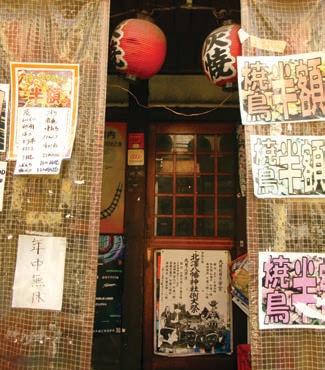

The Edo-Tokyo Architectural Museum covers 7 hectares and brings together buildings dating from the 17th to the 20th century, offering a fascinating glimpse into Tokyo’s past, in order to preserve a record of Japan’s architectural history.

For a more bucolic stroll, the Edo-Tokyo OpenAir Architectural Museum is located in the huge Koganei Park in western Tokyo. As Japan’s architectural history has been almost completely lost due to numerous res, earthquakes, bombings, and urban redevelopment, these 30 authentic historic houses and buildings have been moved from their original locations to be preserved on site. The museum is divided into three areas that can be visited at your leisure, as if you were strolling through a park. You can explore the alleys and enter the buildings to get a feel for the lifestyle of the time, the layout of the rooms and their function, as well as the level of equipment and modernity of the kitchens and bathrooms. The buildings on display include old tea rooms and public baths, old thatched-roof family farms and traditional craftsmen’s workshops, an izakaya bar (the equivalent of our wine bars), a grocery store, inns, and private residences of aristocrats. Examples include the traditional Yoshino family home dating from the late Edo period (16031868), the superb residence of Korekiyo Takahashi, a politician from the late Meiji era (1868-1912)
surrounded by its Japanese garden, the luxurious villa of Hachirouemon Mitsui, which was built in the Nishi-Azabu district of Tokyo in 1952, and the retro Tokiwadai photo studio...
Before tackling the eastern area, lunch at the Kuna restaurant is a must to taste Musashino Udon noodles, in broth or stir-fried with vegetables. In the western area, a refreshing break awaits you at the Musashino Sabo café, located in the Western-style house of Georg de Lalande, a German architect who settled in Shinjuku in 1910.
If you’re traveling in April, Koganei Park is one of the most popular places in Tokyo to enjoy the park’s 1,400 cherry trees in bloom.
www.tatemonoen.jp/english







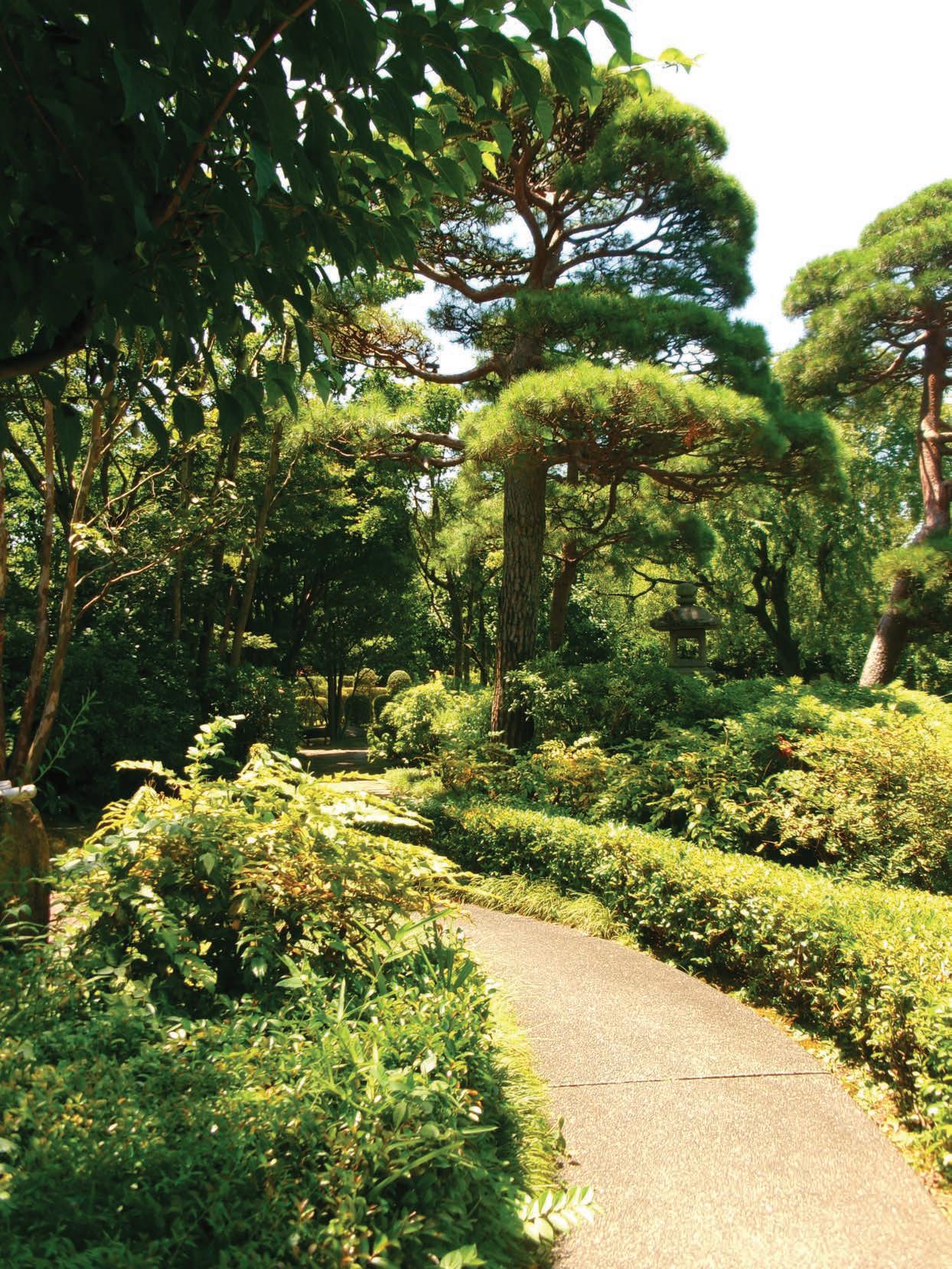
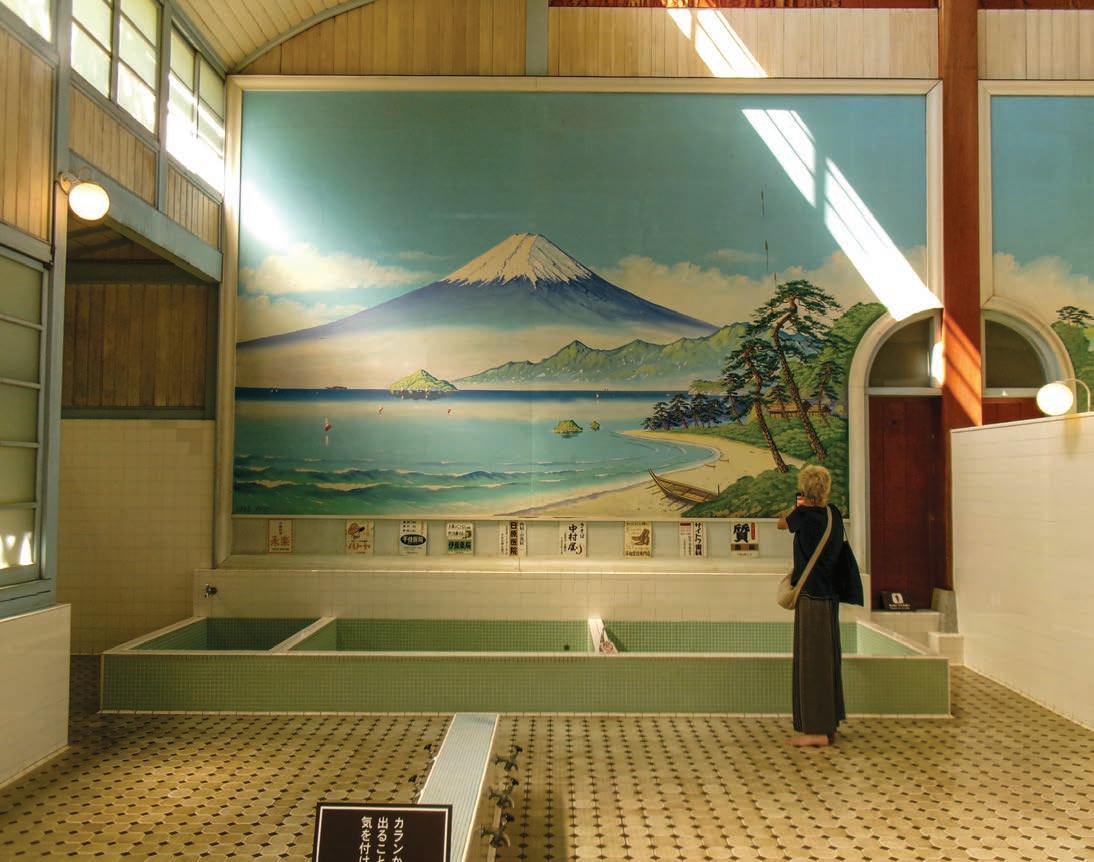
Onsen are natural hot springs in Japan, known for their mineral-rich waters with relaxing and beneficial properties for the body. They come in several forms depending on the establishments that offer them, either outdoor or indoor. Conversely, sento public baths, which use heated non-thermal water, are more commonly
found in cities and hotels. In both cases, it is important to note that you must be completely naked, without a swimsuit, to enter these baths. This is because everyone is supposed
to be on the same level. Similarly, tattoos are prohibited in onsen and sento because they have been associated with the yakuza, the Japanese mafia, in the past. However, you can
cover them with flesh-colored tape, sold online or in some hotels, if your tattoo is no larger than 10-15 centimeters.

To indulge in fresh sushi, head to Toyosu Fish Market, opened in 2018, the world’s largest fish market for wholesale fish, fruit, and vegetables. But you’ll also find excellent Michelinrecommended sushi restaurants, as well as a famous tuna auction that starts around 5 a.m. The Uogashi Yokocho shopping arcade offers a wide variety of local products, souvenirs, and kitchen utensils, such as Japanese knives from the Aritsugu cutlery shop, whose methods are similar to those used in sword making.

TeamLab Planets is much more than just a museum; this experience appeals to all the senses, combining art, technology, and human interaction.
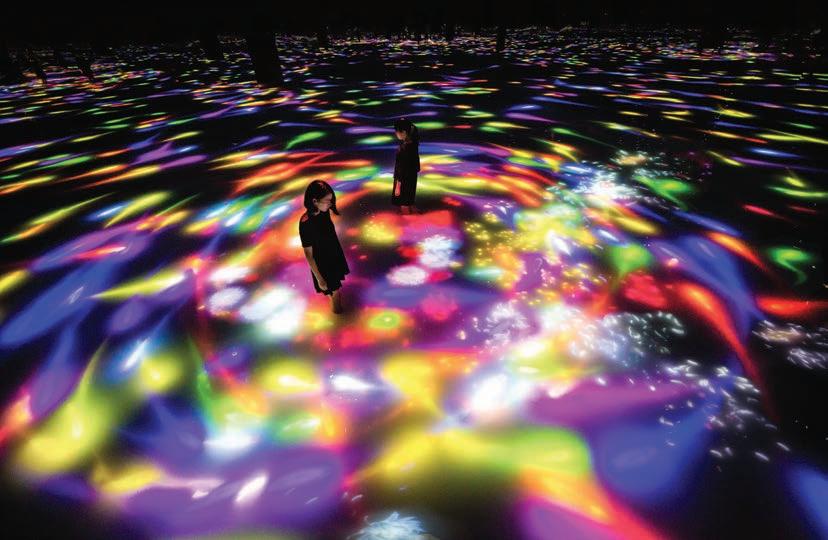
We begin this nal day in the capital by immersing ourselves completely in order to become one with the world. TeamLab Planets appeals to all the senses and combines art, technology, and human interaction. Across three distinct areas, visitors discover a room lled with giant balloons that change color when touched, a crystal universe, a path through a maze of light composed of columns of fairy lights re ected in nitely by a multitude of mirrors, the Soft Black Hole, a space where you walk on soft, unstable surfaces that transform your movements into a playful experience, and the spectacular installation Cascade of Light Particles, a luminous waterfall where particles of light seem to ow and react to the presence of visitors. With Drawing on the Water Surface, water, lights, and sounds combine to create a total immersion experience.You walk barefoot in the water where colorful koi carp swim on the surface. Their movement is in uenced by the presence of people in the water as well as other carp.
When they collide with visitors, they transform into owers and scatter. As the seasons change, the owers that bloom also change.

Asakusa, along the Sumida River, is the heart of the Japanese capital, known as shitamachi in Japanese, where the atmosphere of days gone by still survives.


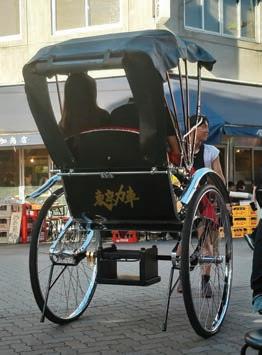
For many centuries, Asakusa was considered Tokyo’s main entertainment district, a meeting place for kabuki theater lovers during the Edo period until the early 1900s, when movie studios began to appear there. Although much of the district was destroyed in World War II air raids, Asakusa remains a lively neighborhood, inviting visitors to stroll through its charming little streets along the Sumida River.
It is also the artisanal heart of Tokyo, home to many interesting museums and workshops, such as Mokuhankan, David Bull’s workshop and shop specializing in woodblock ukiyo-e prints, which o ers introductory sessions.
Asakusa can easily be explored on foot, but you may want to consider a guided tour on a jinrikisha rickshaw to avoid the crowds. This mode of transport was very popular during the Japanese Empire and was mainly used by wealthy Japanese families and geisha. Allow 30 to 60 minutes for the tour.
Senso-ji Temple is one of Japan’s oldest and most revered Buddhist temples, founded in the 7th century and dedicated to the Buddhist goddess of mercy, Kannon.
A long shopping street, Nakamise-dori, connects the majestic Aminarimon Gate and its huge lantern to the main temple building. Around a hundred souvenir shops and food stalls line the street until the evening.
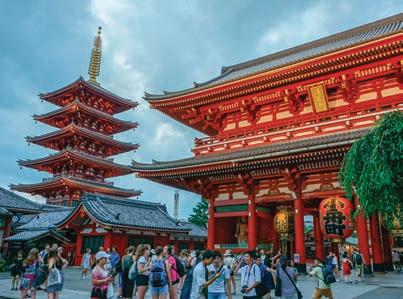

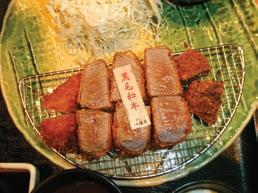
KESAKO : WAGYU OU KOBE
Wagyu signifie « bœuf japonais » donc chaque bœuf de Kobe est un bœuf Wagyu, mais tous les bœufs Wagyu ne sont pas des bœufs de Kobe. Mais c’est de Kobe que proviennent les meilleurs bœufs Wagyu du monde. On vous recommande le gyukatsu, un steak de bœuf wagyu pané, croustillant à l’extérieur et tendre à l’intérieur, coupé en tranches pour révéler le cœur saignant et fondant.

IYOSHI COLA
Iyoshi Cola est le premier cola artisanal au monde à utiliser des plantes médicinales chinoises. Fort d’une recette vieille de 135 ans et de recherches approfondies, le fondateur de la marque, M. Kobayashi, a élaboré une boisson rafraîchissante à la fois saine et délicieuse! Il utilise des noix de kola importées d’Afrique de l’Ouest et plus de 12 épices différentes, dont la cardamome et la noix de muscade. Des agrumes, à la fois doux et acidulés, viennent compléter le tout pour lui conférer une saveur délicate.

The former imperial capital for over ten centuries, Kyoto is home to 2,000 Buddhist temples and shrines, veritable oases in the heart of the modern city, and 34 museums housing 20% of the nation’s treasures.
It offers a striking contrast between the tranquility of its temples, its Zen gardens of stone and raked sand arranged like paintings, and the vitality of its markets and iconic neighborhoods such as Gion, the geisha district with its small light-colored wooden houses and dark shops.
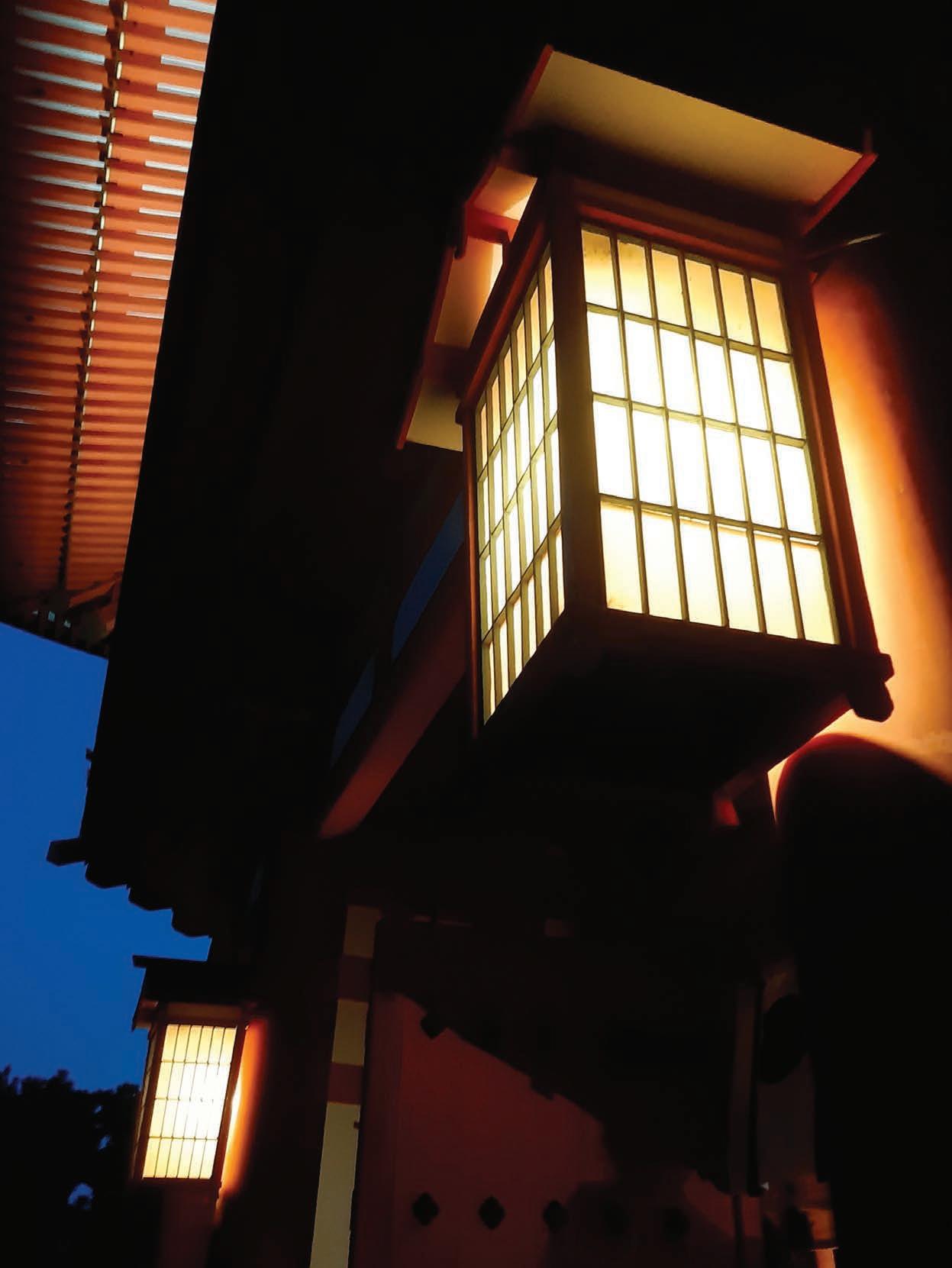
Gion is home to two of Kyoto’s five hanamachi “flower towns,” the geisha districts known as Gion Kobu and Gion Higashi, with their famous teahouses and traditional buildings such as machiya.

This is your chance to spend the day in this intimate historic district. The most iconic street, Hanamikoji, is located in the southern heart of the district: between Shijo, the Gion Kobu Kaburenjo theater, and Kennin-ji temple. Stretching for 1 kilometer, it is home to many artisans, restaurants, and high-end boutiques, all housed in traditional architecture.
Stroll through the hills of Gion to discover Kodai-ji Temple, built in the 17th century by the bereaved wife of Toyotomi Hideyoshi, one of the uni ers of Japan, in honor of her husband. Surrounded by vast gardens dotted with tea pavilions, Kodai-ji should be on your list of temples to visit. It is ideally located near some of Gion’s most beautiful streets, including Ishibei-koji Alley and Ninen-zaka and Sannen-zaka Streets.
The tour begins with a large, shaded stone staircase that leads to the large central building, its large Zen garden, and white gravel. The temple gardens are delightful, with ponds lined with maple trees, covered walkways designed to represent the curve of a dragon’s back, a bamboo grove and dry
landscape gardens, and tea houses, one of which was designed by the famous tea master Sen no Rikyu (1522-1591).
There are many opportunities to explore Kodaiji in the evening. Special nighttime illuminations are o ered in spring, summer, and fall, and walking through the bamboo grove at night is a romantic and magical experience. There you will nd a statue of Kannon, the Buddhist goddess of compassion. In the mausoleum where Hideyoshi and his wife are buried, you can see splendid examples of maki-e, a technique of decorating lacquerware by delicately sprinkling it with gold.
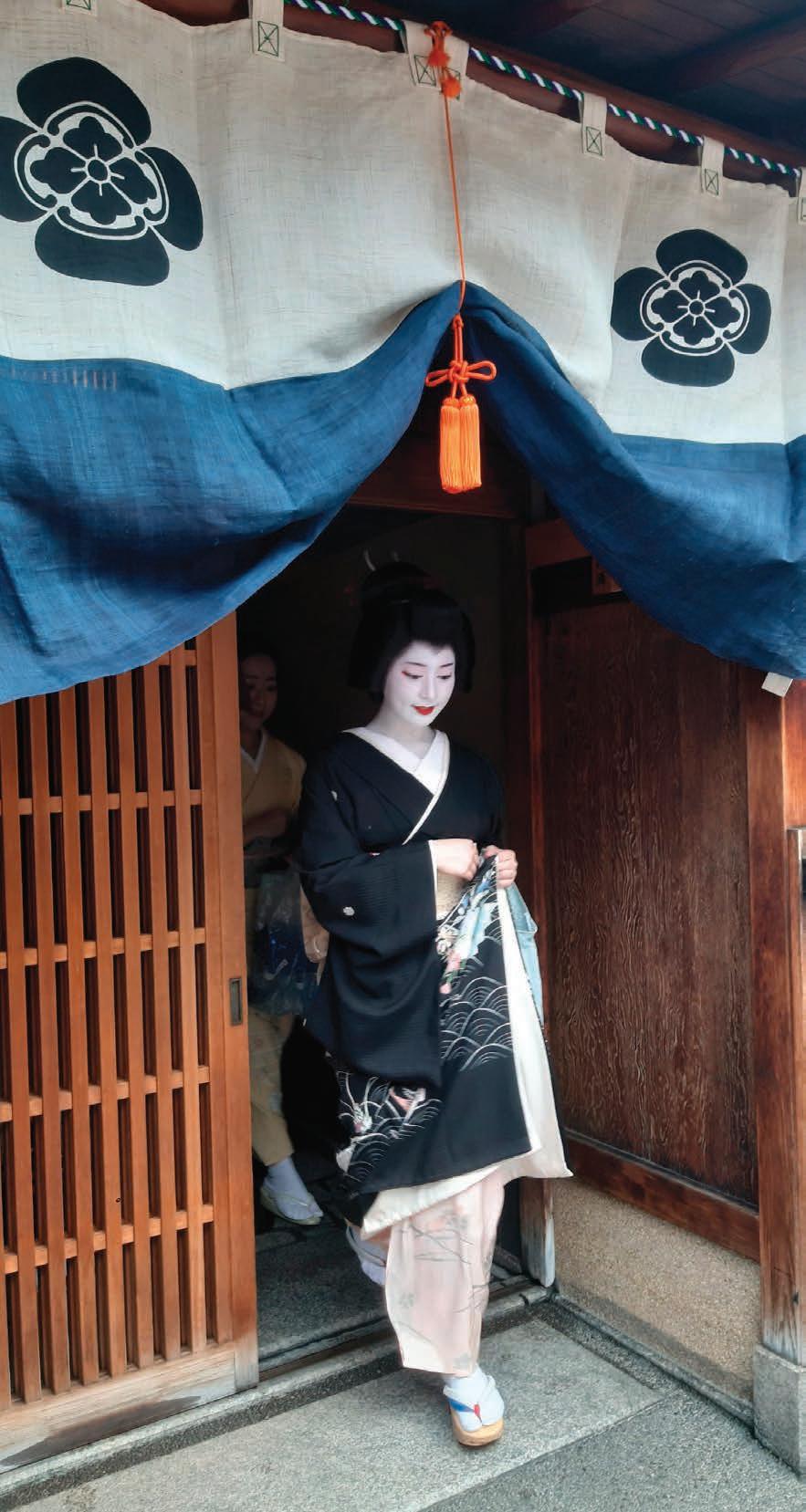
GEISHAS GALORE!
Every year, August 1 is marked by the Hassaku Festival in Gion, when geisha (geiko in Japanese) and maiko (apprentice geisha) visit tea houses to express their gratitude, usually dressed in their formal black kimonos. This is a unique opportunity to play paparazzi and sneak a peek at geisha in a traditional setting, although it is not a public festival with parades or shows open to the public.
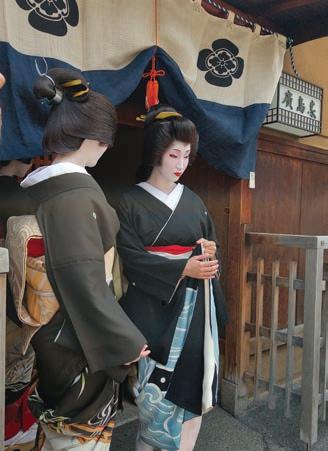



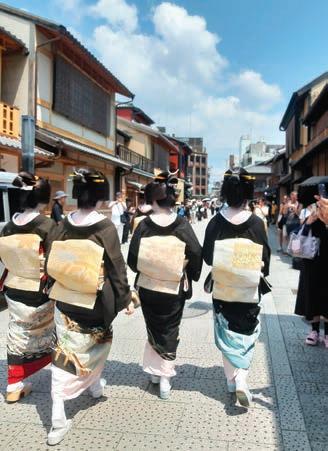
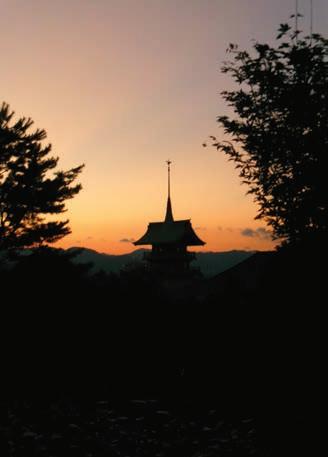


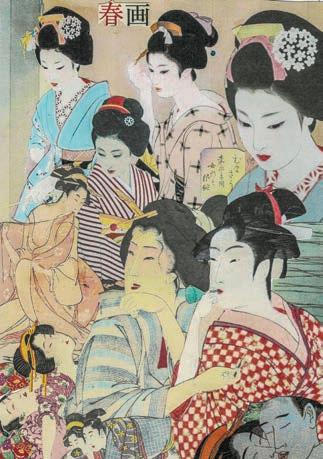

Half an hour from Kyoto by train, lies the capital of green tea, cultivated in the region since the 12th century, is a very quiet little country town, crossed by the Ujigawa River.

Uji matcha tea is considered by the Japanese to be the best in the world. Here, it comes in all forms: tea, latte, Italian ice cream, parfait, éclair, Kit-Kat, curry, and even soba noodles. Uji’s pedestrian street leads to Byodo-in Temple, so matcha lovers will be well catered for.
However, I recommend Nakamura Tokishi Byodoin Branch, in the beautifully restored historic ryokan, to enjoy a matcha parfait overlooking the river.
A few hundred meters away, along the river, Byodo-in Temple is a magni cent complex of red buildings centered on a small island where the Phoenix Pavilion stands: the Hôô dô, a UNESCO World Heritage Site and Japanese national treasure. Since the Amida sect took over By ōd ō-in, the complex has been dedicated to recreating the Buddhist Paradise of the Pure Land. For over 1,000 years, visitors have been drawn to the serenity of this architectural gem.
In spring, cherry blossoms adorn the garden with their delicate colors at the beginning of the season, then give way to wisteria from mid-April onwards. The Toka tea room allows you to fully enjoy this enchanting setting while sipping delicious green tea facing the garden.
Leave Uji around 4 p.m. to admire the sunset at Fushimi Inari Taisha, the Shinto shrine with thousands of vermilion red torii gates.The path formed by these thousands of traditional Japanese gates leads to the top of the hill and o ers a breathtaking view at dusk.There are two routes to the summit, and along the way you will encounter hundreds of mischievous foxes lining the small temples. These are the guardians of Inari, the goddess of fertility, rice, sake, and tea in Shinto mythology.

Is there still a need to introduce matcha tea?
This Japanese green tea, ground into a fine green powder full of aroma and energy, has already won over thousands of Americans.
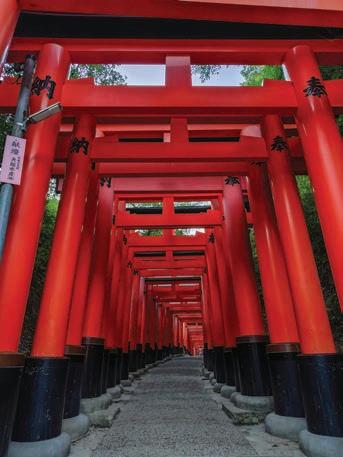
In Japan, it has been
consumed as a beverage for centuries, in the purest tradition and following a very formal ritual. Today, it can be found everywhere, much to our delight.
Tea was introduced to Japan around
the 8th century by Buddhist monks from China. Initially consumed by the clergy for its stimulating properties during long meditations, it was quickly adopted by the powerful and then by the common people.
Japanese tea then diverged from the Chinese model to develop its own unique taste with a delicious bitterness. Unlike black tea, whose leaves are harvested when ripe, dried naturally, and oxidized, to obtain
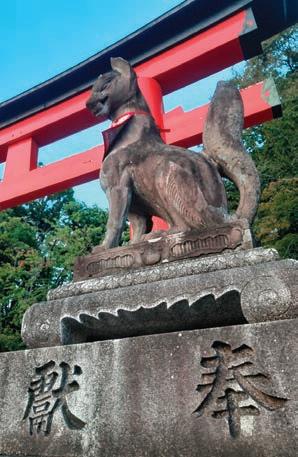
green tea (sencha in Japanese), the leaves must be steamed for 30 seconds after harvesting to stop oxidation and thus preserve their beautiful green color.

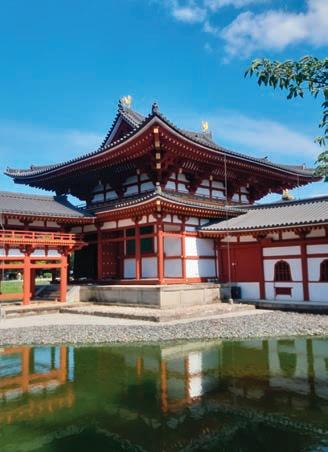
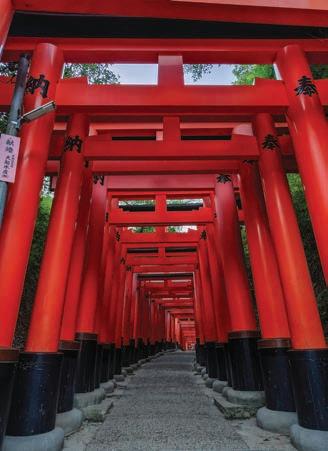
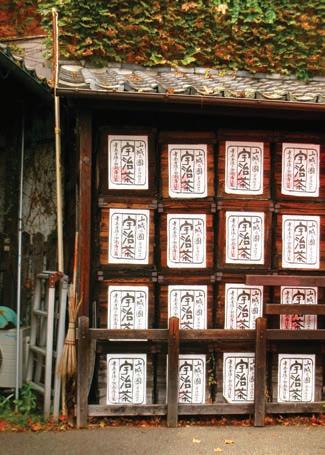
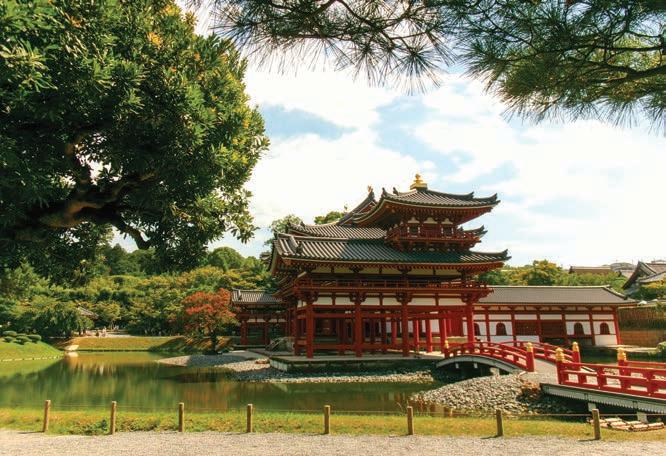

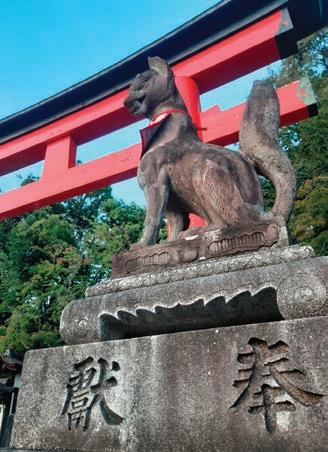
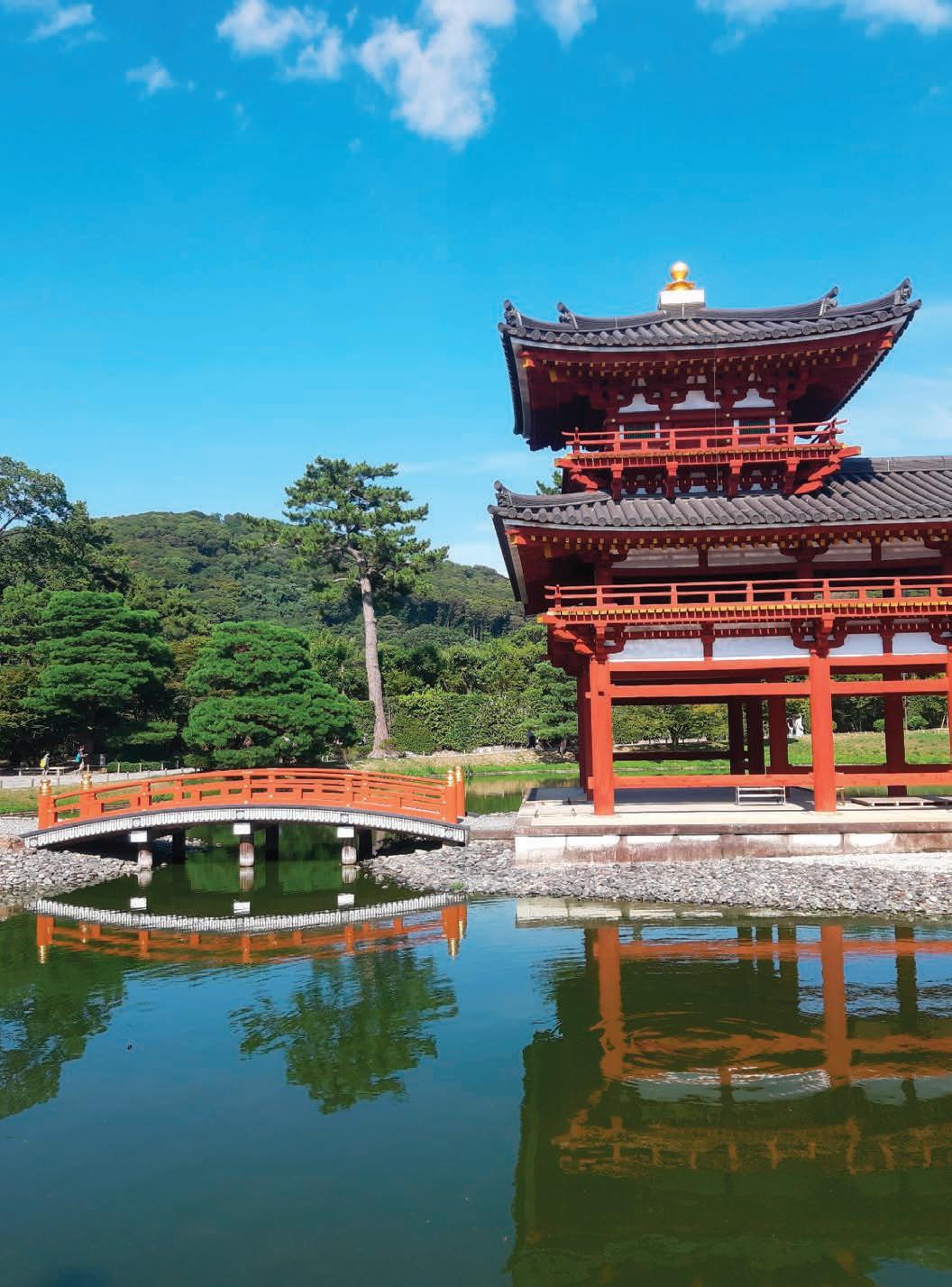
Located west of Kyoto, Arashiyama is a refreshing little piece of nature on the banks of the Hozu River, perfect for exploring at your leisure during a stay in Kyoto.
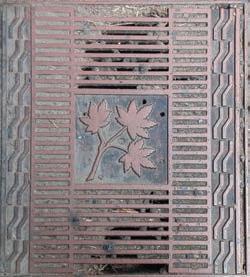
BETWEEN BAMBOOS ET KIMONOS
In the past, emperors and members of the nobility ocked to Arashiyama to celebrate hanami, a traditional Japanese custom of appreciating the beauty of owers, mainly cherry blossoms.
Start the day with the famous Sagano Bamboo Forest, a bamboo grove with several paths winding between the giant green plants, dotted with small temples and shrines. When the sun’s rays shine through this dense forest, magic happens. It is recommended to arrive very early in the morning, even though the bamboo grove is open 24 hours a day.
A little further on is Tenryu-ji Temple, “the temple of the heavenly dragon,” with its sublime park, dry Zen garden, and pond opening onto the pine forest.
A stroll through the narrow streets of Arashiyama with its typical houses will give you plenty of choices for lunch and shopping.
Continue your visit on the north bank, which is much less crowded, with Adashino Nenbutsuji, built on an ancient cemetery, its 8,000 Buddhist statues erected in honor of the deceased, and its
small, completely deserted bamboo forest crossed by a staircase. A little further down the street is Otagi Nenbutsuji Temple. It houses just over a thousand stone statues of rakan, Buddha’s greatest disciples. Each one is unique.
At the end of the day, head to the Arashiyama Randen tram station, on the central platform, for a free ashiyu foot bath to soak your tired feet after a day of walking and sightseeing.
While the iconic bamboo forest is undoubtedly the main attraction for visitors, there is another lesser-known “forest,” the Kimono Forest, which o ers a unique and enchanting perspective on traditional Japanese textiles and crafts, especially in the evening.
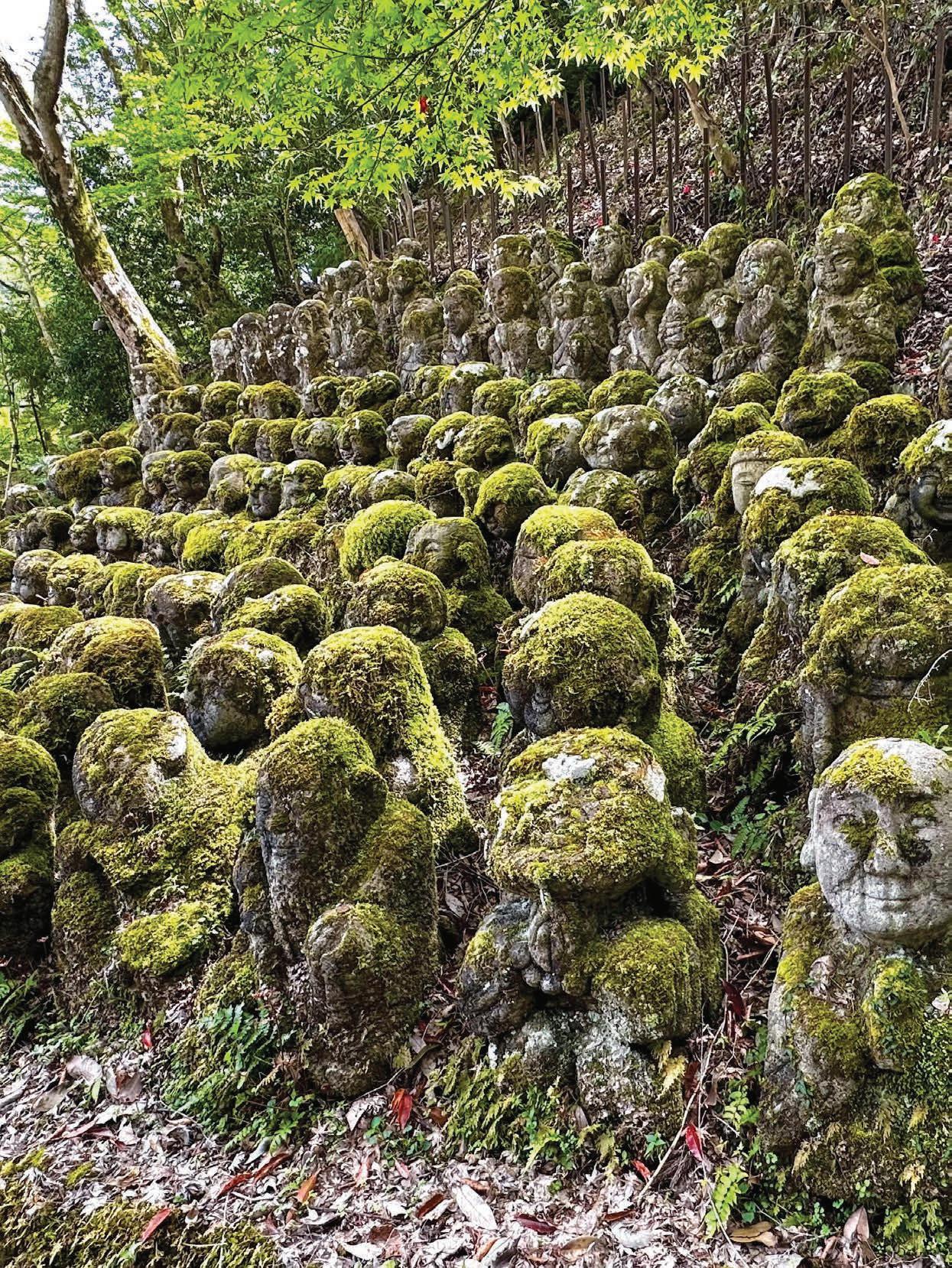
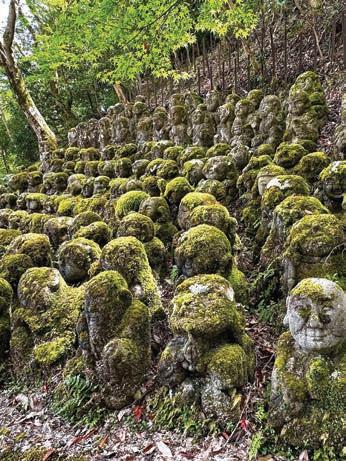
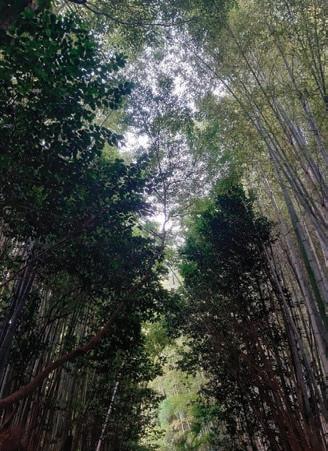
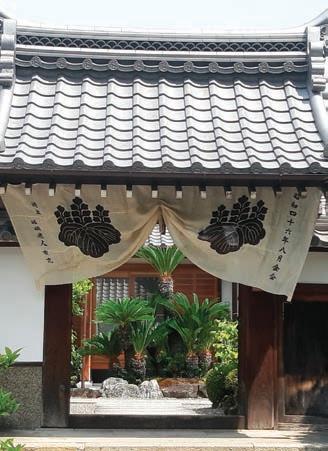


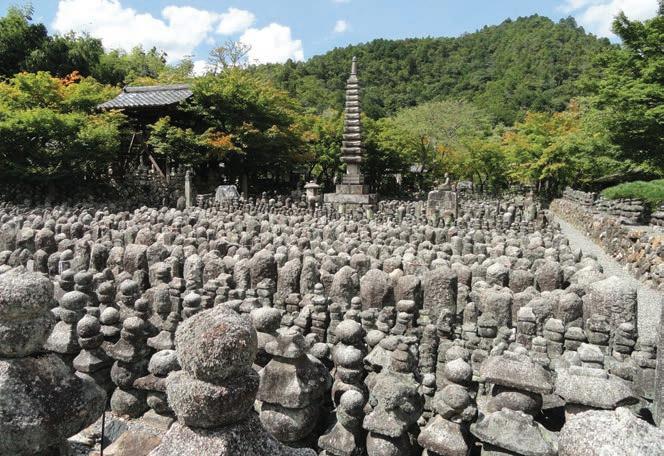



The idea for the Kimono Forest was born out of a desire to transform Arashiyama Station into a nighttime attraction that would encourage visitors to explore the area even after dark.
Hiroyuki Suzuki, who oversaw the station’s renovation, wanted to create a space that would showcase the beauty and elegance of traditional Japanese textiles while offering travelers a unique and memorable experience. While the iconic bamboo forest is undoubtedly the main attraction for visitors, there is another lesser-known “forest,” the Kimono Forest, which offers a unique and enchanting perspective on traditional Japanese textiles and crafts. This stunning art installation features hundreds of colorful 2-meter-high pillars wrapped in traditional kimono fabrics, creating a mesmerizing and enchanting atmosphere.
The installation was designed by renowned interior designer Yasumichi Morita, who carefully selected 32 different traditional Kyo-yuzen patterns, a style of fabric dyeing that originated in Kyoto during the Edo period. Although the kimono forest is open 24 hours a day, it is at night that
the magic happens, when LED lights illuminate the pillars from within, making the colors richer and more vibrant. The largest concentration is on the south side. The illumination turns off at 9 p.m.
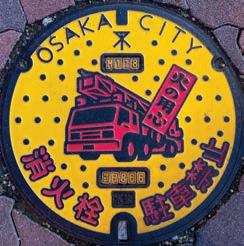
Osaka, Tokyo’s rebellious little sister, nicknamed “the kitchen of Japan,” is also renowned for its lively nightlife, which contrasts with the more relaxed atmosphere of Kyoto. Japan’s third-largest city, it has nevertheless been chosen to host the 2025 World Expo.
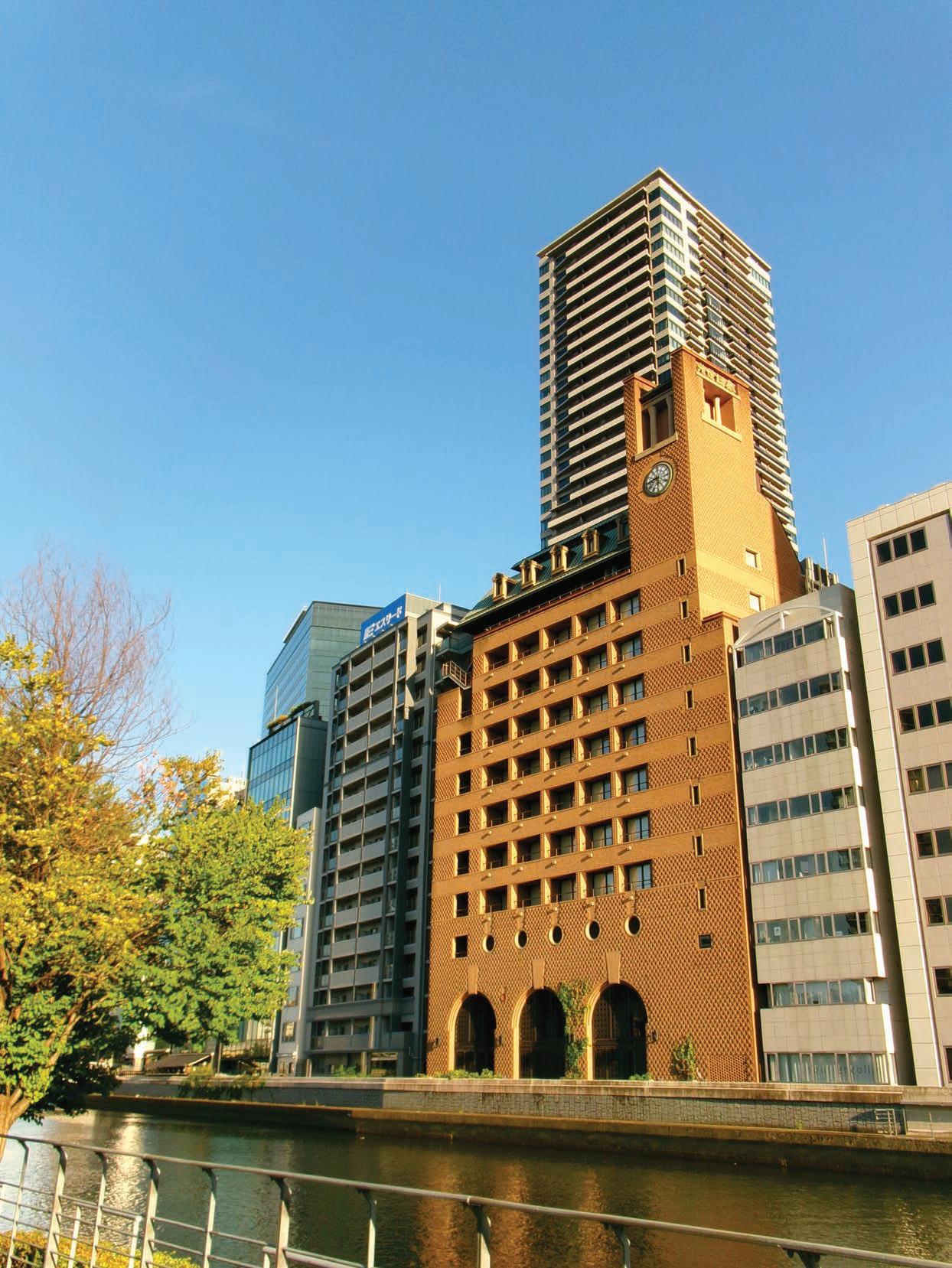
Its long history spanning 1,400 years makes Horyu-ji the oldest Buddhist temple in Japan, housing the oldest wooden structures still standing in the world.

Horyuji Temple is located in the town of Ikaruga between Osaka and Nara. It is best to allow at least 3 hours to visit it. The rst site to be listed as a UNESCO World Heritage Site, the vast grounds of Horyuji Temple cover 18 hectares and are divided into two main areas.
Entering the temple through the large south gate, visitors will discover the western enclosure centered on the ve-story pagoda and the main hall, as well as other important structures such as the central gate, a conference hall, and a covered corridor connecting the buildings.These masterpieces of wooden architecture re ect the incredible skill and precision of ancient Japanese carpenters, using techniques so sophisticated that they have withstood centuries of weather and seismic activity.
A short walk to the east leads to the eastern enclosure, which is centered around the octagonal Hall of Dreams.This hall, dedicated to Prince Shotoku, was built on the former site of his palace to help appease his spirit.
Between the two enclosures is the temple’s treasure gallery, which houses an incredible collection of ancient Buddhist art, many of which are designated National Treasures.Its history is fascinating and steeped in legend. Horyu-ji was
founded by Prince Shotoku in 607 to ful ll his father, Emperor Yomei’s, vow to build a temple and a statue of Buddha as a prayer for recovery from illness. Although the emperor died before the temple was completed, Empress Suiko and Prince Shotoku ful lled his last wish. Although Horyu-ji was devastated by re in 670, the temple complex was quickly rebuilt and completed in the early 8th century. Prince Shotoku is a revered gure in Japanese history, known for his wisdom and progressive reforms that helped shape early Japanese society. Legendary accounts attribute many miracles and incredible skills to him, such as being able to speak from birth or hold audiences with ten men simultaneously. However, he is credited with creating Japan’s rst constitution, centralizing the government, and sending o cial embassies to China to strengthen cultural ties and the exchange of knowledge.
Next, return to the city center and Nakanoshima Island, wedged between the Dojima and Tosabori rivers at the foot of a myriad of skyscrapers. Nakanoshima Kôen, Osaka’s oasis, was the city’s rst public park in 1891, famous for its rose garden with 300 di erent species, inviting visitors to take a 3-kilometer stroll that appeals to all the senses.



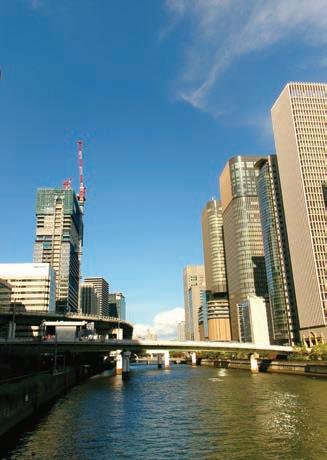
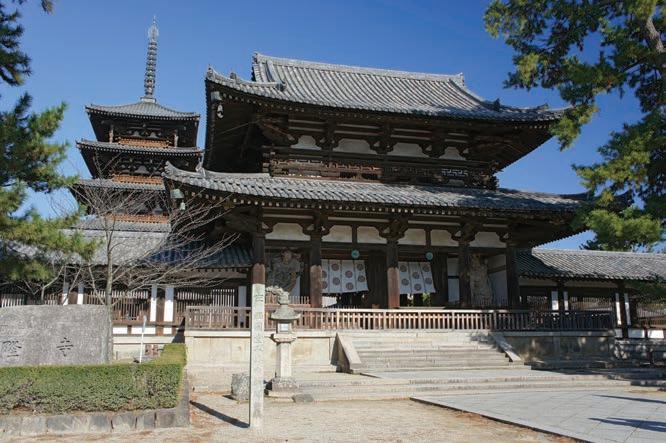
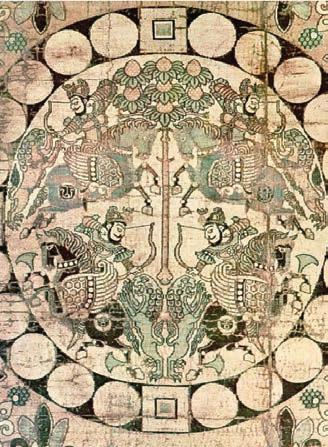

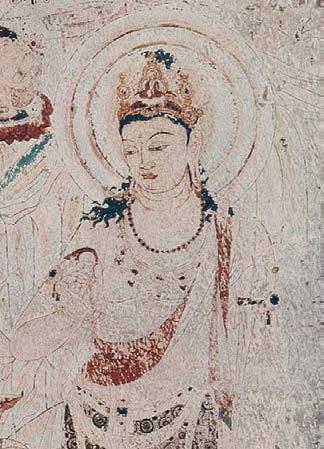
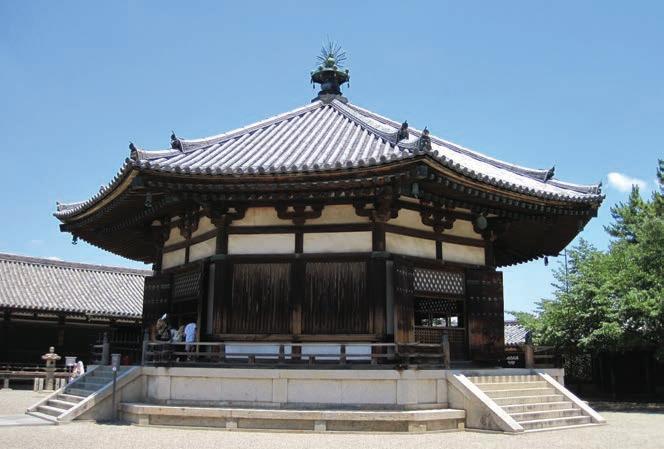
Nara is a top destination in the region and a delight for the eyes. There is so much to see that you would need to stay at least three days to enjoy all of its cultural heritage, parks, and forests.
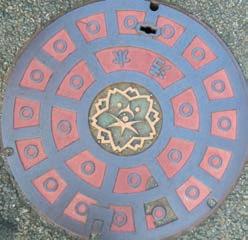
Life ows peacefully here despite the in ux of tourists at certain temples, but by alternating between temples and gardens, this day will remain memorable.
One of the main attractions is the Sika deer roaming freely in Nara’s large park, in the city, or in the middle of the road. Designated as national treasures, their population reached a historic high of 1,465 in 2025, including 315 males, 816 females, and 334 fawns.
We start with the 7th-century Kôfuku-ji temple and its charming 50-meter-high pagoda. Closely linked to the powerful Fujiwara clan, it was once a sprawling complex of more than 150 buildings. Today, Kofukuji remains a major tourist attraction as a UNESCO World Heritage Site, renowned for its priceless collection of Buddhist art on display in the National Treasure Museum.For a traditional tatami lunch, we recommend Yanagi Chaya. Founded in the early Meiji era, this historic establishment is renowned for its menus and pastries that re ect the restaurant’s rich heritage.
You can walk to Isuien Garden on the way to Tôdai-ji Temple. Here, time stands still and can be discovered along a path combining water, wood, and stone, following small streams. This secret enclave of greenery combines two gardens of di erent styles. One dates from the Edo period, with landscaping around its pond symbolizing longevity,
and the other from the Meiji era, emphasizing perspective, with the horizon of Mount Wakakusa and Mount Kasuga as a backdrop. A bustling teahouse o ers a moment of tranquility in this setting.
The history of Todai-ji dates back to the 8th century, a pivotal period for Japan. At the main entrance to the temple stands a monumental gate (nandaimon) guarded by two 8-meter wooden statues. At the heart of the Daibutsu-den stands the raison d’être of Todai-ji: the Great Buddha of Nara, a colossal 15-meter bronze statue.
Treat yourself to a rickshaw ride to Sagi Pond (Sagi-ike), crossing a part of Nara Park without tourists, where the deer are much more peaceful. This place is magni cent with its hexagonal wooden pavilion, Ukimedo, which seems to oat above the pond. Its re ection on the water’s surface gives it a magical appeal.
Then get dropped o in the traditional Naramachi district, characterized by its narrow streets and machiya, old wooden houses that have retained their old-world charm. Some are open to the public. This district is full of old residences, small museums, craft shops, stalls, and restaurants.
End the day at Sarusawa Pond, which is especially charming after dark, when the lights lining its banks illuminate the trees that have once again become masters of the place.
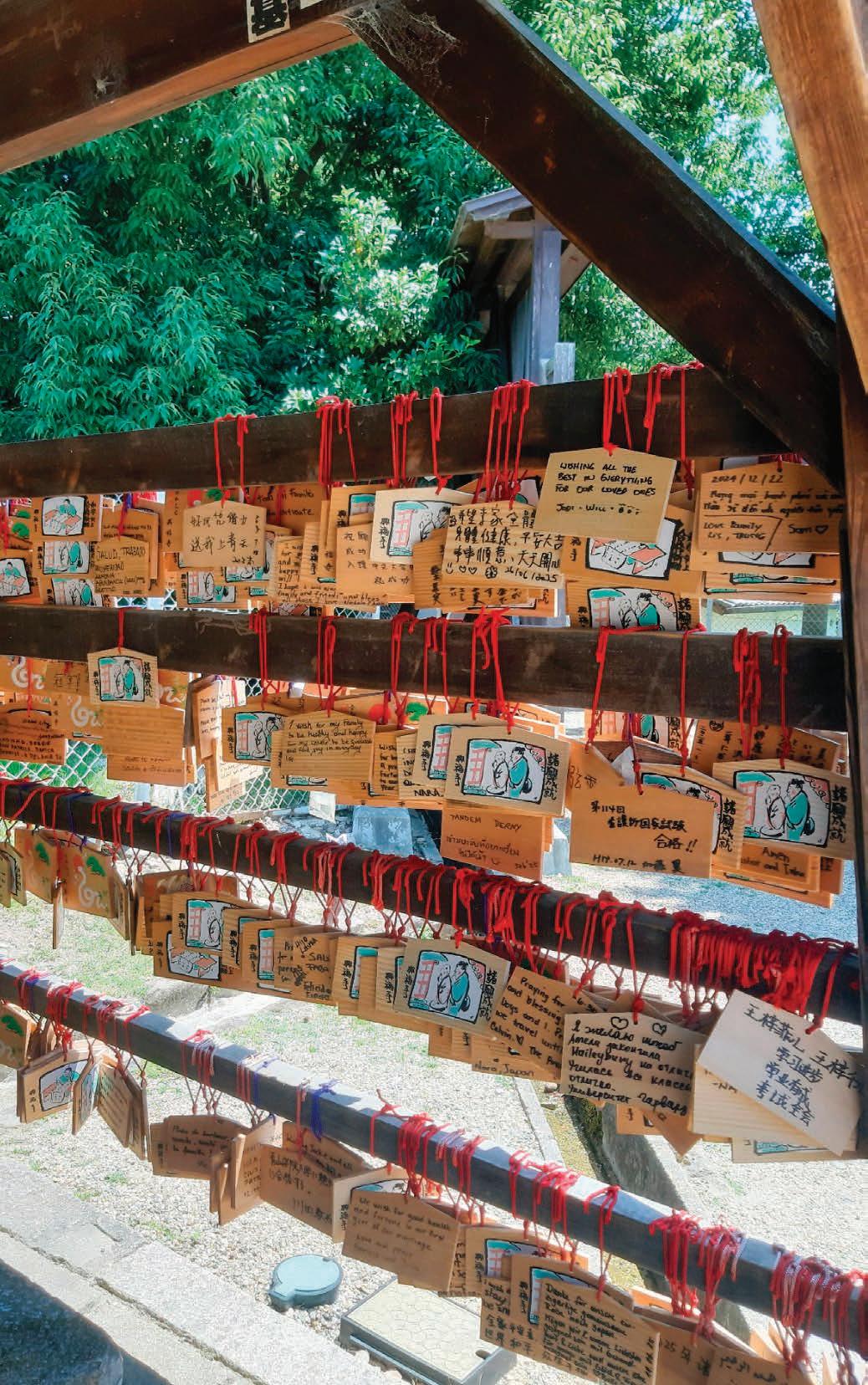
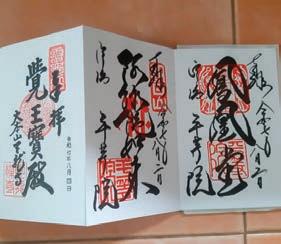
SACRED COLLECTIBLE STAMPS
The goshuinchô, or “honorable red seal book,” is much more than just a collection notebook, as it also has protective properties! This accordionfolded book with blank pages allows you to collect the official “goshuin” seals from the temples or shrines you visit. These stamps consist of a red seal and calligraphy unique to each location, written in India ink by a monk or temple employee, indicating the name of the place, the date of the visit, and a small blessing for good luck. These accordionstyle books can be purchased at temple entrances or in Japanese stationery stores. Remember to keep it in your purse at all times.
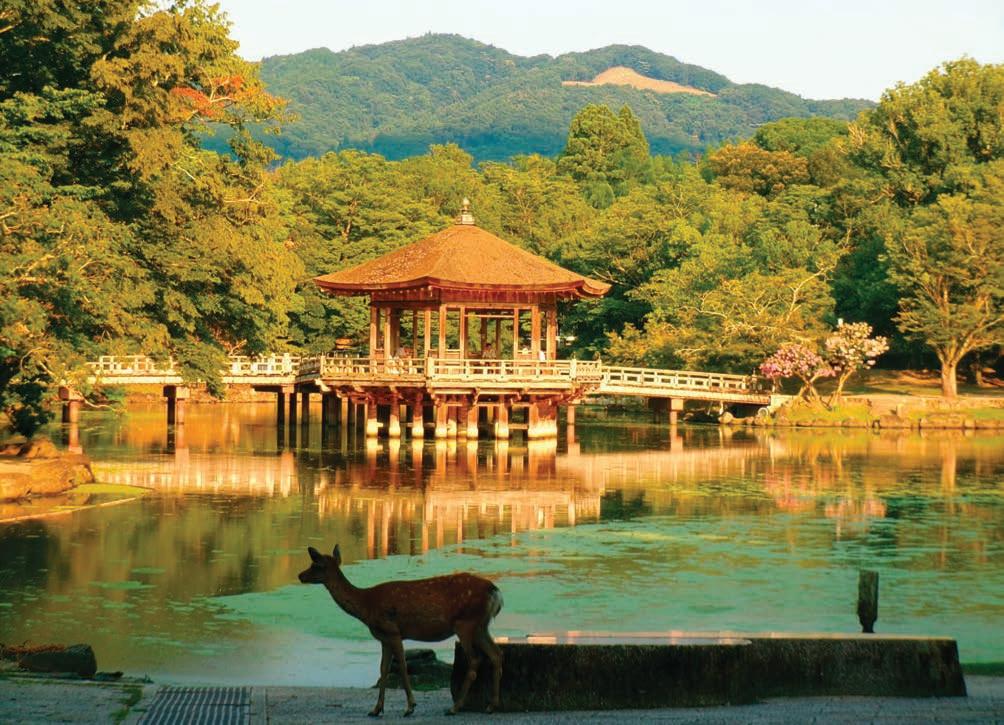
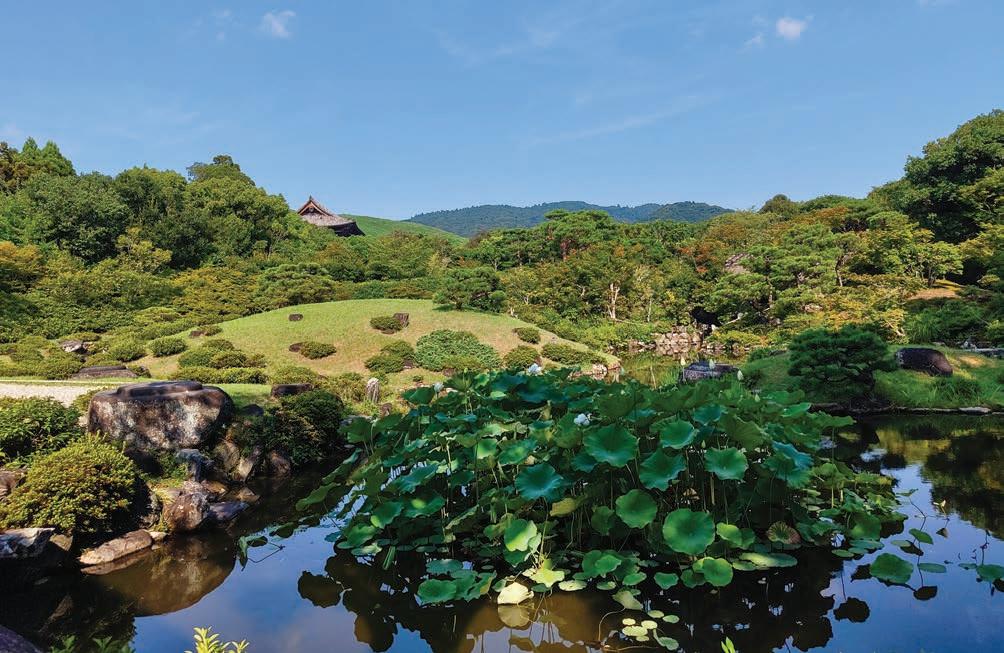
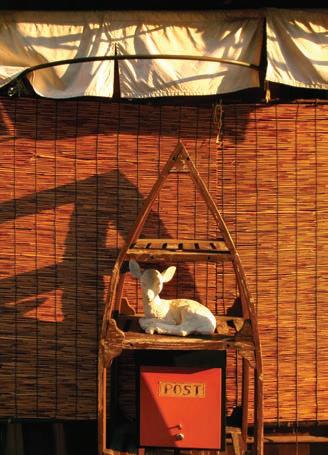

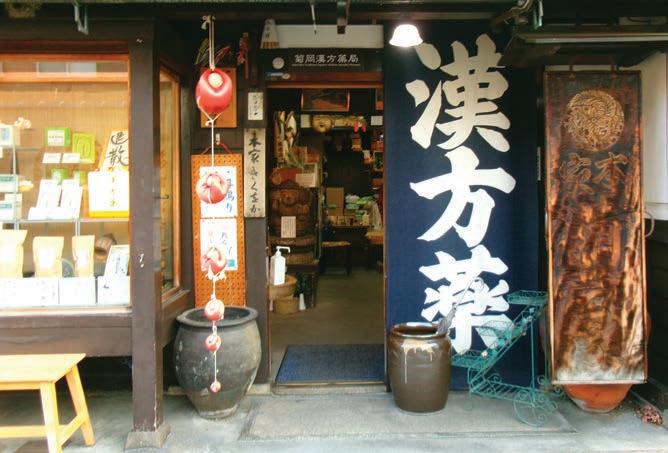
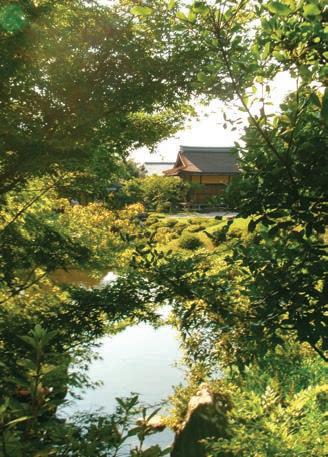


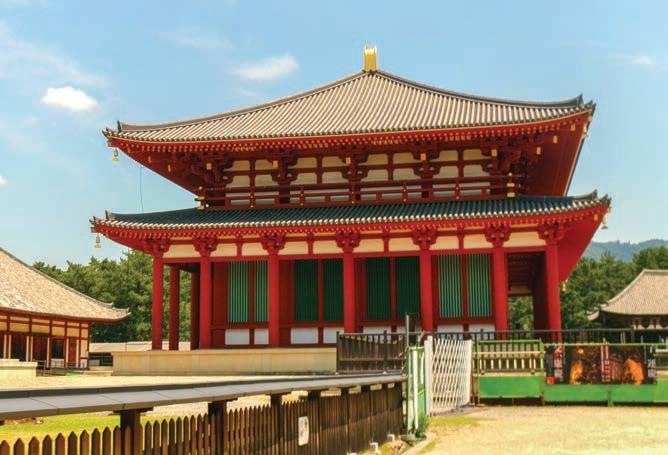
The Osaka World Expo welcomed more than 27 million visitors over six months, who came to admire the pavilions of 160 countries and regions in an architectural park that is now set to be dismantled.

DESIGNING THE SOCIETY OF THE FUTURE, IMAGINING OUR LIFE TOMORROW
Expo 2025 was held on the arti cial island of Yumeshima, with an imposing wooden “Grand Ring” measuring 2 km in circumference and 20 m in height surrounding the pavilions as its emblem.
Designed by contemporary Japanese architect Sou Fujimoto, it symbolized the connection and communion of the world’s cultures under one sky and also served as a panoramic walkway for visitors to stroll around the exhibition site.
Countries redoubled their ingenuity and technological prowess to showcase their architecture, technology, and expertise around the main theme: “Designing the society of the future, imagining our life tomorrow.”
Among the three sub-themes, “Saving Lives” focused on health, well-being, and solutions to global challenges, notably with the Pasona Natureverse pavilion, which presented a beating arti cial heart grown from stem cells. Belgium’s magni cent pavilion was built around the themes of water and cells, as well as vaccines, re ecting its position as the world’s leading exporter. The pavilion of Thailand, entitled “Immunity,” understood not only in the biological sense but also as a holistic concept of resilience, encompas-
sing physical health, mental well-being, and social harmony, presented its high-quality, custom-made silicone prosthetic limbs.
“Strengthening Lives” explored innovation, AI ethics, and urban mobility.
One of the star attractions was the gigantic Future City pavilion, which addressed three essential questions: How can we overcome the various environmental and social problems we face? How can we solve the problems associated with our lifestyle? And what kind of happiness can we create?
The City of the Future, imagined by Society 5.0 with 12 co-organizers, o ered amazing immersive programs that leveraged their knowledge and ideas. Visitors were invited to vote for solutions on our urban living arrangements, our ideal type of food, our future means of transportation, and the place that our work would take in our new lifestyle.
“Connecting Lives” emphasized sustainability and intercultural exchange.
The Japan Pavilion featured a Martian meteorite because it represents a connection to life on a cosmic scale and the theme of the expo: designing a future society for our lives.
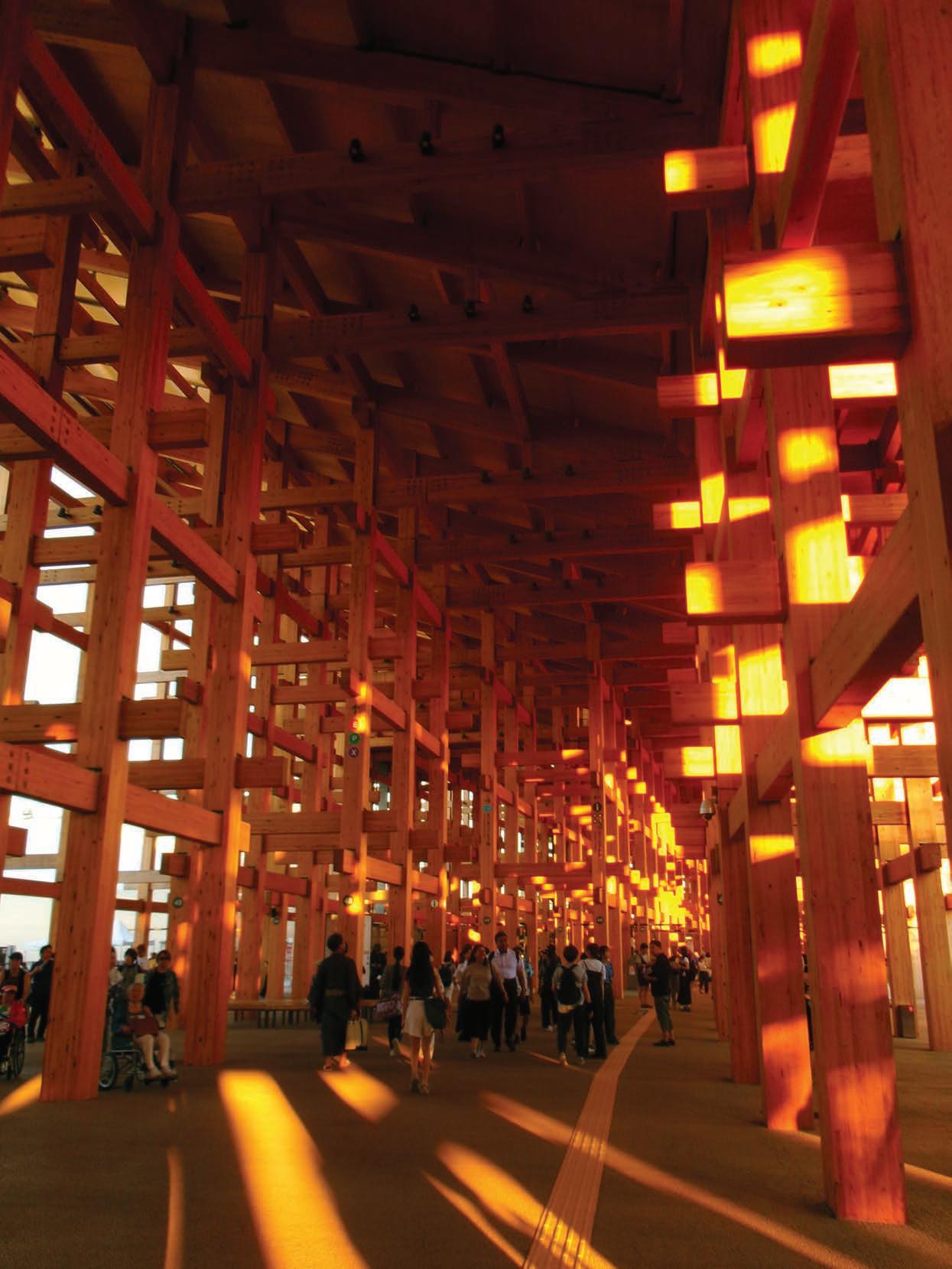
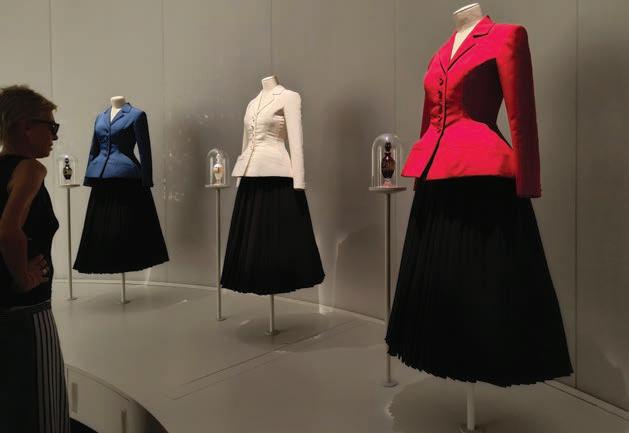

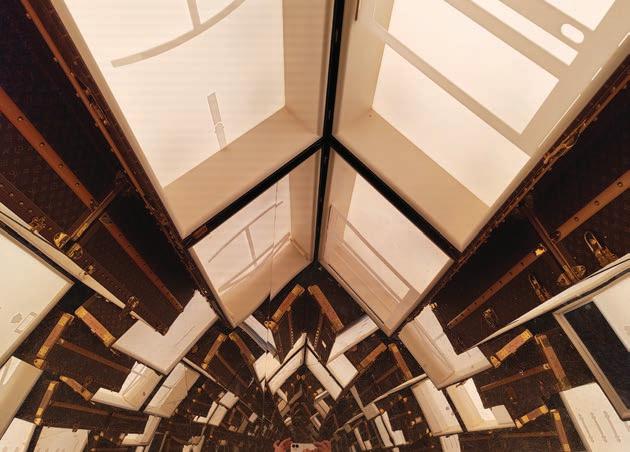
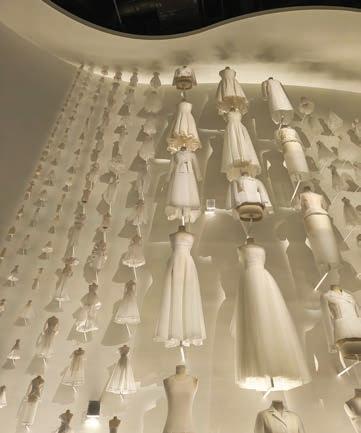
In keeping with the theme of “Ode to Love,” the French pavilion chose to showcase its expertise in arts and crafts, displaying sculptures by Rodin, an Aubusson tapestry inspired by the animated lm Princess Mononoke, and a gargoyle from Notre-Dame de Paris. At the heart of the permanent exhibition, Louis Vuitton and Dior were present with two exceptional installations. Dior unveiled its famous Bar suit in three colors (blue, white, and red) with more than 400 iconic white canvases revealed at the heart of a monumental installation, alongside perfume bottles reinterpreted in 3D printing.
Louis Vuitton paid tribute to the House’s expertise with a library of 85 trunks, accompanied by a musical creation by IRCAM featuring the sounds of the Asnières workshop. A second, dreamlike room featured an immersive installation in which a “trunk geode” by Shohei Shigematsu-OMA came to life at the heart of a video work by Japanese artist Daito Manabe.
The French pavilion welcomed 4.6 million visitors with its white-draped cubic structure and winding staircase leading to a rooftop garden, designed by Coldefy & Associés and Carlo Ratti Associati. It cost €58 million, of which €42.5 million was financed by the French government and co- nanced by several partners, including luxury goods giant LVMH,Vins d’Alsace, Ninapharm, and insurer Axa.
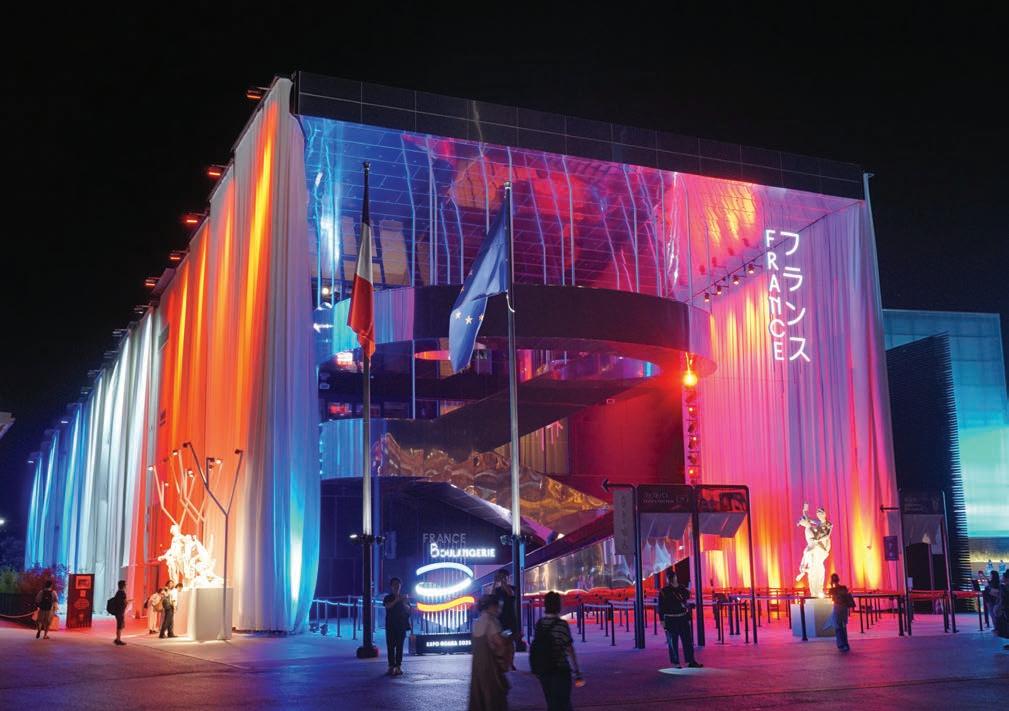
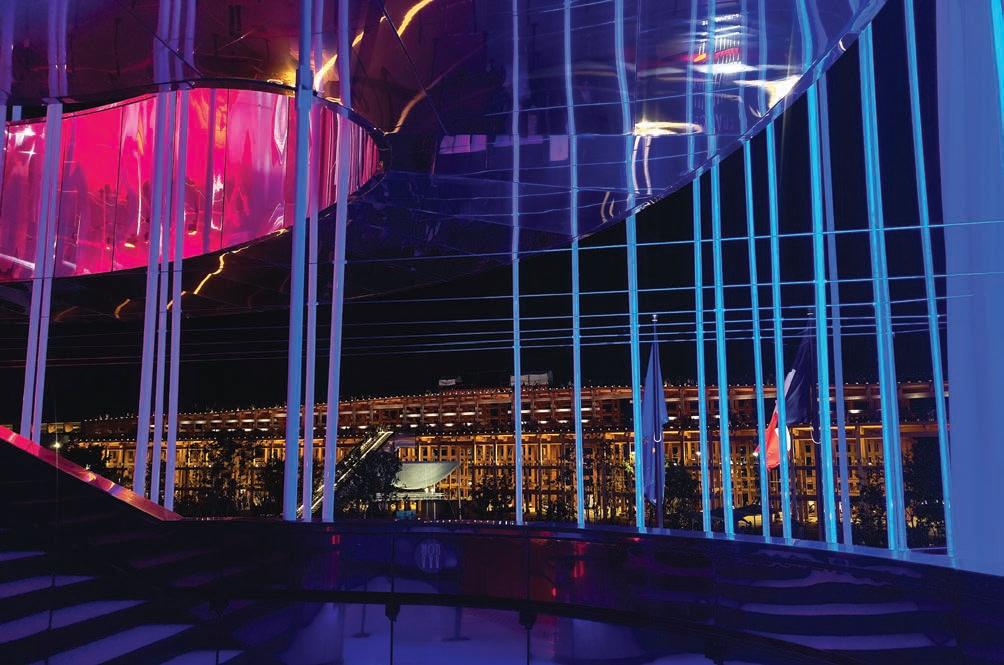

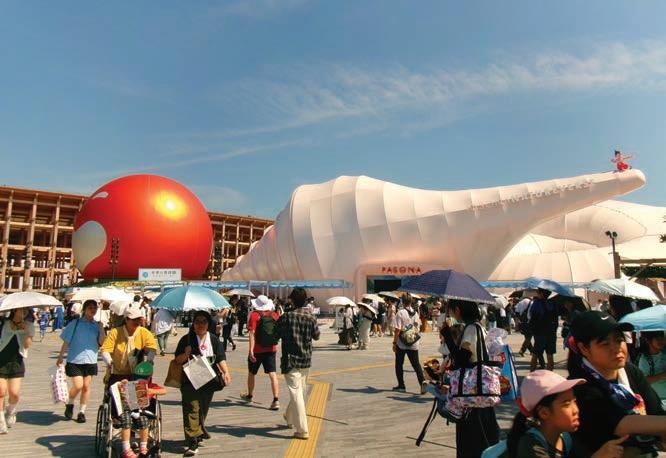


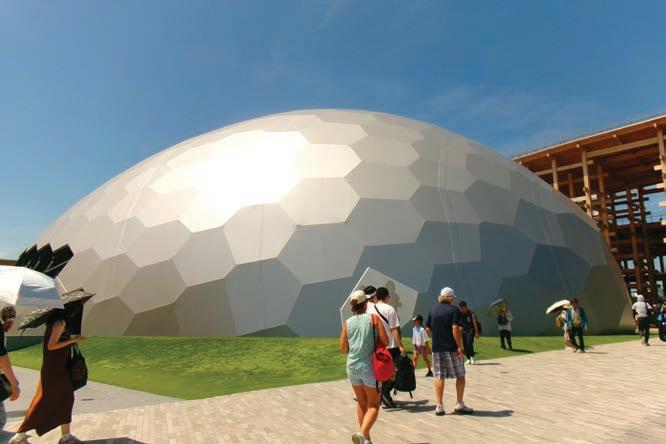
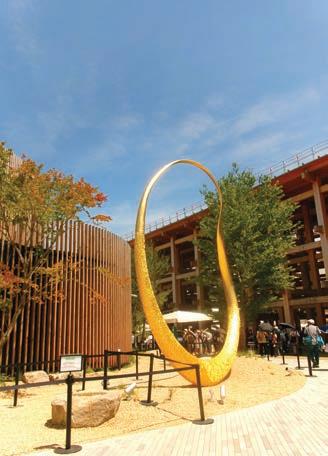
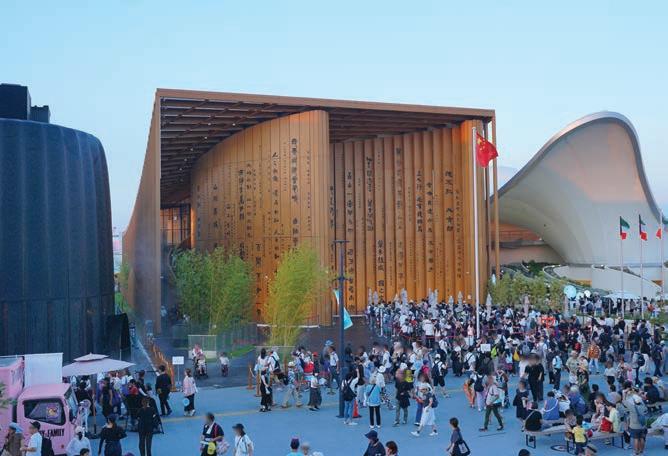

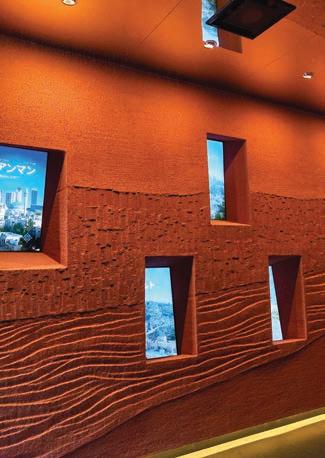

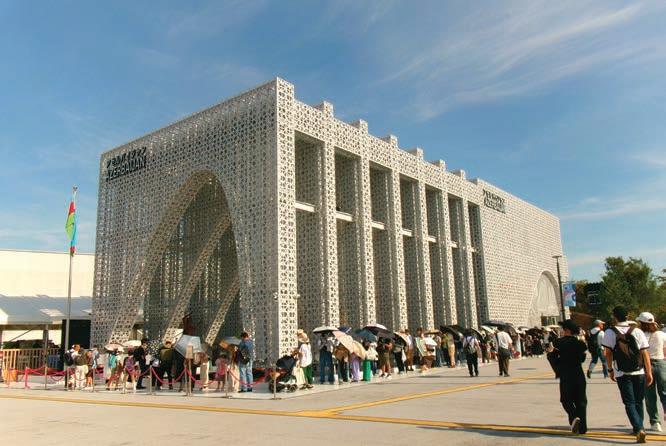

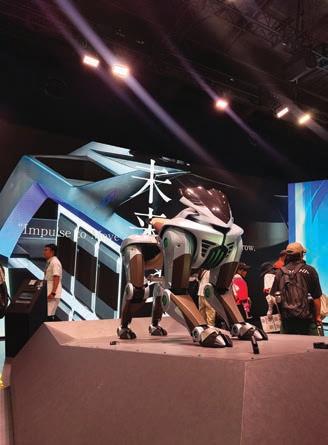

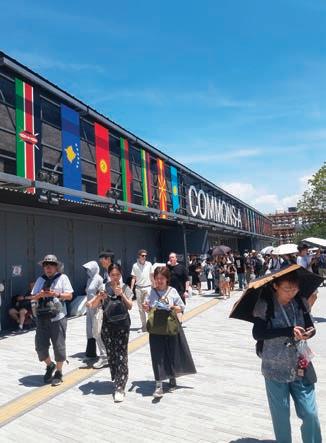


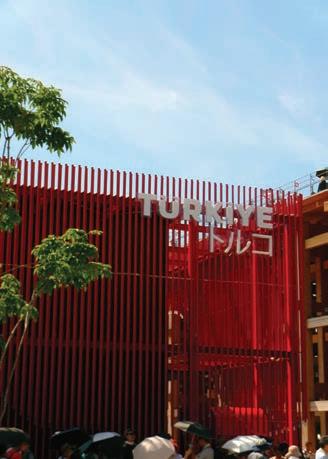
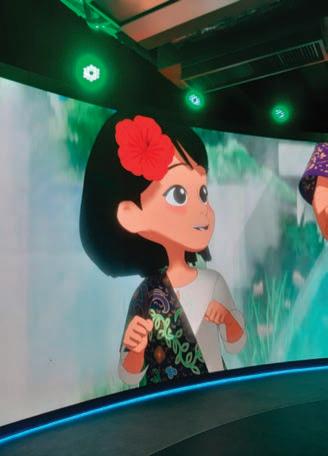
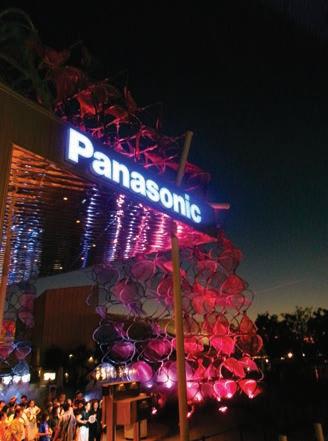

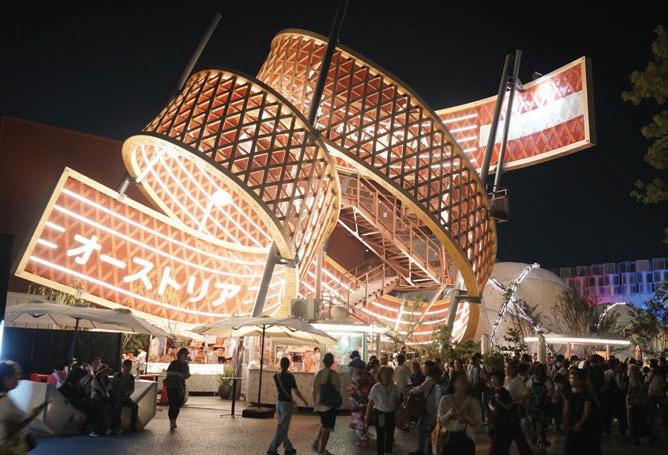
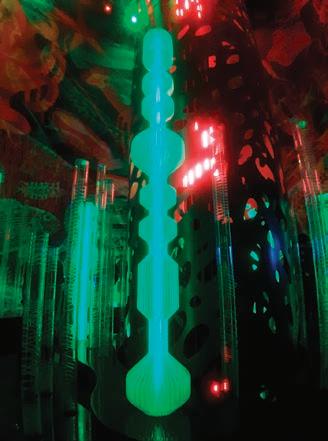
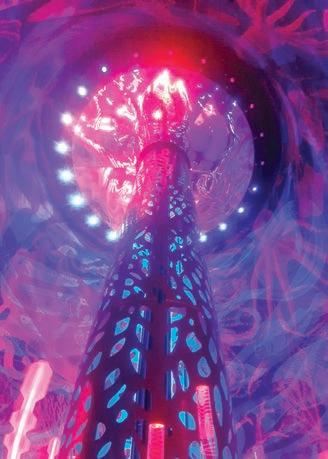


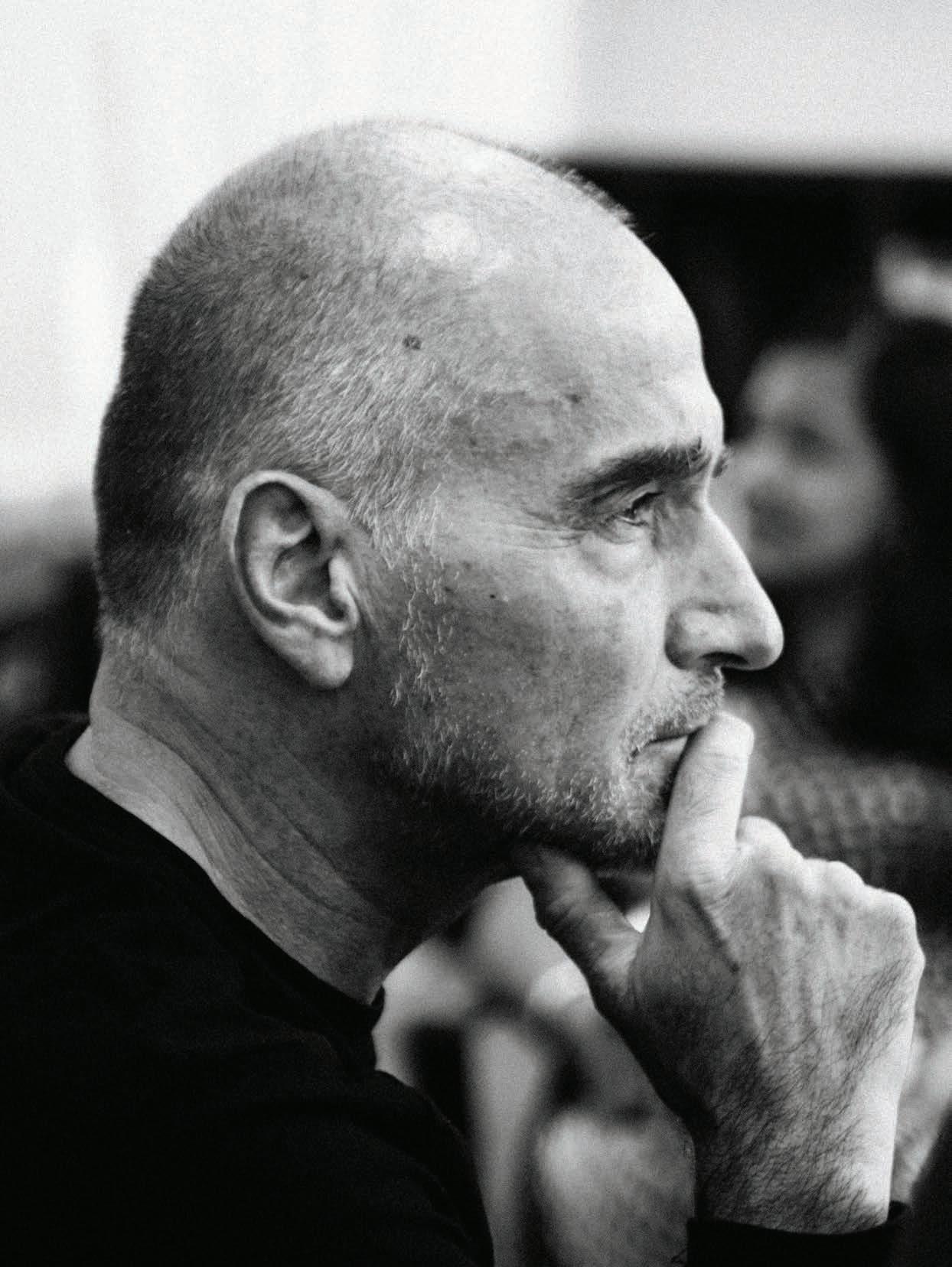
Christophe
Chommeloux
Design, creativity, concepts, strategy: Jean Christophe Vilain puts its multidisciplinary talent to work in a comprehensive and harmonious approach to the development of major players in architecture, visual and plastic arts, industrial and interior design, fashion, graphic design, communication, and new technologies. Jean Christophe is also, very discreetly, an incredible artist.
His missions, if he accepts them, as a consultant or creative director, have been coming thick and fast for a quarter of a century. They share common challenges for all brands and sectors: creating, strengthening, expanding, or renovating their own universe and image.
Jean Christophe helps them implement coherent strategies and creative processes within the framework of a clear, original, and sustainable vision speci c to each brand.
But, as an architect by training, Jean Christophe Vilain was already as interested in fashion as he was in architecture as a student. Not obsessed with long-term projects, he also liked lightness…
When he started out in Paris, he was lucky enough to be immediately hired by leading agencies: Archistudio
and Jean Nouvel, at the time when he was delivering the Institut du monde arabe…
At the same time, he set up a creative studio with friends. One of his partners was a photographer, the other a videographer. Jean Christophe worked mainly on campaign concepts.
He added a third activity, which quickly came to fruition: he met Chantal Thomass in Paris. He had never worked in fashion before, but she saw his portfolio and his way of working and immediately o ered him the chance to design lingerie for Japanese women…
This was followed by numerous prestigious clients, such as Loewe at the time of its acquisition by LVMH, Bally, Clergerie, Pininfarina … and even Jim Thompson, thanks to whom Latitudes came to his attention, shortly before the Covid revolution.
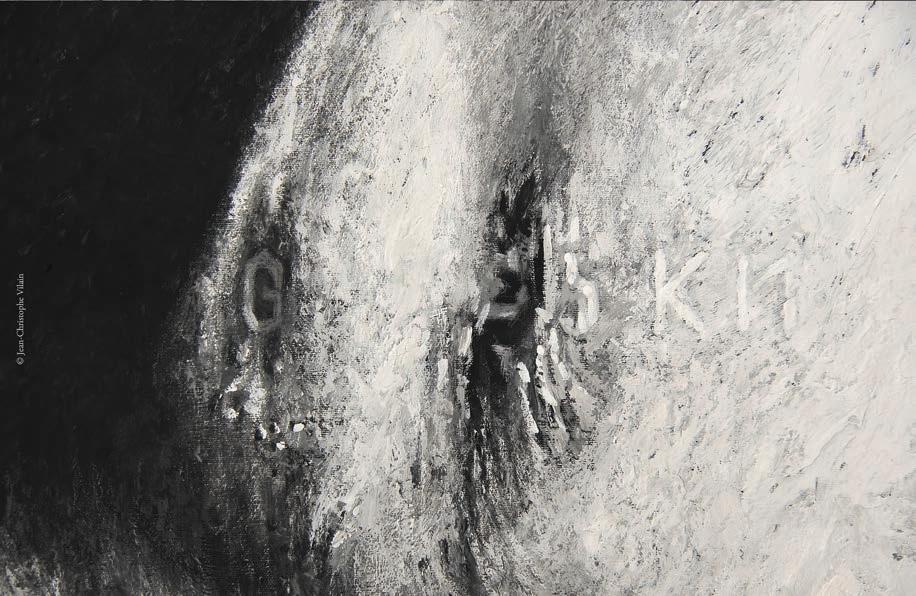
AS2307-M “Under The Radar” (detail)
This period of uncertainty o ered him some unlikely adventures, an unexpected space for introspection, and new inspiration.
His asteroid series began in late 2022/early 2023 in Madrid, where Jean Christophe took refuge during the health crisis. It stems from another series of paintings begun in Bordeaux 10 years earlier: “La solitude des corps” (The Solitude of Bodies).
In fact, Jean Christophe observes the solitude of every being, every object; he collects, captures, isolates, and studies, as a researcher or investigator would: “I accumulate.”
The word clicks in his mouth like the bolt of a lock opening onto a parallel world.
Why accumulate? Do you have Diogenes syndrome, or are you an encyclopedist at heart?
To try to connect things. To try to understand. Where can we nd traces of a connection (with what came before us), a path (to understand what happens to us, what drives us), where does writing come in, univer-
sal signs, perhaps full of meaning (but according to what criteria?) outside the theater of our private lives. I observe the era in which I live. The apprehension of spatial and temporal scales that are incomparable to those that punctuate our lives, our daily routines, our history, prompts me to delve into scienti c imagery to track down the presence and manifestations of a bubbling, a radiance, a relay to our own history, but also a powerful remedy for our carelessness, or our uncomfortable “smugness.”
To seek beauty elsewhere, beyond the immediate contours of the setting, beyond appearances. In other realities.The beauty of a world, of an order that transcends us. Asteroids travel silently, projectiles launched at very high speed. They do not oat. Raw material, mass, density. They cross space. They y like an ideal counterweight to lightness. They continue to represent a real threat to us, hypothetical but real. The danger they carry is of a consistent and imposing beauty, capable of cooling the most astute of artillerymen, of calming the most unbridled of pleasure seekers on Earth.
Fragile as we are, these enormous rocks can help us progress in the art of relativization (physically placing ourselves at the heart – nothing more – of the telluric swarm that is life).

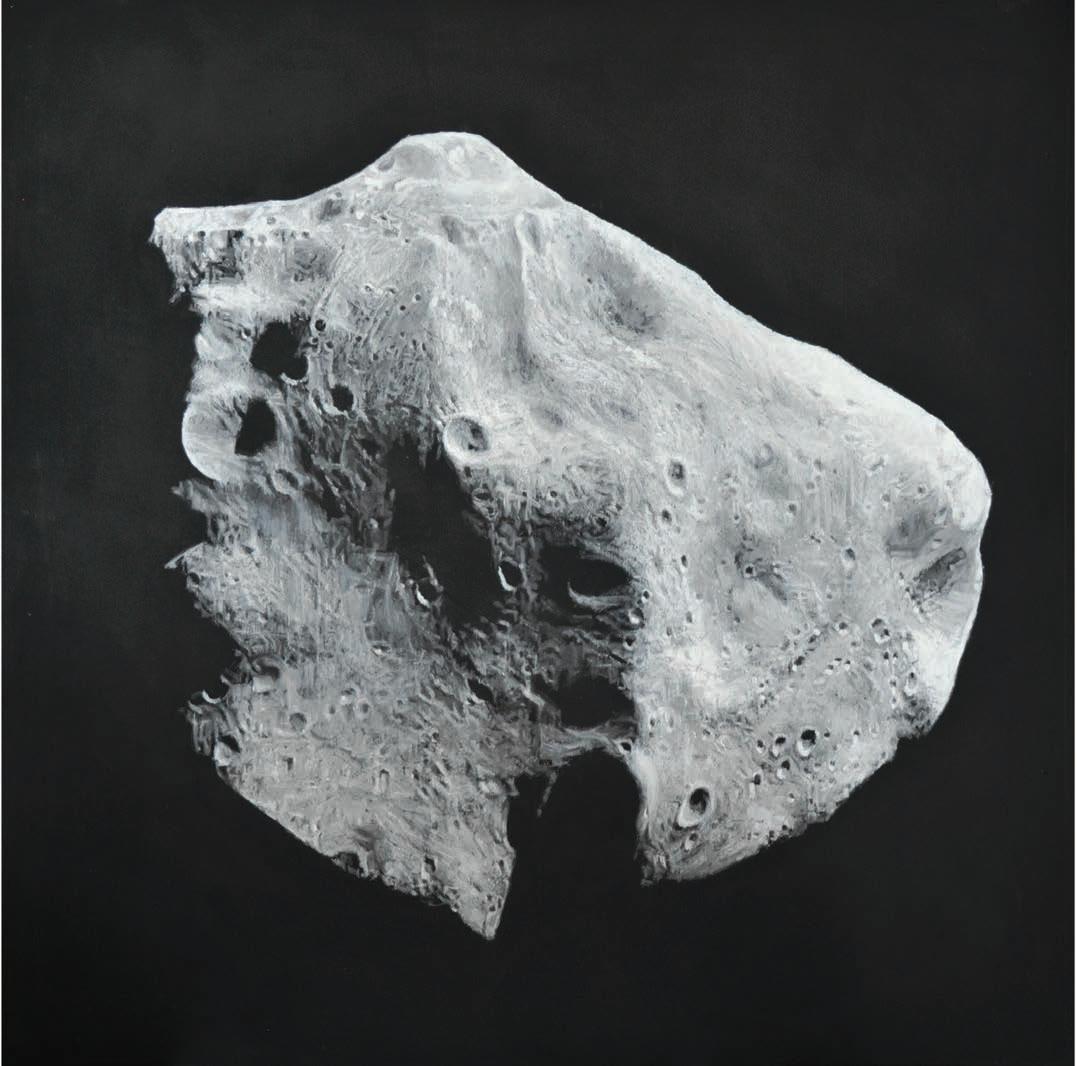

“We are absorbed by current events and the frequency of news, and the rise of new technologies and advances in AI are matched by a dramatic acceleration in the evolution of behavior. Through my work, I also try to question our relationship with time, the way we move from one era, one configuration, to another.
Keeping an eye on what is beyond me forces me to stay alert and not get carried away. It is almost an act of wisdom…”
That is why I use them in this series of works, so that they interact with the frenetic pace that permeates our ephemeral existences and the incessant production of equally ephemeral images and constructions.
Let’s teleport ourselves to your studio for a moment…
The images of asteroids I work on are captured in low de nition on the web. They fascinate me. Alongside the continuous accumulation of personal photographic work – on a myriad of subjects that make up my little private world – I like to steal images from the internet and then classify, observe, and dissect them. Images of asteroids are images steeped in mystery, like the matter they are made of.These images encourage us to cultivate this mystery, to want to unravel it, to twist our imagination into the heart of a kind of meta-reality. Metarealism is what I would call the observation of reality beyond the appearance of the visible. The hinge between reality and the great chaos that surrounds us.
How do you try to unravel this mystery?
In the analysis and representation of dusty, stony ground strewn with twigs, or in a dog’s coat, the iris of an eye, the jumble of free and intertwined grasses in a eld, the wrinkles of skin, the fractures in ice … fragmented
worlds may appear, abstract systems with a di use, random, or, on the contrary, extremely organized architecture, and guration then becomes a deciphering of what proliferates in the visible, of what organizes the visible, constructs it.
In their nakedness, their sidereal bareness, on canvases where they are at a standstill, asteroids impose themselves as powerful symbols of an environment in constant turmoil and riddled with extremely violent accidents.They highlight our fragility.Their magnetism, their xity in the image, their silence, their bulk, their appearance in white light, accompany and perpetuate the fascination exerted by celestial bodies, and the respect for distances, the mystery of signals emitted in regions inaccessible to humans.
Science allows us to get a little closer…
Contemporary scienti c imagery, the proliferation of these images, their free and massive circulation, lead us to broaden our approach to reality. Or to take a step back, perhaps to counteract or simply calm the frenzy of the times, its disturbance, sometimes blinding acceleration. Thanks to increasingly sophisticated observation techniques, the visible world reveals more than ever before, it’s true. This can slow us down and enrich us by distancing us from the prism and limitations of the eye. Science and technology bring us closer to other objects, other solitary bodies, adrift and likely to brush past us in pursuit of their own destinies.
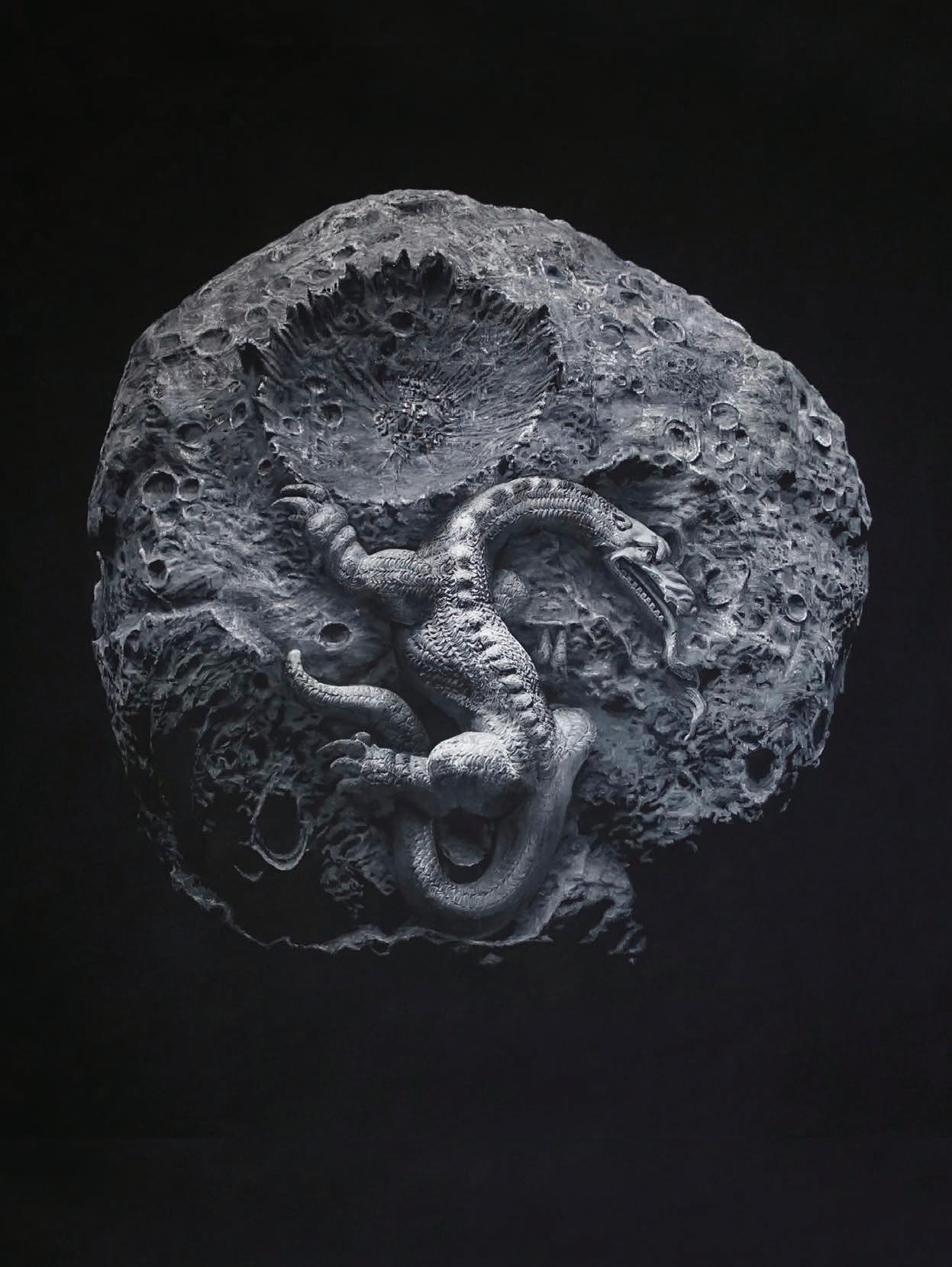
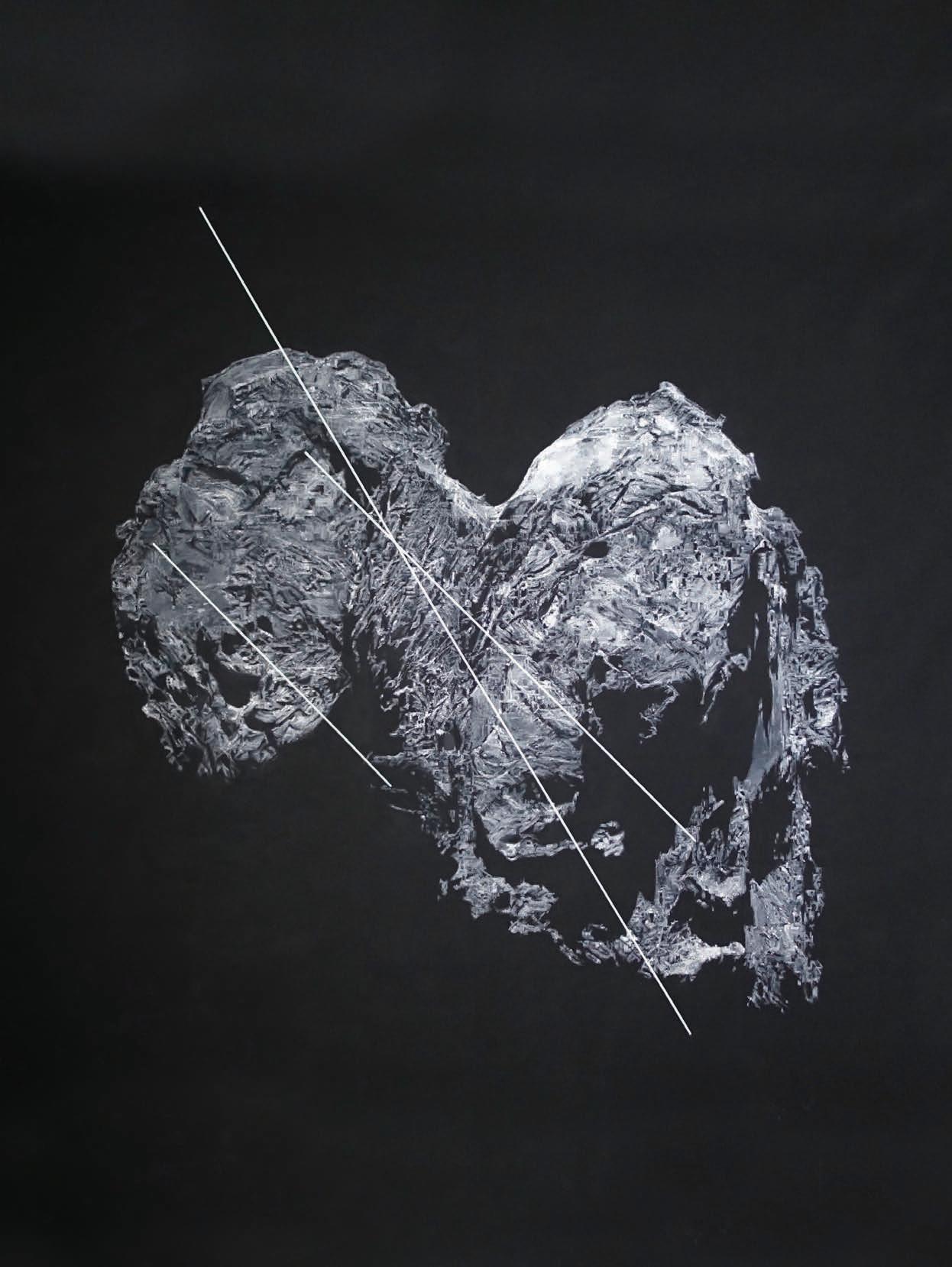
“From that day on, I knew what loneliness was; every object, every living thing, everything leads its own life.”

Who knows if they carry anything other than inert matter…
It is this “silent” matter that metabolizes in the painting I want to produce, brushing against and (peacefully) questioning the living, malleable, and unstable world in which we evolve. Not being a scientist, there is undoubtedly something meditative, even a little mystical, about this approach.
But then I disconnect and laugh, because in reality, everything is beyond us, isn’t it?
We are just looking for reference points. To move forward, to evolve. While remaining well aware of our loneliness, our fragility…
So let’s get back to the practicalities. What do you do first when a mediocre image of intergalactic rock stolen from the web unexpectedly triggers artistic inspiration?
I scrutinize it! ■
Asteroids is a series of acrylics on canvas (unmounted) measuring 2.00 × 2.00m. They are based on low-resolution images that have been reworked and sometimes mixed with other symbolic or simply meaningful elements. They are then painted in bright white on black canvas, like the depths of infinity. With a primal desire to escape hyperrealism, Jean Christophe Vilain creates his resolutely conceptual visuals by systematically keeping his distance, thanks to low resolution.

Mister Diver
March 28, 2025, 1:20 pm!!!!!!!!!!
Bangkok is hit by a violent earthquake which epicenter is located more than 1,000 kilometers away, in the guts of Burma. The new SAO building, under construction in the Chatuchak district, collapses in a matter of seconds, taking away lives, hopes, and a few illusions.
Iarrived at the site the day after the collapse,” Seb tells us, his voice already slightly trembling, revealing the intensity of the experience. “Like many others, I couldn’t stay at home watching the images ash across all the Thai channels. I wanted to help!
As a former volunteer re ghter, I was used to emergency situations. I knew how to react, how to make myself useful. But very quickly, the administrative reality caught up with me. As a foreigner, I couldn’t o cially join a rescue team. It was frustrating, because I knew I could have contributed something. So I did what I knew how to do. I took my camera and started taking pictures...”
Sébastien spent 29 days on the ground, alongside rescue teams, volunteers, soldiers, and re ghters.Through his photos, he attempted to capture the reality, the dust, the fear, but also the strength and solidarity that emerged from the rubble.
This French teacher, a photographer at heart, to whom Latitudes owes many striking images, provides a visual testimony not only to a collapse, but also to the resilience of a city slowly but surely rising to the challenge in the face of tragedy and adversity, carried by those who never stopped digging, hoping and saving.
The exhibition and book that Seb is preparing with this impressive material are not intended to provide any technical report or analysis, but simply the essence of what the man experienced. What the artist saw and felt and wants to share, so that the memory of those inspiring and dramatic weeks will never fade.
“When I went to the site of the collapse, I found faces, gestures, silences. I saw exhaustion, dignity, mutual aid, and also beauty in the weary eyes. And even more than ever, that fascinating smile that Thai people can wear, even when the worst happens. For my part, I felt frankly useless. So I did what I know how to do: I took photos.
I stayed twenty-nine days walking the streets, breathing in the dust, watching people work tirelessly, capturing those moments that still stick with me forever.
The book and exhibition I am preparing for the rst anniversary of the tragedy in March 2026 are dedicated to those who did not have time to ee.To those we will never forget, to those who gave everything without counting the cost, to those who dug, carried, ran, prayed.To those who worked every day in the shadows or in the blazing sun, striving to save everything that could be saved. All the lives lost that day will be with us, in each of the images. Thank you to those who let me capture these moments...”
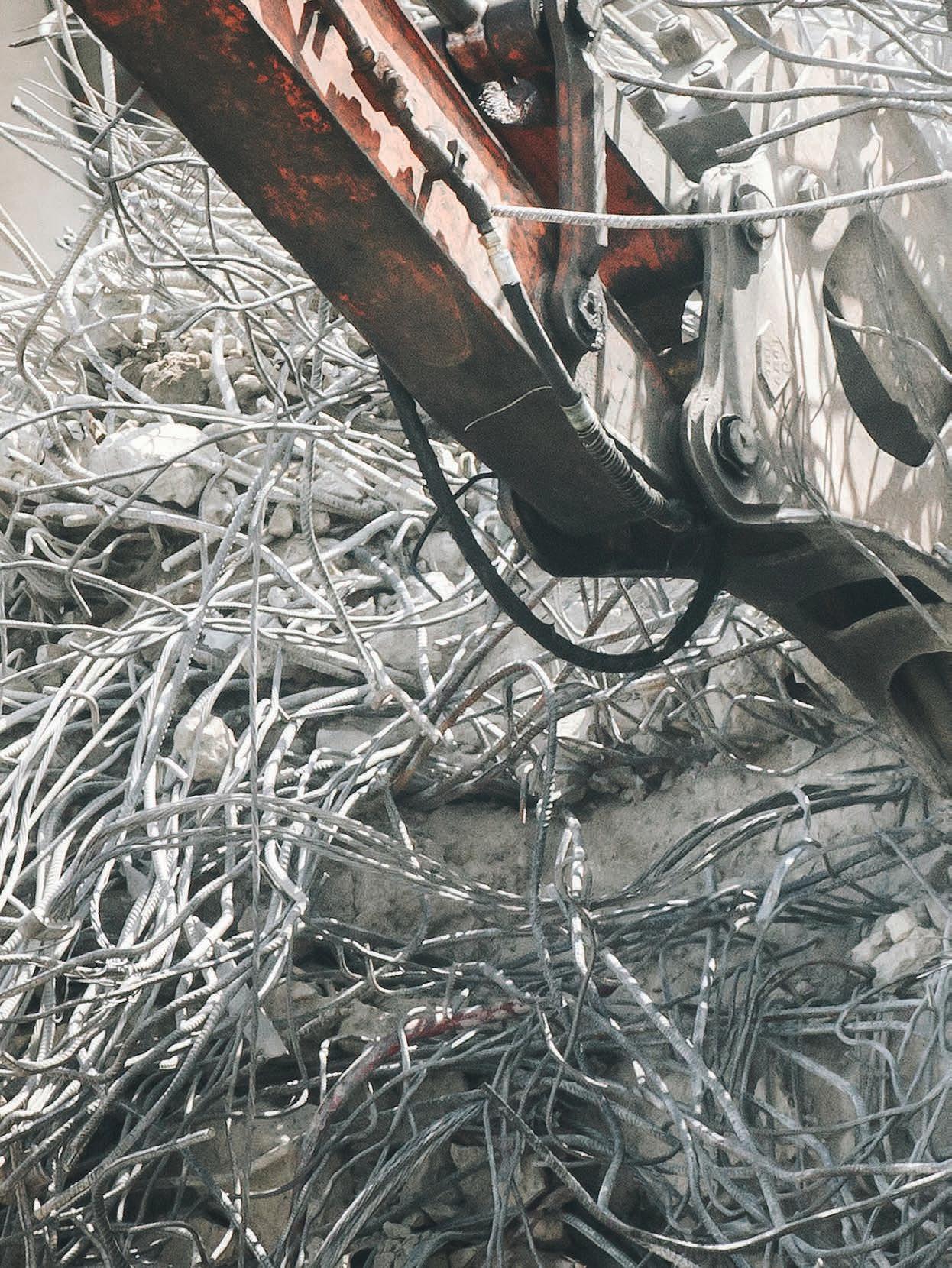
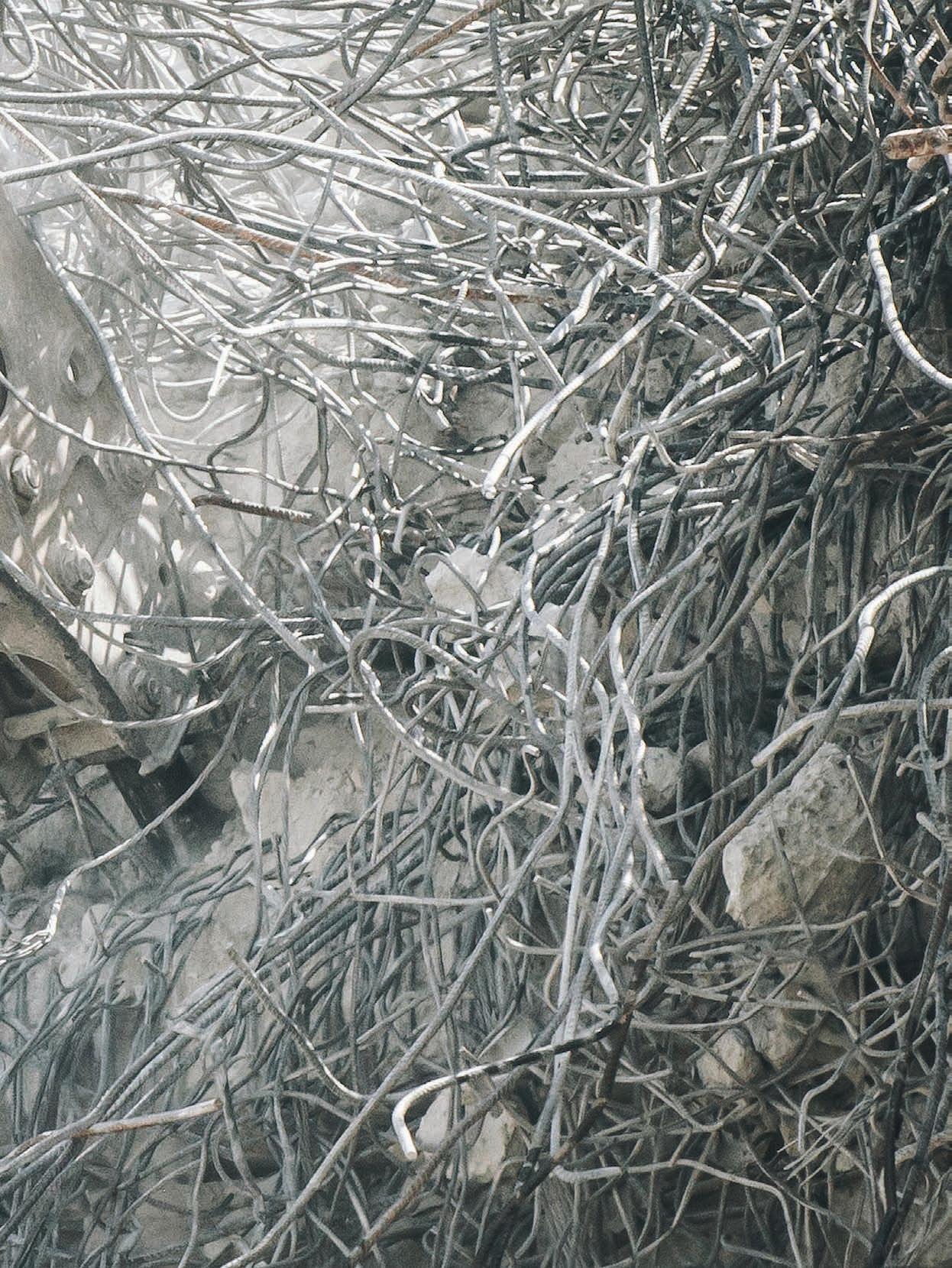
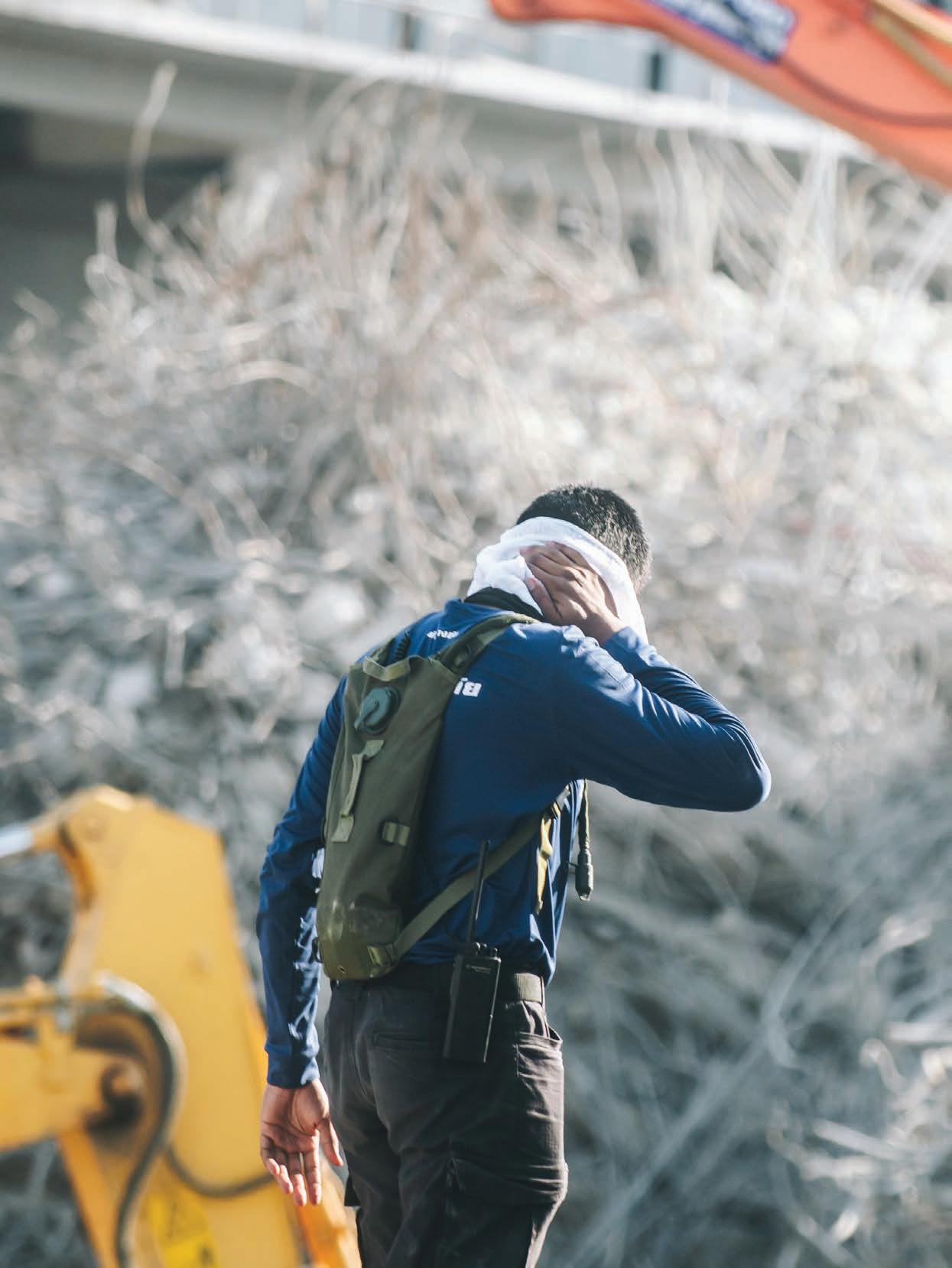



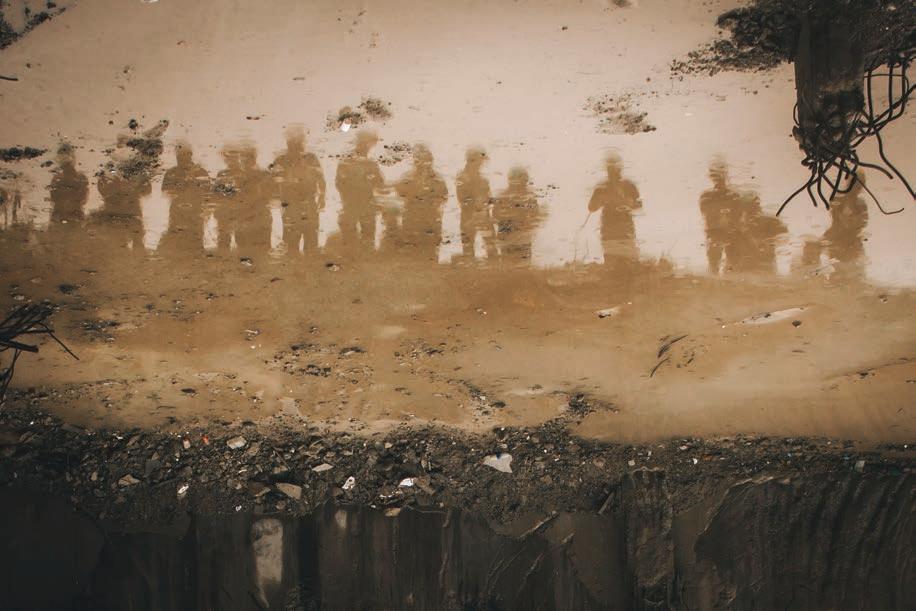
DOYTIBET DUCHANEE – THE ART OF SAVING
Many know him as the son of Thawan Duchanee, a leading gure in Thai art and founder of the Baan Dam Museum in Chiang Rai. Doytibet has taken up the cultural torch, managing the preservation of this unique place, organizing exhibitions, and keeping his father’s legacy alive. But what few people know is that he is also involved in rescue work. When disaster strikes, he responds and takes action. He leads teams and saves lives. He also responded in 2018 when 13 people were trapped in the Thai Luang cave in northern Thailand. He is a true leader.
About 30 years ago, Doytibet survived a serious car accident. That day, everything could have ended. But instead of withdrawing into himself, he chose to turn to others.
That’s when he decided to devote his life to helping others. Every intervention, every rescue e ort became a way to make the most of this second chance.
I met him and his team in the rubble after nightfall. He wasn’t wearing a suit or carrying a paintbrush.That day, he was wearing his full rescue gear with his helmet,
knee pads, elbow pads, walkie-talkie, and his famous Komando Tactical Survivor Hammer, the ultimate tool for this type of rescue.
Thanks to it, he was able to move around every nook and cranny of the collapsed mountain, where every misstep could be fatal. “Without it,” he said, “I would have ended up skewered, like a barbecue skewer.”
A brutal image, but true to the reality on the ground. It wasn’t just a tool, it was like an extension of his commitment.
He led a night search and rescue section. They were the ghost team, the one you don’t see. Doytibet told me that among themselves they called it the Yansawang Team, meaning “the team until morning.” They worked when everyone else was asleep. Silent and precise. No one saw them; they were there when the world closed its eyes.
That’s how I knew him.
I remember how he looked that day: RKU fatigues, gloved hands, a focused expression.
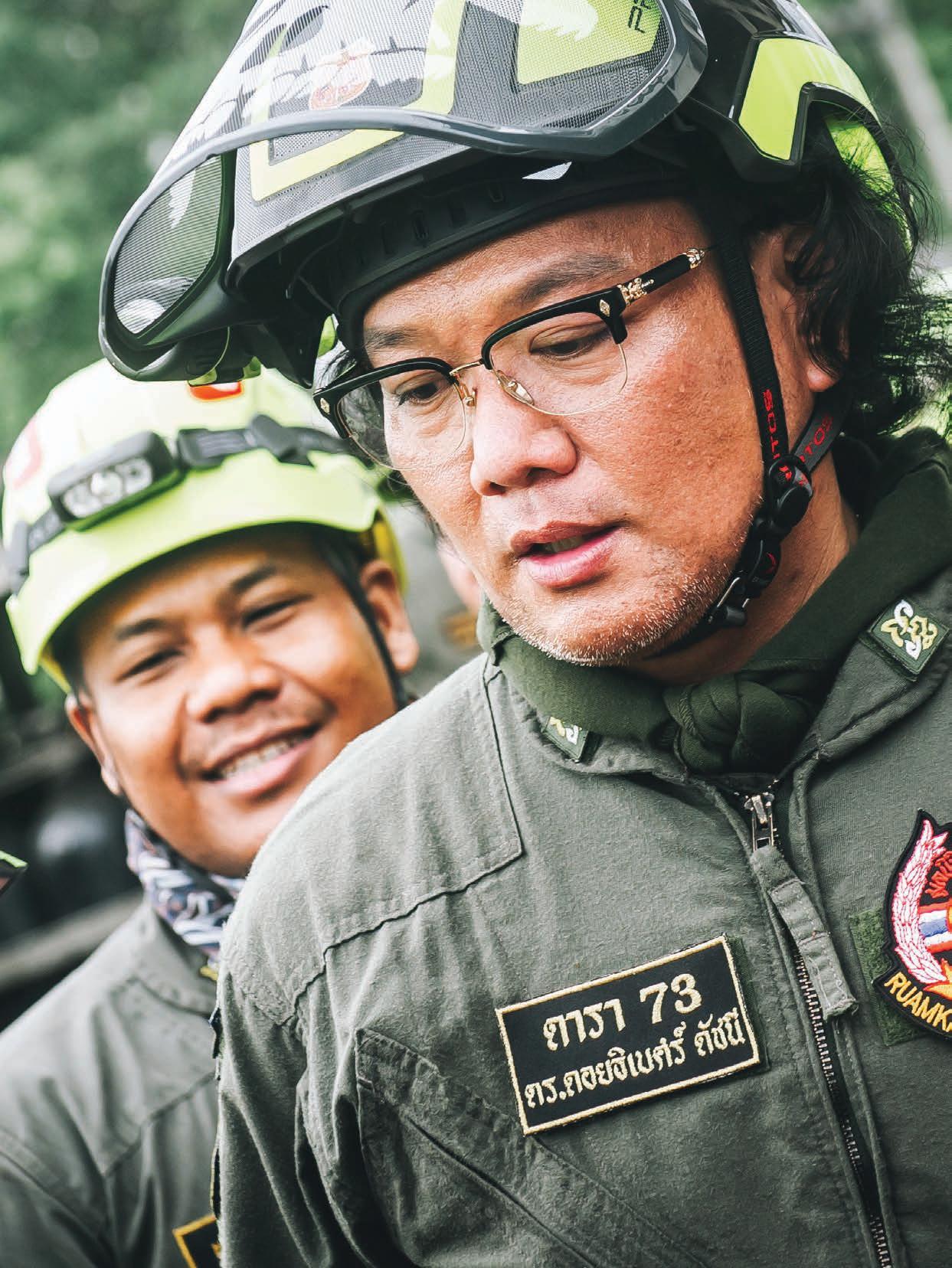
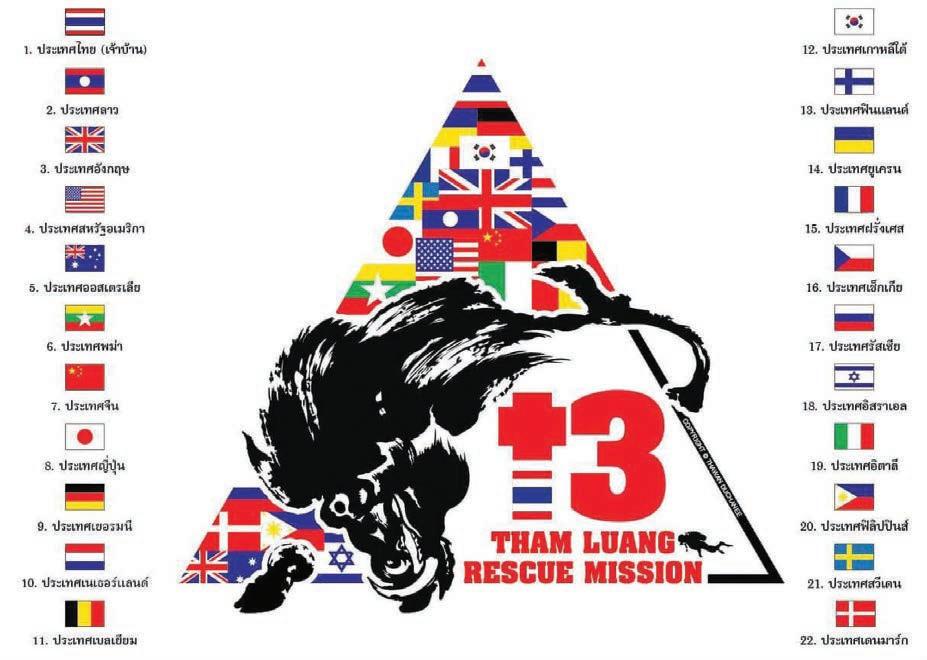
I saw this duality in him, as I did in many others in the eld. People who have busy lives elsewhere: artists, engineers, merchants, teachers... And who, when everything literally collapses, become volunteer rescuers or silent heroes.
Doytibet impressed me with his calmness, charisma, and kindness towards others, even at the height of the crisis. I knew he had a story, but on the ground, what mattered were the lives to be saved, the actions to be taken, the people to be supported.
This contrast between the re ned art of Chiang Rai and the muddy rubble of Bangkok is not a contradiction. It is proof that one can be both a creator and a protector, a man of culture and a man of action.
In my eyes, this is the true face of Thailand today: rooted in its heritage, but above all, caring on others.
On June 23, 2018, twelve children aged eleven through sixteen and their soccer coach, aged 25, went into Tham Luang Nang Non cave.The sudden rise of the water of an underground river forced the group to go deeper into the cavern until they found themselves trapped four kilometers from the entrance. That evening, the alarm was sounded and the research operations started. After 18 days imprisoned in the darkness of a ooded cavern, the twelve Little Boars and their coach made it out safely from Tham Luang cave after an extraordinary rescue operation.
As a member of the rescue teams, Doytibet posted on social network to celebrate this happy ending. Throughout the time we have worked at Tham Luang, it has been a life-changing experience and now a cherished memory to witness everyone’s unwavering dedication and e orts in working together to the fullest extent of their abilities.
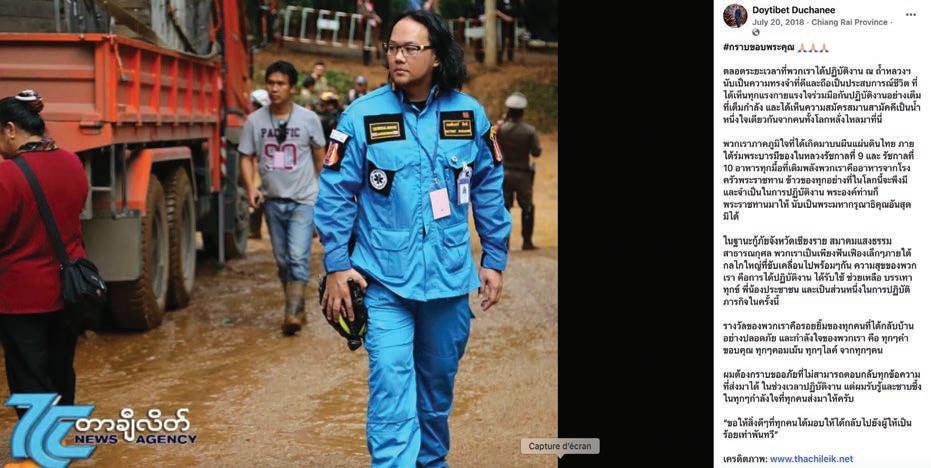
We have also seen the unity and solidarity of people from around the world coming together as one heart and mind.
We are proud to be born on Thai soil under the royal grace of King Rama IX and King Rama X. Every meal that nourishes us comes from the royal kitchens. Everything we need to perform our duties has been graciously provided by His Majesty. This is an immeasurable royal benevolence.
As the Chiang Rai Provincial Rescue Association, Saengtham Public Welfare Association, we are just small gears in a large mechanism that moves forward together. Our happiness comes from performing our duties, serving, helping, alleviating su ering, and being part of this mission.
Our reward is the smile of everyone who returns home safely, and our strength is every word of gratitude, every comment, every like from everyone.
I sincerely apologize for not being able to respond to every message sent during work hours. However, I am aware of and deeply appreciate all the support and encouragement everyone has given me.
“May all the good things you have given be returned to you a hundredfold.”
With heartfelt gratitude, Doytibet Duchanee Light of Dharma Public Charity
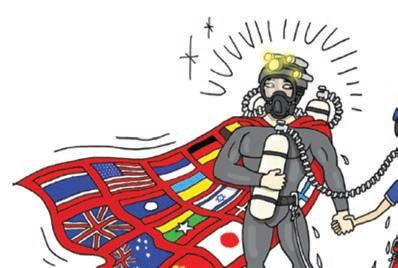
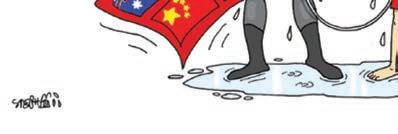

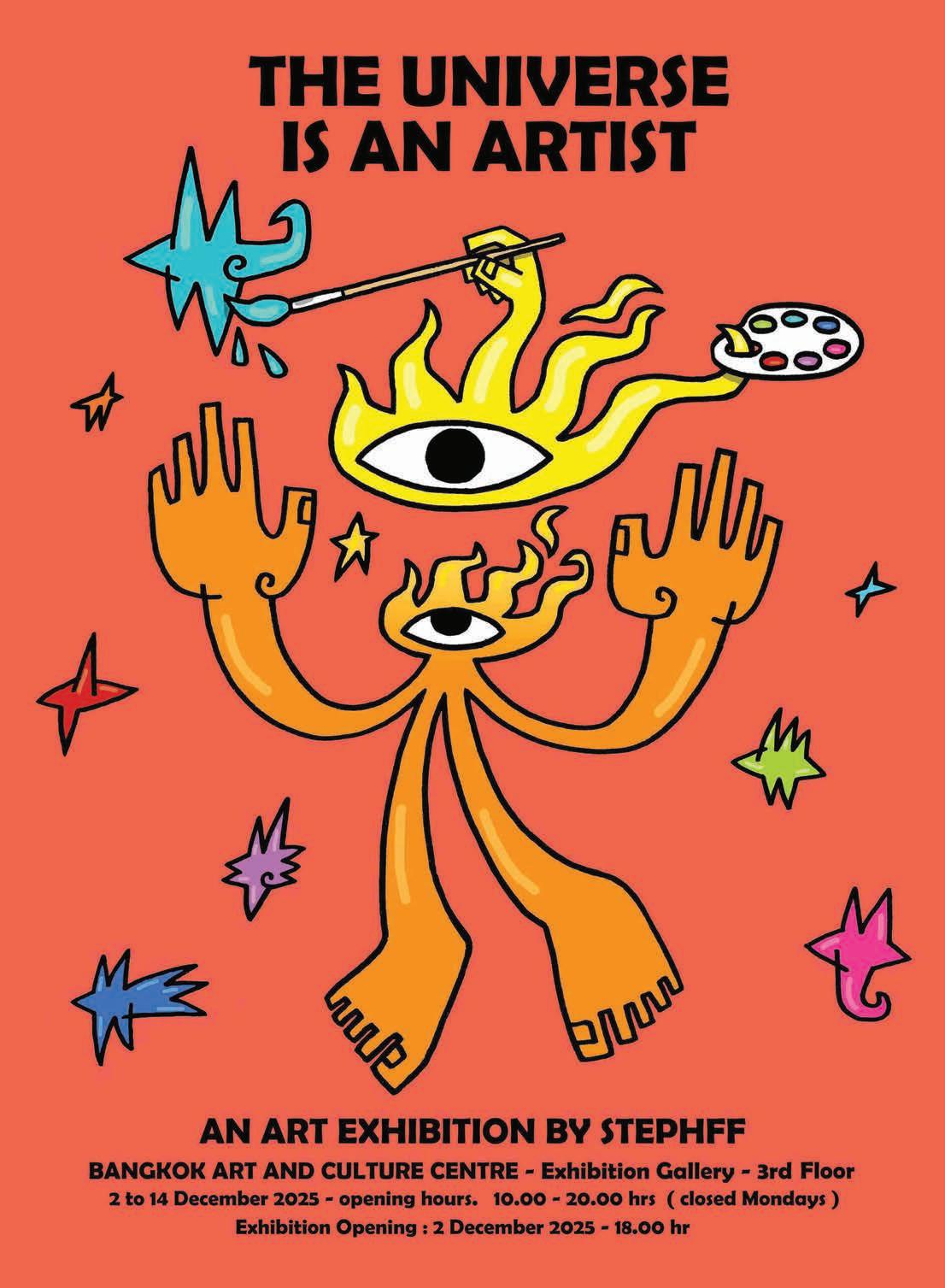

Well known in Thailand for his hilarious cartoons, Stephff does not limit himself to delivering his jubilant and sarcastic graphic swipes in the pages of daily newspapers or on the screens of the internet. The artist releases hilarious collector’s books on the quirks of the Farangs in the land of Siam and devotes himself without transition to contemporary painting of tribal inspiration...

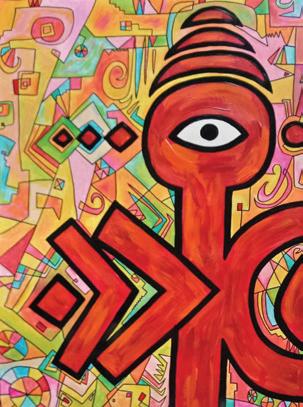


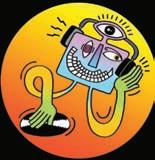


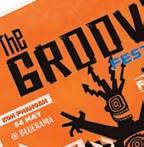

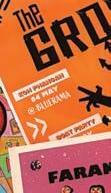


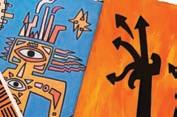


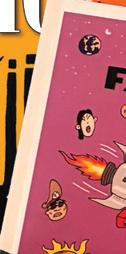
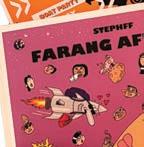

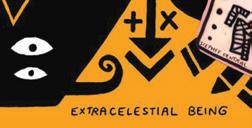
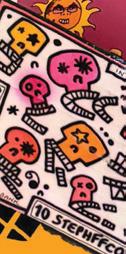



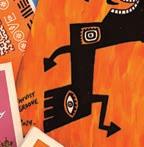
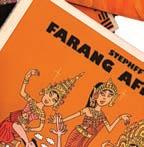




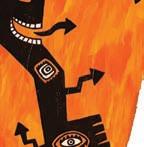







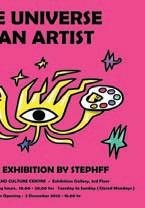




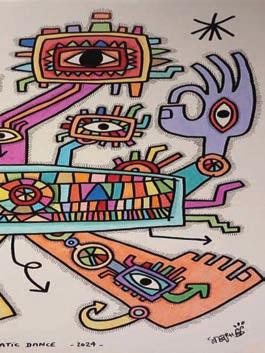


From the Mekong to Gavroche, from the Bangkok Post to The Nation, via Courrier International or Le Paris Phuket, the corrosive drawings of Steph have for a long time taken a cruel and funny look, lled with derision, revolt and distance, on political life and the biases of society. Installed in the middle of his impressive collection of tribal art, the journalist artist also paints contemporary gra ti-ethnic works, between two harsh criticisms of the power in place or of his contemporaries.
This last theme is now available in the form of books with the release of Farang A airs, sets of drawings either
unpublished or revisited, brought together in collector’s editions with a very limited print run of 1500 copies, only available from the author via his social pages. Steph promises it, once sold out, there will be no reprinting, so don’t miss this rarity containing some politically incorrect pearls that will never be republished.
As for the tribal-inspired graphics, they are not only a source of joy for The Groove festival’s communicators, but they’re now also hanging on the walls of a Bangkok temple of contemporary art: the Bangkok Art and Culture Center.

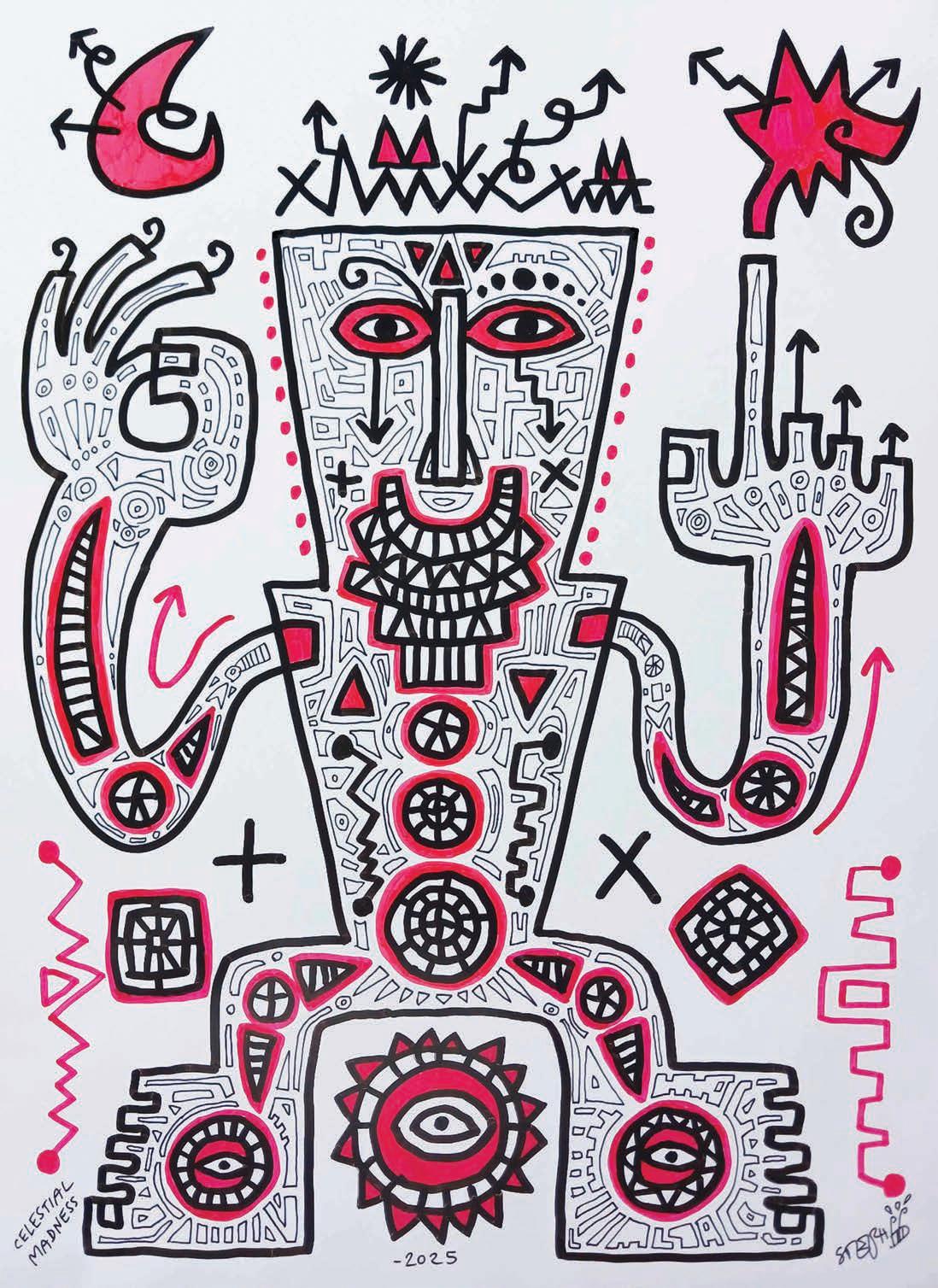

“This exhibition marks a new stage in my personal journey, increasingly focused on the spiritual and mystical, in the hope that this will bring greater maturity to my painting.The choice of the title ‘The Universe is an Artist’ comes from a long re ection, the conclusion of which is a deep conviction that the entire Universe constitutes a kind of in nite creative matrix to which we must connect in order to create for ourselves.
The proof of this, for me, is that children, primitive peoples, and so-called ‘naive’ artists know very well how to instinctively draw on this free resource. While I try to connect with my ‘divine’ side for my spiritual well-being, I also try to connect with the divine genius within, present in each of us, in order to evolve artistically. I hope that my recent paintings re ect a form of gratitude to the Universe for all that it brings me as an artist.” ■
www.instagram.com/steph _art
www.bacc.or.th










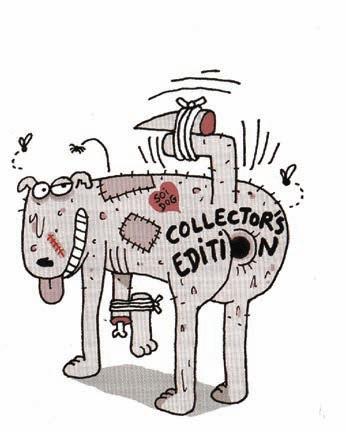




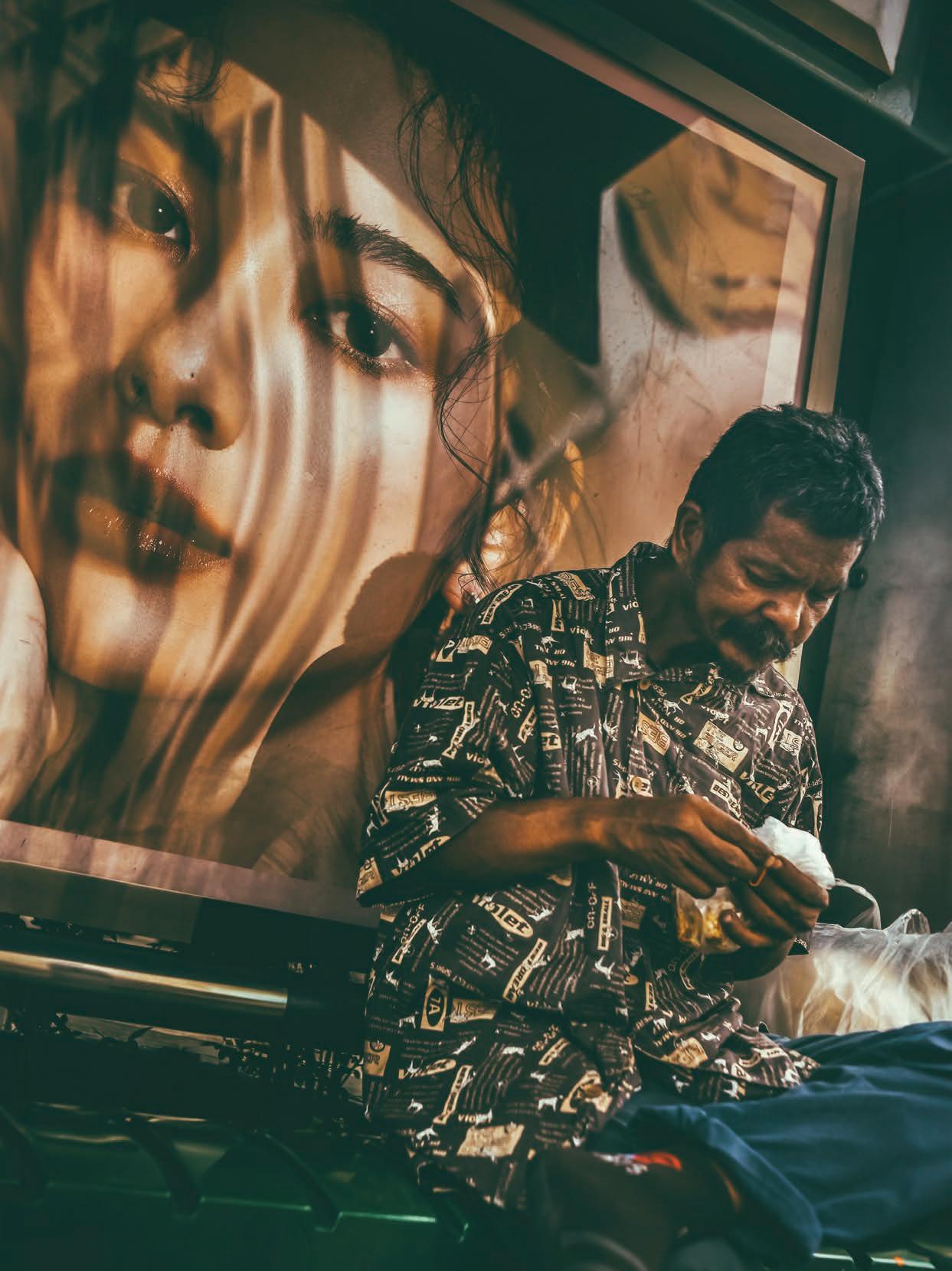
Claude Openeye
Pavel V. Khon’s photography blends street candor, ritualistic symbolism, and cross-cultural storytelling. His work explores generational gestures, mythic contrasts, and the emotional textures of everyday life.

ARussian-born half-Korean creative living in Bangkok since 2010, Pavel balances a corporate role at LSG Sky Chefs Thailand with a thriving artistic life. By day, he’s a Key Account Manager, coordinating airline catering services. By night and during weekends, he’s a documentarian and curator of Bangkok’s urban soul.
Pavel see photography as meditation, a way to stay present and connect deeply with his surroundings. Famous in the eld of parties and festivals for capturing high density moments as well as funky portraits of artists and ravers with his unique re ned touch, Pavel is also well known for organizing portrait photo meetups #fridaybushesbkk and curating international photo exhibitions, actively seeking photographers from diverse genres and backgrounds.
Pavel V. Khon - Bangkok-Based Photographer, Curator & Cultural Connector’s solo showcases:
* Urban Bangkok
* The Feast for the Eyes
* Various pop-up exhibitions across Bangkok
His dynamic group curation include:
* Road to Mango Festival
* Lens & Street
* Wandering Frames
* The Lead to Minimal
* Brushlight Mirage: Impressionism
Pavel also regularly participates in collaborative art exhibitions, fostering dialogue between local and international creatives.
www.instagram.com/naghasch
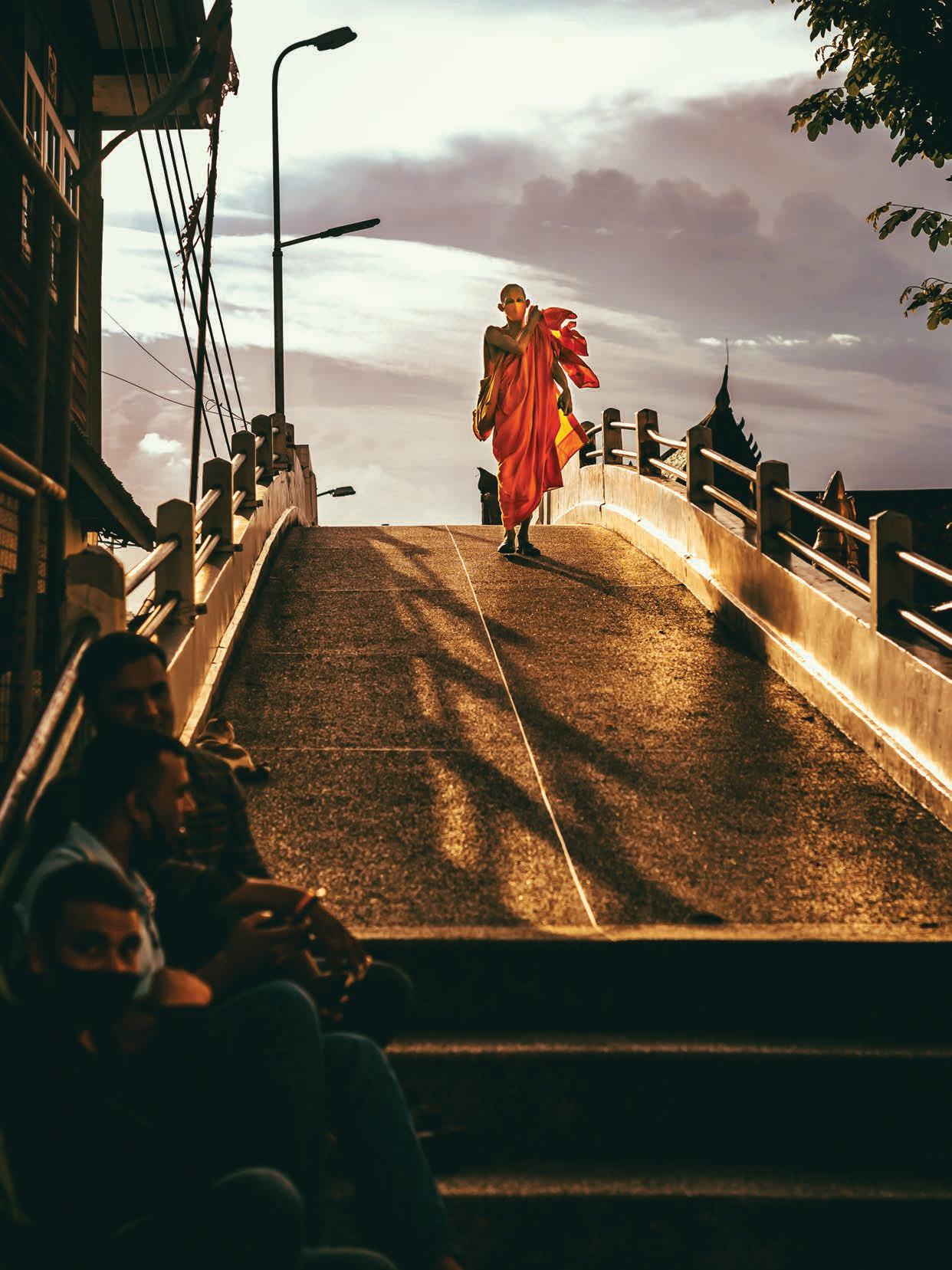
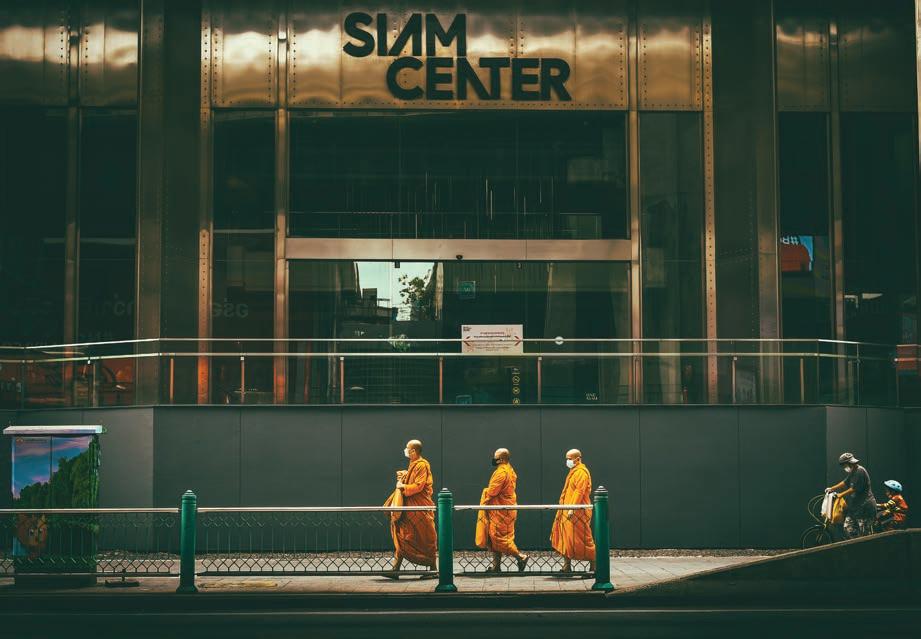



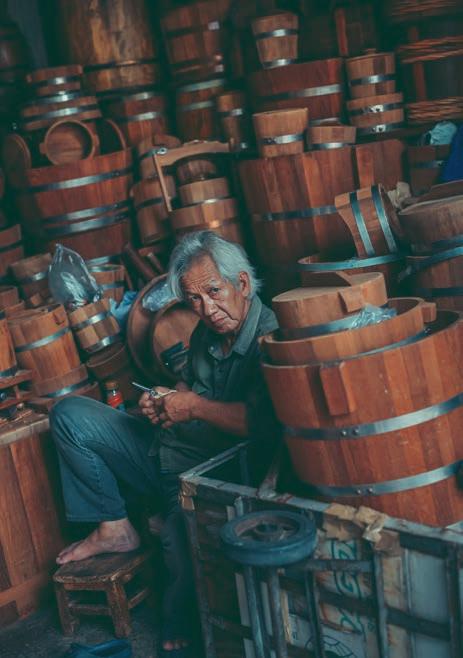

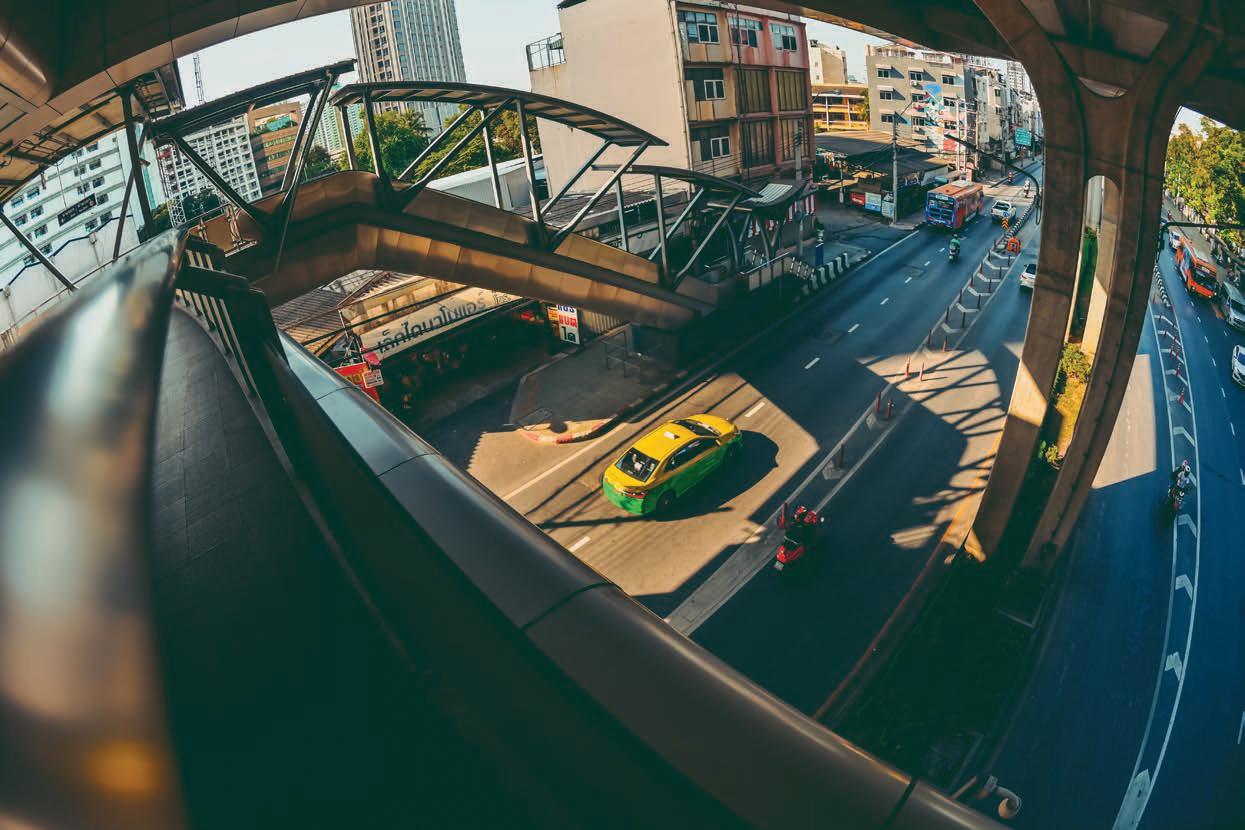
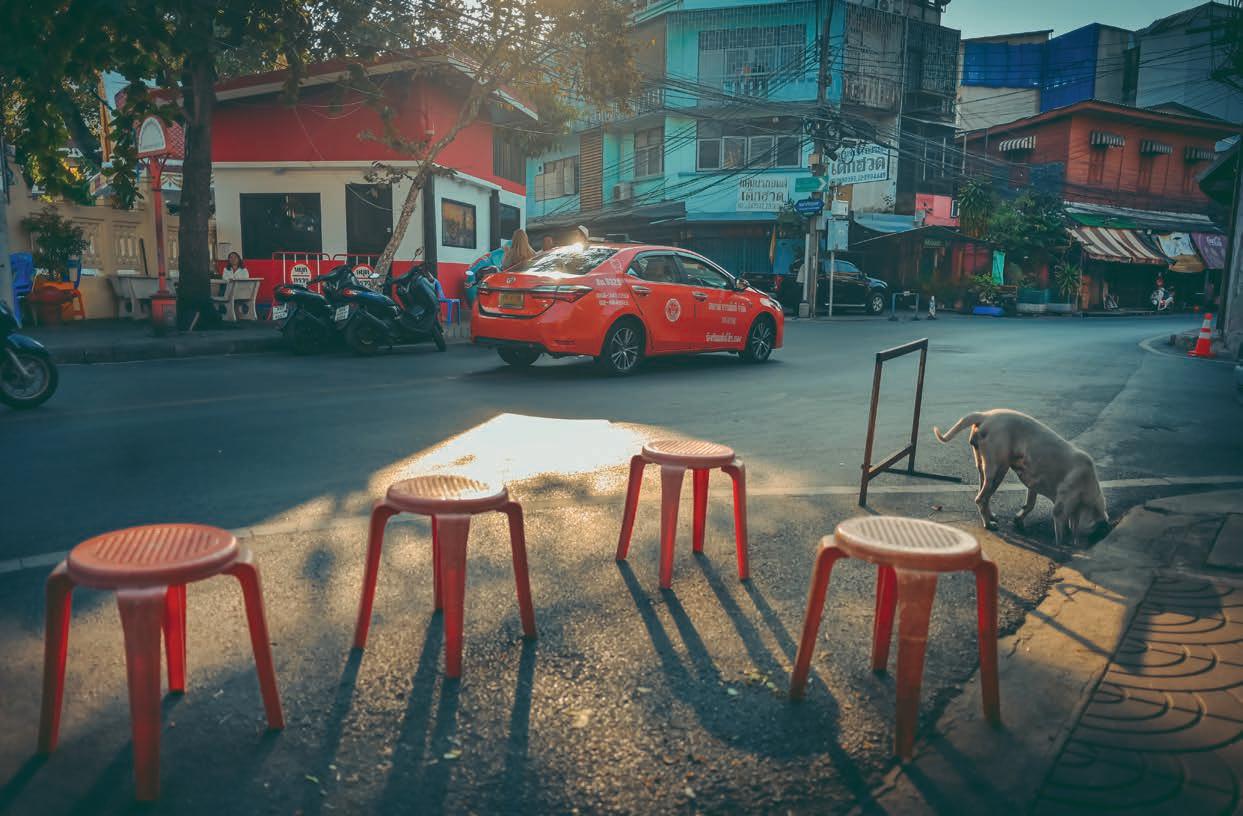

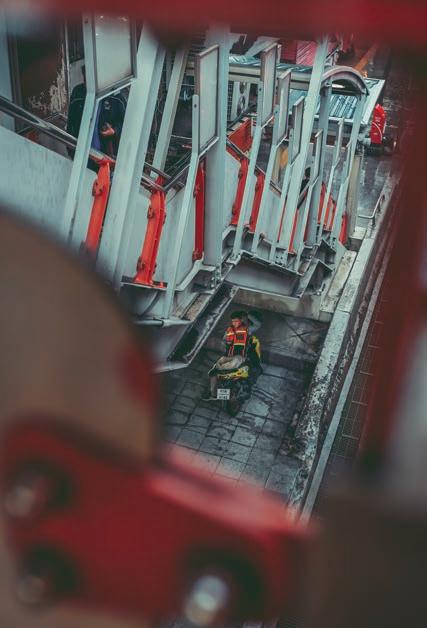
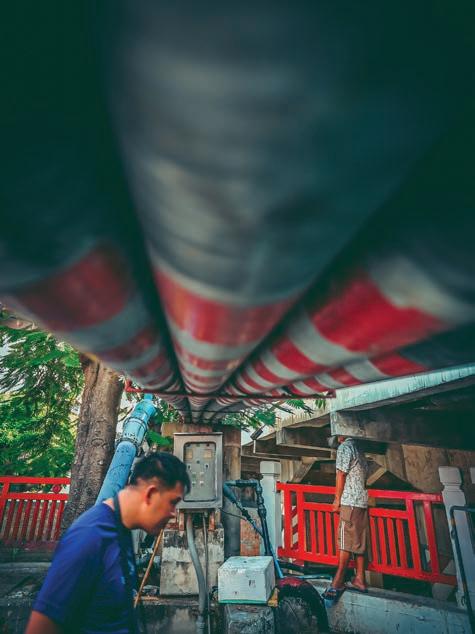


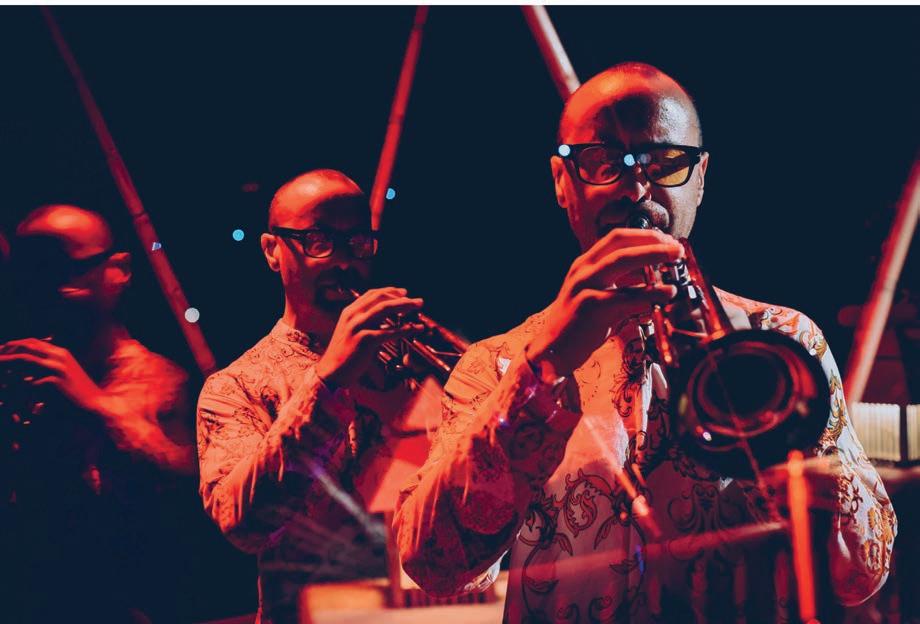
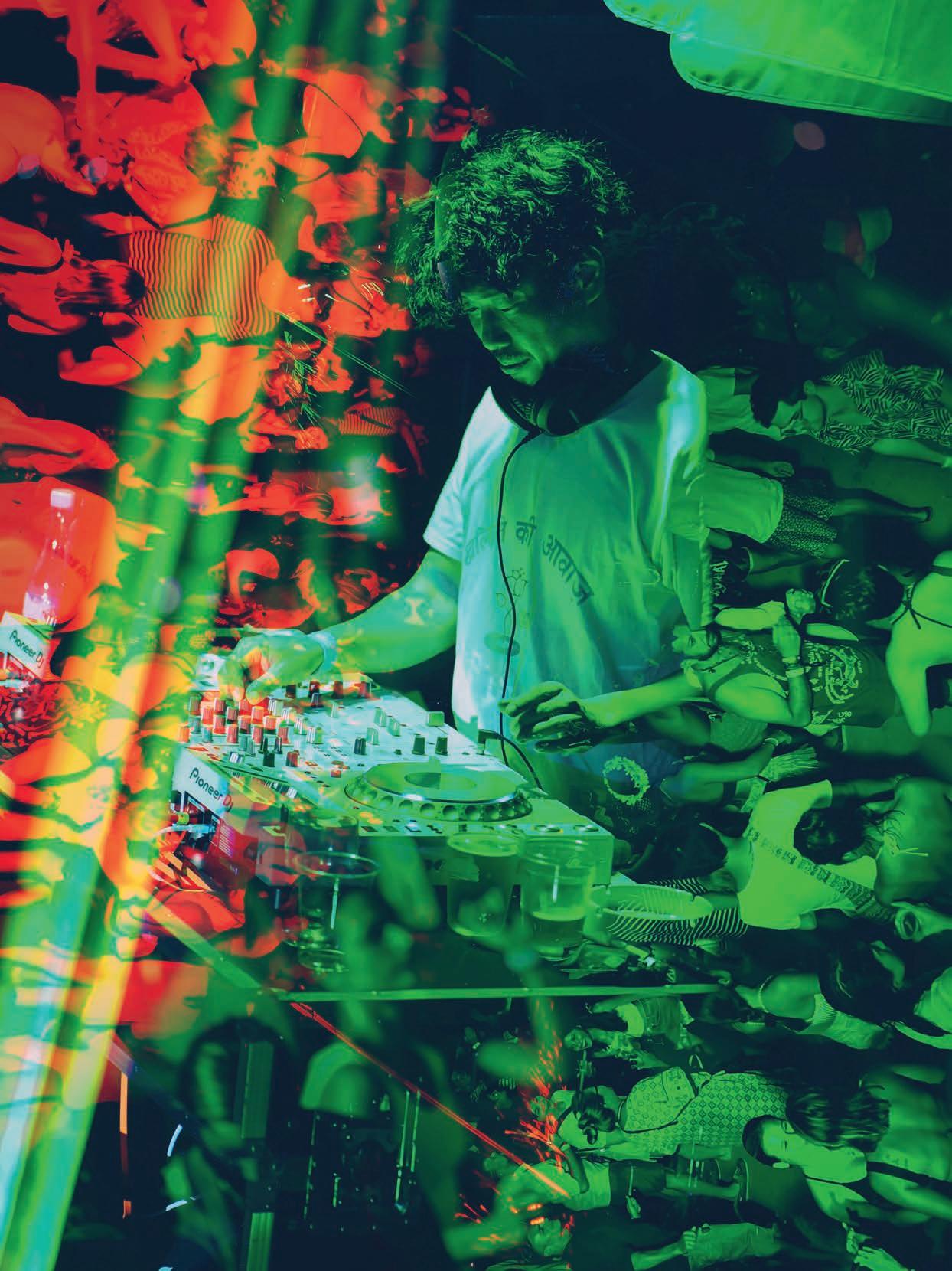
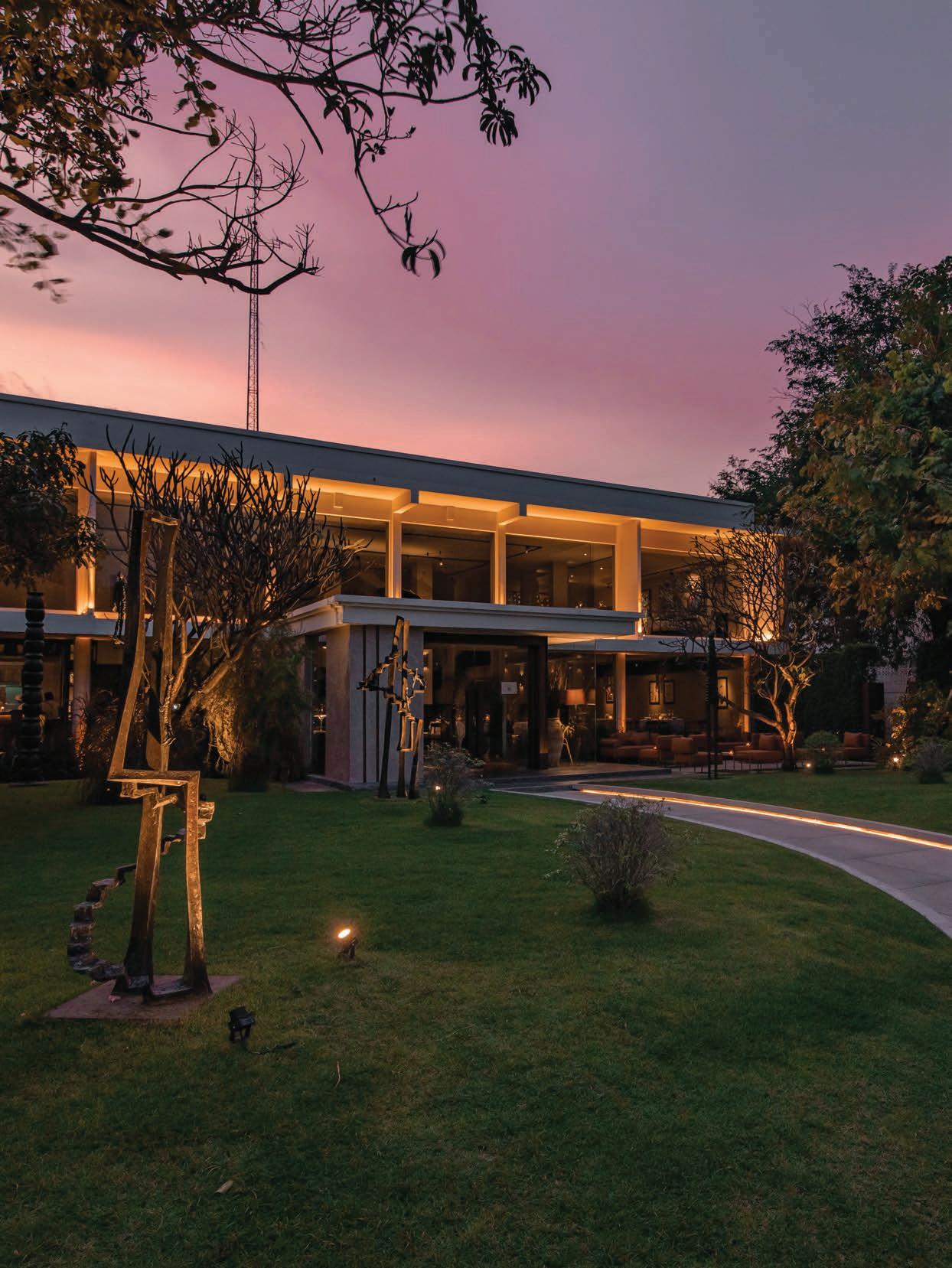
Christophe Chommeloux
Once dedicated to painters, designers and sculptors, CLARA is nowadays home to the Art of Gastronomy. At the helm, the symbiotic couple formed by Clara & Christian has a winning recipe: the heartfelt welcome, genuine hospitality and simple elegance of Clara, woven with the palatable passion of Chef Christian’s mastered craft.
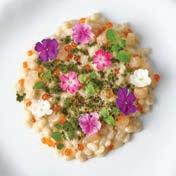
Our team has a special story with this place and few people know the building as deeply as we do, starting with the mango tree hidden behind, that you can admire only from the o ce at the back. Its fruits are simply delicious, a good omen for a future restaurant.
Once the headquarters of a forgotten tinned sh company, it had become one of the most beautiful art galleries in Bangkok: YenakArt Villa. For half a decade, it has welcomed many artists and its exhibition openings were famous among Big Mango socialites.
That’s where we met Soichiro Shimizu, Maitree Siriboon, Rasmee, Val … and where we celebrated the 4 years of our former magazine Le Paris Bangkok Eventually, when we launched Latitudes, a partnership
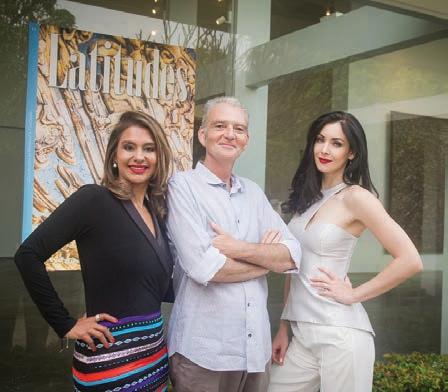
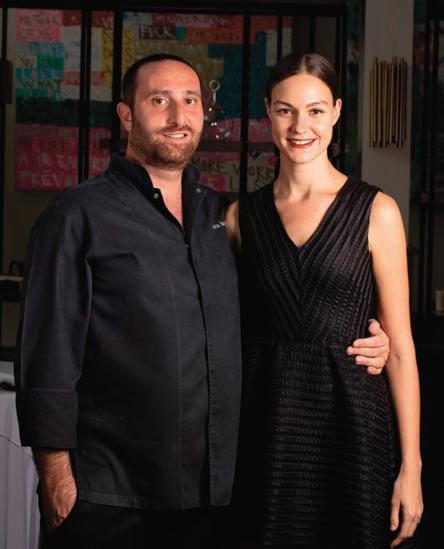


with the gallery’s owner allowed us to share the space and install our o ces in the mighty Bauhaus-style property. We even ended up managing the exhibitions for around a year, taking advantage of the decor for interviews and shootings. For the anecdote, that’s also where our Chief Editor met his future wife…
Twelve years after giving birth to the Italian sensation Sensi, Chef Christian Martena and Maitre D’ Clara Del Corso-Martena were searching for a special place to put their hearts into a new culinary adventure. Being tucked away in the peaceful Yen Akart residential area while right in the center of Sathorn District, the villa was a perfect location for CLARA and they took over. After the necessary following period of transformation, turning the huge volumes into an intimate yet impressive ne-dining, CLARA opened at the end of 2019. Our rst good surprise was to discover that despite the redesign of the space, the villa was staying true to its artistic roots and that the ve-meter-high walls remained the backdrop to curated artworks, rotating every few months.
These days, CLARA is showcasing Thai Artist Aimi Kaiya and French Artist Rudy Meyer.
The oor-to-ceiling windows still open to a lush garden, now planted with VAL’s monumental and lean sculptures. When the sun sets, Matteo Masservy’s warm and expert lighting breathes life into the whitewashed villa’s façade and surrounding greenery for a mesmerizing entrance, in the same fashion it did for vernissages.
This remarkable space caters for all occasions and moods with multiple sitting options. For an intimate encounter with the craftsmen, you can choose one of the 10 comfy seats of the Chef’s Table, designed by acclaimed designer P.Tendercool and uniquely tattooed by Tantai, a renewed Thai tattoo artist.You can perch yourself on the highchairs at the designer’s kitchen counter, to feel part of the orchestrated action. Or you may walk up to the semi-private mezzanine for a secluded bird-eye view. After dinner, why not cozy up into P.Tendercool garden lounge for a selection of liquors?

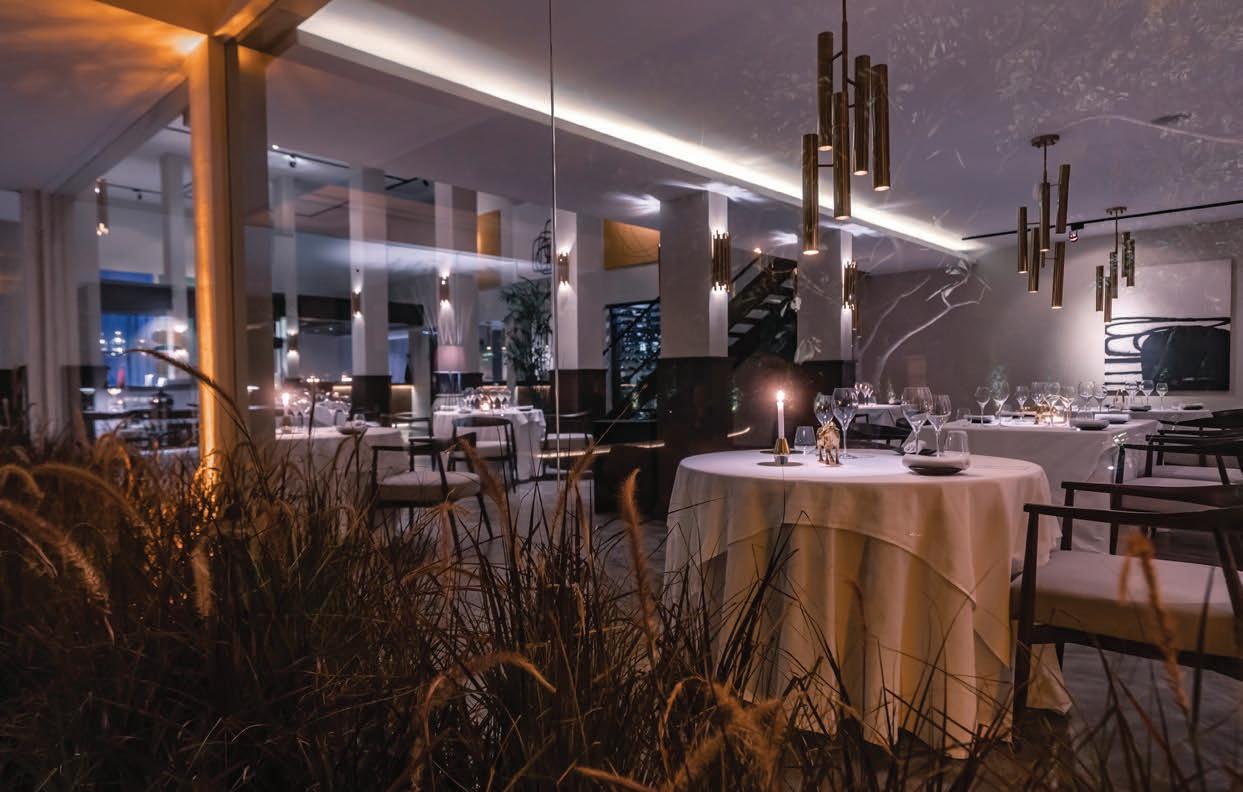
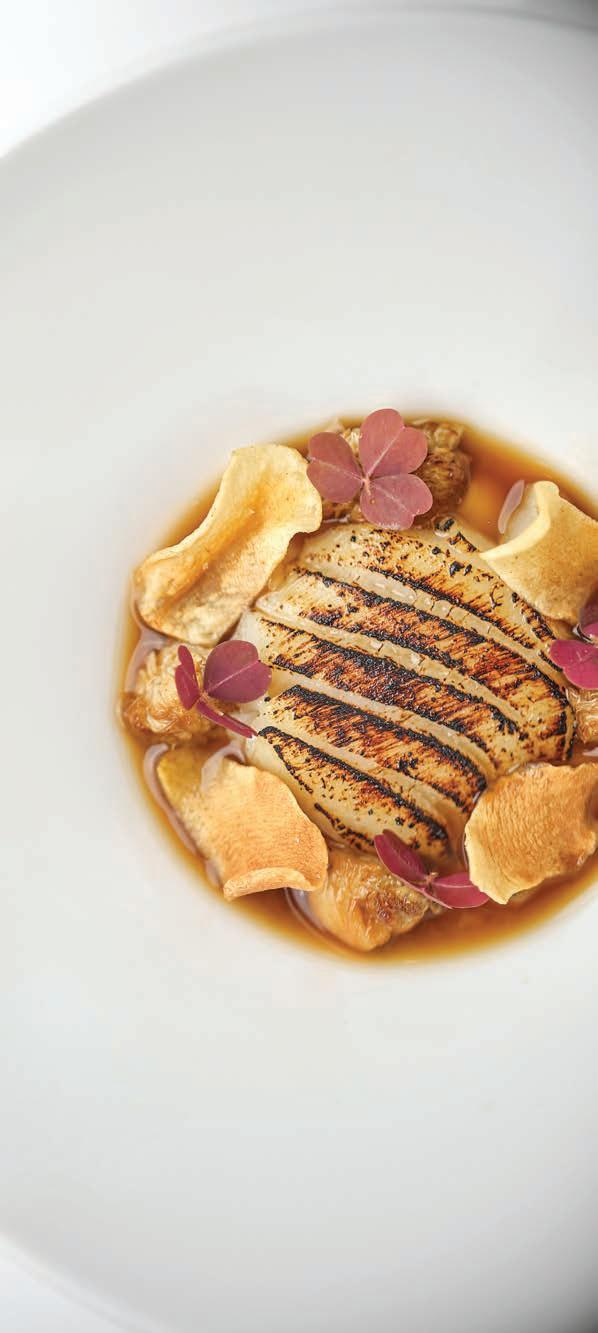

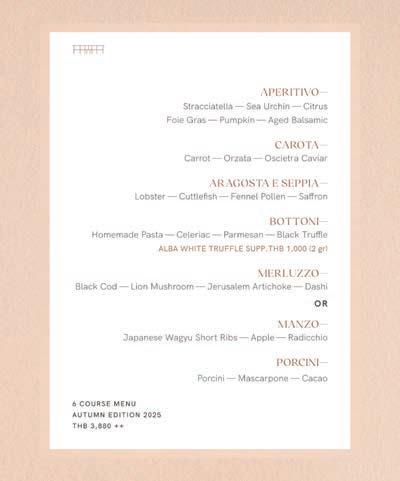
From his open-style kitchen, Chef Christian will take you on an unexpected culinary journey around Italy and its provinces, reinterpreting specialties with a unique twist. Christian blends indeed his native cuisine with creative and modern techniques, using high-quality imported products and delicious local ingredients.
In the past few years, the duo went on a regional tour to soak up some new avors, techniques and inspirations. They rst reopened the kitchens of the iconic Strand in Yangon, Myanmar. Then, Chef Christian joined Six Senses Koh Samui as Executive Chef and honed up his skills in sustainable ne dining.
More than just an ode to Italian savors,“CLARA” is also a tribute to Chef Christian’s beloved wife, best friend and business partner, gracefully working her magic at the tables and sharing their common passion for ne cuisine with a deep sense of humanity.
They now o er a Chef’s Christian culinary journey in 6 or 8 course with seasonal changes, with the option of re ned wine pairing, crafted by passionate sommelier Pong in collaboration with Edouard Marquis. We have been lucky enough to dine at CLARA twice.
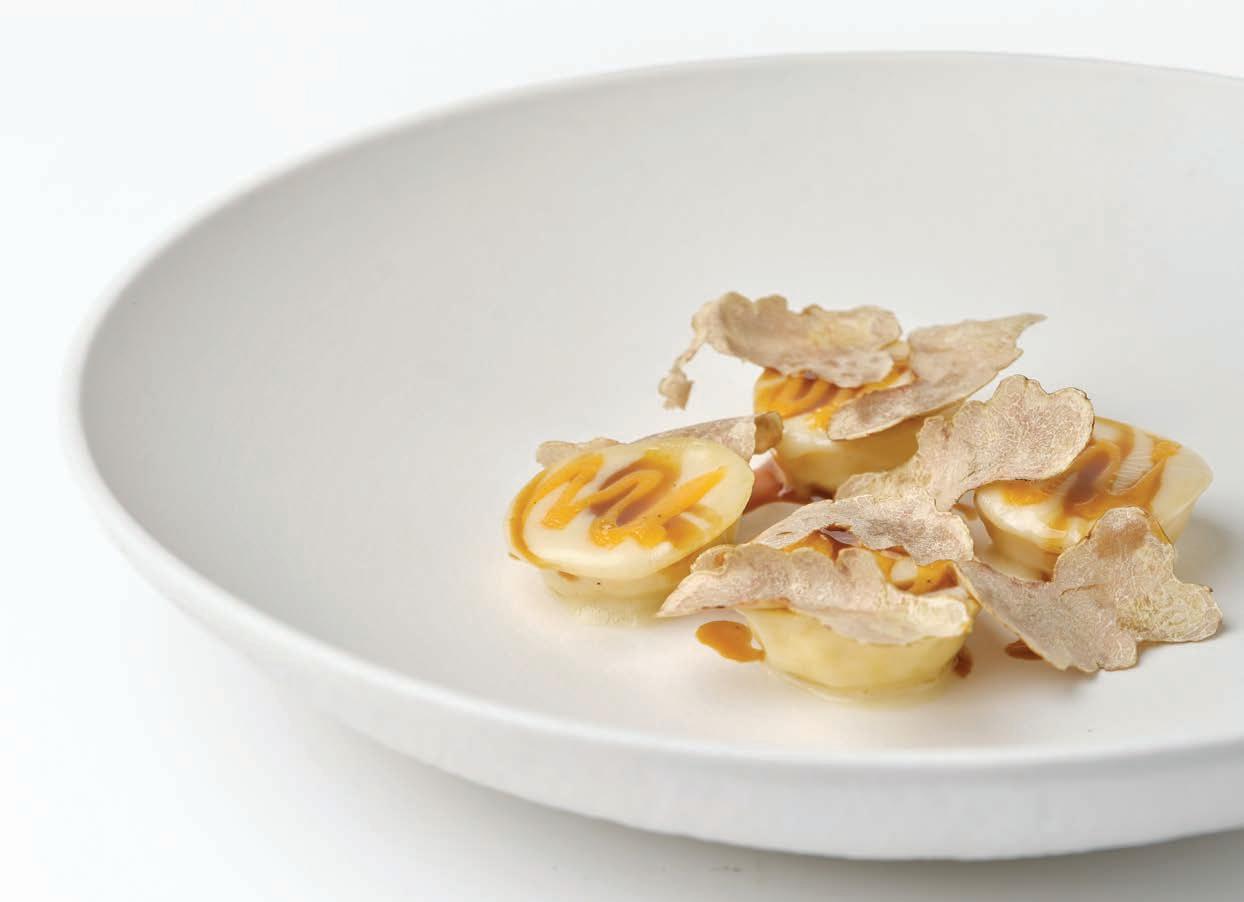
The rst time we were with DJ Franck Roger at the end of his Asian tour in 2021. He ended up in tears of joy and content, then the Italian side of our PR & Com manager Patrizia declared it was the best treat of her life! The second round was a year or so ago and with a totally di erent menu the feast of senses revealed on par. Again, we left wondering why this unique restaurant doesn’t have a Michelin star…
Even without the well-deserved star, CLARA has been listed in Michelin Guide since 2021. It has also been awarded by 50 TOP ITALY as the “23rd Best Italian Restaurant in the World in 2025” (over 50 restaurants). CLARA also received “Tre Forchette” by Gambero Rosso in June 2025 and recently got awarded in Rome by Gambero Rosso “Best Italian Restaurant outside of Italy 2026”. Chef Christian Martena received the award of “Dish of the Year 2023” for his Spaghetti Bruschetta while Clara Del Corso-Martena has received the award of “Maître of the Year 2024” by 50 TOP ITALY. ■
www.clarabangkok.com

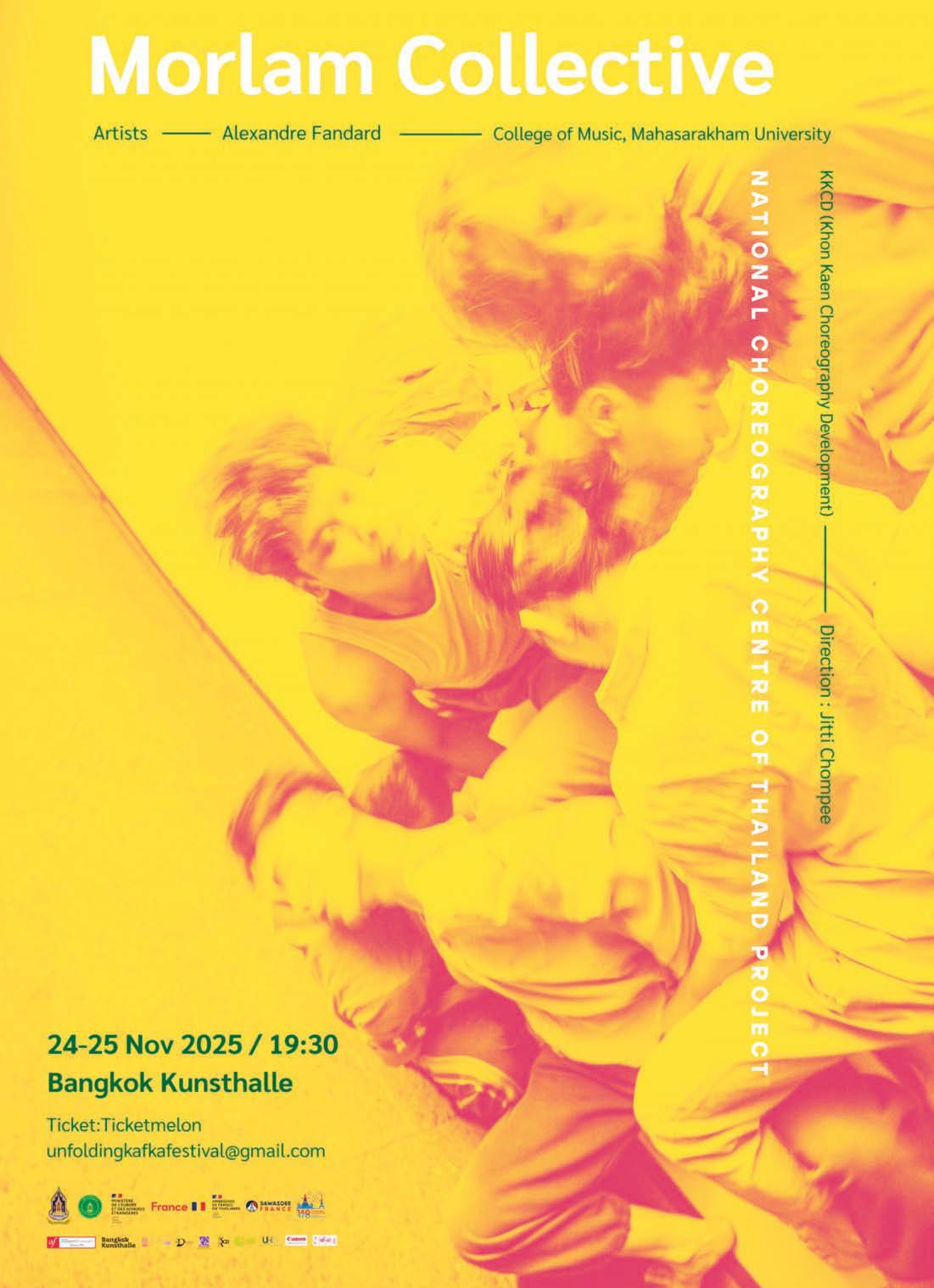
Gad Fezer
The Fields, as conceived by Bow “are like imagining a world where the arts take the lead,” she told Prestige back in 2019. As the year-round art curator for Wonderfruit, she mostly sees the festival as an “ethical celebration of arts, food, music and unchecked hedonism.”
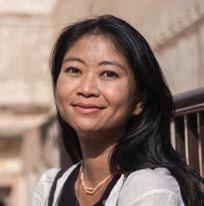
Trained in the visual arts, design and Asian art history, Bow began her curatorial career in Thailand in 2010 as co-director of BKK Arthouse, a notfor-pro t art space in a glass-walled room on the third oor of the BACC. Here she curated art, design and performance art exhibitions, many of which explored her interest in tactile and text-based works. Then came independent projects with various artists and cultural institutions and in 2014: Wonderfruit!
For Bow, curating for an outdoor festival rather than a concrete cube is really something else: “It’s a di erent ball game altogether,” she told Prestige in an interview featured
in 4 Leading Female Art Curators in Thailand you Need to Know. “When you’re creating in the open-air there are literally no boundaries, yet it is the most humbling experience. Each of Wonderfruit’s architectures and installations becomes intrinsically equal with nature, land, weather, living creatures… You will never have ultimate control of the work, and only once that is recognised and embraced can the art really excel. Art isn’t de ned by a presenting medium or form, but rather in its intention and the creative language used to engage with the world.”
www.instagram.com/bow_wasinondh
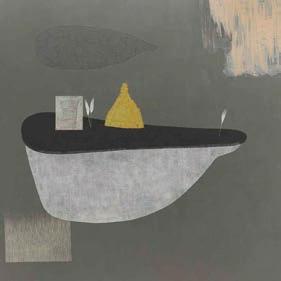
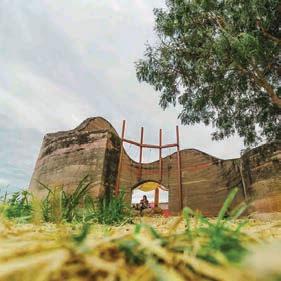
Many of the installations (permanent, semi-permanent or ephemeral) also serve as spaces for people to gather, whether in rest or in ritual.
In the Ancestral Forest, brand new installations “Gathering Tables Wonderfruit” were created by Pinaree Sanpitak to be used for nature-led programs connecting Wonderers with the natural world, through rituals of dining, botanical workshops and more. Natural stone bases connect directly with the ground, supporting

The land is the festival’s greatest collaborator and source of inspiration. Nature makes itself known in pieces in unexpected ways, in uencing and steering each artwork’s evolution.
When rst introduced in 2018, the installations of “Island” by Ruangsak Anuwatwimon were alienated from the tropical space around it. Growths within sculptural structures harvest moisture released from the ground, creating micro ecologies inside. Through time, Ruangsak’s work has e ectively rewilded itself. Last year, one of the trees that sprouted through the artwork from inside had its branches snapped in a tropical storm, shattering part of the structure and
stainless-steel tops where the artist’s hand engravings tell layered stories.
In contrast, “Embrace:Voices Above and Below” by Hear & Found invites you into a glimpse of the world as experienced by the indigenous people who live in profound communion with the Earth.
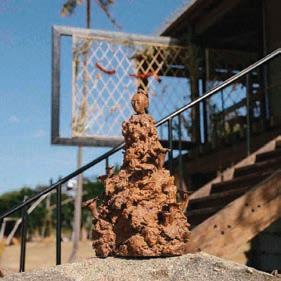
leaving an opening for the branch to heal and resprout. Meanwhile, the mirror mosaics of “Mindfulness Amidst Changes” by Sanitas Studio draw closer to nature. In 2022, a brown salwood tree grew right beside the installation. Embracing the non-invitation, Sanitas built into the tree – and last year, added earth walling outside the glittering structure to invite further local plant species in. Within “The Grower” by Dusadee Huntrakul, there is always life hidden in the sculpture’s organically formed nooks and folds. A roster of critters and insects build cocoons in the bronze, casting webs and tracing colorful excretions amongst the trumpet-like mushrooms sprouting all over its body.
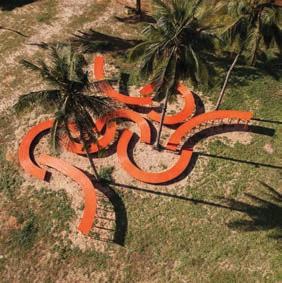

One of the things art in The Fields asks is: can art be the medium that deepens how we see and feel our world? Although innocuous, a shift in elevation has an e ect on how we behave and how we feel.The modular, curving shapes of “The Walk” by Boonserm Premthada have become an iconic landmark. A brilliantly colored, oating walkway, it encourages both motion and stillness, attracting people of all ages at di erent times of day. It reframes the grass beneath and the coconut trees that
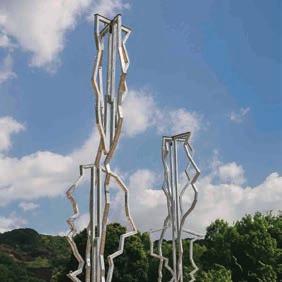
“Returning artists evolve in their participation,” Bow shares. “Their practices shift over time and are re ected in their continual work in The Fields.”
Tawatchai Puntusawasdi’s steel sculpture series “Contour Distort” began as a cerebral, metaphysical project. Tracing a section around the body’s void, Tawatchai distorted the gurative outline into nearly unrecognizable forms. Now, with the artist’s own spiritual journey from abstract to humanist, you can almost see the shift of the sculptures and their shadows as the most recent addition grew closer to a more identi able bodily shape.
stand around it, allowing us to view The Fields from new vantage points.
Meanwhile, the thin walls of “Microtopia” by TeaRoom create a pocket of Zen beneath a tree cluster. Its erected barriers are inspired by Japanese architecture that is designed more to lend context to a space than keep nature out, encouraging focus and respect to the ritual space. It’s a small world woven into The Fields, where experimental tea ceremonies are hosted in a microcosm of harmony.

Evolving too this year is Satit Raksasri’s “Singing in My Mind” (formerly “A Singing Sea”). Once, this piece spoke to pollution in our oceans, covered with discarded materials collected from the beaches and seas of Thailand. In December, the domed structure softens, welcoming Wonderers into its cocoon-like structure. Exchanging plastic waste for fabric o cuts and found materials, the artist forms a patchwork tableau of human and non-human gures.
https://wonderfruit.co
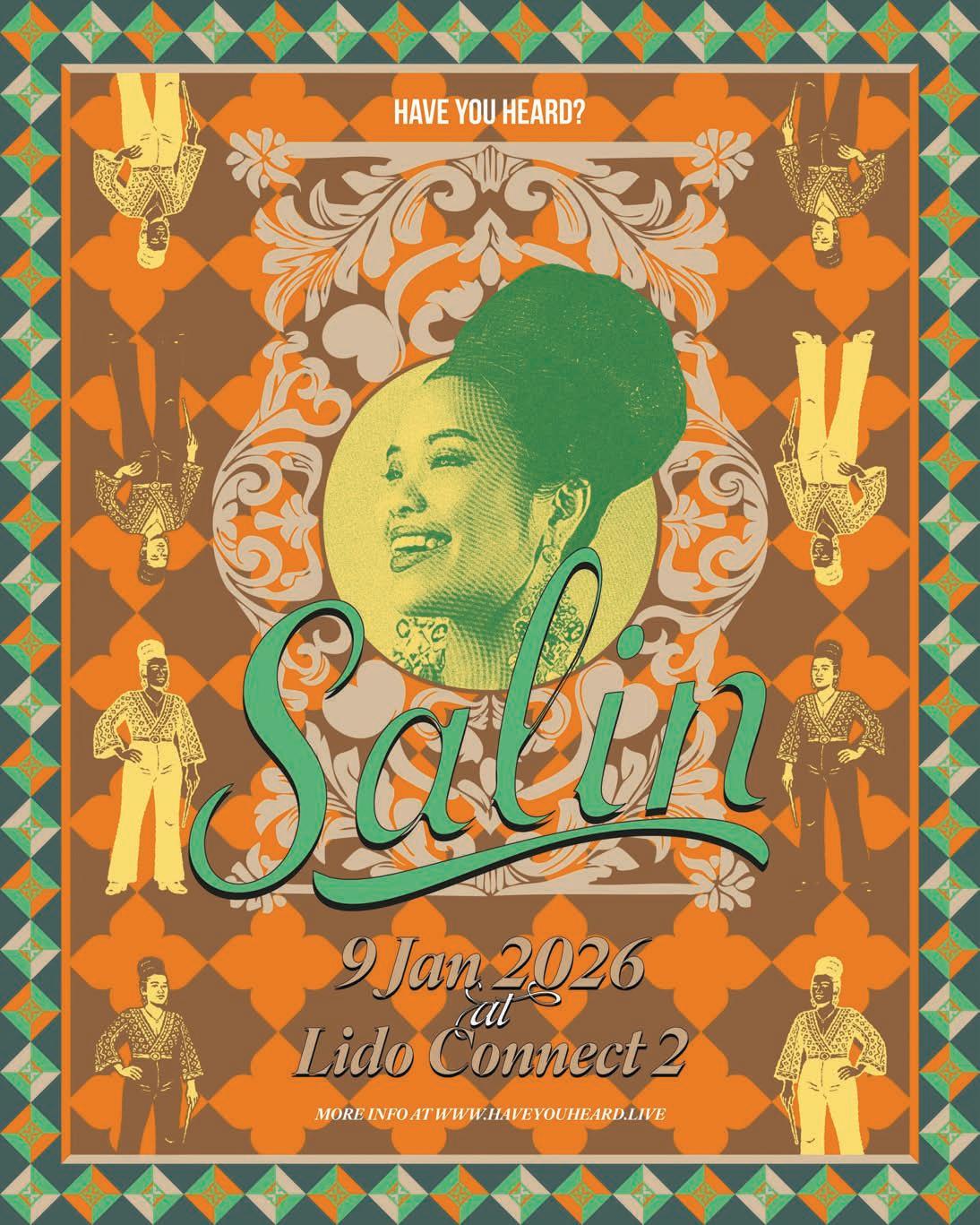

Over the past decade, The Fields have been filled with the music of cultures from all corners of the world. Wonderers have heard Thai artists who mix classical sounds with electronic, lo-fi and hip-hop music, a collective of Tuareg musicians, a folk group from Nepal, a traditional Nepali Kirtan, fanfares and Molam enthusiasts, as well as the finest of the electronic scene, some at unforgettable sunrises, some in the deep darkness of The Quarry, others under a disco ball or even at 360° at the Polygon…
To celebrate this 10-year chapter, we won’t miss these 9 legendary artists!
In the history of British electronic music, some names resonate with the quiet force of those who shifted the ground beneath their feet without theatrics. A Guy Called Gerald belongs to that rare class. Gerald Simpson is not merely a producer or performer. He is one of the foundational architects of a sonic language that travelled from Manchester’s warehouses to international dance oors, evolving across four decades with a vitality that keeps him unmistakably relevant. In 1988, one track changes everything: “Voodoo Ray.” It is no exaggeration to call this piece an anthem, one of the rst UK acid house records to achieve a near-mythical aura. Its hypnotic 303 line, spectral vocal snippets, and minimalist intensity form a manifesto.
But Gerald refuses to become the custodian of a single success. In the early 1990s, while many artists remain attached to acid house formulas or dive fully into the rave explosion, he takes a di erent path. He turns toward complexity and depth, exploring sound design and rhythmic fragmentation that foreshadows the rise of breakbeat and jungle.
Across decades, he continues to reinvent himself. His live performances are particularly revealing. Few electronic artists perform with such a degree of improvisational risk. For Gerald, the stage is not a place to play pre-arranged sets. It is a living laboratory. He manipulates hardware in real time, builds sequences, deconstructs rhythms, and reshapes entire pieces spontaneously.
His performances feel organic – alive – animated by the human-machine dialogue he has championed from the beginning.
This philosophy explains why he often critiques the industry’s obsession with polished, pre-packaged perfection. To Gerald, electronic music is a performative art, not a product. Fiercely independent – you won’t nd his tracks on Spotify – he prefers to save his music for the full live experience.
The beauty lies in the fragility of live improvisation, in the possibility that a sequence might shift unexpectedly, that a machine might misbehave in a way that becomes magic.
Beyond his own output, Gerald has become a mentor gure, an inspiration to producers across jungle, drum & bass, and techno. His imprint on the UK rave explosion is deeper than simple chronology. He represents a way of creating: independent, exploratory, grounded in both intuition and craft. His career gains even greater relevance as contemporary audiences rediscover the roots of electronic dance music.
https://www.instagram.com/aguycalledgerald
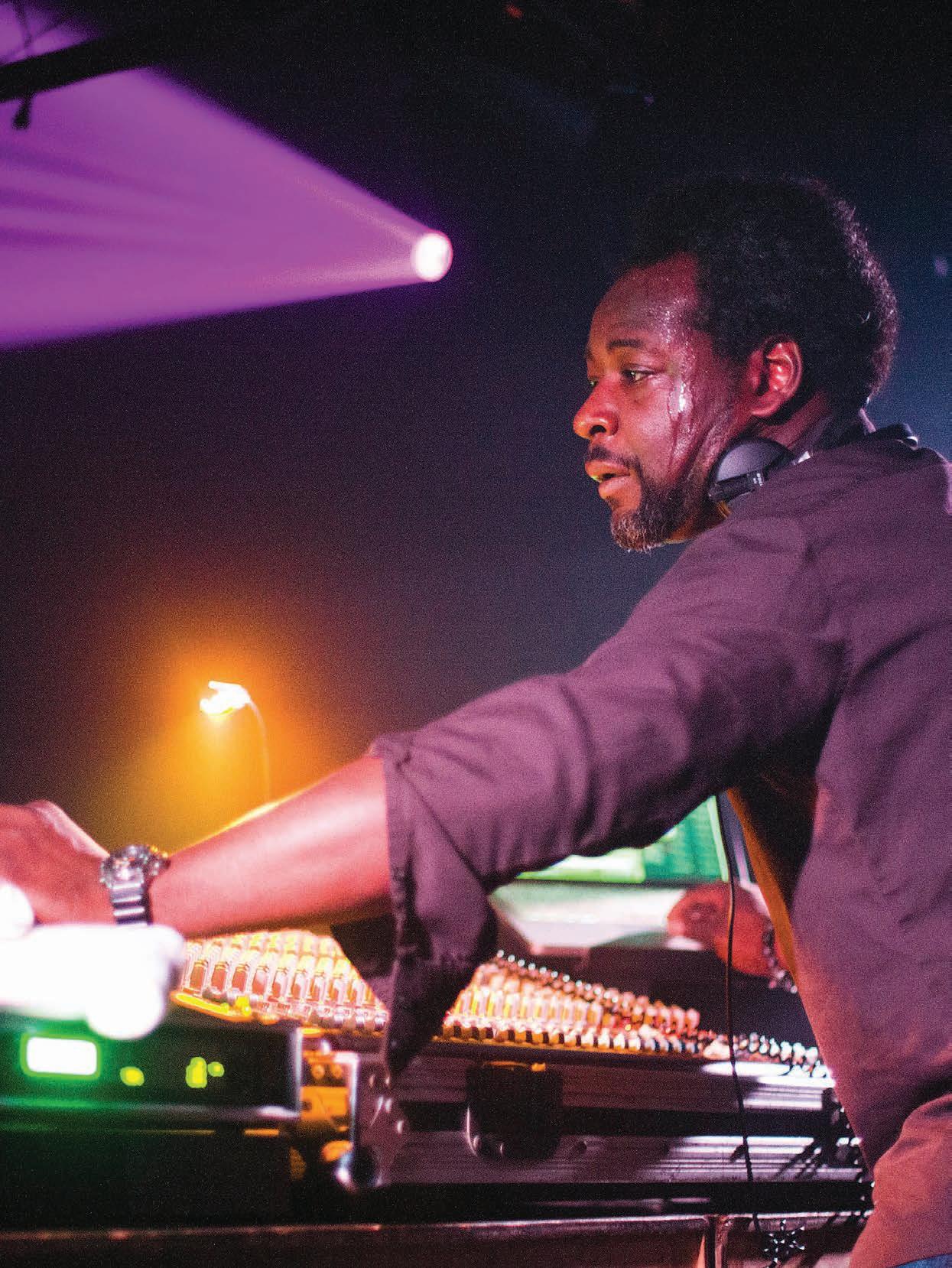
Colleen “Cosmo” Murphy is one of the most respected and singular voices in contemporary music culture. DJ, producer, radio host, curator, and founder of Classic Album Sundays, she occupies a unique position at the crossroads of club culture, high- delity listening, and musical storytelling. In a world obsessed with speed and instant consumption, she embodies a slower, more attentive way of experiencing music: listening to understand, understanding to share. Her rst DJ steps happen in New York in the late 1980s and early 1990s – an era still buzzing with the legacy of block parties and the Paradise Garage.There, she meets François Kevorkian, the legendary DJ and producer who becomes her mentor. From him, she learns a central truth: a DJ is not just someone who plays records, but someone who tells a story. This philosophy permeates her work. Colleen’s style is not de ned by genre but by intention. She crafts narratives using jazz-funk, deep house, cosmic disco, soul, rare grooves, and sophisticated ballads. What unites her sets is an unmistakable human warmth. She plays to touch hearts, not merely to energize bodies. Her fascination with the object of sound leads her to create Classic Album Sundays in 2010. Frustrated by the distracted, compressed listening habits of the digital age, she designs sessions where audiences listen to cult albums on high-end audio systems, in silence, from start to nish. No conversation. No multitasking. Just deep, focused listening.
While her curatorial work garners admiration, Colleen continues to perform in clubs worldwide. Her DJ sets, rich in groove and storytelling, bridge eras and styles. Even during peak energy moments, she maintains elegance and emotional depth. Her encyclopedic knowledge of music – built over decades of collecting, studying, and documenting – feeds her instinctive ability to connect with audiences.
Colleen is also a signi cant advocate for women in music, not through slogans but by example. Her career stands as a quiet rebuttal to the notion that electronic music is a masculine domain. She has shaped her path with independence and integrity, becoming a role model without seeking the spotlight.
Over the years, she has become a cultural mediator, someone who builds bridges between generations and genres. She invites jazz fans toward house music, introduces rock audiences to disco, and shows audiophiles the beauty of DJ culture. For her, music is a global map where everything is connected.
In an age where attention is fragmented, Colleen’s work feels essential. She reminds us that listening is an act of care. Her projects – lectures, workshops, residencies, listening sessions – continue to deepen this philosophy.
https://linktr.ee/ColleenCosmoMurphy

The collaboration between Howie B and Hiraki Sawa is anything but incidental. It represents a precise moment where electronic music steps beyond the realm of pure sound to become a full audiovisual experience. 4 Sticks, their live performance, is not a concert in the traditional sense. It is a sensory proposition, a dialogue between Howie B’s minimalist electronic textures and the enigmatic visual worlds of Hiraki Sawa, the Japanese artist known for video works that turn everyday objects, places, and ghosts of memory into dreamlike narratives.
Howie B, born Howard Bernstein in Glasgow, has long been a key gure in British electronic music. Producer, sound engineer, composer, and experimentalist, he has collaborated with some of the most in uential artists of the last thirty years – Björk, U2, Tricky, Massive Attack. His sound world blends experimental dub, abstract ambient, trip-hop atmospheres, and a peculiar softness that pierces even his darkest tracks. He belongs to a generation for whom the studio was not merely a workspace but an instrument in its own right.
Hiraki Sawa brings a visual language deeply rooted in memory and quiet poetry. His videos feature rooms where miniature gures walk across kitchen tables, airplanes glide silently through apartments, objects multiply like hallucinations, and the familiar becomes uncanny. Sawa’s works rarely follow linear narratives; instead, they evoke states of mind, ambiguous impressions, fragments of dreams. 4 Sticks emerges from the intersection of these two sensibilities. The project rests on a simple but radical idea: create a piece in which sound does not illustrate image and image does not merely accompany sound. Instead,
the two forms evolve independently, sometimes intersecting, sometimes drifting apart, but always remaining in tension.The performance explores precisely this fertile space where mediums coexist without hierarchy. On stage, Howie B manipulates textures, samples, noise fragments, dub echoes, and percussive patterns. Many elements are built in real time through controlled improvisation. His live approach focuses on nuance rather than the spectacle. Sounds emerge slowly, like memories resurfacing. The performance leans toward immersion: an atmosphere rather than a display of virtuosity. Sawa’s images, projected across multiple surfaces, form a parallel universe. Objects move on their own, people appear and vanish, spaces expand and contract. His visuals evoke fragility, repetition, meditative loops, and a feeling of being suspended between worlds.The images invite contemplation rather than interpretation.
The power of 4 Sticks lies in the interplay of temporalities. Howie B’s music evolves in layers, expanding and contracting, while Sawa’s images operate with a hypnotic rhythm that resists linear development. The result is a sense of suspended time. The audience is invited into a slowed-down mental space, rare in today’s overstimulated landscape.
Memory is a central theme. Both artists work with fragments – fragmented sounds, fragmented images, fragmented gestures. The performance often feels like reconstructing a dream one remembers imperfectly.This incompleteness is the point: 4 Sticks is not about clarity but about evocation.
www.howie-b.com
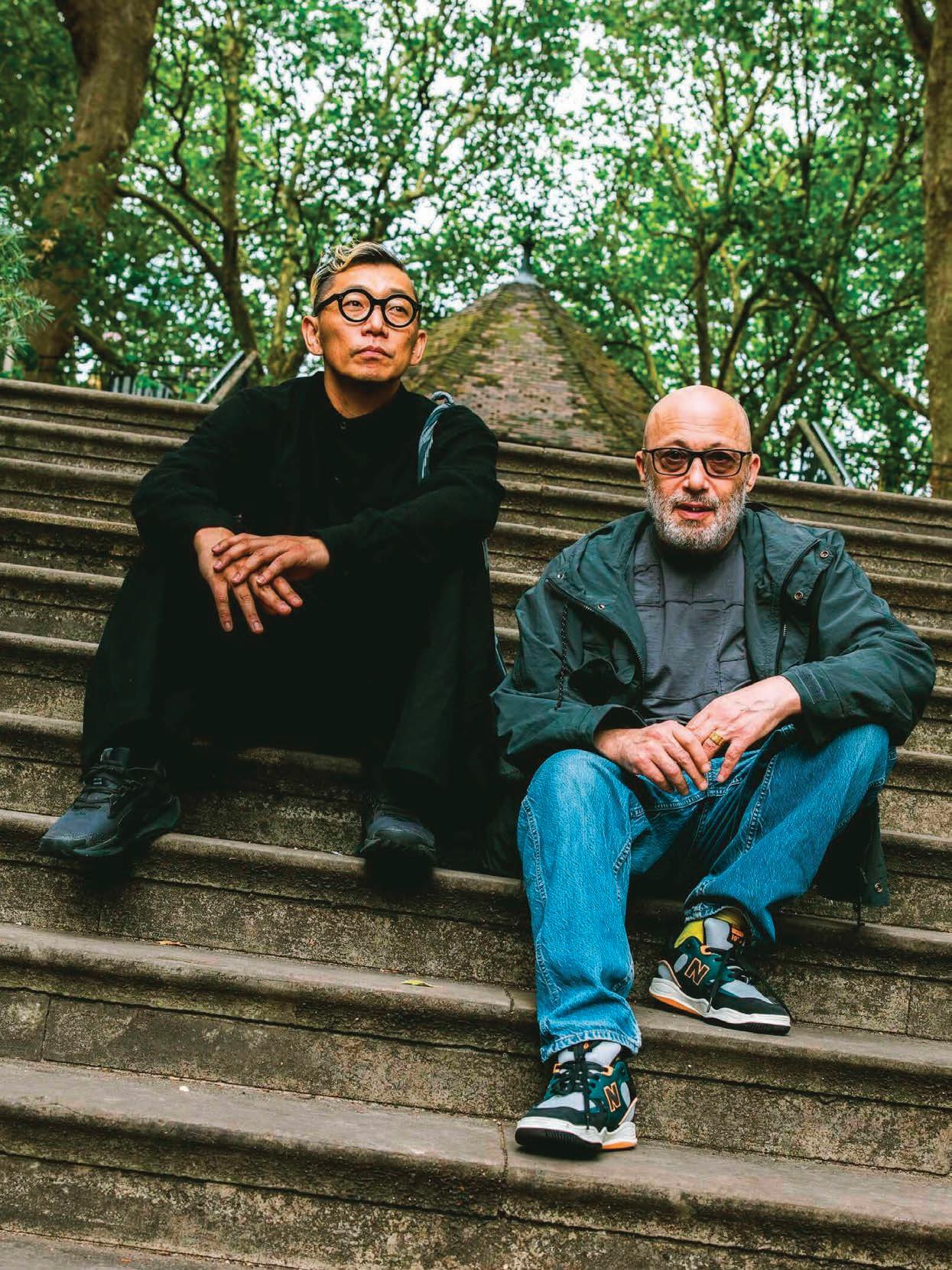
Mark de Clive-Lowe is one of the rare artists who can bridge the entire history of jazz, the pulse of club culture, and the possibilities of live electronic performance. Pianist, producer, composer, improviser – he has developed a singular method he calls live remix. On stage, he uses piano, synths, samplers, drum machines, and looping technologies to build, transform, and deconstruct music in real time. Nothing is pre-packaged; everything is live.
Born in Auckland to a Japanese mother and New Zealand father, Mark grew up in a household where the piano held a central place. He studied jazz with deep devotion, absorbing the in uences of Art Tatum, Herbie Hancock, McCoy Tyner, and other giants. But he also fell in love with electronic music – drum & bass, broken beat, house.This dual heritage became his artistic DNA. Live remix is a natural extension of his hybrid upbringing. During a performance, Mark begins with a simple idea – a motif on the piano, a rhythmic gure, a harmonic loop. He records it, processes it, layers it with beats, then improvises on top. The piece evolves organically. Loops shift, harmonies mutate, the groove breathes and reforms. It feels less like assembling a track and more like watching music think out loud.
What sets Mark apart is uidity. Many electronic artists build structures in static layers. Mark works in waves. He can start with a meditative piano solo, morph it into a broken beat groove reminiscent of early 2000s West London, and take it into deep, soulful house – all within
a single improvisation.This elasticity is not stylistic confusion. It is coherence born from freedom. The technique is impressive, but technique is never the point. Live remix is about creating in the present moment. Mark uses machines not as crutches, but as collaborators. He transposes the spirit of jazz improvisation into an electronic context, where spontaneity becomes the core principle. Each performance is di erent because each moment is di erent. In TRIO, Mark returns to the instrument not as an accessory, but as a grounding force, a space where melody, phrasing, and improvisation remain central. His in uences are clear: the harmonic depth of Herbie Hancock, the modal power of McCoy Tyner, the lyrical elegance of Bill Evans, and the searching spirit of Keith Jarrett. Yet none of this feels borrowed. Mark processes these in uences through his own vocabulary, shaped equally by jazz history and by his years in the London broken beat scene which shaped his rhythmic imagination. Surrounded by innovators like Bugz in the Attic, Kaidi Tatham, and 4hero, Mark absorbed a culture that treated rhythm as a living entity – polyrhythmic, syncopated, soulful, futuristic.This sensibility remains audible in his work today.
Community is central to Mark’s ethos. His projects CHURCH, the Live Remix Sessions, Hikaru Monogatari often function as hubs where musicians, dancers, DJs, and audiences intersect. He creates environments where improvisation is shared, communal, and ritualistic. Music, for Mark, is a meeting place.
https://bio.site/mdc

Apioneer of trip-hop and abstract hip-hop. Known for his heavy, spatial beats and genre-defying productions, he has performed in over 60 countries and 350 cities, appearing at major festivals like Glastonbury, Sonar and Coachella. Since launching his solo career in the early ’90s, he has remained one of Japan’s most internationally respected artists.
Widely acclaimed for putting Japanese hip-hop on the map and for his releases UK-based label Mo’ Wax, DJ KRUSH is recognized as one of the foundational architects of trip-hop and instrumental hip-hop, not only in Japan but globally. His in uence stretches far beyond genre boundaries, touching producers, lmmakers, experimental artists, and anyone attracted to the quiet intensity of beat-driven atmospheres. Krush has built an entire universe where rhythm becomes breath, silence becomes narrative, and texture holds the emotional weight of entire worlds.
Born Hideaki Ishi in Tokyo, Krush entered the hip-hop scene in the early 1980s, one of its earliest adopters in Japan. Rather than gravitating toward the high-energy bravado of rap, he saw in DJing a form of sonic calligraphy.The turntable was not a tool but a brush. Sampling was not extraction but collage. From the beginning, he approached beat-making with a painter’s sensitivity. His early albums – Krush, Strictly Turntablized, Meiso, MILIGHT – laid the groundwork for what would become his signature style: minimalist beats, deep subbass, cinematic atmospheres, and an almost meditative use of silence. Where many producers seek density,
Krush seeks space. In his music, silence is alive. It is charged. It vibrates between the beats like a shadow. Krush’s sense of timing is one of his great strengths. His beats progress slowly, carefully, like ink spreading on paper. His compositions never rush toward resolution; they hover in tension, allowing the listener to fall into the space between sounds.This restraint gives his music emotional gravity. Listeners often describe his tracks as nocturnal: music that lives in alleyways, in urban quiet, in internal landscapes.
Live, DJ Krush is a study in precision. He performs without spectacle – no theatrics, no posturing. He approaches his equipment with calm intensity, shaping the sound with small, decisive gestures. His sets evolve like slow-burning narratives. The audience is absorbed in a world that feels simultaneously intimate and vast. Krush’s in uence is enormous. He showed that hip-hop production could be subtle, atmospheric, introspective. His work paved the way for downtempo, left- eld beats, instrumental hip-hop movements, and the cinematic sound design found in modern electronic music. Artists across trip-hop, ambient, beat science, and experimental scenes still cite him as a reference.
What makes DJ Krush timeless is his refusal to follow trends. He continues to evolve, exploring collaborations with traditional Japanese musicians, jazz instrumentalists, spoken-word artists, and experimental performers. We can wait to hear the wonder fruits of his encounter with Molam.
http://djkrush.jp/jp
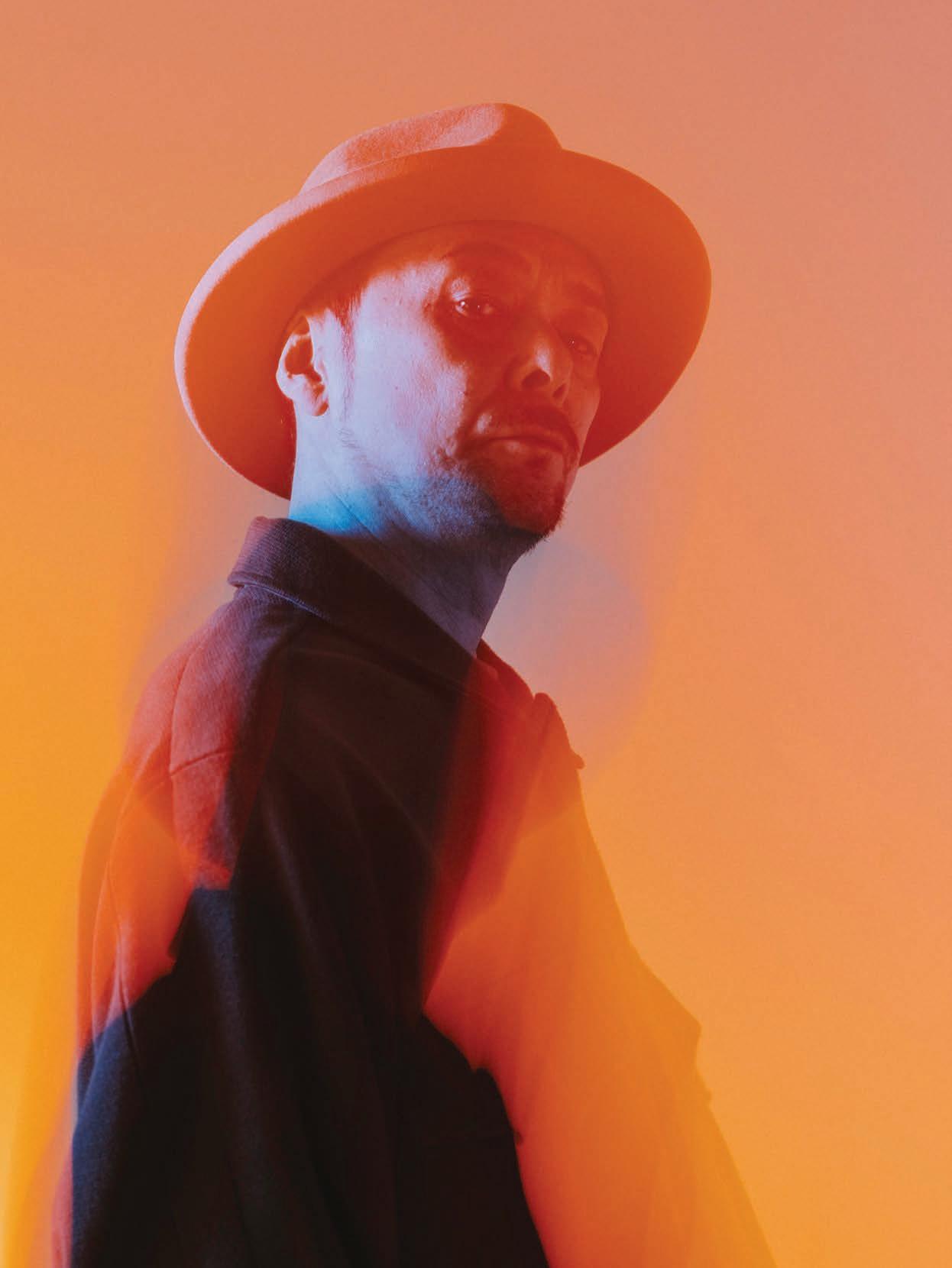
An institution in Sound System culture, refounded by selecta Daddy Ad in 2004,Trojan Sound System have spread their message of love and unity for more than 2 decades. This year, Trojan Sound System share their sound to The Fields through a Reggae Disco DJ set.
Trojan Sound System is the living embodiment of a musical and cultural heritage that has shaped Britain for over half a century. Born from the legendary Trojan Records label, the collective stands as an ambassador of reggae, ska, and dub culture, carrying forward the traditions of Jamaican sound systems while adapting them to contemporary audiences.
Trojan Records, founded in London in 1968, played a pivotal role in introducing Jamaican music to the British public. Through its catalog, generations discovered ska, rocksteady, early reggae, and dub. These sounds profoundly in uenced British youth subcultures – mods, suedeheads, punks, and later the emerging sound-system scenes. The creation of Trojan Sound System emerged from a clear purpose: keep the culture alive in its most communal and celebratory form.
Trojan Sound System brings together selectors, MCs, and veteran vocalists. Their performances recreate the warmth and power of traditional Jamaican sound systems: deep bass, hypnotic riddims, long transitions, dub versions, and participatory energy. The stage becomes a community space rather than a platform. The crowd
doesn’t just listen – they join in, sing, dance, and respond to the MCs’ calls.
Their sets weave seamlessly between decades of classics from the Trojan catalog: Desmond Dekker,The Pioneers, Toots & The Maytals, Ken Boothe, Lee “Scratch” Perry, and countless others. But this is not nostalgia. Trojan Sound System reshapes these tracks through live dub mixing, extended versions, toasts, and improvisational ourishes. Familiar songs gain new life, expanded into long, hypnotic passages.
Authenticity is their cornerstone. Every member is deeply rooted in reggae culture – not as outsiders adopting an aesthetic, but as participants who understand the cultural, historical, and social signi cance of the music they represent. Their knowledge is lived, not imitated. Trojan Sound System appeals to multiple generations. Older fans reconnect with formative sounds; younger audiences discover the emotional and social depth of Jamaican music.The collective creates a rare space where barriers dissolve and unity emerges through rhythm. In an era where dance culture often chases intensity and spectacle,Trojan Sound System reminds us that the heartbeat of music lies in warmth, patience, groove, and connection.Their mission is simple and enduring: honor the roots, ignite the dance oor, and keep the spirit of sound system alive.
https://www.facebook.com/trojansoundsystem

Theo Parrish is a Washington, D.C.-born, Chicago-raised DJ, producer, selector, arranger, writer, sculptor, car lover, visual artist, lecturer and father. A pivotal in uence on Detroit’s music scene since 1995, Parrish continues to engage, challenge and rede ne the limits of what we call Black dance music, serving as an example of creative independence, masterfully mixing soul with technical brilliance.
Theo Parrish is one of the de ning gures of Detroit house, an artist whose mixes and productions have reshaped the expectations of what dance music can be. He approaches DJing and production not as entertainment but as an expressive art form – one rooted in Black musical traditions, community consciousness, and a fearless commitment to experimentation.
Raised amid the Chicago’s deep musical lineage, jazz, Motown, gospel, heavy funk… Theo develops an early appreciation for rhythm and soul. His later studies in visual arts shape his understanding of composition. He begins to see DJ sets as collages, sculptures made from sound, where each fragment carries meaning and history.
In the 1990s,Theo moves to Detroit, a city whose artistic energy resonates with his sensibilities. Surrounded by musicians, DJs, dancers, and visual artists, he develops a unique approach to House music: longer, deeper, rawer, more unpredictable.
His sets are known for their length, their narrative pacing, and their emotional range. He can play a jazz record from the 1970s, follow with a distorted drum workout,
then slip into soulful house without warning. Genre is irrelevant. Truth is not.
Theo’s productions on his label, Sound Signature, re ect this philosophy. Tracks like “Sweet Sticky,” “Solitary Flight,” and “Be in Yo Self” demonstrate a signature style: grooves that feel handmade, textures that seem sculpted rather than programmed, rhythms that stretch and warp. His music often feels alive, almost breathing, with imperfections functioning as expressive tools.
A Theo Parrish set is an experience. Not always easy. Not always smooth. But always transformative. He challenges the dance oor, pushes listeners toward introspection, invites them to surrender to the unexpected. The reward is a feeling of unity, depth, and release that few DJs can match.
Beyond music,Theo is an active contributor to Detroit’s cultural life. He organizes workshops, supports young artists, and uses music as a tool for empowerment. He champions a vision of dance culture built on community and respect.
Theo Parrish remains a vital force. While the global electronic landscape often leans toward uniformity, he stands rmly in his own tradition: experimental, soulful, political, deeply human.
www.instagram.com/soundsignature
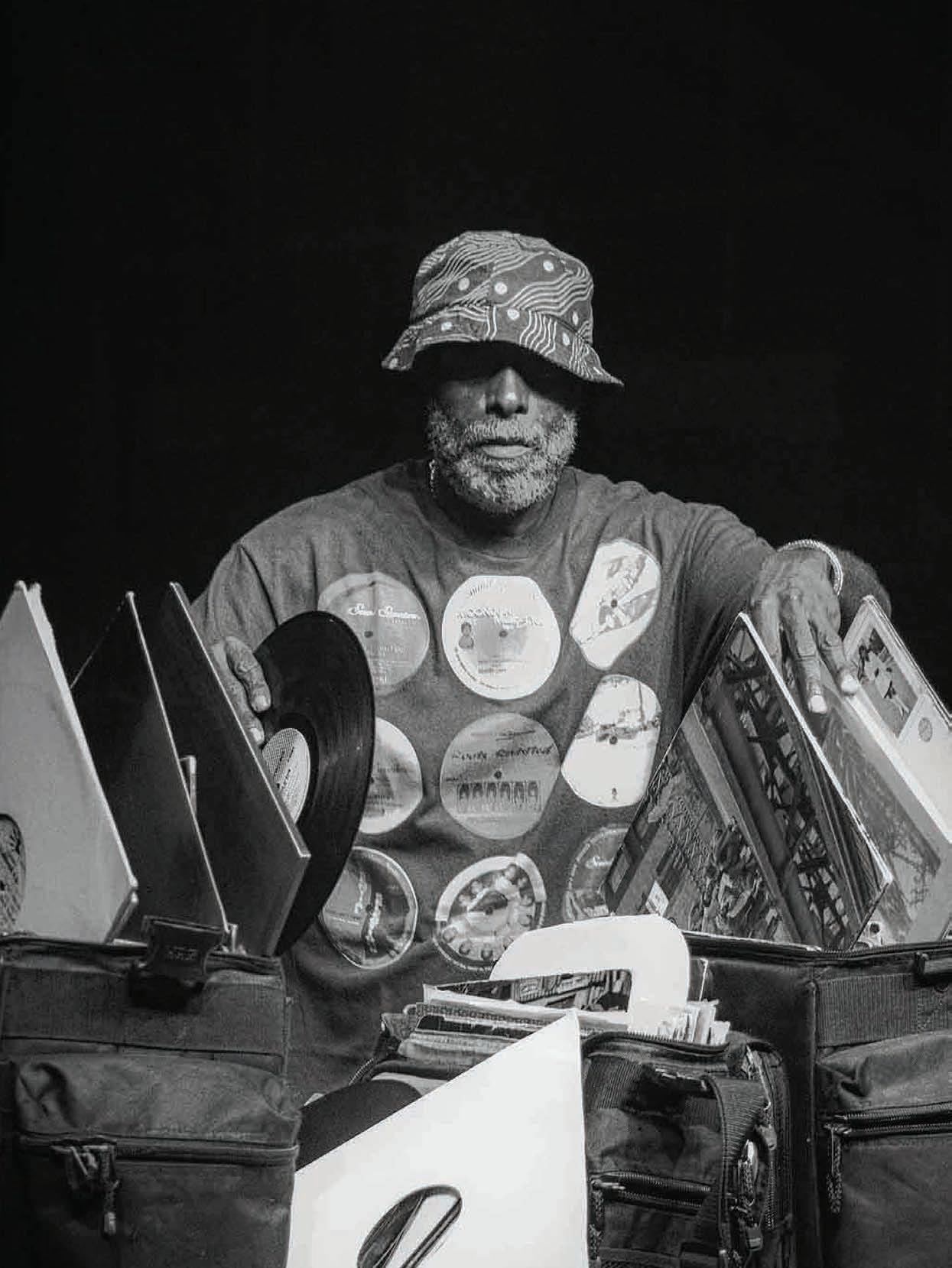
Tama Sumo started DJing in 1993 in Berlin, quickly becoming a regular at di erent residencies around the city. As a proli c lover of vinyl and known to play to crowds and atmospheres, she shares her passion for music and life with her partner Lakuti.
An experienced music curator, producer, Uzuri artist agency and label head, Lakuti’s longstanding career has been shaped by elevating her scene and community. Together,Tama Sumo and Lakuti are the makers of Your Love events in London.
Tama Sumo & Lakuti are among the most respected duos in contemporary club culture – not only for their musical excellence but also for the values they champion. Together, they embody a vision of nightlife built on inclusivity, empathy, and artistic integrity.
Tama Sumo, long-time resident DJ at Berlin’s Panorama Bar, is known for her uid navigation between house, techno, disco, soul, and Afro-infused rhythms. Her sets are warm, emotionally articulate, and always human rst. She avoids shock-value selections in favor of slow-burning grooves that build trust and intimacy.
Lakuti, founder of the Uzuri label and a tireless cultural organizer, brings her own artistic and social vision to the decks. She is a force in championing underrepresented artists, curating events, and creating safer, communitydriven dance spaces.
Together, their DJ sets form dialogues. One introduces a soulful uplift; the other follows with a deep, rhythmic counterpoint. They weave stories. They shape energy with patience. They play for the room, not for the ego. Their chemistry translates into a rare emotional honesty. Their set at Solar stage in 2023 will remains as mythical as the nal with La Mamie’s and Camion Bazar in 2019. Their influence goes beyond music. Tama Sumo & Lakuti advocate for safer club environments, represent marginalized voices, and challenge the industry’s structural inequalities.They show that nightlife can be joyful, political, and compassionate at once.
Their sound is rich: disco classics, deep house gems, African treasures, raw techno cuts, soulful surprises. Each selection carries intention.Their sets resonate with audiences because they re ect lived experience – joy, struggle, community, pride.
Across festivals, clubs, and cultural institutions, Tama Sumo & Lakuti leave a lasting impression: dance as care, music as connection, nightlife as a place where everyone deserves to belong.
www.instagram.com/tama_sumo


Maft Sai, the visionary behind Zudrangma
Records and the Paradise Bangkok Molam International Band, is known for his deep knowledge of vintage sounds and global music traditions.
Maft Sai is an archivist.Through reissues and cultural documentation, he has helped preserve rare Molam recordings, rescuing forgotten artists and restoring a piece of Thai identity often overlooked in mainstream culture.
Today, the Paradise Bangkok Molam International Band stands as a symbol of Thailand’s cultural dynamism – a bridge between tradition and modernity, between local memory and global curiosity.Their music tells stories of rice elds, migration, celebration, resilience, and pride. It proves that cultural heritage is not static; it grows, evolves, and dances.
Returning to Wonderfruit with a brand-new project, Maft Sai and the Isan Clan reimagine Molam by blending Thai percussion, traditional Isaan instruments and the deep resonant hum of the didgeridoo, horns, rummana drum and other indigenous sounds. Together, these elements push the boundaries of Molam into new territory.
The Paradise Bangkok Molam International Band is a captivating ensemble that seamlessly blends traditional Thai music with modern in uences.
Inspired by the vibrant and eclectic atmosphere of Maft Sai’s club Studio Lam, the band’s creative process was in uenced by late-night jam sessions with local and international musicians and DJs. Drawing inspiration from the rich heritage of Molam, the band infuses its sound with contemporary elements of funk, rock, electronic and psychedelic music.
Maft Sai is a central gure in the revival and interna-
tional recognition of molam and luk thung, two traditional genres from Thailand’s northeastern Isan region, he has reintroduced Thai psychedelic folk music to global audiences while preserving its roots.
Molam, built around the phin (lute), kaen (bamboo mouth organ), and hypnotic vocal patterns, was long considered rural folklore. Maft Sai challenged this perception by showcasing its trance-inducing rhythms, psychedelic undertones, and infectious dance energy. He demonstrated that molam is not a relic – it is a living, evolving tradition.
The Paradise Bangkok Molam International Band embodies this vision. Combining master musicians from Isan with international instrumentalists, the group crafts a sound that is both deeply rooted and boldly contemporary. The phin becomes electric. The rhythms intensify. The arrangements irt with funk, dub, and psychedelic rock. Yet the music remains unmistakably molam at its core.
Their concerts are joyous celebrations. Audiences – Thai and international – dance to rhythms that transcend borders.The band brings village spirit to modern stages: communal energy, playful improvisations, and a sense of ceremony wrapped in electri ed sound.
For this 10-year edition,The Paradise Bangkok Molam International Band returns to The Fields for a very special, one-o performance under the name Paradise Bangkok Molam “National” Project. This performance strips back their iconic tracks in an intimate, acoustic-only format, incorporating unique instruments like the rubber bridge guitar and acoustic phin crafted with bicycle brake wires.
https://linktr.ee/paradisebangkok






Chris Coda
With an Asian tour in 2025 that took him to Hong Kong, Tokyo, Seoul, and Bangkok, where we had the pleasure of listening to his set on the fantastic Beam Cube sound system; a highly anticipated return to the iconic techno label Tresor with the EP Fosph and an already legendary night at the Rex Club with none other than Alex from Tokyo, Moodyman, and the very rare St Germain, DJ Deep had the legitimacy to slip in a surreptitious “Wake Up, Bangkok!”
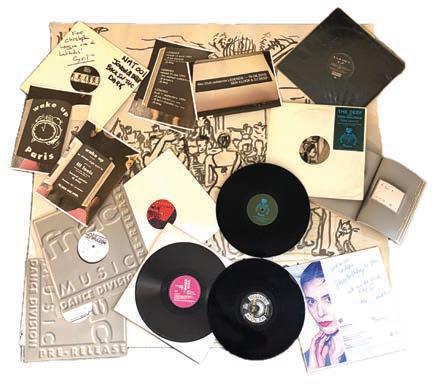
But that’s not really Cyril aka DJ Deep’s style. For us, he’s a living legend, but he sees himself as a passionate transmitter, not much more. Around 1988, the electric shock he received from a Jungle Brothers track prompted Cyril to frequent the rare house parties in Paris. There he quickly met a young DJ who was already well established: Laurent Garnier, who invited him to mix alongside him at Le Boy and La Luna.
He arrived early enough in the history of this music to grab the pseudonym DJ Deep, and he remained faithful to this depth when becoming a resident DJ at Wake Up parties, then at Legends at the Rex Club, seminal events for the nascent Parisian electronic scene. This
was followed by residencies at the Queen for Respect parties and a presence on FM radio, on Radio FG at the helm of A Deep Groove, then on Radio Nova…
Finally, he took on the role of producer, collaborating under various pseudonyms with Ludovic Navarre aka St Germain on the pioneering label Fnac Music Dance Division, which also released Laurent Garnier’s rst records and would later become F-Com. He teamed up with Julien Jabre and on the legendary Straight Up label with Olivier Portal and Franck Roger, which would soon become the rst artist to make a record on Cyril’s rst label: the famous Deeply Rooted House.
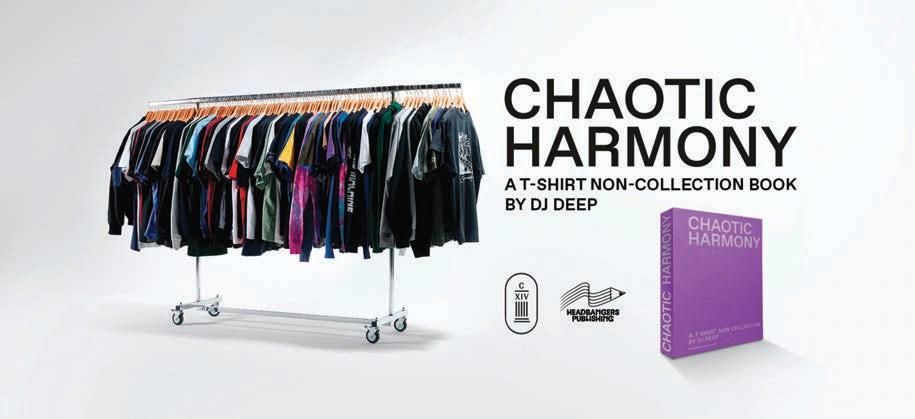
Cyril readily describes himself as a “ lter,” devoting hours of his precious time to digging through record stores around the world in search of gems to share. His love of House, Disco, Jazz, and Soul roots blends with his taste for the avant-garde, the underground, and the raw! He uidly alternates between the tangy grooves of good old House and the most radically abstract Techno.
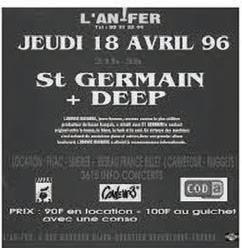
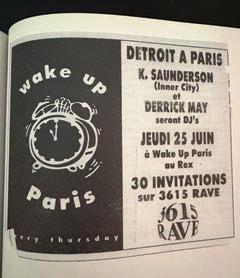
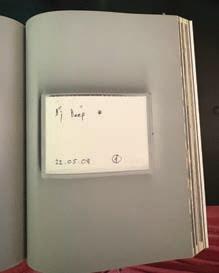
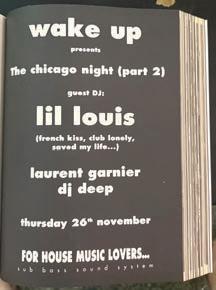
Deep is one of those DJs whose performances are described by aesthetes as very “musical,” very Body & Soul, based on danceable rhythms, but through mixes that always tell a story, a trip.
In recent interviews, he often repeated how much he comes “from a time when music was rst and foremost about … the music!”
After headphones and USB sticks (and record crates for the more daring),T-shirts are the most essential accessory for DJs, a mode of expression and sometimes a source of pride… Many vintage T-shirt collectors come to Bangkok to hunt for bargains, and rumour has it that some of Cyril’s colleagues are also passionate collectors, such as DJs Gregory and Yellow. Our team even accompanied our guest DJ Gwen last year to the far reaches of Chatuchak to check it out, but unfortunately we didn’t nd a single House label to wear.
DJ Deep’s T-shirt collection is (almost) as famous as his collection of 60,000 vinyl records, also gleaned from all over the world and often given to him by the artists and labels themselves. He even made a book out of it: Chaotic Harmony, published by Ed Bangers.The 500 copies were out of stock even before the o cial release, and it now takes a few hundred dollars and many hours of hunting to get your hands on this treasure, the contents of which, of course, do not exist in digital form.
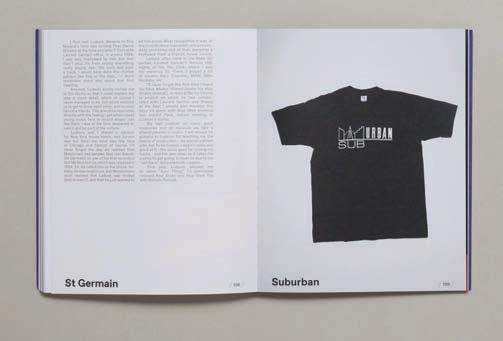




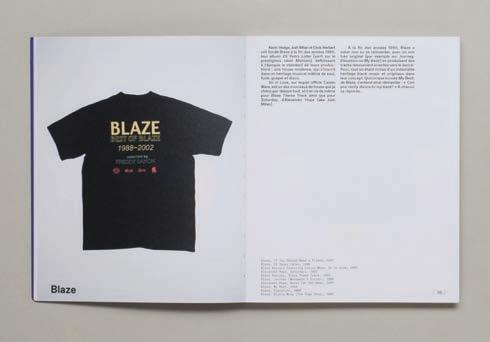
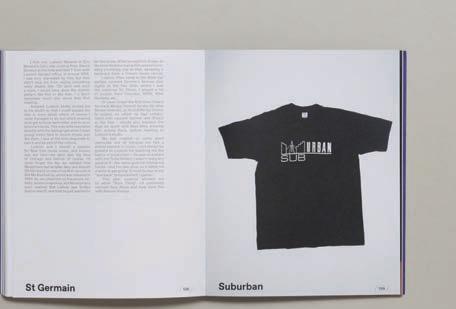
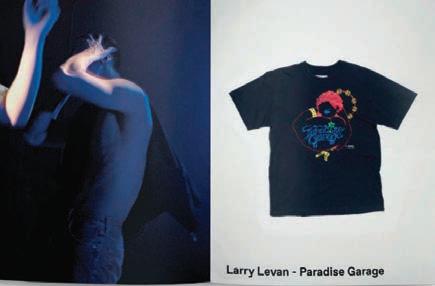





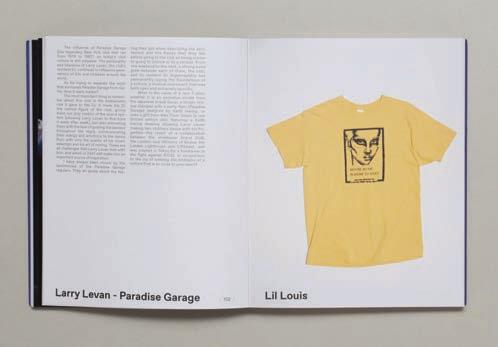

The Legends parties, launched by DJ Deep at the Rex Club in Paris in 1994, already paid tribute to the pio neers of House and Techno from Chicago, Detroit, and New York.True cultural bridges, they welcomed gures such as Kerri Chandler, Joe Claussell, and Ron Trent to France for the rst time.True to his “music rst” vision, DJ Deep prioritized transmission and memory over fashion. Relaunched for the Rex’s 25th anniversary in 2013 and then celebrated in 2025 for their 30th anniversary, these nights embody the club’s DNA: respect, groove, and continuity between generations of dancers.
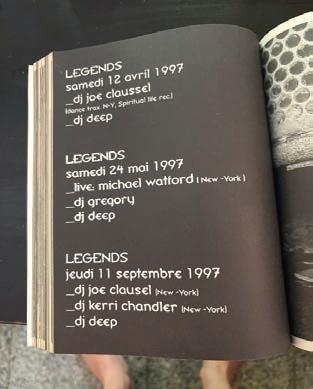

At the end of 2025, during which 30 Years of Legends welcomed Jeff Mills and Laurent Garnier, then Lil’ Louis and Ron Trent to the Rex, the November 9, 2025 edition sold out in a matter of days. This is hardly surprising with a line-up that makes you want to travel 10,000 miles: the very rare St Germain (his last gig in Paris was in 2018, also at the Rex), the unpredictable Moodymann and the reunion of the two friends Cyril and Alex (from Tokyo).


Each in turn, the protagonists told us a slice of their intertwined lives, starting with DJ Deep talking to Ludovic Navarre during an “interview with St Germain” on August 25, 2025.
Cyril: I’m absolutely delighted that you agreed to take part in this new edition of my Re-Set parties… It brings back so many memories of the early ’90s, a time that also resonates with another guest that night: Moodymann. At the time, I made regular pilgrimages to Parisian record stores: Bonus Beat, Rough Trade, and Karamel with Bétino, in search of the latest American and British imports.
You often accompanied me on these long listening sessions, and sometimes I bought duplicate records: “This one, Ludo, is for you, you’re going to love it!”
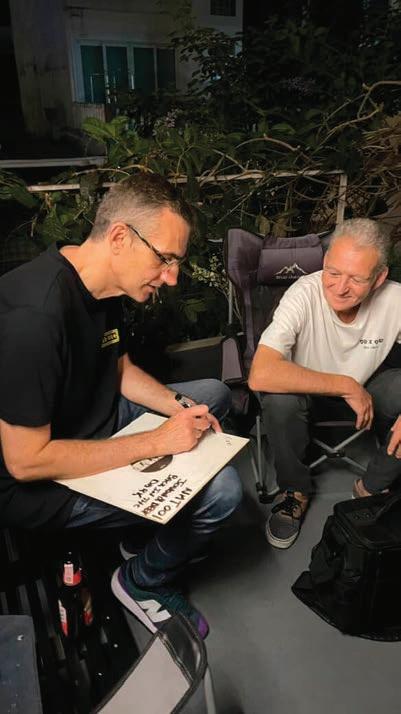


One day in 1994, I came home with a mysterious record: Mr. Kenny Dixon Jr. – Moody Trax EP, the second release from the KDJ label. It was causing a sensation at BPM! Everyone was talking about this young producer from Detroit.You were immediately seduced by this combination of soul and funk, mixed with a raw and personal aesthetic, the trademark of the young Moodymann.
The tracks “U Got Me Burnin’ Up” and “U Got Me Blunted Up” particularly struck a chord with you, as they were somewhat reminiscent of your “Sexy & Smooth.”
We couldn’t believe it! In 1994, without the internet, Detroit remained a myth, and to know that a young producer there had heard and appreciated your music was incredible.
You encouraged me to call the number printed on the record, “just to say hello.” I took a chance: that unmistakable voice picked up, initially wary, then warm when we explained our enthusiasm. It was a moment of pure connection, proof that music abolishes all distances. That same year, Kenny released “Do You Know” on Grassroots, a favorite record of yours, and “I Like It” on KDJ, which cemented his name for good. And then there’s the famous “Ludotape,” the mix you recorded for Radio Nova in the early ‘90s, where you mixed Jovonn, reggae, soul, and house. I digitized it, and for me, it’s one of the best sets ever recorded.
St Germain: Yes, I remember it perfectly. We were crazy about that Kenny Dope track with its Parliament/ Funkadelic in uence. Jovonn had this dub side to him that made the transition obvious. His loops were hypnotic, magical. It was the golden age of Mental Instrum and Smack, that New Jersey sound we loved so much, a blessed era when everything blended together naturally. There were no boundaries, just creative freedom.
Alex from Tokyo followed on September 9, 2025…
Alex: In 1994, Cyril, Gregory and I founded the collective A Deep Groove.
Our daily show on FG (Monday to Saturday, noon to 2 p.m.) was dedicated to true underground music. During a Wake Up party at the Rex, Cyril introduced me to Ludovic Navarre, whose early work I was already familiar with under the name Sub System, and I then discovered all his other productions.
We also discovered Kenny Dixon Jr.’s rst records in Paris at BPM. We were immediately captivated by his “U Got Me Blunted Up,” as well as KDJ 2: “I Like It,” which sampled Leon Neal and Visual, a sonic revolution that coincided with St Germain’s debut with Motherland and Mezzotinto.
Then came “Do You Know” with Norma Jean Bell, a track of rare depth and elegance. I remember Ludovic playing it non-stop. In 1995, “The Day We Lost The Soul,” a tribute to Marvin Gaye, con rmed Moodymann’s genius.
In 1996, back in Tokyo, I coordinated the Japanese release of Boulevard on P-Vine Records and organized two dates at the Yellow Club, St Germain’s rst in Japan. That same year, Norma Jean Bell released “I’m The Baddest Bitch” remixed by Moodymann, which became an instant classic in both New York and Tokyo.
In 1998, I released my mix CD Deep Atmosphere on P-Vine, featuring two tracks by KDJ:“Sunday Morning” and “Long Hot Sexy Nights.” Kenny remained elusive, a true mystery. When we tried to obtain the rights, he replied one morning by fax with a huge drawing! We were over the moon.
Finally, in 2001, he came to Japan for the rst time, accompanied by Norma Jean Bell.
I had the honor of opening for him at Yellow. It was groovy, funky, magical, unforgettable…
Finally, Moodymann, on October 15, a few days before the party:
I am honored to play with St Germain, a genius we loved in Detroit. He was known here long before he even knew it. Meeting him was a privilege; he is simply legendary.
And Cyril, DJ Deep, he was probably one of the rst in Europe to recognize my music.When I arrived in Paris, he was the one who said to me, “Hey, people are playing your records here.” I had no idea. Cyril was one of the rst outside of America to show me love, to open my eyes to what was happening in Europe. Our friendship runs … deep!
And then there’s Alex, my brother from Tokyo. He’s been lighting up this planet for years. When you listen to him, get your Shazam ready, he’ll introduce you to some gems.
St Germain, DJ Deep, Alex from Tokyo … the pleasure is all mine!
https://linktr.ee/cyrildeep
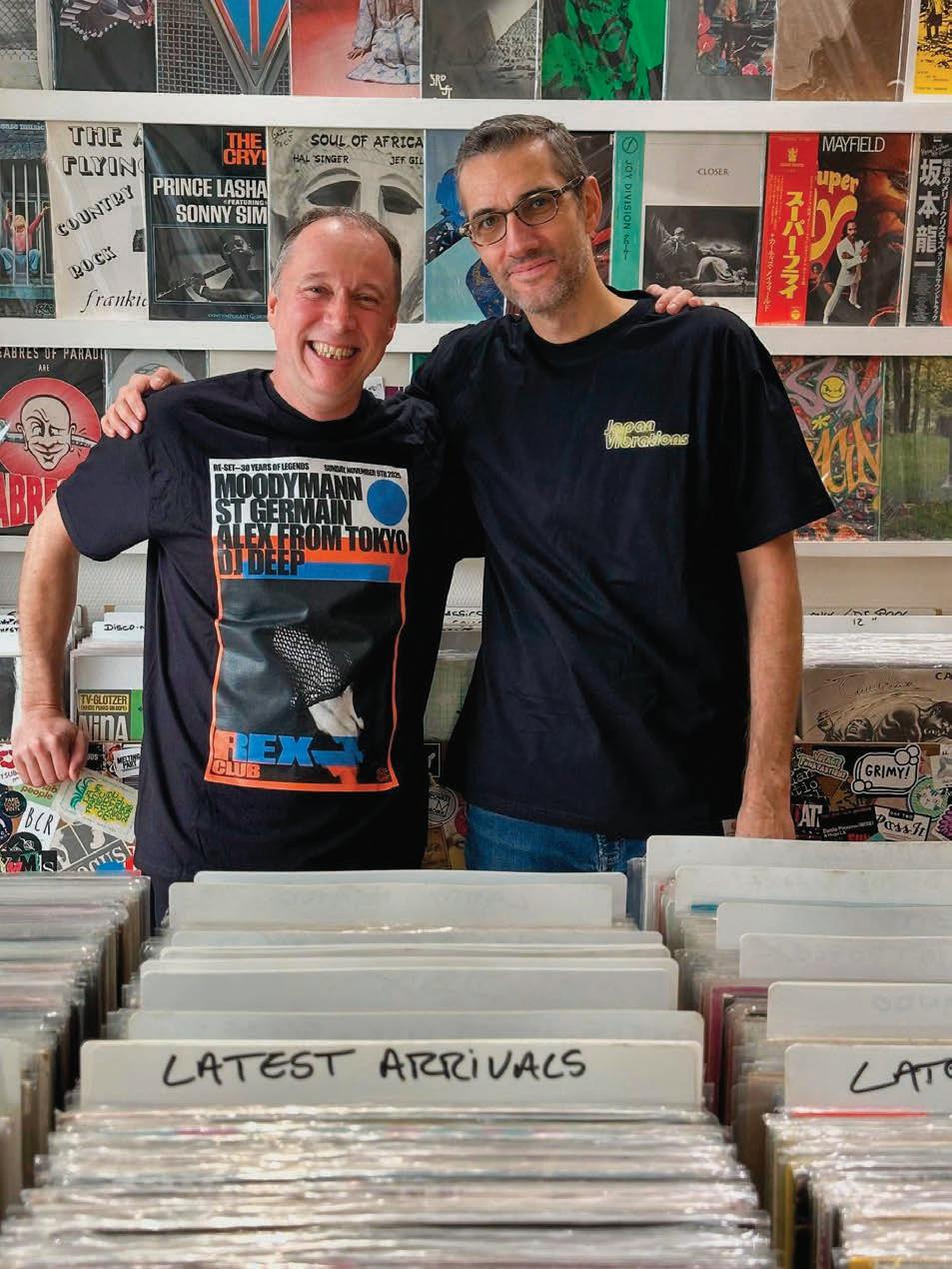
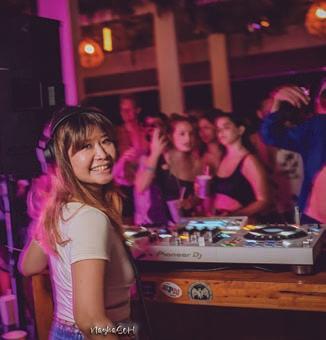

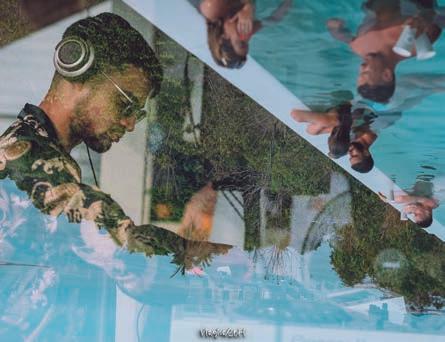

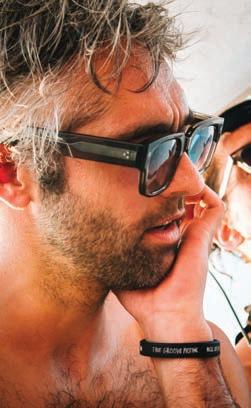



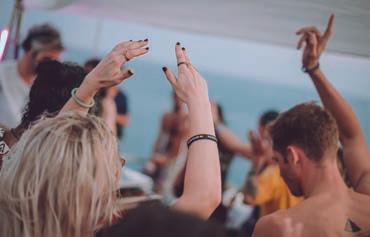
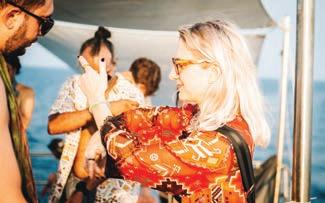
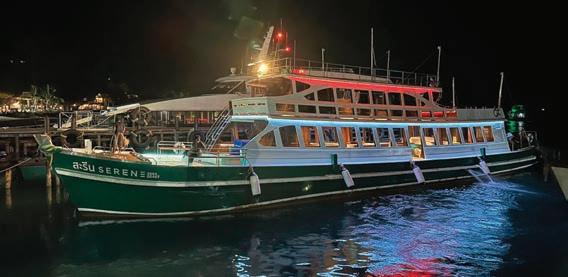





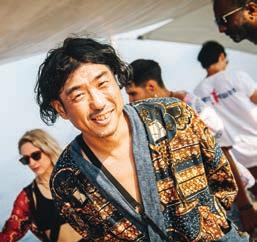
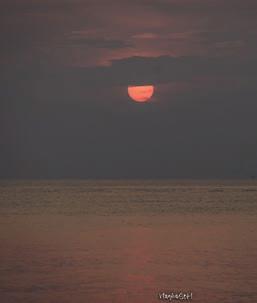
Le Godfather
The Groove is a Music and Art festival designed by Latitudes Media & Events and happening between Bangkok, Koh Phangan & Koh Tao. The Groove is litterally a trip, a voyage through time & space, from the urban jungle of Big Mango to the most stunning marine havens. Here is a collection to summarize our first edition in 2024, now rendez-vous in 2026!


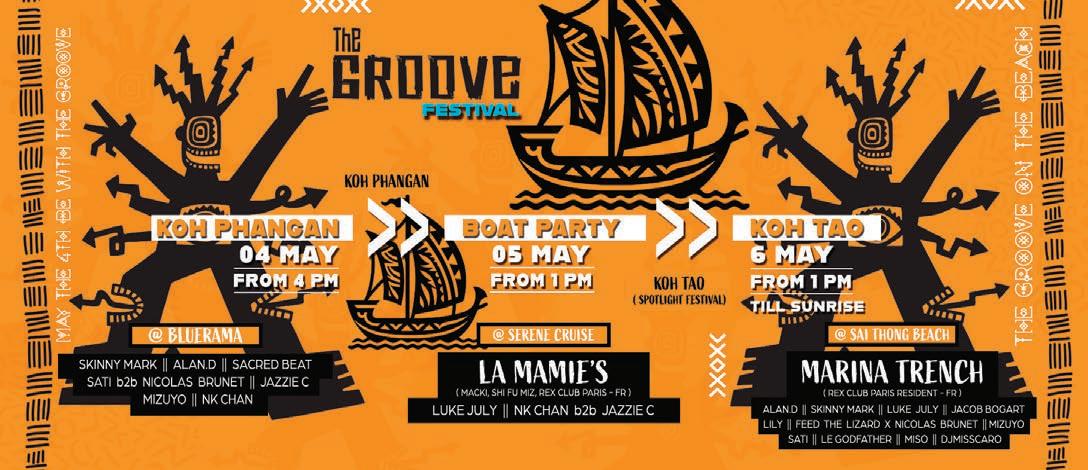


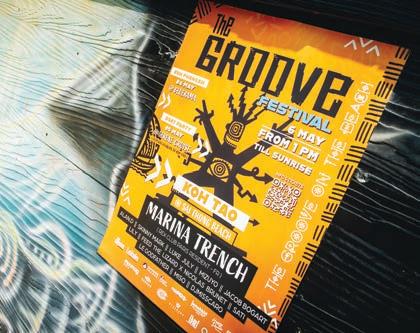
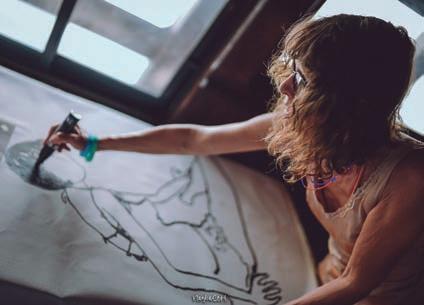
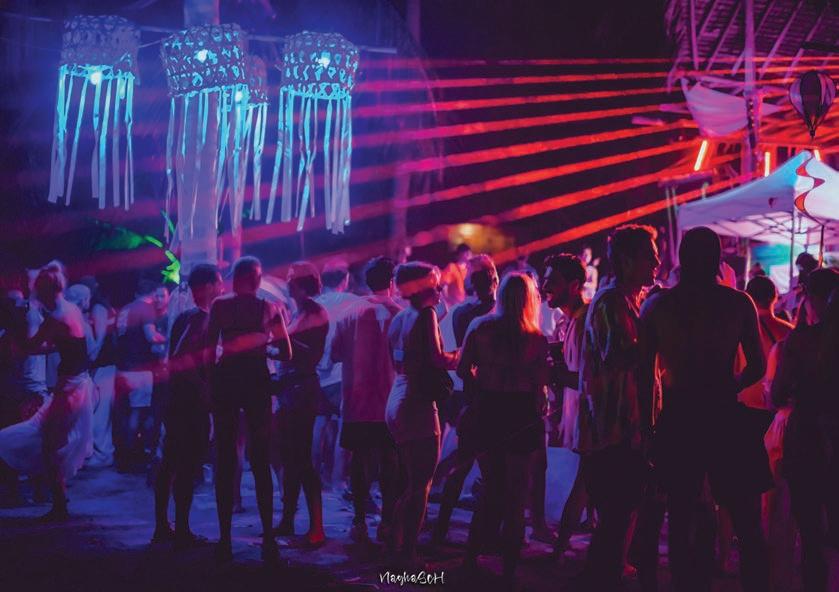
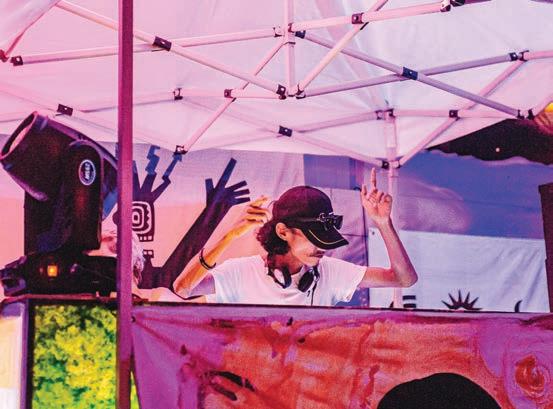
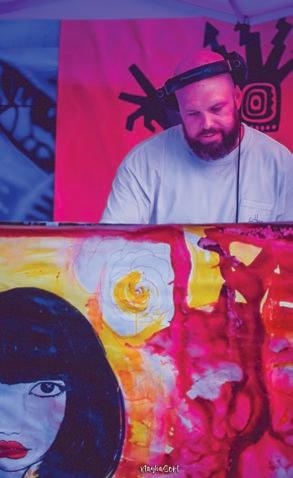
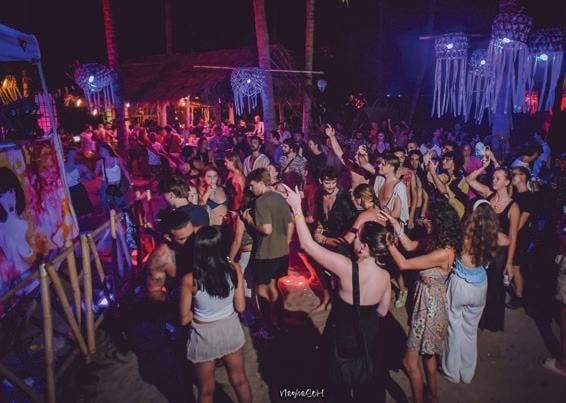

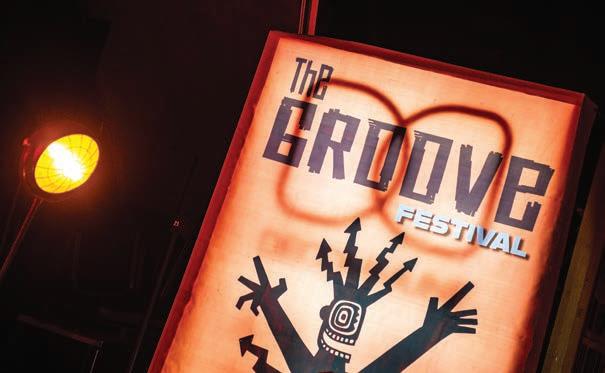
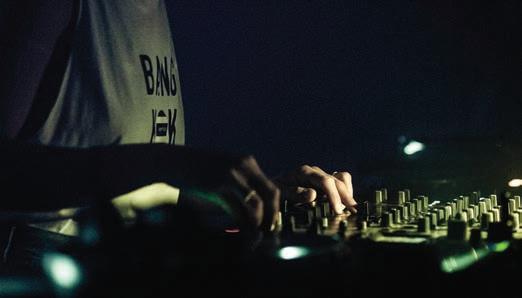
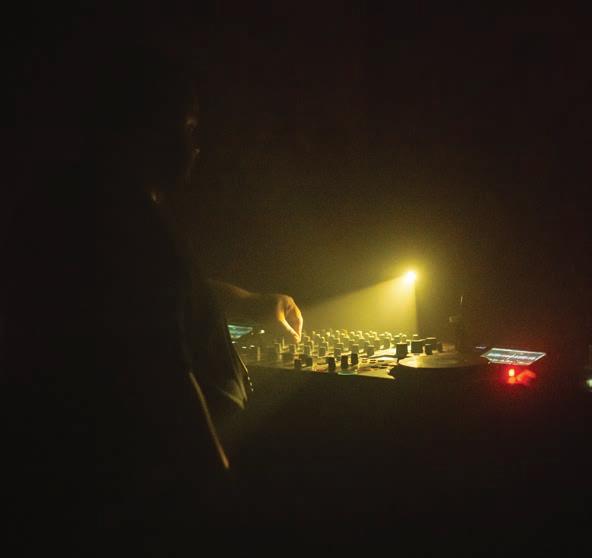
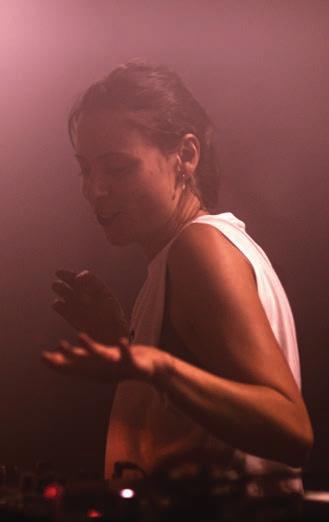


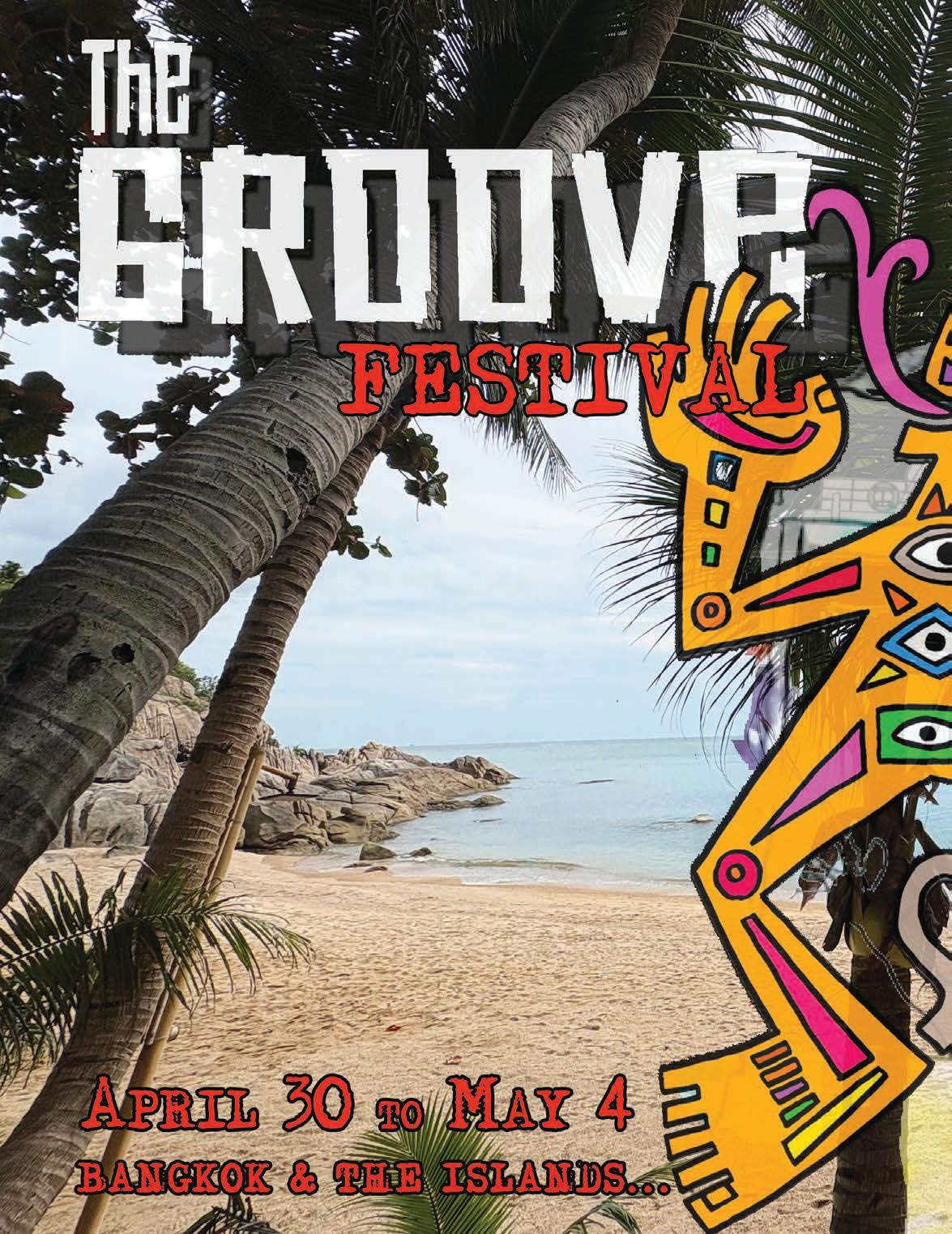

“Balance”, by British artist Francoisgotbuffed, explores the intersection of folklore, symbolism, and the urgent need for harmony between humanity and the natural world.
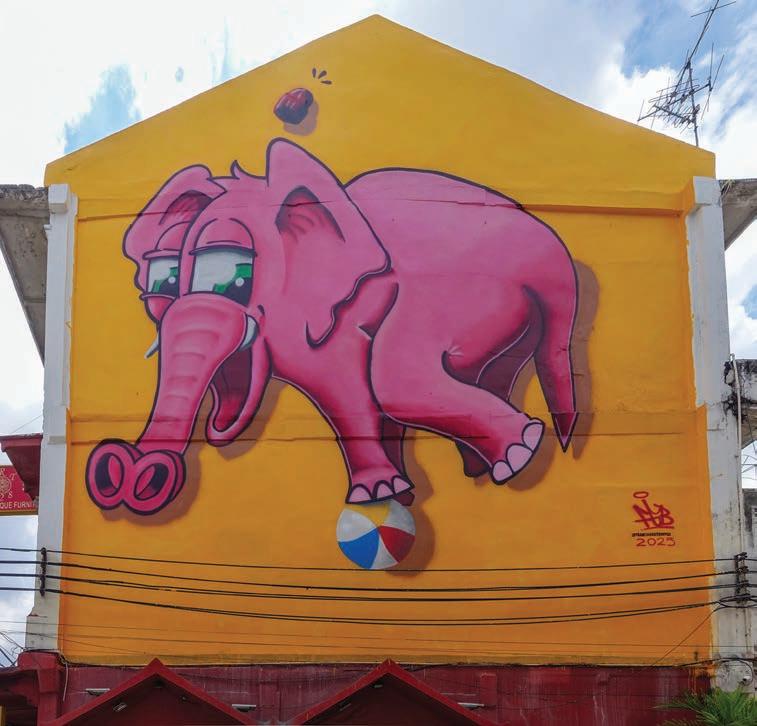
we got bluffed!
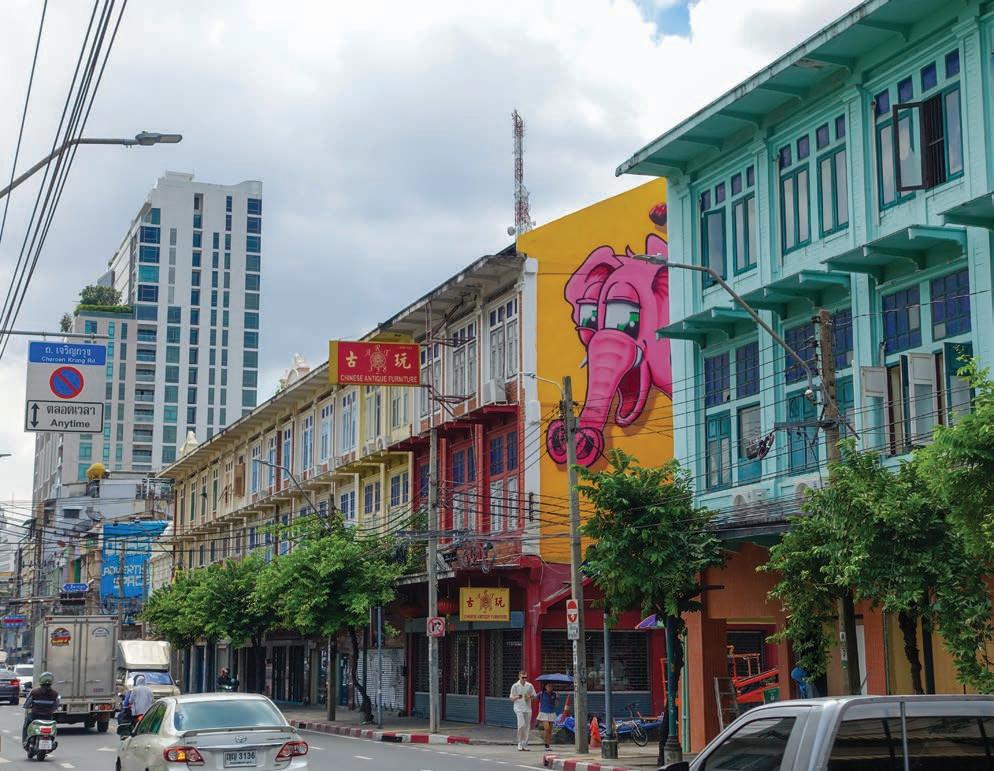
In the fading footsteps of late Bukruk festival (2016), the French Embassy in Thailand created last September a new Art sensation with Krung Thep Creative Streets, a cultural initiative organised with the support of the British Council in Thailand along with numerous European and Thai partners.
From Monday, September 15 to Friday, September 19, 2025, 15 Thai and international artists painted gigantic murals in various historic districts of the capital, adding to the route created by Bukruk in the districts of Charoen Krung, Talat Noi, Song Wat, South Sathorn, Surawong, and Lumphini.You can nd a map of the works on Latitudes’ linktree: QR Inspired by Thai culture, the pink elephant emerges as a central gure in this work, not just as a whimsical or mythical creature, but as a deeply rooted symbol of luck, prosperity, and spiritual protection. In Thai tradition, the appearance of a pink elephant is believed to herald positive change, blessings, and abundance. It is both revered

and celebrated, often enshrined in temples as a beacon of good fortune. By incorporating this culturally significant symbol, the mural invites viewers on Charoen Krung Road into a space of re ection and hope. Yet, beneath its light-hearted surface lies a deeper narrative, one that speaks to the fragile balance in our ecosystems. Even the smallest disruption can set o a chain of imbalance, underscoring the urgent need for coexistence and care.
This work is ultimately a call to mindfulness, a reminder that the prosperity symbolised by the pink elephant can only be fully realised when balance is respected. In an age of environmental tension and increasing human impact, “Balance” becomes both a cultural homage and a visual manifesto for a more harmonious world. ■
www.fgbworld.co.uk
instagram.com/francoisgotbu ed

QCHIEF EDITOR
Christophe Chommeloux +66 (0)918 233 500 chris.choms@gmail.com
CO-FOUNDER
Caroline Laleta Ballini +66 (0)869 504 961 carolinelaleta@gmail.com
CONTRIBUTORS
Christophe Chommeloux, Jean Michel Kau mann, Jean-Christophe Vilain, Allan Thompson, René Mafritte, Nicolas Verstappen, Claude Openeye, Chom’s, Mister Diver, Chris Coda, Jaz E See, Gad Fezer & Caroline Laleta Ballini
IMAGES & ILLUSTRATIONS
Cover Design by Enter Project Asia Enter Project Asia, Sawasdee France, Guillaume Tavernier, Wonderfuit, CLARA, Steph , Cartier, Marc Geo roy, Arnaud Nazare Aga,Virginie Broquet,Vie Cosmetics, WikimediaCommons, Istock by Getty Images, Ray Bonner, Gwenaël Louise, Stella Thipsak, Jean-Christophe Vilain, IsoPixel, Naghasch, Christophe Chom’s & C. Laleta Ballini
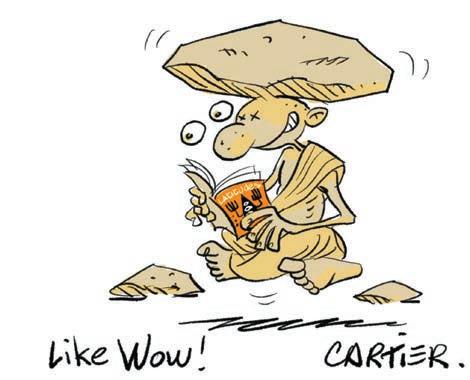
INDEPENDANT MAGAZINE IN FRENCH AND ENGLISH STUDIO SO WHAT CO., LTD. 2/2 Moo 10, T. Chalong, A. Mueang, Phuket 83130 Thailand redaction@magazinelatitudes.com - www.magazinelatitudes.com - www.studiosowhat.com

